Found:
Wildlife Road Watch: Citizen Scientist Observations
2010 to 2014
Summary
Maine Audubon Wildlife Road Watch is a citizen science project developed in partnership with Maine Department of Inland Fisheries and Wildlife, Maine Department of Transportation, and University of California, Davis Road Ecology Center, in which Volunteers record their observations of wildlife crossings
Key Personnel & Institutions
People: Barbara Charry
Institutions: Maine Audubon Society
Location
Maine
Resource Type
Report
Tags
conservation, citizen science, transportation management, wildlife crossings, wildlife movement
Topic Tags
ecosystem services
Purpose Tags
conservation, management
Citation
Charry, B. (2015). Wildlife Road Watch, Citizen Scientist Observations 2010-2014. Maine Audubon Society. Retrieved from http://stayingconnectedinitiative.org/assets/WRW-Report-2015-Final.pdf
Source Link
http://stayingconnectedinitiative.org/assets/WRW-Report-2015-Final.pdf
The Ecological Road?Effect Zone of a Massachusetts (U.S.A.) Suburban Highway
2001
Summary
This report studies the effects of human road traffic on the surrounding ecology. The effects of the factors were measured and a conclusion was made that nature reserves and busy roads should be separated.
Key Personnel & Institutions
People: Richard T. T. Forman , Robert D. Deblinger
Institutions: Harvard University , Massachusetts Division of Fisheries and Wildlife, General Court of the Commonwealth of Massachusetts
Location
Massachusetts
Resource Type
Article
Tags
roads
Topic Tags
conservation, methods, management, planning, wildlife and habitat, landscape pattern and connectivity
Purpose Tags
conservation, management, education
Citation
Forman, R.T.T.; Deblinger, R.D. "The Ecological Road-Effect Zone of Massachusetts (U.S.A.) Suburban Highway." Conservation Biology, vol. 14, issue 1, 24 December 2001. Accessed From (https://conbio.onlinelibrary.wiley.com/doi/abs/10.1046/j.1523-1739.2000.99088.x)
Source Link
https://conbio.onlinelibrary.wiley.com/doi/abs/10.1046/j.1523-1739.2000.99088.x
Critical paths: enhancing road permeability for wildlife in Vermont
2009
Summary
The overriding goal of the Critical Paths project is to assist in the implementation of Vermont's State Wildlife Action Plan, which specifically recognizes the impacts of roads on wildlife habitat, and identifies the need to prioritize road crossing areas for wildlife.
Key Personnel & Institutions
People: George Leoniack
Institutions: National Wildlife Federation , Vermont Natural Resources Council , Vermont Fish and Wildlife Department , Leoniak Tracking Services
Location
Vermont
Resource Type
Report
Tags
conservation, landuse planning, permeable landscape, transportation, vehicle-wildlife collisions
Topic Tags
management, drivers, landscape pattern and connectivity
Purpose Tags
conservation, management
Citation
Leoniak, G., Scharf, T., Fidel, J., Gay, G., Hammond, F. and Hilke, J.. (2009). Critical paths - Enhancing Road Permability for Wildlife in Vermont. The Wildlife Conservation Society. 77 p.
Source Link
http://www.nwf.org/~/media/PDFs/Regional/Northeast/NRC_Critical_Paths_Report.pdf
Potential for retrofitting transportation infrastructure to benefit movement of terrestrial wildlife
2014 to 2015
Summary
Maine Audubon and its partners, the Maine Department of Transportation, Maine Department of Inland Fisheries and Wildlife, and The Nature Conservancy, conducted a pilot project to survey and evaluate existing road crossings in Maine for retrofit potential
Key Personnel & Institutions
People: Barbara Charry
Institutions: Maine Audubon Society
Location
Franklin, Oxford, York
Resource Type
Report
Tags
habitat connectivity, culverts, road infrastructure, wildlife crossings
Topic Tags
ecosystem services, drivers
Purpose Tags
conservation, education
Citation
Charry, B. and Kintsch, J. (2015). Maine Terrestrial Wildlife Crossings Survey Report: Potential for Retrofitting Transportation Infrastructure to Benefit Movement of Terrestrial Wildlife. Maine Audubon.
Source Link
http://stayingconnectedinitiative.org/assets/Terrestrial-Exec-Summary.pdf
Fractured Forests Are Endangering Wildlife, Scientists Find
2019
Summary
This article compares and contrasts the information around the world about fragmented forests and the effects on wildlife.
Key Personnel & Institutions
People: Carl Zimmer
Institutions: New York Times
Location
New York, New England
Resource Type
Poster
Tags
Topic Tags
conservation, ecosystem services, wildlife and habitat, landscape pattern and connectivity
Purpose Tags
conservation, education
Citation
Zimmer, C. "Fractured Forests Are Endangering Wildlife, Scientists Find." New York Times, 5 December 2019. Accessed from https://www.nytimes.com/2019/12/05/science/forests-fragmentation-wildlife.html
Source Link
https://www.nytimes.com/2019/12/05/science/forests-fragmentation-wildlife.html
Make room for wildlife: a resource for local planners and communities in the Adirondacks
2013
Summary
This pamphlet is geared for planners and communities within the Adirondacks to help them manage lands for wildlife.
Key Personnel & Institutions
Institutions: Wildlife Conservation Society
Location
Clinton, Essex, Franklin, Fulton, Hamilton, Herkimer, Lewis, Saratoga, St Lawrence, Warren, Washington, Oneida
Resource Type
Poster
Tags
fragmentation, landuse planning, wildlife habitat
Topic Tags
management, ecosystem services, planning, wildlife and habitat
Purpose Tags
management
Citation
Wildlife Conservation Society. (2013). Make Room For Wildlife: A Resource for Local Planners and Communities in the Adirondacks. Wildlife Conservation Society Adirondack Program. Available at http://www.stayingconnectedinitiative.org/assets/makeroomforwildlife_asbook_highres.pdf.
Source Link
http://www.stayingconnectedinitiative.org/assets/makeroomforwildlife_asbook_highres.pdf
Why did that bear cross the road? A guide to habitat connectivity
2011
Summary
Pamphlet by the Staying Connected Initiative about the importance of habitat connectivity.
Key Personnel & Institutions
Institutions: Vermont Fish & Wildlife Dept. , Staying Connected Initiative
Location
Vermont
Resource Type
Poster
Tags
landuse planning, habitat connectivity, ecological design, road barrier mitigation, wildlife crossings
Topic Tags
ecosystem services, landscape pattern and connectivity
Purpose Tags
conservation, management
Citation
Staying Connected Initiative. (2013). Staying Connected: Why did that bear cross the road? A Guide to Habitat Connectivity. Available at http://www.stayingconnectedinitiative.org/assets/whatishabitatconnectivity_final.pdf
Source Link
http://www.stayingconnectedinitiative.org/assets/whatishabitatconnectivity_final.pdf
Habitat Fragmentation Effects Depend on Complex Interactions Between Population Size and Dispersal Ability: Modeling Influences of Roads, Agriculture and Residential Development Across a Range of Life-History Characteristics
2009
Summary
An analysis of the effect of habitat fragmentation by roads, residential and agricultural land uses on hypothetical vernal pool breeding animals in western Massachusetts.
Key Personnel & Institutions
People: Bradley Compton , Kevin McGargal
Institutions: United States Department of Agriculture (USDA), Forest Service, Rocky Mountain Research Station, University of Massachusetts, Department of Natural Resources Conservation
Location
Massachusetts
Resource Type
Report
Tags
agriculture, roads, fragmentation, vernal pools
Topic Tags
conservation, methods, wildlife and habitat, landscape pattern and connectivity
Purpose Tags
conservation, education
Citation
Cushman, S.A.; Compton, B.W.; McGarigal, K. 2009. "Habitat Fragmentation Effects Depend on Complex Interactions Between Population Size and Dispersal Ability: Modeling Influences of Roads, Agriculture and Residential Development Across a Range of Life-History Characteristics." Accessed From (https://www.umass.edu/landeco/pubs/cushman.et.al.2009.chapter20.pdf)
Source Link
https://www.umass.edu/landeco/pubs/cushman.et.al.2009.chapter20.pdf
Vermont's Wildlife Action Plan 2005
2005
Summary
This report outlines the goals and purpose of Vermont's Wildlife Grants program and the Wildlife Action Plan, which were created to prevent wildlife from becoming endangered through early, strategic efforts to conserve wildlife and habitat.
Key Personnel & Institutions
People: Jon Kart
Institutions: Vermont Fish and Wildlife Department
Location
Vermont
Resource Type
Report
Tags
conservation, wildlife, management
Topic Tags
conservation, management, ecosystem services
Purpose Tags
conservation, management, education
Citation
Kart, J., Regan, R., Darling, S.R., Alexander, C., Cox, K.,Ferguson, M., Parren, S., Royar, K. & Popp, B.(Eds). (2005). Vermont's Wildlife Action Plan. Waterbury, VT: Vermont Fish and Wildlife Department.
Source Link
Vermont's Wildlife Action Plan 2015
2015
Summary
According to Congressional mandate, Wildlife Action Plans must be updated at least every 10 years. This report represents the first revision of Vermont's Wildlife Action Plan, originally created in 2005.
Key Personnel & Institutions
Institutions: Vermont Fish and Wildlife Department
Location
Vermont
Resource Type
Report
Tags
conservation, wildlife, management
Topic Tags
conservation, management, ecosystem services
Purpose Tags
conservation, management, education
Citation
Vermont Wildlife Action Plan Team. (2015). Vermont Wildlife Action Plan 2015. Vermont Fish and Wildlife Department. Montpelier, VT. http://www.vtfishandwildlife.com
Source Link
https://vtfishandwildlife.com/about-us/budget-and-planning/wildlife-action-plan
Wildlife Habitat and Natural Areas
Summary
This post from VNRC talks about the role of wildlife habitat within the state of Vermont and how important it is to have concrete documentation/policy to conserve wildlife and natural lands.
Key Personnel & Institutions
Institutions: Vermont Natural Resources Council
Location
Vermont
Resource Type
Website
Tags
conservation, wildlife, public lands, wildlife habitat, wildlife and habitat
Topic Tags
conservation, wildlife and habitat
Purpose Tags
education, policy
Citation
Vermont Natural Resources Council. (n.d.). Wildlife Habitat and Natural Areas. Available at http://vnrc.org/resources/community-planning-toolbox/issues/wildlife-habitat-and-natural-areas/
Source Link
https://vnrc.org/community-planning-toolbox/issues/wildlife-habitat-and-natural-areas/
Ecoregional habitat connectivity science applied at multiple scales in transportation
2008 to 2010
Summary
This PowerPoint presentation introduces the Staying Connected Initiative and the projects that members have tackled, including tracking and identifying conflicts between wildlife crossings and people.
Key Personnel & Institutions
People: Jens Hilke, Conrad Reining, Dirk Bryant
Institutions: Staying Connected Initiative
Location
Vermont
Resource Type
Poster
Tags
road crossings, wildlife connectivity, wildlife crossings, wildlife movement, wildlife tracking
Topic Tags
wildlife and habitat
Purpose Tags
conservation, management
Citation
Reining, C., Hilke, J., and Bryant, D. (2012). Ecoregional Habitat Connectivity Science Applied at Multiple Scales in Transportation. Powerpoint. Retrieved from http://216.92.98.160/assets/newt_2012_sci_and_transportation.ppt
Source Link
http://216.92.98.160/assets/newt_2012_sci_and_transportation.ppt
World Wildlife Fund
Summary
An overview of the New England - Acadian forests by the WWF regarding conservation status, remaining blocks of intact habitat, degree of protection for those blocks, and severity of threats.
Key Personnel & Institutions
People: M. Davis
Institutions: World Wildlife Fund
Location
New York, New England
Resource Type
Website
Tags
conservation, disturbance, threats, wildlife habitat
Topic Tags
conservation, wildlife and habitat, landscape pattern and connectivity
Purpose Tags
conservation, education
Citation
Davis, M., Gratton, L., Adams, J., Goltz, J., Stewart, C., Buttrick, S., Mann, G. (n.d.). New England-Acadian forests. Available at https://www.worldwildlife.org/ecoregions/na0410
Source Link
Permeability of existing structures for terrestrial wildlife: a passage assessment system
2011
Summary
The purpose of this project was to create an assessment methodology to evaluate existing transportation infrastructure for its ability to facilitat wildlife movement from one side of a roadway to the other. To accomplish this, the research team developed initial criteria for assessing the permeability of existing bridges and culverts for terrestrial wildlife based on the current body of knowledge on how wildlife native to Washington use wildlife crossing structures.
Key Personnel & Institutions
People: Julia Kintsch
Institutions: ECO-resolutions, Utah State University
Location
No location information available
Resource Type
Report
Tags
wildlife, connectivity, bridge, culverts, enhancements, fence, permeability, retrofit, road management, transportation ecology, wildlife crossings
Topic Tags
management, ecosystem services, drivers
Purpose Tags
conservation, management
Citation
Kintsch, J. and Cramer, P.C. (2011). Permeability of existing structures for terrestrial wildlife: A passage assessment system. Research Report No. WA-RD 777.1. Washington State Department of Transportation, Olympia, WA.
Source Link
http://stayingconnectedinitiative.org/assets/PAS-system_Washington-DOT.pdf
Use of road maps in national assessments of forest fragmentation in the United States
2004
Summary
The authors compared forest fragmentation as calculated from high-resolution land-cover maps alone (Method 1) and after superimposing detailed road maps (Method 2) and fond that there was more overall fragmentation with Method 2. The results emphasize that the question of incorporating road maps must consider the purpose of the assessment, the characteristics of the data, and the relative sensitivities of indices to different patterns of fragmentation.
Key Personnel & Institutions
People: Kurt Riiters
Institutions: United States Department of Agriculture (USDA), Forest Service , United States Environmental Protection Agency (EPA)
Location
New York, New England
Resource Type
Article
Tags
fragmentation, road networks, road-caused fragmentation, superimposed imagery
Topic Tags
methods, landscape pattern and connectivity
Purpose Tags
conservation, management, education
Citation
Riiters, K., Wickham, J. & Coulston, J. (2004). Use of Road Maps in National Assessments of Forest Fragmentation in the United States. Ecology and Society 9(2): 13.
Source Link
Forest fragmentation of the conterminous United States: assessing forest intactness through road density and spatial characteristics
2002
Summary
The authors presented a methodology to create a forest fragmentation database for the conterminous United States by utilizing the high-resolution National Land Cover Database, roads, and indices that quantify forest landscape patterns, as well as propose some of its potential uses for conservation scientists, restoration scientists, land managers, policymakers, and others.
Key Personnel & Institutions
People: Gerald Heilman , James Strittholt, Nicholas Slosser, Dominick Dellasala
Institutions: Conservation Biology Institute, World Wildlife Fund
Location
New York, New England
Resource Type
Article
Tags
remote sensing, fragmentation, disturbance
Topic Tags
methods, landscape pattern and connectivity
Purpose Tags
education
Citation
Heilman, G.E., Strittholt, J.R., Slosser, N.C., & Dellasala, D.A. (2002). Forest Fragmentation of the Conterminous United States: Assessing Forest Intactness through Road Density and Spatial Characteristics: Forest fragmentation can be measured and monitored in a powerful new way by combining remote sensing, geographic information systems, and analytical software. AIBS Bulletin, 52 (5), 411-422.
Source Link
Amphibian Movements in Response to Forest Edges, Roads, and Streambeds in Southern New England
1998
Summary
This study used drift fences and pitfall traps to intercept dispersing amphibians and examine amphibian movements relative to roads, forest edges, and streambeds in a forest tract in southern Connecticut.
Key Personnel & Institutions
People: James Gibbs
Institutions: The Wildlife Society
Location
Connecticut
Resource Type
Report
Tags
amphibians
Topic Tags
conservation, management, wildlife and habitat, landscape pattern and connectivity
Purpose Tags
conservation, management, education
Citation
Gibbs, J. P. "Amphibian Movements in Response to Forest Edges, Roads, and Streambeds in Southern New England" The Journal of Wildlife Management, vol. 62, no. 2 (April, 1998), pp. 584-589
Source Link
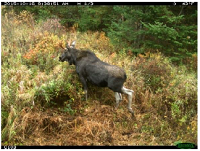
Reducing wildlife mortality on roads in Vermont: documenting wildlife movement near bridges and culverts to improve related conservation investments
2014 to 2016
Summary
This project gathered and analyzed game-camera data on the frequency of under-highway wildlife movement through bridges and culverts in Vermont.
Key Personnel & Institutions
People: Laura Farrell , Paul Marangelo
Institutions: University of Vermont , The Nature Conservancy
Location
Vermont
Resource Type
Report
Tags
habitat connectivity, camera traps, bridge, culverts, permeability, wildlife movement
Topic Tags
methods, landscape pattern and connectivity
Purpose Tags
management
Citation
Marangelo, P. and Farrell, L. (2016). Reducing wildlife mortality on roads in Vermont: documenting wildlife movement near bridges and culverts to improve related conservation investments. The Nature Conservancy.
Source Link
http://roadsandwildlife.org/data/files/Documents/da14148d-2fb5-46f2-af70-7709603ef17b .pdf
Wildlife Corridor Overlay Zone
2008
Summary
This post from Vermont Natural Resources Council (VNRC) describes the town of Shrewsbury, Vermont, and the updates to the Town Plan in 2008. The update focused on zoning documents to ensure future goals with wildlife corridors within Shrewsbury, which resulted in an expansion of the areas protected by using a bear overlay zone to include wildlife habitat and corridors.
Key Personnel & Institutions
Institutions: Vermont Natural Resources Council
Location
Vermont, Shrewsbury
Resource Type
Website
Tags
conservation, public lands, wildlife conservation, wildlife habitat
Topic Tags
conservation, wildlife and habitat
Purpose Tags
policy
Citation
Vermont Natural Resources Council. (2008). Wildlife Corridor Overlay Zone - Shrewsbury. Available at http://vnrc.org/resources/community-planning-toolbox/case-studies/wildlife-corridor-overlay-zone-shrewsbury/
Source Link
https://vnrc.org/community-planning-toolbox/case-studies/wildlife-corridor-overlay-zone-shrewsbury/
$7 Million Federal Award Will Fund Stream Connectivity, Private Road Improvements in Maine
2021
Summary
Project partners led by The Nature Conservancy in Maine will use an innovative Stream Smart design and installation approach to improve habitat and aquatic organism passage and reduce impacts from increasingly volatile storm flows, using a $7 Million Federal Award.
Key Personnel & Institutions
People: Jeremy Cluchey
Institutions: The Nature Conservancy
Location
Maine
Resource Type
Article
Tags
roads, streams, funding
Topic Tags
conservation, management, planning, wildlife and habitat, landscape pattern and connectivity
Purpose Tags
conservation, policy
Citation
Cluchey, J., "$7 Million Federal Award Will Fund Stream Connectivity, Private Road Improvements in Maine" The Nature Conservancy, may 03, 2021, Accessed from (https://www.nature.org/en-us/newsroom/maine-award-funds-stream-connectivity/)
Source Link
https://www.nature.org/en-us/newsroom/maine-award-funds-stream-connectivity/
Vermont habitat blocks and habitat connectivity: an analysis using Geographic Information Systems
2014
Summary
This project is a directly related to Vermont's Wildlife Action Plan (2005) priority conservation goals. Using GIS analysis, the authors identified potential habitat blocks, wildlife corridors, and road crossings.
Key Personnel & Institutions
People: Eric Sorenson
Institutions: Vermont Fish & Wildlife Dept.
Location
Vermont
Resource Type
Report
Tags
habitat connectivity, fragmentation mitigation, wildlife conservation
Topic Tags
landscape pattern and connectivity
Purpose Tags
conservation, education
Citation
Sorenson, E. & Osborne, J. (2014). Vermont habitat blocks and habitat connectivity: an analysis using Geographic Information Systems. Vermont Fish and Wildlife Department.
Source Link
Wildlife connectivity in western Massachusetts: Results and recommendations from a 2013-14 study of wildlife movement in two corridors
2013 to 2014
Summary
Using winter tracking of mammal species, motion-triggered wildlife cameras, and surveys of roadkill, the authors studied where animals are able to move across the roads within the Berkshire Wildlife Linkage. This report details suggestions for landowners and groups interested in wildlfie movement on how to maintain connectivity across their landscapes.
Key Personnel & Institutions
People: Jessica Applin
Institutions: The Nature Conservancy
Location
Massachusetts
Resource Type
Report
Tags
conservation, wildlife, landuse planning, connectivity
Topic Tags
ecosystem services
Purpose Tags
conservation, management, education
Citation
Applin, J. & L. Marx. (2014). Wildlife connectivity in western Massachusetts: Results and recommendations from a 2013-14 study of wildlife movement in two corridors. The Nature Conservancy. Retrieved from https://www.nature.org/media/massachusetts/wildlife-connectivity-study-final.pdf.
Source Link
https://www.nature.org/media/massachusetts/wildlife-connectivity-study-final.pdf

Volunteer tracking instructions northern Green Mountains
2011
Summary
Instruction for volunteer wildlife trackers working throughout the Northern Green Mountains. Volunteers were tracking wildlife activity near road systems.
Key Personnel & Institutions
Institutions: Staying Connected Initiative
Location
Green Mountain Range
Resource Type
Poster
Tags
habitat connectivity, citizen science, tracking, wildlife crossings, wildlife tracking
Topic Tags
methods, ecosystem services, wildlife and habitat
Purpose Tags
education
Citation
Hawk, R. & Hancock, C. (2011). Volunteer Tracking Instructions. Staying Connected Initiative. Available at http://www.stayingconnectedinitiative.org/assets/_21ngs_volunteer_tracking_instructions2_12-1-11.pdf
Source Link
http://www.stayingconnectedinitiative.org/assets/_21ngs_volunteer_tracking_instructions2_12-1-11.pdf
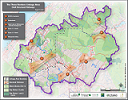
The three borders linkage area
2012
Summary
This map identifies priority landscape linkages for wildlife connectivity.
Key Personnel & Institutions
Institutions: The Nature Conservancy , Wildlife Conservation Society , Two Countries One Forest , Conservation De La Nature - Canada , Canadian Parks and Wilderness Society (CPAWS)
Location
New York
Resource Type
Map
Tags
communities, wildlife, connectivity, corridors, wildlife connectivity
Topic Tags
conservation, wildlife and habitat, landscape pattern and connectivity
Purpose Tags
education
Citation
The Nature Conservancy. (2012). The Three Borders Linkage Area [map]. Retrieved from http://216.92.98.160/assets/3borderslinkagepathways_aug12_.pdf
Source Link
http://216.92.98.160/assets/3borderslinkagepathways_aug12_.pdf
Wildlife Connectivity Study Final Report (Bolton Waterbury STP 2709(1))
2013 to 2015
Summary
This study was undertaken to answer pertinent questions about wildlife habitat, mortiality, and zone from Bolton to Waterbury, VT, particularly relating to the I89 highway corridor.
Key Personnel & Institutions
People: Johnson McFarland
Institutions: Vermont Fish & Wildlife Dept. , Vermont Agency of Transportation, VTrans
Location
Bolton, Waterbury
Resource Type
Report
Tags
endangered species, wildlife, highway systems, infrastructure planning, policy
Topic Tags
ecosystem services, drivers
Purpose Tags
management, policy
Citation
Johnson, M. & Andrews, J.S. (2016). Bolton Waterbury STP 2709(1) Wildlife Connectivity Study Final Report. Vermont Fish and Wildlife and Vermont Agency of Transportation. 91 p.
Source Link
http://stayingconnectedinitiative.org/assets/I-89_Wildlife_Connectivity_FINAL___.pdf
The Berkshire wildlife linkage: connecting the Green Mts to Hudson Highlands for wildlife and people
2017
Summary
The short report summaries the vision and key goals of the Staying Connected Intiative project that aims to protect the Berkshire wildlife linkage between the Green Mountains and the Hudson Highlands in New York.
Key Personnel & Institutions
Institutions: The Nature Conservancy , Staying Connected Initiative
Location
Vermont, New York
Resource Type
Report
Tags
wildlife, fragmentation
Topic Tags
ecosystem services
Purpose Tags
education
Citation
Marx, L. (2017). The Berkshire wildlife linkage: connecting the Green Mts to Hudson Highlands for wildlife and people. The Staying Connected Intiative.
Source Link
http://stayingconnectedinitiative.org/assets/BWL_2pager_FINAL.pdf
Reducing Wildlife Mortality on Roads in Vermont: Determining Relationships Between Structure Attributes and Wildlife Movement Frequency Through Bridges and Culverts to Improve Related Conservation Investments
2019
Summary
This project gathered and analyzed game-camera data on the frequency of wildlife movement through bridges and culverts in Vermont to generate results-based recommendations for improving the permeability of highways in Vermont for wildlife.
Key Personnel & Institutions
People: Paul Marengelo
Institutions: Vermont Agency of Transport , Vermont Nature Conservancy
Location
Vermont
Resource Type
Article
Tags
bridge, culverts, highway systems
Topic Tags
conservation, methods, planning, wildlife and habitat, landscape pattern and connectivity
Purpose Tags
conservation, education
Citation
Marangelo, P. "Reducing Wildlife Mortality on Roads in Vermont: Determining Relationships Between Structure Attributes and Wildlife Movement Frequency Through Bridges and Culverts to Improve Related Conservation Investments." 26 September 2019, Accessed from https://www.researchgate.net/profile/Paul_Marangelo/publication/336588936_Reducing_Wildlife_Mortality_on_Roads_in_Vermont_Determining_Relationships_Between_Structure_Attributes_and_Wildlife_Movement_Frequency_Through_Bridges_and_Culverts_to_Improve_Related_Conservation_Inve/links/5da733aca6fdccdad54ab247/Reducing-Wildlife-Mortality-on-Roads-in-Vermont-Determining-Relationships-Between-Structure-Attributes-and-Wildlife-Movement-Frequency-Through-Bridges-and-Culverts-to-Improve-Related-Conservation-Inve.pdf
Source Link
NH Wildlife Corridors
2017 to 2018
Summary
In 2017/2018 the NH Fish and Game Department (NHFG) partnered with the NH Department of Transportation (NHDOT) and NH Department of Environmental Services (NHDES) to research wildlife corridors in New Hampshire and address Senate Bill 376, an act relative to wildlife corridors. The research topics included identifying (1) existing and needed wildlife corridors, (2) voluntary mechanisms that affect wildlife corridors and (3) any existing statutes, rules and regulations that affect wildlife corridors.
Key Personnel & Institutions
People: Michael Marchand , Sandra Houghton , Mark Ellingwood , Glenn Normandeau , Rebecca Martin , Lori Sommer , Collis Adams
Institutions: Connecticut Agricultural Experiment Station , Endangered and Nongame Wildlife Project, New Hampshire Fish and Game Department , New Hampshire Department of Transportation , New Hampshire Department of Environmental Services
Location
New Hampshire
Resource Type
Report
Tags
corridors
Topic Tags
conservation, management, planning, wildlife and habitat
Purpose Tags
conservation, management
Citation
Houghton, S.; Marchand, M.; Ellingwood, M.; Normandeau, G.; Martin, R.; Sommer, L.; Adams, C. June 2018. "New Hampshire Wildlife Corridors." Accessed From (https://www.wildlife.state.nh.us/nongame/documents/nh-wildlife-corr-rpt.pdf).
Source Link
Staying connected in the northern Green Mountains: identifying structural pathways and other areas of high conservation priority
2009 to 2012
Summary
The authors identified critical areas of fine-scale wildlife connectivity, or structural pathways, within the Northern Green Mountains of Vermont, as well as the process used to refine the Northern Green Mountain landscape linkage boundary. In addition, parcels within the habitat blocks themselves were identified and ranked for importance in contributing to regional connectivity.
Key Personnel & Institutions
Not available.Location
Green Mountain Range
Resource Type
Report
Tags
conservation, road crossings, wildlife movement
Topic Tags
management, landscape pattern and connectivity
Purpose Tags
education
Citation
Hawk, R., Miller, C., Reining, C., and Gratton, L. (2012). Staying connected in the northern Green Mountains: identifying structural pathways and other areas of high conservation priority. The Staying Connected Initiative.
Source Link
http://216.92.98.160/assets/ngm_structural_pathways_and_parcels_29oct12_final.pdf
.jpg)
Rhode Island National Wildlife Refuge Complex
2018
Summary
The purpose of this paper is to explain the planned process and strategies of the Fish and Wildlife Service to reintroduce New England Cottontails to the Ninigret National Wildlife Refuge.
Key Personnel & Institutions
People: Nick Ernst , Charlie Vandemoer
Institutions: United States Fish and Wildlife Service
Location
Rhode Island
Resource Type
Article
Tags
Topic Tags
conservation, methods, management, ecosystem services, planning, drivers, wildlife and habitat
Purpose Tags
conservation, management
Citation
Ernst, N., Vandemoer, C. "Rhode Island National Wildlife Refuge Complex" US Fish and Wildlife Service, 27 February, 2018. Accessed from (https://www.fws.gov/uploadedFiles/Region_5/NWRS/North_Zone/Rhode_Island_Complex/Ninigret/NEC.NewsRelease.withProjectDescription.pdf)
Source Link
Forest Fragmentation
Summary
This website provides basic information about forest fragmentation and how it impacts wildlife.
Key Personnel & Institutions
Not available.Location
Vermont
Resource Type
Website
Tags
human disturbance, roads, education
Topic Tags
drivers, wildlife and habitat, landscape pattern and connectivity
Purpose Tags
education
Citation
Forest Fragmentation. (n.d.). Available at http://www.web.ca/~nwatch/fmp/Issue_Pages/forestfragmentation.html
Source Link
http://www.web.ca/~nwatch/fmp/Issue_Pages/forestfragmentation.html
Effects of forest roads on habitat quality for ovenbirds in a forested landscape
1996
Summary
The authors studied the influence of forest roads on Ovenbird density in an extensively forested region of Vermont, evaluating habitat use and reproductive success relative to mechanisms proposed to explain the density-edge relationship. They concluded that habitat quality for Ovenbirds may be lower within 150 m of unpaved roads in extensive forested landscapes, affecting territory density and possibly reproductive success.
Key Personnel & Institutions
People: Yvette Ortega
Institutions: University of Vermont
Location
Middlebury, Green Mountain Range
Resource Type
Article
Tags
forest edge, forest interior species, neotropical migrants
Topic Tags
wildlife and habitat, landscape pattern and connectivity
Purpose Tags
management, education
Citation
Ortega, Y.K. and Capen, D.E. (1999). Effects of forest roads on habitat quality for ovenbirds in a forested landscape. The Auk, pp.937-946.
Source Link
http://www.jstor.org/stable/pdf/4089673.pdf?refreqid=excelsior:e1e7a6099fe76ce140970d49029c768d
New Hampsire Wildlife Action Plan 2015
2015
Summary
The 2015 revision of the Wildlife Action Plan incorporates new data, methodologies and extensive public input to identify species in greatest need of conservation, habitats that are at the greatest risk, as well as land uses and activities that present the greatest threats to wildlife and habitat. It outlines more than 100 actions that can be taken by diverse stakeholders to protect and manage wildlife and habitat in New Hampshire.
Key Personnel & Institutions
People: Mark Ellingwood , Glenn Normandeau , John Kanter
Institutions: Endangered and Nongame Wildlife Project, New Hampshire Fish and Game Department
Location
New Hampshire
Resource Type
Report
Tags
Topic Tags
conservation, methods, management, ecosystem services, planning, wildlife and habitat, landscape pattern and connectivity
Purpose Tags
conservation, management
Citation
Normandeau, G.; Ellingwood, M.; Kanter, J. "New Hampshire Wildlife Action Plan, 2015 Revised Edition." 2015. Accessed from https://www.wildlife.state.nh.us/wildlife/documents/wap/introandfrontpages.pdf
Source Link
Wildlife dynamics in the changing New England landscape
1600 to 2002
Summary
The authors compiled data on major wildlife species to identify broad population trends and to address both fundamental and applied questions regarding these long-term patterns in Massachusetts. They found that wildlife populations were changing at a remarkable rate leading to significant ecological impacts on the landscape and many other species, creating major conservation and management challenges, and generating novel and oftentimes significant conflicts with human values.
Key Personnel & Institutions
People: David Foster
Institutions: Harvard University, Harvard Forest , Missouri Department of Conservation, Massachusetts Division of Fisheries and Wildlife
Location
Massachusetts
Resource Type
Article
Tags
birds, moose, bear, beaver, deer, deforestational fragmentation, human populations, land use change, wolf
Topic Tags
ecosystem services, drivers, wildlife and habitat
Purpose Tags
education
Citation
No citation available.
Source Link
https://onlinelibrary.wiley.com/doi/full/10.1046/j.1365-2699.2002.00759.x
Reintroduction of New England Cottontail (Sylvigaus transitionalis) on Ninigret National Wildlife Refuge
2018
Summary
The U.S. Fish and Wildlife Service proposes to reintroduce New England Cottontail rabbits onto the Ninigret National Wildlife Refuge in order to establish a population. To help insure the success of the reintroduction effort, a small number of eastern cottontails could be live-trapped and moved to the barrier beach portion of the refuge. This will minimize competition between eastern cottontails and the New England Cottontail at the reintroduction site. The reintroduction effort is not anticipated to effect ongoing recreational activities, public use, or habitat management activities on the refuge.
Key Personnel & Institutions
Institutions: United States Fish and Wildlife Service
Location
Rhode Island
Resource Type
Report
Tags
rabbits
Topic Tags
conservation, methods, wildlife and habitat
Purpose Tags
conservation, education, policy
Citation
U.S. Fish and Wildlife Service "Reintroduction of New England Cottontail (Sylvigaus transitionalis) on Ninigret National Wildlife Refuge" February, 2018, Accessed from https://www.fws.gov/uploadedFiles/Region_5/NWRS/North_Zone/Rhode_Island_Complex/Ninigret/NEC.NewsRelease.withProjectDescription.pdf
Source Link

Volunteer Tracking Form
2011
Summary
Volunteer form built by the Staying Connected Initiative for their volunteers to record tracks found near designated road ways.
Key Personnel & Institutions
Institutions: Staying Connected Initiative
Location
Green Mountain Range
Resource Type
Poster
Tags
habitat connectivity, citizen science, tracking, wildlife crossings, wildlife tracking
Topic Tags
ecosystem services, wildlife and habitat
Purpose Tags
management
Citation
Hancock, C. (2011). The WildPaths Project: Volunteer Tracking Form. Staying Connected Initiative. Available at http://www.stayingconnectedinitiative.org/assets/_22ngs_wpp_correctedvolunteertrackingform_12-16-11.pdf
Source Link
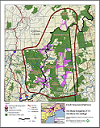
Northeast Kingdom (VT): northern NH linkage
2012
Summary
This map depicts draft structural pathways that may be used to conserve wildlife connectivity in northern Vermont and New Hampshire.
Key Personnel & Institutions
Institutions: The Nature Conservancy
Location
Vermont, New Hampshire
Resource Type
Map
Tags
wildlife, connectivity, corridors, wildlife connectivity, wildlife connectivity planning
Topic Tags
conservation, wildlife and habitat, landscape pattern and connectivity
Purpose Tags
education
Citation
The Nature Conservancy. (2012). Northeast Kingdom Northern NH Linkage [map]. Retrieved from http://216.92.98.160/assets/nek-nnh_proj_area_sps.pdf
Source Link
A multiscale analysis of gene flow for the New England cottontail, an imperiled habitat specialist in a fragmented landscape
2007 to 2008
Summary
The authors evaluated local population structure and measures of genetic diversity of a geographically isolated population of New England cottontail (Sylvilagus transitionalis) in the northeastern United States. They assessed the relative importance of dispersal barriers and facilitators on gene flow varied among populations in relation to landscape composition, demonstrating the complexity and context dependency of factors influencing gene flow and highlighting the importance of replication and scale in landscape genetic studies.
Key Personnel & Institutions
People: Lindsey Fenderson , Noah Perlut , Adrienne Kovach, John Litvaitis, Kathleen O'Brien, Kelly Boland, Walter Jakubas
Institutions: University of New Hampshire , US Fish & Wildlife Service , Maine Department of Inland Fisheries & Wildlife
Location
Maine, New Hampshire
Resource Type
Article
Tags
land use, roads, rabbits, new england cottontail
Topic Tags
conservation, ecosystem services, drivers, wildlife and habitat
Purpose Tags
education
Citation
No citation available.
Source Link
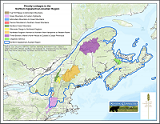
Priority linkages in the northern Appalachian-Acadian region
2015
Summary
Map identifying priority landscape linkages for wildlife connectivity
Key Personnel & Institutions
Institutions: Staying Connected Initiative , Two Countries One Forest
Location
Vermont, Maine, New York, New Hampshire
Resource Type
Map
Tags
connectivity, corridors, wildlife connectivity, wildlife connectivity planning
Topic Tags
conservation, wildlife and habitat, landscape pattern and connectivity
Purpose Tags
education
Citation
Two Countries One Forest. (2015). Priority Linkages in the Northern Appalachian-Acadian Region [map]. Retrieved from http://216.92.98.160/assets/SCILinkageBoundaries_May_2015.pdf
Source Link
http://216.92.98.160/assets/SCILinkageBoundaries_May_2015.pdf
A standardized framework for using camera traps to monitor wildlife crossing structures
1970 to 2015
Summary
This poster itdenfies inconsistencies in wildlife crossing structures and how using camera traps to monitor the performance to these crossing structures could lead to future improvements.
Key Personnel & Institutions
People: Julia Kintsch
Institutions: ECO-resolutions, Utah State University
Location
No location information available
Resource Type
Poster
Tags
camera traps, climate change resilience, landscape scale habitat, wildlife crossing structures, wildlife crossings
Topic Tags
management, ecosystem services, landscape pattern and connectivity
Purpose Tags
management, education
Citation
Kintsch, J., & Cramer, P. (2016). A Standardized Framework for Using Camera Traps to Monitor Wildlife Crossing Structures [poster]. Available at http://stayingconnectedinitiative.org/assets/KintschCramer_CCTWS2016_PosterFinalDraft.pdf
Source Link
http://stayingconnectedinitiative.org/assets/KintschCramer_CCTWS2016_PosterFinalDraft.pdf
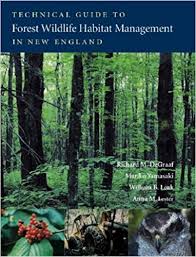
Technical guide to forest wildlife habitat management in New England
2006
Summary
This book is a compilation of forest management practices now crucial for creating a range of forest habitat conditions to maintain or enhance forest wildlife diversity in New England.
Key Personnel & Institutions
People: Richard DeGraaf
Location
New England
Resource Type
Book
Tags
forest management, fragmentation, education, land use change, wildlife management
Topic Tags
management, ecosystem services, drivers
Purpose Tags
management, education
Citation
DeGraaf, R.M., Yamasaki, M., Leak, W.B. and Lester, A.M. (2006). Technical Guide to Forest Wildlife Habitat Management in New England. Burlington, VT: University of Vermont Press.
Source Link
Stressors: Development and habitat loss
2015
Summary
This tool allows users to explore and learn about environmental threats and impacts to wildlife in Massachusetts.
Key Personnel & Institutions
Institutions: UMass Amherst Department of Natural Resources Conservation
Location
Massachusetts
Resource Type
Website
Tags
conservation, wildlife, development, habitat loss, wildlife habitat
Topic Tags
conservation, wildlife and habitat, landscape pattern and connectivity
Purpose Tags
management, education
Citation
Massachusetts Climate Adaptation Partnership. (2015). Stressors: Development and habitat loss. Available at https://climateactiontool.org/content/development-and-habitat-loss
Source Link
https://climateactiontool.org/content/development-and-habitat-loss
Waitsfield: Forest Blocks & Wildlife Road Crossings
2021
Summary
This presentation is an overview of the town plan and suggested updates to follow the requirements of Act 171.
Key Personnel & Institutions
People: Jens Hilke
Institutions: Vermont Agency of Natural Resources
Location
Vermont
Resource Type
Poster
Tags
Topic Tags
conservation, methods, management
Purpose Tags
conservation, management, policy
Citation
Hilke J., "Waitsfield: Forest Blocks & Wildlife Road Crossings", 2021, Accessed from: http://www.waitsfieldvt.us/wp-content/uploads/2021/02/2021-2.2-PC-Mtg-Act-171-Mapping-Sub-Presentation.pdf
Source Link
Landscape correlates of forest plant invasions: A high-resolution analysis across the eastern United States
2001 to 2017
Summary
Using invasive plant data from 23,039 forest inventory plots in 13 ecological provinces, the authors employed logistic regression to relate the odds of invasion to distance from a road, with adjustments for broadscale differences attributable to ecological provinces, and local scale differences in productivity, forest fragmentation and land use. The results indicated the best predictor of the odds of invasion was ecological province, followed by land use, productivity, forest fragmentation and distance from a road, and the authors conclude that in the eastern United States, the existence of a nearby road is less important than the landscape context associated with the road.
Key Personnel & Institutions
People: Kurt Riiters , Kevin Potter
Institutions: United States Department of Agriculture (USDA), Forest Service, Southern Research Station , North Carolina State University, Department of Forestry and Environmental Resources , University of Florida, School of Forest Resources and Conservation
Location
New York, New England
Resource Type
Article
Tags
agriculture, roads, fragmentation, invasives
Topic Tags
management, landscape pattern and connectivity
Purpose Tags
education
Citation
Riitters, K., Potter, K., Iannone III, B.V., Oswalt, C., Fei, S. and Guo, Q. (2018). Landscape correlates of forest plant invasions: A high-resolution analysis across the eastern United States. Diversity and Distributions, 24(3), pp.274-284.
Source Link
Investigating Bobcat-Recreation Conflict in Vermont
2020
Summary
This is a community engagement practicum through Middlebury College in partnership with the Northeast Wilderness Trust. They compiled a comprehensive literature review into wildlife-recreation conflict, with a focus on bobcats (Lynx rufus), developed a pilot study to investigate the impacts of multi-use trail networks on bobcats in Vermont, and created a habitat suitability index and model to identify and compare study sites.
Key Personnel & Institutions
People: Anna Willig , Greta Savitsky , Caroline Daley
Institutions: Middlebury College , Northeast Wilderness Trust
Location
Vermont
Resource Type
Report
Tags
recreation, wildlife conflicts
Topic Tags
conservation, wildlife and habitat, landscape pattern and connectivity
Purpose Tags
conservation
Citation
Daley, C., Savitsky, G., Willig, A. ""Investigating Bobcat-Recreation Conflict in Vermont"" Middlebury College, Northeast Wilderness Trust, Spring 2020. Accessed from (http://www.middlebury.edu/system/files/media/NEWT_Final Report_DM.pdf)
Source Link
http://www.middlebury.edu/system/files/media/NEWT_Final Report_DM.pdf
Chester PLANNING WITH WILDLIFE IN MIND
Summary
An overview of the health of the forests in Chester, Vermont with a focus on fragmentation and ecosystem services.
Key Personnel & Institutions
People: Monica Przyperhart
Institutions: Vermont Fish and Wildlife Department
Location
Vermont, Chester
Resource Type
Report
Tags
Topic Tags
conservation, ecosystem services, wildlife and habitat, landscape pattern and connectivity
Purpose Tags
conservation, education
Citation
Przyperhart, M. "Chester: Planning With Wildlife in Mind." Accessed from http://www.chestervt.gov/uploads/1/1/9/4/119456679/vt_fish_and_wildlife_presentation.pdf
Source Link
http://www.chestervt.gov/uploads/1/1/9/4/119456679/vt_fish_and_wildlife_presentation.pdf
Taking Action for Wildlife: Identify and Protect Wildlife Corridors
2022
Summary
This article communicates the importance of keeping habitats connected and examples of actions that can be taken to help protect wildlife corridors.
Key Personnel & Institutions
Institutions: University of New Hampshire
Location
New Hampshire
Resource Type
Article
Tags
Topic Tags
conservation, management, wildlife and habitat, landscape pattern and connectivity
Purpose Tags
conservation, management, education
Citation
"Taking Action for Wildlife: Identify and Protect Wildlife Corridors", University of New Hampshire, 2022, Accessed from: https://www.takingactionforwildlife.org/resource/identify-protect-wildlife-corridors
Source Link
https://www.takingactionforwildlife.org/resource/identify-protect-wildlife-corridors

The Berkshire wildlife linkage: a corridor for wildlife and people
2015
Summary
This document provides information about the Berkshire Widllife Linkage, and how the vision and goals provided by the Staying Connected Initiative will be achieved.
Key Personnel & Institutions
Institutions: The Nature Conservancy , Staying Connected Initiative
Location
Vermont, New York
Resource Type
Poster
Tags
landuse planning, appalachian trail, habitat corridor, habitat islands, parcelization, road crossings
Topic Tags
conservation, landscape pattern and connectivity
Purpose Tags
conservation, management
Citation
Staying Connected Initiatve. (2015). The Berkshire Wildlife Linkage: A Corridor for Wildlife and People. Available at http://stayingconnectedinitiative.org/assets/Berkshire-Wildlife-Linkage-A-Corridor-for-Wildlife-and-People.pdf
Source Link
Vermont Transportation & Habitat Connectivity Guidance Document
2012
Summary
The information contained in this guidance document will inform transportation planning,
Key Personnel & Institutions
People: Laura Farrell
Institutions: Vermont Agency of Transportation, VTrans
Location
Vermont
Resource Type
Report
Tags
monitoring, road crossings, transportation management, wildlife crossing structures, wildlife crossings, wildlife movement
Topic Tags
methods, management, landscape pattern and connectivity
Purpose Tags
management
Citation
Shilling, F., Cramer, P., Farrell, L., & Reining, C. (2012). Vermont transportation and habitat connectivity guidance document. Vermont Agency of Transportation.
Source Link
http://216.92.98.160/assets/vtrans_transport_habitat_connectivity_guidance_final_dec2012.pdf

Be a steward of the Berkshire Wildlife Linkage -- this place in between!
2016
Summary
This document provides contacts for landowners to different programs that help landowners and communities learn more about the management of forestland.
Key Personnel & Institutions
Institutions: Staying Connected Initiative
Location
Williamstown, Franklin
Resource Type
Poster
Tags
agriculture, wildlife, landuse planning, wildlife connectivity
Topic Tags
conservation, ecosystem services, planning
Purpose Tags
conservation
Citation
Staying Connected Initiative. (2016). Be a steward of the Berkshire Wildlife Linkage. Available at http://stayingconnectedinitiative.org/assets/Landowner_resources_NBerks_Franklin_DRAFT.pdf
Source Link
http://stayingconnectedinitiative.org/assets/Landowner_resources_NBerks_Franklin_DRAFT.pdf
Connecticut Wildlife: Biodiversity, Natural History, and Conservation
2004
Summary
Connecticut Wildlife is the lavishly illustrated, exhaustive overview of the ecosystems of Connecticut, its plants and animals, and the ecological links among the state's wildlife and their habitats--from butterflies to red foxes, jellyfish to double-crested cormorants, poison ivy to phytoplankton. It carefully traces Connecticut's daily, seasonal, annual, and long-term cycles, which range from the dynamics of natural communities to patterns of reproduction and behavior in major groups of organisms. Whether looking at individual species or broad ecosystems, Geoffrey A. Hammerson's conservationist perspective shines in Connecticut Wildlife.
Key Personnel & Institutions
People: Geoffrey A. Hammerson
Institutions: Connecticut Association of Conservation and Inland Wetlands Commissions , Connecticut River Watershed Council
Location
Connecticut
Resource Type
Book
Tags
Topic Tags
conservation, wildlife and habitat
Purpose Tags
conservation
Citation
Hammerson, G. A. "Connecticut Wildlife: Biodiversity, Natural History, and Conservation" 2004, Accessed from https://books.google.com/books?id=FWc3zDq9P10C&pg=PA403&lpg=PA403&dq=forest+fragmentation+connecticut&source=bl&ots=Yxdhces9vo&sig=ACfU3U26eDDRE9USU8rxE3pvjUO0Vcp-NA&hl=en&sa=X&ved=2ahUKEwiv_bjx8Y3pAhWHgXIEHS9CCBM4ChDoATAGegQIChAB#v=onepage&q&f=false
Source Link

Rhode Island Wildlife Action Plan
2015
Summary
The 2015 RI WAP is a comprehensive plan that provides direction to and coordination of wildlife conservation efforts over the coming decade.
Key Personnel & Institutions
Institutions: Rhode Island Department of Environmental Management
Location
Rhode Island
Resource Type
Report
Tags
Topic Tags
conservation, methods, management, wildlife and habitat
Purpose Tags
conservation, management
Citation
"Rhode Island Wildlife Action Plan" Rhode Island Department of Environmental Management, 2015. Accessed from (http://www.dem.ri.gov/programs/fish-wildlife/wildlifehuntered/swap15.php)
Source Link
http://www.dem.ri.gov/programs/fish-wildlife/wildlifehuntered/swap15.php
Rhode Island Wildlife Action Plan
2020
Summary
No additional information available.
Key Personnel & Institutions
Institutions: Northeast Association of Fish and Wildlife Agencies, NatureServe , National Geographic
Location
Rhode Island
Resource Type
Poster
Tags
threats
Topic Tags
conservation, methods, wildlife and habitat
Purpose Tags
conservation, education, policy
Citation
Association of Fish and Wildlife Agencies "Rhode Island Wildlife Action Plan" LandScope America, 2020, Accessed from http://www.landscope.org/rhode-island/priorities/
Source Link
Rhode Island Wildlife Action Plan
2005 to 2015
Summary
No additional information available.
Key Personnel & Institutions
Institutions: Northeast Association of Fish and Wildlife Agencies, LandScope America
Location
Rhode Island
Resource Type
Article
Tags
Topic Tags
conservation, methods, management, wildlife and habitat
Purpose Tags
conservation, management
Citation
"Rhode Island Wildlife Action Plan" Association of Fish and WIldlife Agencies, 2021. Accessed from (http://www.landscope.org/rhode-island/priorities/)
Source Link
Cold Hollow to Canada
Summary
This website provides information about Cold Hollow to Canada, which aims to provide a healthy and intact forested landscape that supports a strong and sustainable local economy through stewardship, with protection of core wildlife habitat and connectivity across the entire Northern Forest.
Key Personnel & Institutions
Institutions: Cold Hollow to Canada
Location
Enosburg, Westfield, Bakersfield, Belvidere, Waterville, Fletcher, Montgomery, Richford
Resource Type
Website
Tags
conservation, northern forest, wildlife, forestland conservation, northeast, forest conservation, wildlife movement
Topic Tags
conservation, management, wildlife and habitat
Purpose Tags
conservation, education
Citation
Cold Hollow to Canada. (n.d.). Available at https://www.coldhollowtocanada.org/
Source Link
Forest Fragmentation: Wildlife and Management Implications
1999
Summary
This book summarizes findings from the first scientific conference to address fragmentation in relationship to forest management and the consequences for wildlife populations in the forests of the western United States and Canada.
Key Personnel & Institutions
People: James Rochelle, Leslie Lehmann, Joe Wisniewski
Location
No location information available
Resource Type
Book
Tags
forest management, connectivity, habitat fragmentation, habitat threats, threats
Topic Tags
drivers, wildlife and habitat, landscape pattern and connectivity
Purpose Tags
management, education
Citation
Rochelle, J. A., Lehmann, L. A., and Wisniewski, J. (1999). Forest Fragmentation: Wildlife and Management Implications. Boston, MA: Brill.
Source Link
Conserving Vernal Pool Wildlife in Urbanizing Landscapes
2007
Summary
This chapter of the journal 'Science and Conservation of Vernal Pools in Northeastern North America' has information on how wildlife in vernal pools are impacted by urbanization. It also explains opportunities and recommendations for conservation.
Key Personnel & Institutions
People: Aram Calhoun, Bryan Windmiller
Institutions: University of Maine
Location
New York, New England
Resource Type
Article
Tags
Topic Tags
conservation, wildlife and habitat, landscape pattern and connectivity
Purpose Tags
conservation
Citation
Windmiller, B.; Calhoun, A. J. K. "Conserving Vernal Pool Wildlife in Urbanizing Landscapes" Science and Conservation of Vernal Pools in Northeastern North America, 13 August, 2007, pp. 233-251, Accessed from https://www.nae.usace.army.mil/Portals/74/docs/regulatory/VernalPools/Ch12_ScienceConservationofVernalPools.pdf
Source Link
The Contribution of Wildlife Hosts to the Rise of Ticks and Tick-Borne Diseases in North America
2021
Summary
This forum article highlights the roles that wildlife hosts play in the maintenance and transmission of zoonotic, companion animal, livestock, and wildlife tick-borne pathogens.
Key Personnel & Institutions
People: Jean Tsao, Sarah Hamer , Seungeun Han , Jennifer L. Sidge , Graham J. Hickling
Institutions: Michigan State University , Texas A&M University, Department of Veterinary Integrative Biosciences, Schubolt Center for Avian Health , National Veterinary Institute, Department of Disease Control and Epidemiology , Michigan Department of Agriculture and Rural Development , University of Tennessee, Center for Wildlife Health, Department of Forestry, Wildlife and Fisheries
Location
No location information available
Resource Type
Article
Tags
ticks
Topic Tags
conservation, wildlife and habitat, landscape pattern and connectivity
Purpose Tags
conservation
Citation
No citation available.
Source Link
https://academic.oup.com/jme/article/58/4/1565/6245992?login=true
Wildlife Corridor Sage Mountain Botanical Sanctuary
2021
Summary
Sage Mountain Botanical Sanctuary serves as a critical corridor for terrestrial and riparian wildlife, at the southern end of over 80,000 acres of contiguous forest including the 26,000 acre Groton State Forest.
Key Personnel & Institutions
Institutions: Sage Mountain Botanical Sanctuary
Location
New Hampshire
Resource Type
Article
Tags
Topic Tags
conservation, wildlife and habitat, landscape pattern and connectivity
Purpose Tags
conservation
Citation
"Wildlife Corridor" Sage Mountain Botanical Sanctuary, 2021. Accessed from (https://sagemountain.com/conservation/land-nature/corridor/)
Source Link
Conserving Vermont's natural heritage: a guide to community-based planning for the conservation of Vermont's fish, wildlife, and biological diversity
2004
Summary
This report is designed for use at the local level to help decision-makers preserve Vermont natural resources, wildlife and cultural heritage.
Key Personnel & Institutions
People: John Austin
Institutions: Vermont Fish & Wildlife Dept. , Vermont League of Cities and Towns
Location
Vermont
Resource Type
Report
Tags
conservation, community based planning, forest preservation, natural heritage
Topic Tags
conservation, management
Purpose Tags
conservation, management
Citation
Austin, J., Alexander, C., Marshall, E., Hammond, F., Shippee, J., and Thompson, E. (2013). Conserving Vermont's natural heritage: a guide to community-based planning for the conservation of Vermont's fish, wildlife, and biological diversity. Vermont Fish and Wildlife Department . 136 p.
Source Link
Sprawl and wildlife habitat
2015
Summary
An educational briefing created by Grow Smart Maine about the impacts of sprawl to wildlife habitat.
Key Personnel & Institutions
Institutions: Grow Smart Maine
Location
Maine
Resource Type
Poster
Tags
development, awareness, disturbance, education, forest fragmentation, sprawl
Topic Tags
conservation, ecosystem services, landscape pattern and connectivity
Purpose Tags
conservation, education
Citation
Sprawl and Wildlife Habitat. (2015). GrowSmart Maine. Retrieved from https://growsmartmaine.org/wp-content/uploads/2015/08/Sprawl-and-Wildlife.pdf
Source Link
https://drive.google.com/file/d/1ybg8gPzNUNacQmB-_NN4lqD0clmwxuqA/view
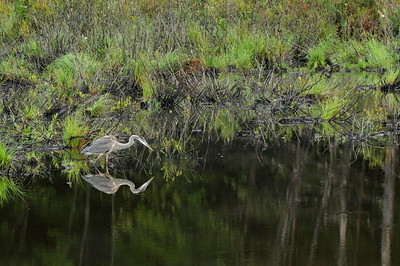
Master's Project: Policy Gap Analysis of Wildlife Conservation Objectives and Environmental Policies in Vermont, USA
2022
Summary
This research identified six state-level environmental policies deemed to be the most consequential for terrestrial wildlife conservation in Vermont: Act 250, Section 248, the Vermont Endangered Species Law, the Vermont Wetlands Rules, Act 171, and Current Use (Use Value Appraisal). A review of relevant caselaw, Vermont Fish and Wildlife Department (VFWD) legislative reports, VFWD-issued guidance documents, and peer-reviewed scientific literature informed the development of the Vermont Wildlife Policy Gap Survey. Utilizing established methodologies, the Vermont Wildlife Policy Gap Survey was designed to identify gaps in Vermont's current regulatory structure for the conservation of wildlife by eliciting feedback from a selected pool of conservation professionals in Vermont.
Key Personnel & Institutions
Institutions: University of Vermont
Location
Vermont
Resource Type
Article
Tags
Topic Tags
conservation, methods, management, drivers, wildlife and habitat
Purpose Tags
conservation, management, policy
Citation
Lacey M. W., "Master's Project: Policy Gap Analysis of Wildlife Conservation Objectives and Environmental Policies in Vermont, USA", University of Vermont, 2022, Accessed from: https://scholarworks.uvm.edu/rsmpp/27/
Source Link

Forestry Matters: Decline of Oaks Will Impact Wildlife in Hardwood Forests
2010
Summary
This article speaks to the important role of oaks and the production of acorns to support the wildlife in many deciduous forests. Forest management, introduced pests and pathogens and increased deer populations have resulted in significant changes in teh demography of oaks in eastern North America. Effective forest management is important. This article provides reccomendations on management practices.
Key Personnel & Institutions
People: Frank Koch , William M. Healy
Institutions: United States Department of Agriculture (USDA), Forest Service , North Carolina State University, Department of Forestry and Environmental Resources , Virginia Polytechnic Institute and State University
Location
Vermont, Massachusetts, Maine, New York, New Hampshire, Connecticut, Rhode Island, New England
Resource Type
Article
Tags
Topic Tags
conservation, methods, management, wildlife and habitat
Purpose Tags
conservation, management
Citation
McShea W. J., Healy W. M., Devers P., Fearer T., Koch F. H., Stauffer D., Waldon J., "Forestry Matters: Decline of Oaks Will Impact Wildlife in Hardwood Forests", The Journal of Wildlife Management, v. 71, iss 5, p. 1717-1728, 13 December 2010, https://doi.org/10.2193/2006-169
Source Link
Connect The Coast Linking Wildlife Across New Hampshire's Seacoast And Beyond
2006 to 2016
Summary
Connect The Coast used spatial models to identify connecting lands for wildlife across the 10-mile buffered portion of the Piscataqua-Salmon Falls watershed that drains through New Hampshire.
Key Personnel & Institutions
People: Peter Steckler , Dea Brickner-Wood
Institutions: The Nature Conservancy, New Hampshire Chapter, Great Bay Resource Protection Partnership
Location
New Hampshire
Resource Type
Report
Tags
Topic Tags
conservation, methods, management, planning, wildlife and habitat, landscape pattern and connectivity
Purpose Tags
conservation, management, education
Citation
Steckler, P and Brickner-Wood, D. 2019. "Connect The Coast final report." The Nature Conservancy and the Great Bay Resource Protection Partnership. Concord, NH.
Source Link
https://www.nature.org/content/dam/tnc/nature/en/documents/nh-connect-the-coast-report.pdf
Keeping working forests available for wildlife
2013
Summary
This pamphlet outlines the importance of connected landscapes for wildlife.
Key Personnel & Institutions
People: Monica Erhart
Institutions: Vermont Natural Resources Council , Staying Connected Initiative
Location
Vermont, New York
Resource Type
Poster
Tags
species richness, habitat, working forests
Topic Tags
ecosystem services, landscape pattern and connectivity
Purpose Tags
education
Citation
Erhart, M. (2013). Staying Connected, Keeping Working Forests Available for Wildlife. Staying Connected Initiative. Retrieved from http://www.stayingconnectedinitiative.org/assets/keeping_forests_connected.pdf
Source Link
http://www.stayingconnectedinitiative.org/assets/keeping_forests_connected.pdf
Research and Conservation of the New England Cottontail Rabbit (Final Report for the Cooperative Agreement between the U.S. Fish and Wildlife Service and the University of New Hampshire)
2013 to 2016
Summary
This article is a summary of work done by Dr. Adrienne Kovach and affiliates on the impacts of habitat fragmentation on the New England cottontail. Dr. Kovach and her affiliates' research has helped conservationists determine where New England cottontail populations are located, better methodologies to survey for New England cottontails, what the genetic structure of different populations is, and how habitat fragmentation can have negative effects on the genetic diversity and health of New England cottontails. Links to the report and other research articles can be found at the bottom of this summary article: https://newenglandcottontail.org/content/connecting-populations.
Key Personnel & Institutions
People: Lindsey Fenderson , Adrienne Kovach, Kathleen O'Brien, Kelly Boland, Walter Jakubas, Katrina Amaral, Michael Palace, Thea Kristensen
Institutions: University of New Hampshire , US Fish & Wildlife Service , Maine Department of Inland Fisheries & Wildlife
Location
Maine, Connecticut
Resource Type
Report
Tags
Topic Tags
conservation, methods, management, wildlife and habitat, landscape pattern and connectivity
Purpose Tags
conservation, management
Citation
Kovach, A. (2016). Final Report for the Cooperative Agreement between the U.S. Fish and Wildlife Serice and the University of New Hampshire (#F13AC00103).
Source Link
https://newenglandcottontail.org/content/connecting-populations
Conserving wildlife in Maine's developing landscape
2000
Summary
This report outlines the current state of Maine's forest habitats and potential future conditions.
Key Personnel & Institutions
People: Barbara Charry
Institutions: Maine Audubon Society
Location
Cumberland, York
Resource Type
Report
Tags
amphibians, birds, insects, mammals, mollusks, reptiles, education, outreach, wildlife habitat
Topic Tags
ecosystem services
Purpose Tags
education
Citation
Charry, B. (2000). Conserving Wildlife in Maine's Developing Landscape. Maine Audubon Society. Available at http://www.maineaudubon.org/wp-content/uploads/2017/03/MEAud-Conserving-Wildlife-Developing-Landscape.pdf
Source Link

Connectivity areas and habitat blocks
2011
Summary
No additional information available.
Key Personnel & Institutions
Institutions: Staying Connected Initiative
Location
Green Mountain Range
Resource Type
Map
Tags
wildlife, corridors, wildlife connectivity, wildlife connectivity planning
Topic Tags
conservation, wildlife and habitat, landscape pattern and connectivity
Purpose Tags
education
Citation
Staying Connected Initiative. (2011). Connectivity Areas and Habitat Blocks - A Regional Perspective [map]. Retrieved from http://216.92.98.160/assets/_15connectivityarea_habitatblocks.pdf
Source Link
http://216.92.98.160/assets/_15connectivityarea_habitatblocks.pdf
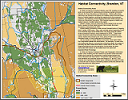
Habitat connectivity in Brandon, VT
2011
Summary
Map identiying connecting habitat between large habitat blocks
Key Personnel & Institutions
Institutions: Staying Connected Initiative
Location
Pittsfield, Brandon
Resource Type
Map
Tags
wildlife, corridors, wildlife connectivity planning, wildlife habitat
Topic Tags
conservation, wildlife and habitat, landscape pattern and connectivity
Purpose Tags
education
Citation
Marangelo, P. (2011). Habitat Connectivity, Brandon, VT. Staying Connected Initiative. Available at http://216.92.98.160/assets/brandonconnectivityhabitatblocks11_2011.pdf
Source Link
http://216.92.98.160/assets/brandonconnectivityhabitatblocks11_2011.pdf
Massachusetts Department of Fish & Game
Summary
This website provides information about the Massachusetts Department of Fish and Game.
Key Personnel & Institutions
Institutions: Massachusetts Department of Fish and Game
Location
Massachusetts
Resource Type
Website
Tags
conservation, wildlife conservation
Topic Tags
conservation, management, wildlife and habitat
Purpose Tags
conservation, management, education
Citation
Massachusetts Department of Fish and Game. (n.d.). Available at https://www.mass.gov/orgs/department-of-fish-and-game
Source Link
Planning: A Key Step Towards Protecting Forest and Wildlife Resources - Act 171 Guidance
2018
Summary
Act 171 amended Vermont Planning Statutes to encourage and allow municipalities to address protection of forest blocks and habitat connectors, while also supporting the local forest products industry. After January 1, 2018, municipalities seeking to have their plans approved by their Regional Planning Commission must include additional information on the future land use map and language that identifies state, regional or locally significant forest blocks and habitat connectors. The plan may also include specific policies on how the community will take steps to reduce forest fragmentation, enhance forest health, and support essential ecological functions.
Key Personnel & Institutions
People: Julie Moore
Institutions: Vermont Agency of Natural Resources , Vermont Fish and Wildlife Department , Vermont Department of Forests, Parks and Recreation
Location
Vermont
Resource Type
Policy
Tags
Topic Tags
conservation, methods, management, ecosystem services, wildlife and habitat, landscape pattern and connectivity
Purpose Tags
conservation, management, education, policy
Citation
Moore, J. "Act 171 Guidance - Planning: A Key Step Towards Protecting Forest and Wildlife Resources." Vermont Agency of Natural Resources, March 2018, Accessed from https://anr.vermont.gov/sites/anr/files/co/planning/documents/guidance/Act171Guidance.pdf
Source Link
https://anr.vermont.gov/sites/anr/files/co/planning/documents/guidance/Act171Guidance.pdf
Effects of habitat features and landscape composition on the population structure of a common aquatic turtle in a region undergoing rapid development
2000 to 2001
Summary
Using a geographic information system and live trapping of turtles, the authors compared the proportion of males, the proportion of adults, and the relative abundance of turtles in 37 ponds to understand the demography of a common aquatic turtle (Chrysemys picta) along a gradient of urbanization in southeastern New Hampshire. They found that turtle abundance increased as the distance to neighboring wetlands decreased and the amount of nesting habitat near pond edges increased.
Key Personnel & Institutions
People: Michael Marchand
Institutions: University of New Hampshire, Department of Natural Resources and the Environment
Location
Strafford, Rockingham
Resource Type
Article
Tags
demography, fragmentation, aquatic organisms, road crossings, turtles
Topic Tags
ecosystem services, wildlife and habitat
Purpose Tags
education
Citation
Marchand, M.N. & Litvaitis, J.A. (2004). Effects of habitat features and landscape composition on the population structure of a common aquatic turtle in a region undergoing rapid development. Conservation Biology, 18(3), 758-767.
Source Link
https://onlinelibrary.wiley.com/doi/full/10.1111/j.1523-1739.2004.00019.x
Massachusetts Audubon
Summary
No additional information available.
Key Personnel & Institutions
Institutions: Massachusetts Audubon
Location
Massachusetts
Resource Type
Website
Tags
conservation, wildlife, advocacy, education, wildlife conservation
Topic Tags
conservation, management, ecosystem services, wildlife and habitat
Purpose Tags
conservation, management, education
Citation
Mass Audubon. (n.d.). Available at https://www.massaudubon.org
Source Link
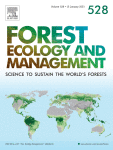
State efforts to promote early-successional habitats on public and private lands in the northeastern United States
2003
Summary
State wildlife agencies are generally charged with conserving all native wildlife and their habitats within their respective state. However, some have suggested that state wildlife agencies in the region are not addressing the decline of early-successional wildlife and habitats sufficiently. This study investigated the extent to which 11 state agencies in this region are creating and maintaining early-successional habitats on public and private lands.
Key Personnel & Institutions
People: James Oehler
Institutions: Massachusetts Division of Fisheries and Wildlife, New Hampshire Fish and Game Department
Location
Vermont, Massachusetts, Maine, New York, New Hampshire, Connecticut, Rhode Island, New England
Resource Type
Article
Tags
Topic Tags
conservation, methods, management, wildlife and habitat, landscape pattern and connectivity
Purpose Tags
conservation, management
Citation
Oehler J. D., "State efforts to promote early-successional habitats on public and private lands in the northeastern United States", v. 185, iss 1-2, p. 169-177, 3 November 2003, https://doi.org/10.1016/S0378-1127(03)00253-6
Source Link
https://www.sciencedirect.com/science/article/abs/pii/S0378112703002536
Building for Birds: an online tool to evaluate how different development designs impact forest habitat
2017
Summary
The tool described in this essay helps city decision-makers evaluate how different development designs benefit or do not benefit different bird species.
Key Personnel & Institutions
People: Mark Hostetler
Institutions: United States Fish and Wildlife Service
Location
No location information available
Resource Type
Website
Tags
conservation, habitat, birds, wildlife, management, ecosystems
Topic Tags
landscape pattern and connectivity
Purpose Tags
conservation, management, education
Citation
Hostetler, M., & Archer, J. M. (2017, January 11). Building for Birds: An Online Tool to Evaluate How Different Development Designs Impact Forest Bird Habitat. The Nature of Cities. Available at https://www.thenatureofcities.com/2017/01/11/building-birds-new-online-tool-evaluate-different-development-designs-impact-forest-bird-habitat/
Source Link
Public acceptability of development in the Northern Forest of Vermont, USA - the influence of wildlife information, recreation involvement, and demographic characteristics
2014 to 2018
Summary
No additional information available.
Key Personnel & Institutions
People: Therese Donovan , James Murdoch , Jessica Espenshade
Institutions: United States Geological Survey (USGS) , Vermont Department of Fish & Wildlife, Non Game and Natural Heritage , Yale School of Forestry and Environmental Studies, Ucross High Plains Stewardship Initiative , University of Vermont, Rubenstein School of Environment and Natural Resources
Location
Vermont
Resource Type
Article
Tags
development, visual preference survey, development acceptability, landscape
Topic Tags
ecosystem services, wildlife and habitat, landscape pattern and connectivity
Purpose Tags
education
Citation
No citation available.
Source Link
https://journals.plos.org/plosone/article?id=10.1371/journal.pone.0203515
Staying Connected Initiative
Summary
This website provides information about the Staying Connected Initiative.
Key Personnel & Institutions
Institutions: Staying Connected Initiative
Location
New York, New England
Resource Type
Website
Tags
communities, community patterns, wildlife connectivity, wildlife habitat, wildlife movement
Topic Tags
conservation, planning, wildlife and habitat, landscape pattern and connectivity
Purpose Tags
conservation, education
Citation
Staying Connected Initiative. (n.d.) Available at http://stayingconnectedinitiative.org/
Source Link
Terrestrial habitat use by nesting painted turtles in landscapes with different levels of fragmentation
2001
Summary
To understand the demography of aquatic turtles to landuse change, the authors investigated the nesting habitats used by adult female painted turtles (Chrysemys picta).
Key Personnel & Institutions
People: E. Baldwin
Institutions: University of New Hampshire, Department of Natural Resources and the Environment
Location
Strafford, Rockingham
Resource Type
Article
Tags
habitat, reptiles, fragmentation, aquatic organisms, breeding, road crossings, turtles
Topic Tags
ecosystem services, wildlife and habitat
Purpose Tags
education
Citation
Baldwin, E.A., Marchand, M.N., & Litvaitis, J.A. (2004). Terrestrial habitat use by nesting painted turtles in landscapes with different levels of fragmentation. Northeastern Naturalist, 11(1), 41-48.
Source Link
Habitat features associated with predation of New England cottontails: what scale is appropriate?
1990 to 1993
Summary
The authors examined habitat features at several spatial scales that were associated with predation of New England cottontails (Sylvilagus transitionalis) by mammalian carnivores. They found that the perimeter-to-area ratio of an occupied patch, the amount of disturbed habitat within 0.5 km of a patch, and the amount of coniferous forest within 1 km of a patch were greater for killed rabbits than for those that survived.
Key Personnel & Institutions
People: A. Brown
Institutions: University of New Hampshire, Department of Natural Resources and the Environment
Location
Strafford
Resource Type
Article
Tags
roads, rabbits, fragmentation, connectivity, landscape genetics, new england cottontail
Topic Tags
ecosystem services, wildlife and habitat
Purpose Tags
education
Citation
Brown, A.L., & Litvaitis, J.A. (1995). Habitat features associated with predation of New England cottontails: what scale is appropriate?. Canadian journal of zoology, 73(6), 1005-1011.
Source Link
http://www.nrcresearchpress.com/doi/abs/10.1139/z95-120#.WyqFKKdKiUk
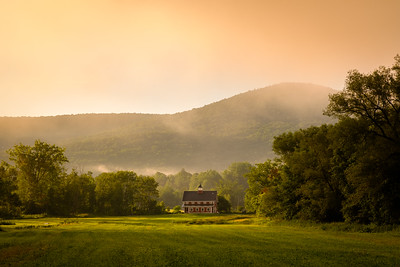
Forest Fragmentation Threatens Bird Diversity
2018
Summary
Scientists note that habitat fragmentation is the biggest threat to the health of mature forests. Ron Krupp explains how this negatively effects bird diversity.
Key Personnel & Institutions
People: Ron Krupp
Institutions: Vermont Public Radio
Location
Vermont
Resource Type
Article
Tags
diversity, birds, threats
Topic Tags
conservation, wildlife and habitat, landscape pattern and connectivity
Purpose Tags
conservation
Citation
Krupp, R. "Forest Fragmentation Threatens Bird Diversity" Vermont Public Radio, 26 June, 2018. Accessed from (https://www.vpr.org/programs/2018-06-26/forest-fragmentation-threatens-bird-diversity)
Source Link
https://www.vpr.org/programs/2018-06-26/forest-fragmentation-threatens-bird-diversity
An enduring place: wildlife and people in the Worcester Range through the Northeastern Highlands
2012
Summary
This report outlines the key habitat features that make the Worcester Range and Northeastern Highlands region important to Vermont's people and animals.
Key Personnel & Institutions
People: Tom Slayton
Institutions: Vermont Fish & Wildlife Dept. , National Wildlife Federation
Location
Vermont
Resource Type
Report
Tags
conservation, habitat connectivity, northeastern highlands, worcester range
Topic Tags
ecosystem services, landscape pattern and connectivity
Purpose Tags
conservation
Citation
Slayton, T. (2012). An enduring place: wildlife and people in the Worcester Range through the Northeastern Highlands. Staying Connected Initative.
Source Link
Why forest fragmentation risks mass extinctions
2015
Summary
This article outlines the risk of extinction that fragmented forests face throughout North America and South America.
Key Personnel & Institutions
People: David Edwards
Location
New York, New England
Resource Type
Website
Tags
wildlife, disturbance, education, forest patch, threats
Topic Tags
drivers, wildlife and habitat
Purpose Tags
education
Citation
Edwards, D. (2015, March 23). Why forest fragmentation risks mass extinctions. Available at https://www.weforum.org/agenda/2015/03/why-forest-fragmentation-risks-mass-extinctions/
Source Link
https://www.weforum.org/agenda/2015/03/why-forest-fragmentation-risks-mass-extinctions/
Passumpsic Valley Land Trust
Summary
This website provides information about the Passumsic Valley Land Trust (PVLT).
Key Personnel & Institutions
Not available.Location
St. Johnsbury
Resource Type
Website
Tags
conservation, forestland conservation, wildlife habitat
Topic Tags
conservation, management, wildlife and habitat
Purpose Tags
conservation, education
Citation
Passumpsic Valley Land Trust. (n.d.). Retrieved from https://pvlt.org/
Source Link
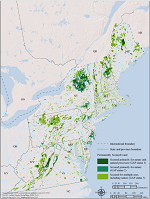
Conservation status of fish, wildlife, and natural habitats in the Northeast landscape
2011
Summary
In 2008, the Northeast Association of Fish and Wildlife Agencies and its partners developed a multi-state monitoring framework to take stock of the condition and conservation of the species and habitats that characterize the region. Building on the 2008 report, this report is the first attempt to implement the recommendations of the monitoring framework.
Key Personnel & Institutions
People: Mark Anderson, Arlene Olivero Sheldon
Institutions: The Nature Conservancy
Location
New York, New England
Resource Type
Report
Tags
conservation, resource management, policy
Topic Tags
conservation, management
Purpose Tags
education
Citation
Anderson, M.G. & Olivero Sheldon, A. (2011). Conservation status of fish, wildlife, and natural habitats in the Northeast landscape. The Nature Conservancy, Eastern Conservation Science.289 p.
Source Link
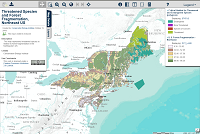
Threatened species and forest fragmentation
2010
Summary
This map provides locations of threatened species along with areas of forest fragmentation
Key Personnel & Institutions
Institutions: Data Basin
Location
New York, New England
Resource Type
Map
Tags
endangered species, wildlife, habitat threats, landcover, risk assesment, threats, wildlife habitat
Topic Tags
conservation, wildlife and habitat, landscape pattern and connectivity
Purpose Tags
management, education
Citation
Conservation Biology Institute. (2010). Threatened Species and Forest Fragmentation, Northeast US [map]. Retrieved from https://databasin.org/maps/1177a5b4fec4470e829e29cf575527a3/active
Source Link
https://databasin.org/maps/1177a5b4fec4470e829e29cf575527a3/active
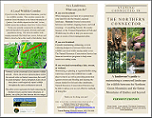
The Northern Connector
2011
Summary
A guide for landowner to maintaining a connected landscape for wildlife between the northern Green Mountains and the Sutton Mountains of Quebec and beyond by the Staying Connected Initiative.
Key Personnel & Institutions
Institutions: Staying Connected Initiative
Location
Green Mountain Range
Resource Type
Poster
Tags
wildlife, landuse planning, habitat connectivity, land management, landscape connectivity
Topic Tags
ecosystem services, landscape pattern and connectivity
Purpose Tags
conservation
Citation
Staying Connected Initiative.(2011). Staying Connected in: The Northern Connector. Available at http://www.stayingconnectedinitiative.org/assets/_11ngs_landowner_management_brochure2_11-30-11.pdf
Source Link
http://www.stayingconnectedinitiative.org/assets/_11ngs_landowner_management_brochure2_11-30-11.pdf
Effects of ice storm-created gaps on forest breeding bird communities in central Vermont
1994 to 1998
Summary
The author investigated the short-term effects of the 1998 ice storm on breeding birds in a northern hardwood forest in central Vermont. Overall, species richness and diversity increased only at ice storm sites, whereas total abundance increased at controls.
Key Personnel & Institutions
People: Steven Faccio
Institutions: VINS (Vermont Institute of Natural Science)
Location
Vermont
Resource Type
Article
Tags
forest disturbance, birds, forest management, wildlife
Topic Tags
management, ecosystem services, wildlife and habitat
Purpose Tags
management, education
Citation
Faccio, S.D. (2003). Effects of ice storm-created gaps on forest breeding bird communities in central Vermont. Forest Ecology and Management, 186(1), pp.133-145.
Source Link
https://www.sciencedirect.com/science/article/abs/pii/S0378112703002329
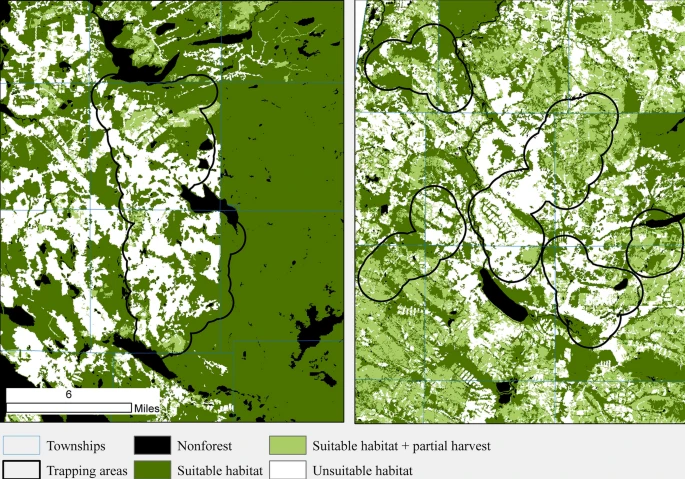
Sex-biased habitat selection by American marten in the Acadian Forest
2022
Summary
For wildlife dependent on mature forest living in managed landscapes, habitat loss from land use can outpace habitat recovery from forest regrowth, challenging persistence of habitat specialists. For some species, the effects of habitat loss or fragmentation may also differ between sexes when physiological or behavioral differences influence space use.
Key Personnel & Institutions
People: Erin Simons-Legaard, Daniel Harrison
Institutions: University of Maine , University of Maine, School of Forest Resources , Maine Department of Wildlife, Fisheries, and Conservation Biology , The University of Georgia, Warnell School of Forestry and Natural Resources
Location
Maine
Resource Type
Article
Tags
Topic Tags
conservation, drivers, wildlife and habitat
Purpose Tags
conservation
Citation
Simons-Legaard E., Harrison D., Hepinstall-Cymerman J., Payer D., "Sex-biased habitat selection by American marten in the Acadian Forest", Landscape Ecology, 8 September 2022, https://doi.org/10.1007/s10980-022-01508-7
Source Link
https://link.springer.com/article/10.1007/s10980-022-01508-7
Effects of small-scale habitat disturbance on the ecology of breeding birds in a Vermont (USA) hardwood forest
1995
Summary
The authors studied territory placement and foraging behavior of breeding birds in relation to juxtaposition of forest vegetation and logged patches in southern Vermont. They found that different bird species used disturbed vegetation at differing spatial scales, depending on territory size.
Key Personnel & Institutions
People: Richard Lent
Institutions: University of Vermont
Location
Vermont
Resource Type
Article
Tags
forest disturbance, birds, wildlife, fragmentation
Topic Tags
ecosystem services, wildlife and habitat, landscape pattern and connectivity
Purpose Tags
management, education
Citation
Lent, R.A. & Capen, D.E. (1995). Effects of small-scale habitat disturbance on the ecology of breeding birds in a Vermont (USA) hardwood forest. Ecography 18: 97-108.
Source Link
http://www.jstor.org/stable/pdf/3682757.pdf?refreqid=excelsior%3A49578939eb13d4b88886915ee5b46a2f
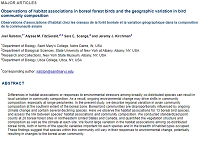
Observations of habitat associations in boreal forest birds and the geographic variation in bird community composition
2019
Summary
The authors described regional variation in boreal bird community composition to understand how climate change may affect the boreal avian community.
Key Personnel & Institutions
People: Jeremy Kirchman, Jeremy Kirchman , Joel Ralston, Alyssa FitzGerald, Sara Scanga , Sara Scanga
Institutions: Saint Mary's College, The State University of New York (SUNY), New York State Museum, Utica College
Location
No location information available
Resource Type
Article
Tags
Topic Tags
Purpose Tags
Citation
No citation available.
Source Link
Consequences of forest fragmentation for juvenile survival in spotted (Ambystoma maculatum) and marbled (Ambystoma opacum) salamanders
2005
Summary
This study compared demographic traits of post metamorphic salamanders among old fields, forest interior, and edge habitats over 2 years in order to observe the consequences of forest fragmentation on these salamanders.
Key Personnel & Institutions
People: Betsie B. Rothermel , Raymond D. Semlitsch
Institutions: University of Missouri
Location
New England
Resource Type
Article
Tags
salamanders
Topic Tags
conservation, wildlife and habitat
Purpose Tags
conservation
Citation
Rothermel, B.B.; Semlitsch, R.D. "Consequences of Forest Fragmentation for Juvenile Survival in Spotted (Ambystoma maculatum) and Marbled (Ambystoma opacum) salamanders." Canadian journal of Zoology, 11 July 2006, Accessed from (https://www.nrcresearchpress.com/doi/abs/10.1139/z06-056#.XoSlMohKiUk)
Source Link
https://www.sciencedirect.com/science/article/pii/S0378112706000983
Rhode Island's Wildlife Action Plan
2015
Summary
No additional information available.
Key Personnel & Institutions
Institutions: Rhode Island Department of Environmental Management, Terwilliger Consulting , The Nature Conservancy, Rhode Island
Location
Rhode Island
Resource Type
Report
Tags
Topic Tags
conservation, management, ecosystem services, wildlife and habitat, landscape pattern and connectivity
Purpose Tags
conservation, education, policy
Citation
Rhode Island Department of Environmental Management "Rhode Island Wildlife Action Plan" 2015, Accessed from http://www.dem.ri.gov/programs/fish-wildlife/wildlifehuntered/swap15.php
Source Link
http://www.dem.ri.gov/programs/fish-wildlife/wildlifehuntered/swap15.php
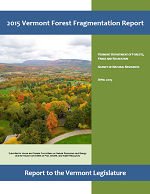
2015 Vermont Forest Fragmentation Report
2015
Summary
This report focuses on the issue arising in fragmentation in Vermont from the years of land-use and deforestation. With a vast majority of the land privately and publicly owned by residents, foretes have isolated from one another and lost their enrichment of wildlife and tree species.
Key Personnel & Institutions
People: Michael Snyder
Institutions: Vermont Forest Parks and Recreation
Location
Vermont
Resource Type
Report
Tags
water quality, wildlife, fragmentation, advocacy, decision making, edge effects, parcelization, policy
Topic Tags
ecosystem services, landscape pattern and connectivity
Purpose Tags
conservation, policy
Citation
Vermont Department of Forests, Parks and Recreation. (2015). 2015 Vermont Forest Fragmentation Report. Vermont Department of Forests, Parks and Recreation. 62 p.
Source Link
New England Forestry Foundation
Summary
This website provides information about the New England Forestry Foundation.
Key Personnel & Institutions
Institutions: New England Forestry Foundation
Location
New England
Resource Type
Website
Tags
communities, education, new england forests, stewardship, wildlife conservation
Topic Tags
conservation, management, planning, wildlife and habitat
Purpose Tags
education
Citation
New England Forestry Foundation. (n.d.). Available at https://newenglandforestry.org/
Source Link
Northern Rivers Land Trust
Summary
This website provides information about the Northern Rivers Land Trust.
Key Personnel & Institutions
Institutions: Northern Rivers Land Trust
Location
Hardwick
Resource Type
Website
Tags
agriculture, conservation, forestland conservation, conservation easements, wildlife conservation
Topic Tags
conservation, management, planning, wildlife and habitat
Purpose Tags
conservation, management
Citation
Northern Rivers Land Trust. (n.d.). Available at http://www.northernriverslandtrust.org/
Source Link
Climate Change and Biodiversity in Maine: Vulnerability of Habitats and Priority Species
2004 to 2014
Summary
A report of the vulnerability assessment of Maine's species and habitats, the relationship between species vulnerability and Maine Comprehensive Wildlife Conservation Strategy ( ME SWCS), to provide information to Maine natural resource managers and policy makers and to facilitate the incorporation of climate change information into upcoming revisions of ME SWCS.
Key Personnel & Institutions
People: Andrew Whitman , Andrew Cutko , Phillip DeMaynadier , Steve Walker , Barbara Vickery , Sally Stockwell , Robert Houston
Institutions: The Nature Conservancy , United States Fish and Wildlife Service, Maine Audubon Society , Maine Department of Inland Fisheries & Wildlife , Maine Department of Agriculture, Concervation and Forestry , Manomet Center for Conservation Sciences , Maine Coast Heritage Trust
Location
Maine
Resource Type
Report
Tags
climate change, assessment, natural resources
Topic Tags
conservation, methods, planning, wildlife and habitat, landscape pattern and connectivity
Purpose Tags
conservation, management, education, policy
Citation
Whitman, A.; Cutko, A.; deMaynadier, P.; Walker, S.; Vickery, B.; Stockwell, S.; Houston, R. 2014. "Climate Change and Biodiversity in Maine: Vulnerability of Habitats and Priority Species, Manoment Center for Conservation Sciences." Accessed From (https://www.manomet.org/wp-content/uploads/old-files/2013 BwH Vulnerability Report CS5v7_0.pdf)
Source Link
https://www.manomet.org/wp-content/uploads/old-files/2013 BwH Vulnerability Report CS5v7_0.pdf
Eastern Deciduous Forest, Second Edition: Ecology and Wildlife Conservation
2005
Summary
No additional information available.
Key Personnel & Institutions
People: Richard H. Yahner
Institutions: Pennsylvania State University, School of Forest Resources
Location
New England
Resource Type
Book
Tags
Topic Tags
conservation, wildlife and habitat, landscape pattern and connectivity
Purpose Tags
conservation, education
Citation
Yahner, R. H. "Eastern Deciduous Forests, Second Edition: Ecology and Wildlife Conservation." June 5, 2000. Buy online at https://www.amazon.com/Eastern-Deciduous-Forest-Second-Conservation/dp/0816633606
Source Link
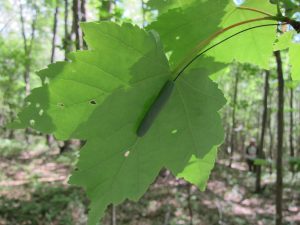
Effects of forest fragmentation on tri-trophic interactions
2022
Summary
As has been seen more generally with habitat specialist species, this study observed that more fragmented forest harbors fewer dietary specialist caterpillars relative to dietary generalist caterpillars. This project tests several alternative hypothetical mechanisms for this pattern.
Key Personnel & Institutions
People: Michael S. Singer
Institutions: Wesleyan University
Location
Connecticut
Resource Type
Article
Tags
Topic Tags
conservation, drivers, wildlife and habitat
Purpose Tags
conservation
Citation
Singer M., "Effects of Forest Fragmentation on Tri-Trophic Interactions", Wesleyan University, Accessed from: https://msinger.faculty.wesleyan.edu/enemy-free-space-and-caterpillar-diet-breadth/
Source Link
https://msinger.faculty.wesleyan.edu/enemy-free-space-and-caterpillar-diet-breadth/
Factors Affecting the Persistence of New England Cottontail Metapopulations: The Role of Habitat Management
1996
Summary
This study used computer simulations in the context of metapopulation theory to understand the effects of environmental correlation, habitat loss, and habitat management on remaining populations of New England cottontails.
Key Personnel & Institutions
People: John Litvaitis, Rafael Villafuerte
Institutions: The Wildlife Society
Location
New England
Resource Type
Article
Tags
habitat loss, new england cottontail
Topic Tags
conservation, wildlife and habitat, landscape pattern and connectivity
Purpose Tags
conservation, education
Citation
No citation available.
Source Link
Effect of even-aged timber management on bird species diversity and composition in northern hardwoods of New Hampshire
1989 to 1990
Summary
The objective was to determine the effects of even-aged timber management on bird species diversity and composition in an extensively forested landscape, the White Mountain National Forest in New Hampshire. The authors found that bird species diversity was greater on managed than on reserved areas, and there were no species unique to reserved areas.
Key Personnel & Institutions
People: Christopher Welsh
Institutions: The Wildlife Society
Location
Coos, Carroll
Resource Type
Article
Tags
timber harvest, edge habitat, neotropical migrants
Topic Tags
management, ecosystem services, wildlife and habitat, landscape pattern and connectivity
Purpose Tags
conservation, management, education
Citation
Welsh, C.J. & Healy, W.M. (1993). Effect of even-aged timber management on bird species diversity and composition in northern hardwoods of New Hampshire. Wildlife Society Bulletin, pp.143-154.
Source Link
http://www.jstor.org/stable/pdf/3782916.pdf?refreqid=excelsior%3A340771089c7a3322a0d2ec7093060abd
The Vermont Reptile and Amphibian Atlas
2017 to 2018
Summary
Amphibian monitoring at Mt. Mansfield provides locally intensive data on a subset of amphibian species. While these data are particularly valuable and allow for an observation of year-to-year population changes of the monitored species at Mt. Mansfield and provide local information on abnormalities, and natural history, they do not allow for the observation of more widespread changes in the distribution and/or natural history (calling times, migration dates, etc.) of the full range of reptiles and amphibians statewide. Nor do they allow for observations of changes in forest health, or the impacts of forest fragmentation and consumption on a larger scale. In addition, there is a real need to get reptile and amphibian natural history and management information out to a wide variety of landowners and land managers as well as other natural resource professionals.
Key Personnel & Institutions
People: James Andrews
Institutions: Vermont Family Forests, Forest Ecosystem Monitoring Cooperative (FEMC)
Location
Vermont
Resource Type
Report
Tags
reptiles, amphibian, mt. mansfield
Topic Tags
conservation, management, wildlife and habitat, landscape pattern and connectivity
Purpose Tags
conservation, management
Citation
Andrews, J. S. "The Vermont Reptile and Amphibian Atlas." 4 February 2018, Accessed from https://www.uvm.edu/femc/attachments/project/349/Annual_Atlas_Report_for_FEMC,_2017.pdf
Source Link
https://www.uvm.edu/femc/attachments/project/349/Annual_Atlas_Report_for_FEMC,_2017.pdf
The role of spatial scale in understanding responses of medium-sized carnivores to forest fragmentation
1993
Summary
The authors incorporated a multiscaled approach (using site, plot, and landscape) to investigate the distribution of activity of medium-sized carnivores relative to habitat edges and the numeric responses of these predators to habitat diversity. They found that populations of generalist predators (raccoons and wild canids) increased as landscapes became more diverse.
Key Personnel & Institutions
People: James Oehler
Institutions: University of New Hampshire, Department of Natural Resources and the Environment
Location
Strafford
Resource Type
Article
Tags
land use, wildlife, carnivores, canids, generalist predators, habitat edges, human-dominanted habitats
Topic Tags
ecosystem services, wildlife and habitat
Purpose Tags
education
Citation
Oehler, J.D. & Litvaitis, J.A. (1996). The role of spatial scale in understanding responses of medium-sized carnivores to forest fragmentation. Canadian Journal of Zoology, 74(11), 2070-2079.
Source Link
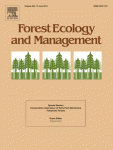
Synthesis of the conservation value of the early-successional stage in forests of eastern North America
2014
Summary
As a result of changes in natural and anthropogenic disturbance regimes, the extent of early-successional forest across much of eastern North American is near historic lows, and continues to decline. This has caused many scientists to identify the conservation of early-successional species as a high priority. This synthesis discusses the conservation implications of this loss of early-successional habitats using examples from the literature on songbirds.
Key Personnel & Institutions
People: David King
Institutions: United States Department of Agriculture (USDA), Forest Service, Northern Research Station , University of Massachusetts, Amherst, Department of Environmental Conservation
Location
Vermont, Massachusetts, Maine, New York, New Hampshire, Connecticut, Rhode Island, New England
Resource Type
Article
Tags
Topic Tags
conservation, ecosystem services, drivers, wildlife and habitat
Purpose Tags
conservation
Citation
King D. I., Schlossberg S., "Synthesis of the conservation value of the early-successional stage in forests of eastern North America", Forest Ecology and Management, v. 324, 15 July 2014, p. 186-195, https://doi.org/10.1016/j.foreco.2013.12.001
Source Link
New England-Acadian Forests
2021
Summary
This article is an extensive overview of the New England-Acadian forests that span New England and the Eastern Townships and the Beauce regions of Quebec and 50 percent of New Brunswick.
Key Personnel & Institutions
Institutions: World Wildlife Fund
Location
New England
Resource Type
Article
Tags
Topic Tags
conservation, wildlife and habitat
Purpose Tags
conservation, education
Citation
Davis, M., Gratton, L., Adams, J., Goltz, J., Stewart, C., Buttrick, S., Zinger, N., Kavanagh, K., Sims, M., Mann, G. "New England-Acadian Forests" World Wildlife Fund, 2021. Accessed from (https://www.worldwildlife.org/ecoregions/na0410)
Source Link

DEVELOPMENT REVIEW
2020
Summary
A preliminary assessment involves staff review of known wildlife and fisheries resources of interest and the potential for these resources to occur in the project area or adjacent properties. The department provides a preliminary response indicating the potential for impacts and/or request further on-site investigation.
Key Personnel & Institutions
Institutions: Vermont Fish and Wildlife Department
Location
Vermont
Resource Type
Poster
Tags
Topic Tags
conservation, methods, management, ecosystem services
Purpose Tags
conservation, management
Citation
"Development Review" Vermont Fish and Wildlife Department, 2020, Accessed from https://vtfishandwildlife.com/conserve/development-review
Source Link
National Council for Air and Stream Improvement: Fragmentation in the Boreal Forest and Possible Effects on Terrestrial Wildlife
2020
Summary
No additional information available.
Key Personnel & Institutions
People: Chris Wedeles , Darren J. H. Sleep
Institutions: Arborvitae Environmental Service , National Council for Air and Stream Improvement
Location
Maine, New England
Resource Type
Report
Tags
boreal
Topic Tags
methods, wildlife and habitat, landscape pattern and connectivity
Purpose Tags
management, education
Citation
Wedeles, C.; Sleep, D.J.H. December 2008. "Fragmentation in the Boreas Forest and Possible Effects on Terrestrial Wildlife, National Council for Air and Stream Improvement." Accessed From (https://www.ncasi.org/wp-content/uploads/2019/02/tb959.pdf)
Source Link
2014
Summary
This article is an overview of chapter 2 of the 2015 RI Wildlife Action Plan. This chapter of the plan focuses on wildlife habitat.
Key Personnel & Institutions
Institutions: The Providential Gardner
Location
Rhode Island
Resource Type
Article
Tags
Topic Tags
conservation, wildlife and habitat
Purpose Tags
conservation
Citation
No citation available.
Source Link
The effects of urbanization on carnivores in the New York metropolitan area
2019
Summary
It is necessary to examine the effects of urbanization and associated habitat fragmentation on the spatial ecology of predators, in order to develop a comprehensive understanding and formulate a proactive approach towards biodiversity protection in such areas. This study observed patterns of occurrence and activity of carnivores in four preserves in metropolitan the New York and New Jersey region.
Key Personnel & Institutions
People: Jillian R. Stark , Matthew Aiello-Lammens , Melissa M. Grigione
Institutions: Pace University
Location
New York
Resource Type
Article
Tags
carnivores, urbanization
Topic Tags
conservation, wildlife and habitat, landscape pattern and connectivity
Purpose Tags
conservation
Citation
No citation available.
Source Link
https://link.springer.com/article/10.1007/s11252-019-00923-0
Long-term Outcomes and Tradeoffs of Forest Policy and Management Practices on the Broad-Scale Sustainability of Forest Resources: Wood Supply, Carbon, and Wildlife Habitat
2013
Summary
This study uses designed scenarios to compare the current harvest regime in Maine, characterized by a reliance on partial harvesting, to the regime that was present prior to forest policy change in the early 1990's, which included more clearcutting but fewer total acreage harvested anually. Simulations allowed us to address the hypothesis that management strategies that include very limited even-aged management and extensive partial harvesting in a predominantly spruce-fir forest will result in timber harvesting rates that are unsustainable, reduced forest carbon stocks, and negative impacts on wildlife habitats.
Key Personnel & Institutions
People: Andrew Lister , Erin Simons-Legaard, Kasey Legaard, Jeremy Wilson , Steve Sader , Brian Stuartevant
Institutions: United States Department of Agriculture (USDA), Forest Service, Northern Research Station , University of Maine, School of Forest Resources , Harris Center for Conservation Education
Location
Maine
Resource Type
Report
Tags
timber, harvest
Topic Tags
conservation, management, ecosystem services
Purpose Tags
conservation, management
Citation
Simons-Legaard, E.; Legaard, K.; Wilson, J.; Sader, S.; Lister, A.; Sturtevant, B. "Long-term Outcomes and Tradeoffs of Forest Policy and Management Practices on the Broad-Scale Sustainability of Forest Resources: Wood Supply, Carbon, and Wildlife Habitat." 31 July 2013, Accessed from https://nsrcforest.org/sites/default/files/uploads/simons-legaard10full.pdf
Source Link
https://nsrcforest.org/sites/default/files/uploads/simons-legaard10full.pdf
Impacts of forest fragmentation on species richness: a hierarchical approach to community modelling
2006 to 2007
Summary
The authors developed a hierarchical model to assess the community response of breeding birds in the Hudson River Valley, New York, to habitat fragmentation and analysed the model using a Bayesian approach. The model revealed that species richness of the observed bird community was maximized in small forest fragments with a high perimeter/area ratio.
Key Personnel & Institutions
People: Elise Zipkin , Amielle DeWan , Andrew Royle
Institutions: Cornell University, Hudson River Estuary Program , United States Geological Survey (USGS), Patuxent Wildlife Research Center
Location
Columbia, Dutchess, Greene, Orange, Putnam, Rensselaer, Rockland, Ulster, Westchester
Resource Type
Article
Tags
biodiversity, species richness, fragmentation, occupancy modeling, hierarchical modeling, imperfect detection
Topic Tags
methods, ecosystem services, wildlife and habitat, landscape pattern and connectivity
Purpose Tags
conservation, management, education
Citation
Zipkin, E.F., DeWan, A. & Andrew Royle, J. (2009). Impacts of forest fragmentation on species richness: a hierarchical approach to community modelling. Journal of Applied Ecology, 46(4), pp.815-822.
Source Link
https://blogs.cornell.edu/hudsonbiodiversity/files/2016/10/Zipkin_DeWan_Royle_2009-1i83ib0.pdf
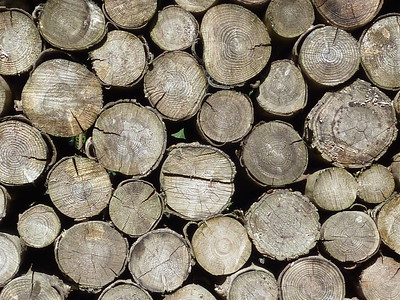
Avian Richness Increases following Group-Selection Timber Harvests in West-Central New Hampshire
2021
Summary
Following timber harvests, this study observed changes in avian richness and abundance and vegetation structure at both sites compared to preharvest conditions. It also documented differences in arthropod diversity and habitat usage of 6 target songbird species at the Canaan, NH site 8- and 9-years after harvest.
Key Personnel & Institutions
Institutions: Plymouth State University
Location
Canaan
Resource Type
Article
Tags
Topic Tags
conservation, management, ecosystem services, drivers, wildlife and habitat, landscape pattern and connectivity
Purpose Tags
conservation, management
Citation
Reitsma L., "Avian richness increases following group-selection timber harvests in west-central New Hampshire", 27 April, 2021, Accessed from: https://www.proquest.com/openview/73569ff6b02c123e547c7d86832feca3/1?pq-origsite=gscholar&cbl=18750&diss=y
Source Link
Bumble bee (Bombus) distribution and diversity in Vermont, USA: a century of change
1915 to 2018
Summary
Certain bumble bee species, all of which are important pollinators in temperate ecosystems, have been declining due to factors including habitat loss, parasites, pesticides, and climate change. Conservation efforts for these species are difficult, as there is a lack of quantitative data on historical abundance and distrubution. The authors, with the help of 53 citizen scientists, conducted bumble bee surveys in Vermont and identified and digitized bumble bee speciments in 13 collections, showing a trend of srong decline in species abundance, diversity, and richness.
Key Personnel & Institutions
People: Kent McFarland , Leif Richardson , Spencer Hardy, Sara Zahendra
Institutions: University of Vermont , Vermont Center for Ecostudies, VCE , Middlebury College
Location
Vermont
Resource Type
Article
Tags
Topic Tags
conservation, management, drivers, wildlife and habitat, landscape pattern and connectivity
Purpose Tags
conservation, management, education
Citation
No citation available.
Source Link
https://www.sciencedirect.com/science/article/pii/S0169204618311927
Fitter frogs from polluted ponds: The complex impacts of human?altered environments
2014 to 2018
Summary
Contrary to expectations, this study reports surprising benefits experienced by amphibian populations breeding and dwelling in proximity to roads. It shows that roadside populations of the wood frog, Rana sylvatica, exhibit better locomotor performance and higher measures of traits related to fitness compared with frogs from less disturbed environments located further away from roads. These results contrast previous evidence for maladaptation in roadside populations of wood frogs studied elsewhere. These results indicate that altered habitats might not be unequivocally detrimental and at times might contribute to metapopulation success. While the frequency of such beneficial outcomes remains unknown, their occurrence underscores the complexity of inferring consequences of environmental change.
Key Personnel & Institutions
People: Steven P. Brady , Francisco J. Zamora_Camacho , Fredrik A. A. Eriksson , Debora Goedert , Mar Comas , Ryan Calsbeek
Institutions: Dartmouth College , Estación Biológica de Doñana (EBD‐CSIC)
Location
Vermont, Norwich
Resource Type
Article
Tags
amphibians
Topic Tags
conservation, methods, management, wildlife and habitat, landscape pattern and connectivity
Purpose Tags
conservation, management, education
Citation
Brady, S. P.; Zamora-Camacho, F. J.; Eriksson, F. A. A.; Goedert, D.; Comas, M.; Calsbeek, R. "Fitter Frogs From Polluted Ponds: The Complex Impacts of Human-Altered Environments." Ecolutionary Applications, Ecolutionary Approaches to Environmental. Biomedical and Socio-Economic Issues, vol. 12, issue 7, Special issue: Maladaptation in Applied Evolution, 12 December 2018, pp. 1360-1370. Accessed from https://doi.org/10.1111/eva.12751
Source Link
Forest Core BioMap2
2010
Summary
No additional information available.
Key Personnel & Institutions
Institutions: Massachusetts Division of Fisheries and Wildlife, The Natural Heritage and Endangered Species Program
Location
Massachusetts
Resource Type
Report
Tags
forests
Topic Tags
conservation, wildlife and habitat, landscape pattern and connectivity
Purpose Tags
conservation
Citation
"Forest Core, BioMap2 Components", 2010, Natural Heritage and Endangered Species Program, Massachusetts Division of Fisheries and Wildlife, Accessed from (https://www.mass.gov/doc/forest-core/download)
Source Link
Protecting Habitat in Downeast Maine
2005 to 2014
Summary
More than half of the Maine Woods has changed ownership in the last two decades, and natural landscapes are threatened with conversion to small private landholdings. In response to these threats, local community leaders and conservation organizations had begun forming partnerships aimed at protecting these landscapes on a massive scale.
Key Personnel & Institutions
Institutions: National Fish and WIldlife Foundation
Location
Maine
Resource Type
Article
Tags
protection
Topic Tags
conservation, wildlife and habitat, landscape pattern and connectivity
Purpose Tags
conservation, policy
Citation
"Protecting Habitat in Downeast Maine" National Fish And Wildlife Foundation, Accessed from (https://www.nfwf.org/media-center/featured-stories/protecting-habitat-downeast-maine)
Source Link
https://www.nfwf.org/media-center/featured-stories/protecting-habitat-downeast-maine
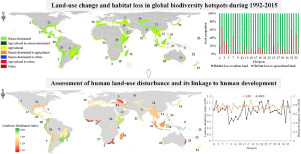
Hotspots of land-use change in global biodiversity hotspots
2021
Summary
Land-use conversion from natural areas to agriculture and human settlements is causing global biodiversity loss. The authors proposed a human land-use disturbance index (LDI) to assess habitat loss and fragmentation in global biodiversity hotspots from 1992 to 2015. Negative (LDI > 1) and positive (LDI < 1) impacts on habitat were observed in 30 and 6 biodiversity hotspots, respectively. The hotspots with a relatively small proportional area of nature-dominated land were more likely to face habitat loss.
Key Personnel & Institutions
Not available.Location
Vermont, Massachusetts, Maine, New York, New Hampshire, Connecticut, Rhode Island, New England
Resource Type
Article
Tags
Topic Tags
conservation, management, drivers, wildlife and habitat, landscape pattern and connectivity
Purpose Tags
conservation, management
Citation
Kong X., Zhou Z., Jiao L., "Hotspots of land-use change in global biodiversity hotspots", Resources, Conservation and Recycling, v. 174, November 2021, https://doi.org/10.1016/j.resconrec.2021.105770
Source Link
https://www.sciencedirect.com/science/article/abs/pii/S0921344921003797

The Potential Role of Nematode Parasites in Wildlife Decline: Evidence from Allegheny Woodrats (Neotoma magister), Northern Flying Squirrels (Glaucomys sabrinus) and Now the Eurasian Red Squirrel (Sciurus vulgaris)
2022
Summary
No additional information available.
Key Personnel & Institutions
Not available.Location
Vermont, Massachusetts, Maine, New York, New Hampshire, Connecticut, Rhode Island, New England
Resource Type
Article
Tags
Topic Tags
conservation, wildlife and habitat, landscape pattern and connectivity
Purpose Tags
conservation
Citation
Mahan C., Steele M., "The Potential Role of Nematode Parasites in Wildlife Decline: Evidence from Allegheny Woodrats (Neotoma magister), Northern Flying Squirrels (Glaucomys sabrinus) and Now the Eurasian Red Squirrel (Sciurus vulgaris)", 3 March 2022, 10.5772/intechopen.103119
Source Link
New England and Northern New York Forest Ecosystem Vulnerability Assessment and Synthesis: A Report from the New England Climate Change Response Framework Project
2018
Summary
This assessment evaluates the vulnerability of forest ecosystems across the New England region (Connecticut, Maine, Massachusetts, New Hampshire, northern New York, Rhode Island, and Vermont) under a range of future climates. We synthesizes and summarizes information on the contemporary landscape, provided information on past climate trends, and described a range of projected future climates. This information was used to parameterize and run multiple vegetation impact models, which provided a range of potential vegetative responses to climate. Finally, these results were brought before a multidisciplinary panel of scientists and natural resource professionals familiar with the forests of this region to assess ecosystem vulnerability through a formal consensus-based expert elicitation process.
Key Personnel & Institutions
People: Anthony D'Amato , Frank Thompson , Maria K. Janowiak , Christopher W. Swanson , Louis Iverson , William D. Dijak , Stephen Matthews , Matthew P. Peters , Anantha M. Prasad
Institutions: United States Department of Agriculture (USDA), Forest Service
Location
New York, New England
Resource Type
Report
Tags
Topic Tags
conservation, methods, management, ecosystem services, wildlife and habitat
Purpose Tags
conservation, management, education
Citation
No citation available.
Source Link
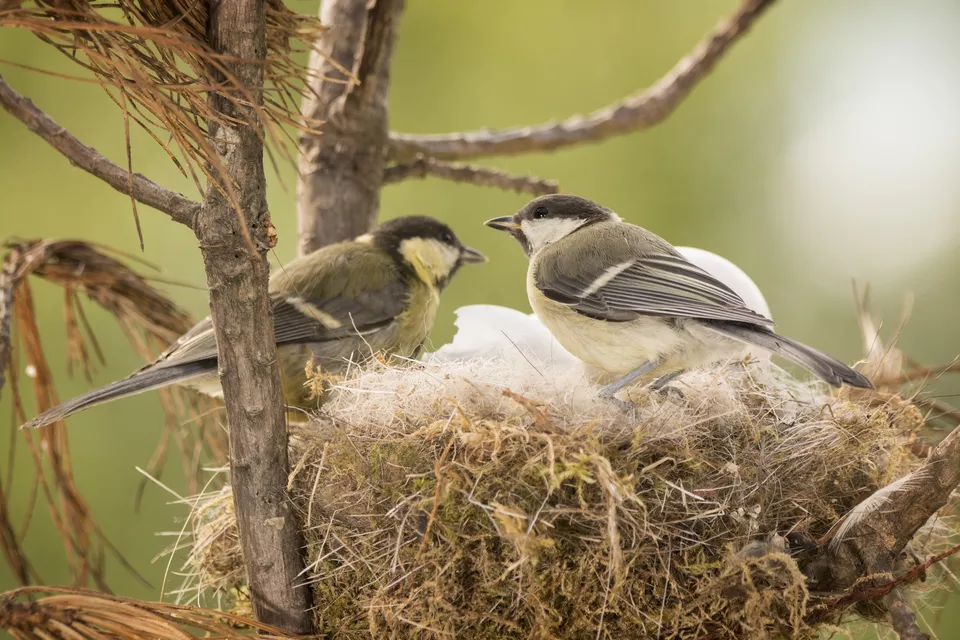
Artificial Nest Predation Dynamics Along a Forest Fragmentation Gradient: A Preliminary Analysis
2008
Summary
The objective of this study was to examine artificial nest predation dynamics along a fragmentation gradient (farm woodlots, logged forest stands and contiguous forest) in the conifer dominated Boreal Mixedwood.
Key Personnel & Institutions
People: Keith Hobson, Erin Bayne
Institutions: Canadian Wildlife Service, Saskatoon , University of Saskatchewan, Department of Biology
Location
Vermont, Massachusetts, Maine, New York, New Hampshire, Connecticut, Rhode Island, New England
Resource Type
Article
Tags
predation, artificial nests
Topic Tags
conservation, management, wildlife and habitat, landscape pattern and connectivity
Purpose Tags
conservation, management
Citation
Bayne, E., Hobson, K. "Artificial Nest Predation Dynamics Along a Forest Fragmentation Gradient: A Preliminary Analysis" Journal of Sustainable Forestry, V. 5, 1997, Issue 1-2, 17 October 2008. https://doi.org/10.1300/J091v05n01_06
Source Link
Fragmentation: Hartford, Vermont
2019
Summary
This article focuses on giving information on fragmentation, how it impacts wildlife habitat, the different landscape patterns and their faults and ways to combat these issues.
Key Personnel & Institutions
Institutions: Hartford Conservation Comission
Location
Vermont
Resource Type
Poster
Tags
Topic Tags
conservation, wildlife and habitat, landscape pattern and connectivity
Purpose Tags
conservation, education
Citation
"Fragmentation: Hartford, Vermont" Hartford Conservation Commission, Accessed from https://www.hartford-vt.org/DocumentCenter/View/187/Fragmentation-PDF
Source Link
https://www.hartford-vt.org/DocumentCenter/View/187/Fragmentation-PDF
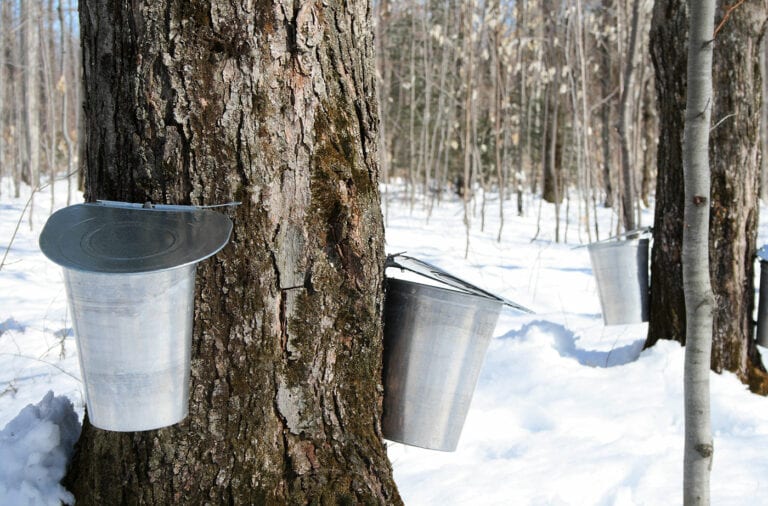
How Climate Change is Impacting Maine's Forests & Industries that Depend on Them
2020
Summary
This article is an overview of the impacts of climate change on many aspects of Maine's forests. These changes are climate, forests and wildlife, global warming, air pollution, etc.
Key Personnel & Institutions
Not available.Location
Maine
Resource Type
Article
Tags
Topic Tags
conservation, ecosystem services, drivers, wildlife and habitat
Purpose Tags
conservation
Citation
Strum M., "How Climate Change is Impacting Maine's Forests & Industries that Depend on Them" Forests and Wildlife, 10 September 2020, Accessed from: https://www.nrcm.org/blog/climate-change-impacting-maine-forests/
Source Link
https://www.nrcm.org/blog/climate-change-impacting-maine-forests/
The environmental consequences of forest fragmentation in the Western Maine Mountains
2018
Summary
The author explains forest fragmentation in the context of Maine's forests, detailing drivers and impacts of fragmentation on Maine's landscape and wildlife.
Key Personnel & Institutions
People: Janet McMahon
Institutions: Maine Mountain Collaborative
Location
Maine
Resource Type
Report
Tags
Topic Tags
conservation, management, drivers, wildlife and habitat, landscape pattern and connectivity
Purpose Tags
conservation, education
Citation
McMahon, J. (2018). The Environmental Consequences of FOREST FRAGMENTATION in the Western Maine Mountains.
Source Link
Special Features Overlay Zones (Section 208)
2013
Summary
The Special Features Overlay Zones are superimposed over all underlying zoning districts, and include Wetlands, Deer Wintering Areas, Wellhead Protection Areas, Meadowlands, Steep Slopes, Ridgelines, and Wildlife Corridors.
Key Personnel & Institutions
Institutions: Vermont Natural Resources Council
Location
Vermont
Resource Type
Policy
Tags
landuse planning, community based planning, habitat conservation
Topic Tags
ecosystem services, wildlife and habitat
Purpose Tags
management, policy
Citation
Vermont Natural Resources Council. (n.d.) Section 208: Special Features Overlay Zones. Available at http://vnrc.org/wp-content/uploads/typo3/Publications/SECTION 208.pdf
Source Link
https://vnrc.org/wp-content/uploads/2019/11/Special-Features-Overlay-Zone.pdf
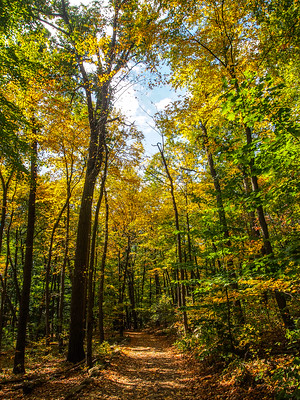
Is Forest Fragmentation a Management Issue in the Northwest?
1988
Summary
This is a compilation of papers from the technical session sponsored by the Wildlife and Fish Ecology Working Group Society of American Foresters' Annual Convention on October 19, 1988 in Rochester, NY.
Key Personnel & Institutions
People: Richard DeGraaf , William M. Healy
Location
Rochester
Resource Type
Report
Tags
Topic Tags
conservation, management, wildlife and habitat
Purpose Tags
conservation, management
Citation
DeGraaf R. M., Healy W. M., "Is Forest Fragmentation a Management Issue in the Northwest?", 19 October 1988, Accessed from: https://books.google.com/books?hl=en&lr=&id=vIQOyw-uScUC&oi=fnd&pg=PA1&dq=forest+fragmentation+northeast+us&ots=fA1aWv6y-O&sig=83_lkpSRZeV_qKnoMDm_Z7RBg8w#v=onepage&q&f=false
Source Link
Physiological responses by lagomorphs to resource limitations imposed by habitat fragmentation: implications to condition-sensitive predation
1994
Summary
No additional information available.
Key Personnel & Institutions
People: Peter Vickery , Malcolm Hunter, Scott Melvin
Institutions: University of Maine , Maine Department of Inland Fisheries & Wildlife
Location
Cumberland, Hancock, Lincoln, Sagadahoc, Waldo, Washington, York
Resource Type
Article
Tags
grasslands, breeding birds, early successional
Topic Tags
conservation, management, ecosystem services, wildlife and habitat
Purpose Tags
conservation, education
Citation
Vickery, P. D., Hunter, M. L., & Melvin, S. M. (1994). Effects of Habitat Area on the Distribution of Grassland Birds in Maine. Conservation Biology. Retrieved from https://onlinelibrary.wiley.com/doi/abs/10.1046/j.1523-1739.1994.08041087.x
Source Link
https://onlinelibrary.wiley.com/doi/abs/10.1046/j.1523-1739.1994.08041087.x
A global analysis of traits predicting species sensitivity to habitat fragmentation
2008 to 2018
Summary
The authors used generalized linear mixed-effect models in an information theoretic framework to assess the factors that explained species presence in remnant habitat patches. They found that the size of remnant habitat patches was the most important driver of species presence indicating that habitat relationships were more important than life history characteristics in predicting the effects of fragmentation.
Key Personnel & Institutions
People: Douglas Keinath, Daniel Doak, Karen Hodges
Institutions: University of Colorado , US Fish and Wildlife Service , The University of British Columbia, Department of Biology
Location
New York, New England
Resource Type
Article
Tags
birds, vertebrates, fragmentation, patch size
Topic Tags
drivers, wildlife and habitat
Purpose Tags
education
Citation
Keinath, D.A., Doak, D.F., Hodges, K.E., Prugh, L.R., Fagan, W., Sekercioglu, C.H., Buchart, S.H. and Kauffman, M. (2017). A global analysis of traits predicting species sensitivity to habitat fragmentation. Global Ecology and Biogeography, 26(1), pp.115-127.
Source Link
Notheast Wilderness Trust
Summary
The need to permanently protect wild lands and waters has never been greater. The Northeast Wilderness Trust is meeting this challenge, working with private landowners and other partners to save wildlife habitat from the Adirondacks to Maine.
Key Personnel & Institutions
Institutions: Northeast Wilderness Trust
Location
Montpelier
Resource Type
Website
Tags
conservation, northeastern forests
Topic Tags
conservation, wildlife and habitat
Purpose Tags
conservation
Citation
Northeast Wilderness Trust. (n.d.). Available athttp://www.newildernesstrust.org/
Source Link
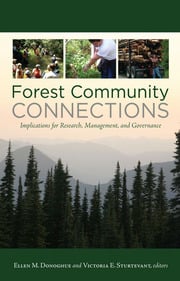
Forest Community Connections
2008
Summary
Focusing primarily on the United States, this book examines the ways that social scientists work with communities, their role in facilitating social learning, informing policy decisions, and contributing to community well being.
Key Personnel & Institutions
People: Ellen Donoghue , Victoria Sturtevant
Institutions: United States Department of Agriculture (USDA), Forest Service
Location
Vermont, Massachusetts, Maine, New York, New Hampshire, Connecticut, Rhode Island, New England
Resource Type
Book
Tags
communities
Topic Tags
conservation, methods, ecosystem services, planning
Purpose Tags
conservation, management
Citation
Donoghue, E., Sturtevant, V. "Forest Community Connections: Implications for Research, Management, and Governance". First edition, 8 December, 2008. Routledge. https://doi.org/10.4324/9781936331451
Source Link
Effects of small forest openings on the breeding bird community in a Vermont hardwood forest
1991 to 1992
Summary
The authors examined the response of a forest bird community to the presence of small openings created by patch clear-cutting 0.4-ha plots within an extensive northern hardwood forest. Overall, bird species diversity increased in forested areas containing small openings due to the addition of edge and open- area nesters, but several forest-interior species were adversely affected by the presence of openings.
Key Personnel & Institutions
People: Dave Capen , Stephen Germaine, Stephen Vessey, Stephen Germaine , Stephen Vessey
Institutions: University of Vermont, Rubenstein School of Environment and Natural Resources , Bowling Green State University, Department of Biological Sciences
Location
No location information available
Resource Type
Article
Tags
birds, forest management, wildlife, fragmentation
Topic Tags
Purpose Tags
Citation
Germaine, S.S., Vessey, S.H. & Capen, D.E. (1997). Effects of small forest openings on the breeding bird community in a Vermont hardwood forest. Condor, pp.708-718.
Source Link
https://sora.unm.edu/sites/default/files/journals/condor/v099n03/p0708-p0718.pdf
A spatially hierarchical approach to systematic reserve design in the northern forest of New England
2001 to 2006
Summary
The author employed a hierarchically structured planning unit framework to a heuristic reserve design model for the northern forest of New England. Results of the reserve design models and landscape metrics indicated that a hierarchically structured planning-unit framework may lessen the trade-off between reserve connectivity and cost efficient feature representation, when compared to the three single-scale schemes.
Key Personnel & Institutions
People: Mischa Hey
Institutions: University of Vermont, Wildlife and Fisheries Biology
Location
New England
Resource Type
Article
Tags
community patterns, modeling, wildlife, connectivity, parcelization
Topic Tags
methods, ecosystem services, landscape pattern and connectivity
Purpose Tags
conservation, education
Citation
Hey, M.J. (2006). A Spatially Hierarchical Approach to Systematic Reserve Design in the Northern Forest of New England. MS Thesis, Wildlife and Fisheries Biology, The University of Vermont, Burlington, Vermont. Available at http://primo.uvm.edu/primo-explore/fulldisplay?vid=UVM&docid=UVM_VOYAGER1543535&context=L&search_scope=uvm_voyager&lang=en_US
Source Link
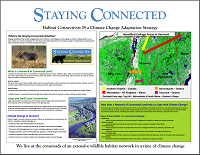
Habitat connectivity is a climate change adaptation strategy
2012
Summary
This poster explains what the Staying Connected Initiative and how habitat connectivity can help combat climate change.
Key Personnel & Institutions
Institutions: Staying Connected Initiative
Location
Vermont, Maine, New York, New Hampshire
Resource Type
Poster
Tags
climate change mitigation, wildlife habitat
Topic Tags
conservation, ecosystem services, landscape pattern and connectivity
Purpose Tags
conservation, management
Citation
Staying Connected Initiative. (2012). Staying Connected: Habitat Connectivity is a Climate Change Adaptation Strategy. Available at http://www.stayingconnectedinitiative.org/assets/habitat_connectivity_is_climate_change_adaptation_poster_2012.pdf
Source Link
R.I. Land Conservationists Worry Power Plant Will Fragment Forest, Harm Species
2017
Summary
This short article on WBUR outlines the problems with light pollution and forest fragmentation in the northeastern US.
Key Personnel & Institutions
People: Bill Eccleston
Institutions: Rhode Island Public Radio, New England News Collaborative
Location
Rhode Island
Resource Type
Website
Tags
wildlife, development, connectivity, corridor, land conservation
Topic Tags
conservation, drivers
Purpose Tags
conservation, education
Citation
Brookins, A. (2017, October 9). R.I. Land Conservationists Worry Power Plant Will Fragment Forest, Harm Species. WBUR News. Available at http://www.wbur.org/news/2017/10/09/rhode-island-power-plant-conservationists
Source Link
http://www.wbur.org/news/2017/10/09/rhode-island-power-plant-conservationists
New Hampshire Towns of Gorham And Milan Expand Protection For Community Forests
2020
Summary
This article provides information on recent land purchases that will help to augment town revenue, while ensuring clean drinking water, protecting wildlife habitat, and providing enhanced recreational opportunities
Key Personnel & Institutions
People: Ann Simonelli
Institutions: The Conservation Fund
Location
Gorham, Milan, New Hampshire
Resource Type
Article
Tags
Topic Tags
conservation, ecosystem services, wildlife and habitat, landscape pattern and connectivity
Purpose Tags
conservation, management
Citation
Simonelli, A. "New Hampshire Towns of Gorham And Milan Expand Protection For Community Forests" The Conservation Fund, August 3, 2020. Accessed from (https://www.conservationfund.org/impact/press-releases/2278-community-forests-expand-protection-in-new-hampshire)
Source Link
BioMap2: Conserving the Biodoversity of Massachusetts in a Changing World
2010
Summary
No additional information available.
Key Personnel & Institutions
People: Henry Woolsey , Andrew Finton , James DeNormandie
Institutions: The Nature Conservancy , Massachusetts Audubon , Massachusetts Division of Fisheries and Wildlife, The Natural Heritage and Endangered Species Program
Location
Massachusetts
Resource Type
Report
Tags
Topic Tags
conservation, methods, management, planning, wildlife and habitat, landscape pattern and connectivity
Purpose Tags
conservation, management, education, policy
Citation
Woolsey, H.; Finton, A.; DeNormandie, J.; "BioMap2: Conserving the Biodoversity of Massachusetts in a Changing World" 2010, Accessed from https://www.mass.gov/files/documents/2016/08/wi/biomap2-summary-report.pdf
Source Link
https://www.mass.gov/files/documents/2016/08/wi/biomap2-summary-report.pdf
2008
Summary
Information about the New England cottontail and how you can manage your land for habitat is included in this guide.
Key Personnel & Institutions
People: Margaret Arbuthnot
Institutions: United States Department of Agriculture (USDA), Natural Resources Conservation Service , United States Fish and Wildlife Service, Maine Department of Inland Fisheries and Wildlife, Environmental Defense Fund
Location
Vermont, Massachusetts, Maine, New York, New Hampshire, Connecticut, Rhode Island, New England
Resource Type
Article
Tags
landowners, new england cottontail
Topic Tags
conservation, methods, management, ecosystem services, wildlife and habitat, landscape pattern and connectivity
Purpose Tags
conservation, management, education
Citation
No citation available.
Source Link
https://www.edf.org/sites/default/files/8828_New-England-Cottontail-Guide_0.pdf
How well do proxy species models inform conservation of surrogate species?
2021
Summary
This study evaluated the North Atlantic Landscape Conservation Cooperative (NALCC) proxy models of LC and represented species framework across 13 states in the northeastern United States from Virginia to Maine. It validated a suite of questions related to co-occurrence of proxy and represented species with a compilation of independent datasets.
Key Personnel & Institutions
People: Scott Schwenk , Daniel Harrison, Cynthia Loftin, Cynthia Loftin , Petra Wood , Zachary G. Loman , William V. Deluca
Institutions: North Atlantic Landscape Conservation Cooperative, Maine Cooperative Fish and Wildlife Research Unit, University of Massachusetts, Amherst, Department of Environmental Conservation , Maine Department of Wildlife, Fisheries, and Conservation Biology
Location
No location information available
Resource Type
Article
Tags
Topic Tags
conservation, wildlife and habitat, landscape pattern and connectivity
Purpose Tags
conservation
Citation
No citation available.
Source Link
https://link.springer.com/article/10.1007/s10980-021-01294-8
How well do proxy species models inform conservation of surrogate species?
2021
Summary
This study evaluated the North Atlantic Landscape Conservation Cooperative (NALCC) proxy models of LC and represented species framework across 13 states in the northeastern United States from Virginia to Maine. It validated a suite of questions related to co-occurrence of proxy and represented species with a compilation of independent datasets.
Key Personnel & Institutions
People: Scott Schwenk , Daniel Harrison, Cynthia Loftin, Petra Wood , Zachary G. Loman , William V. Deluca
Institutions: University of Maine , University of Massachusetts Amherst , Maine Cooperative Fish and Wildlife Research Unit, Maine Department of Wildlife, Fisheries, and Conservation Biology , West Virginia University, West Virginia Cooperative Fish and Wildlife Research Unit
Location
Vermont, Massachusetts, Maine, New York, New Hampshire, Connecticut, Rhode Island, New England
Resource Type
Article
Tags
Topic Tags
conservation, wildlife and habitat, landscape pattern and connectivity
Purpose Tags
conservation
Citation
No citation available.
Source Link
https://link.springer.com/article/10.1007/s10980-021-01294-8
Managing Forests for Trees and Birds in Massachusetts
2016
Summary
Massachusetts has more than 3 million acres of forested land, and about 75% of that land is privately owned. This means that private landowners are positioned to be the most significant contributors to creating and maintaining habitat for forest birds and other wildlife.
Key Personnel & Institutions
Institutions: Massachusetts Audubon
Location
Massachusetts
Resource Type
Report
Tags
timber harvest, coarse woody debris, leaf litter, understory vegetation, forest management, forest birds, forest patch
Topic Tags
conservation, management, ecosystem services, wildlife and habitat
Purpose Tags
conservation, management
Citation
Massachusetts Audubon Society, Inc. (2018). Managing Forests for Trees and Birds in Massachusetts. Available at https://www.google.com/url?sa=t&rct=j&q=&esrc=s&source=web&cd=3&ved=2ahUKEwjig7OPpazeAhXRmeAKHeTiA7gQFjACegQIBhAC&url=https://www.mass.gov/files/documents/2018/04/24/ma-management-guide-for-web.pdf&usg=AOvVaw39Tt0wBr4OOXZdh5P-NIUT
Source Link
https://www.massaudubon.org/our-conservation-work/wildlife-research-conservation/forest-birds
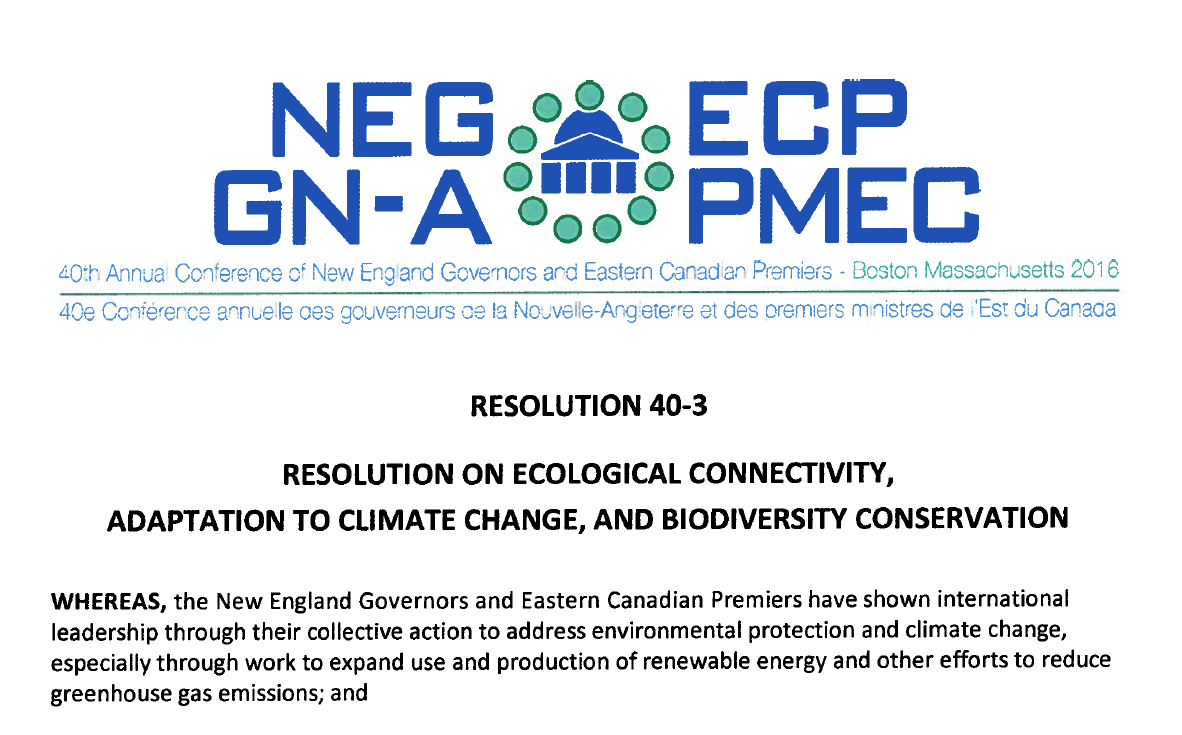
Resolution on Ecological Connectivity, Adaption to Climate Change, and Biodiversity Conservation
2016
Summary
This resolution outlines the many ways that ecological connectivity supports climate change resilience, forest health and wildlife health goals in the New England states and eastern Canadian provinces, and directs agencies within these jurisdictions to elevate ecological connectivity in the natural resource and transportation planning work.
Key Personnel & Institutions
Not available.Location
New England
Resource Type
Policy
Tags
biodiversity, climate change resilience, landscape connectivity, transportation
Topic Tags
planning, wildlife and habitat, landscape pattern and connectivity
Purpose Tags
policy
Citation
New England Governors and Eastern Canadian Premiers. 2016. Resolution 40-3 : Resolution on Ecological Connectivity, Adaptation to Climate Change, and Biodiversity Conservation
Source Link
https://www.coneg.org/wp-content/uploads/2019/01/40-3-Ecological-Connectivity-EN.pdf
2019
Summary
The article discusses the New England Clean Energy Connect (NECEC) Powerline and the impacts this powerline could have on sensitive wildlife, as the porposed powerline path would cut the right-of-way through previously unfragmented swaths of forest in Maine.
Key Personnel & Institutions
People: Lori Valigra
Institutions: Bangor Daily News
Location
Maine
Resource Type
Website
Tags
Topic Tags
conservation, wildlife and habitat, landscape pattern and connectivity
Purpose Tags
conservation, education
Citation
No citation available.
Source Link
RI Coverts Project Introduction
2005 to 2018
Summary
Rhode Island Resource Conservation and Development Area Council Inc. started the Rhode Island Coverts Program in Rhode Island to help woodland owners conserve their land and protect wildlife habitats in an effort to sustain forests and prevent further fragmentation.
Key Personnel & Institutions
Institutions: Rhode Island Resource Conservation & Development Area Council, Inc.
Location
Rhode Island
Resource Type
Website
Tags
Topic Tags
conservation, methods, management, wildlife and habitat
Purpose Tags
conservation, management, education
Citation
Rhode Island Resource Conservation and Development Area Council, Inc. "Rhode Island Coverts Project Introduction" 2018, Accessed from http://www.rircd.org/covertsprojectintroduction.htm
Source Link
Resource management to rural residential: Tools to monitor parcelization in the Catskill Region of New York State
2014
Summary
This study documents the change in private, rural parcel dynamics from 2004 to 2010 in the Catskill region at the township scale. A parcel density map was developed to observe trends in distribution of small parcels.
Key Personnel & Institutions
People: David Newman , Rene Germain , Cassandra N. Pinkoski , Avik Chatterjee , S. Scott Shannon
Institutions: The State University of New York (SUNY)
Location
Catskill, New York
Resource Type
Report
Tags
catskills
Topic Tags
conservation, planning, landscape pattern and connectivity
Purpose Tags
conservation, management
Citation
Pinkoski, C. N. "Resource management to rural residential: Tools to monitor parcelization in the Catskill Region of New York State." April 2014, Accessed from https://search.proquest.com/openview/5f9644aa11e12e245f58cd97dc0d6a81/1?pq-origsite=gscholar&cbl=18750&diss=y
Source Link
Trends in Massachusetts Forests: A Half-century of Change
1950 to 2002
Summary
An overview of Massachusetts forests quality based on data from the USDA Forest Service periodic inventories.
Key Personnel & Institutions
People: Richard H. Widmann
Institutions: United States Department of Agriculture (USDA), Forest Service, Northern Research Station , Massachusetts Division of Fisheries and Wildlife
Location
Massachusetts
Resource Type
Book
Tags
trends
Topic Tags
conservation, methods, ecosystem services, planning, wildlife and habitat
Purpose Tags
conservation, management, education
Citation
Widmann, R.H. 2002. "Trends in Massachusetts Forests: A Half-century of Change." Accessed From (https://books.google.com/books?id=TjKI0sqcTw4C&printsec=frontcover#v=onepage&q&f=false)
Source Link
Is Forest Fragmentation a Management Issue in the Northeast?
1988 to 1990
Summary
This report presents six papers from the technical session sponsored by the Wildlife and Fish Ecology Working Group, Society of American Foresters' Annual Convention, October19, 1988, Rochester, New York. These papers are used to determine the effects of forest fragmentation on the northeastern region of the United States.
Key Personnel & Institutions
People: Richard DeGraaf , William M. Healy
Institutions: United States Department of Agriculture (USDA), Forest Service
Location
New York, New England
Resource Type
Report
Tags
Topic Tags
conservation, methods, wildlife and habitat, landscape pattern and connectivity
Purpose Tags
conservation, education
Citation
DeGraaf, R. M.; Healy, W. M. "Is Forest Fragmentation a Management Issue in the Northeast?" 1990, Accessed from https://www.fs.fed.us/ne/newtown_square/publications/technical_reports/pdfs/scanned/gtr140.pdf
Source Link
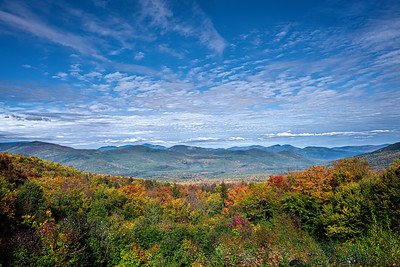
Birds at Log Landings in the White Mountain National Forest, New Hampshire
1989 to 1990
Summary
Birds were surveyed at log landings and forest/clearcut borders in the hardwood forest type of the White Mountain National Forest (WMNF) of New Hampshire during the breeding seasons of 1989 and 1990 to examine the possibility of log landings functioning as wildlife openings.
Key Personnel & Institutions
People: James W. Tucker , David P. Olson
Institutions: University of New Hampshire, Department of Natural Resources and the Environment, Auburn University, School of Forestry and Wildlife Sciences , Auburn University, School of Forestry and Wildlife Sciences
Location
New Hampshire
Resource Type
Article
Tags
white mountain national forest
Topic Tags
conservation, methods, management, ecosystem services, wildlife and habitat
Purpose Tags
conservation, management
Citation
Tucker, J. W., Jr., Olson, D. P. "Birds at Log Landings in the White Mountain National Forest, New Hampshire" Maine Naturalist 2, no. 2 (1994): 91-104. Accessed August 30, 2021. doi:10.2307/3858252.
Source Link

Growing Forests "a rare piece of good news in climate science"
2010 to 2022
Summary
Boston University researchers Lucy Hutyra and Luca Morreale, along with scientists from Harvard Forest and The City University of New York, find that trees along the edges of temperate forests grow faster and are denser as a result of fragmentation.
Key Personnel & Institutions
People: Gina Mantica
Institutions: Boston University
Location
Vermont, Massachusetts, Maine, New Hampshire, Connecticut, Rhode Island, New York
Resource Type
Article
Tags
Topic Tags
conservation, management, drivers, landscape pattern and connectivity
Purpose Tags
conservation, management
Citation
Mantica G., "Growing forests "a rare piece of good news in climate science"", Boston University, 6 January, 2022. Accessed from: https://www.bu.edu/hic/2022/01/06/growing-forests-a-rare-piece-of-good-news-in-climate-science/
Source Link
https://www.bu.edu/hic/2022/01/06/growing-forests-a-rare-piece-of-good-news-in-climate-science/
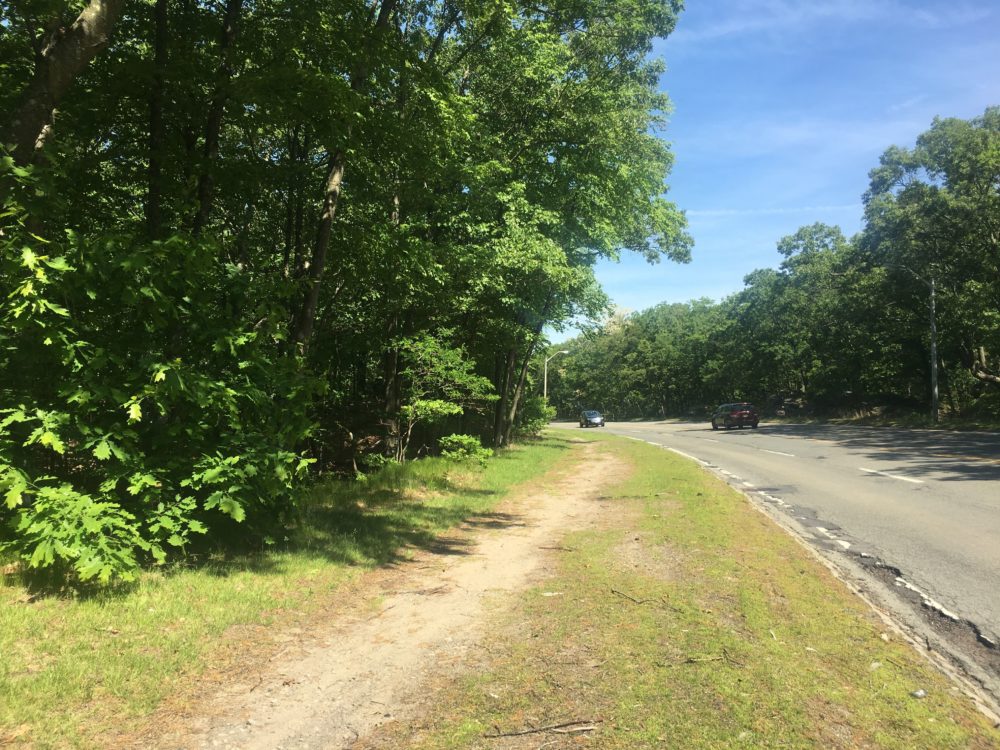
Urban forests may store more carbon that we though, study finds
2022
Summary
This article explains the findings of two studies from Boston University which found that trees around the edges of urban forests grow faster and the soil gives off less carbon dioxide than scientists expected.
Key Personnel & Institutions
People: Barbara Moran
Institutions: WBUR News
Location
Vermont, Massachusetts, Maine, New York, New Hampshire, Connecticut, Rhode Island
Resource Type
Article
Tags
Topic Tags
conservation, ecosystem services, drivers, landscape pattern and connectivity
Purpose Tags
conservation, management
Citation
Moran B., "Urban forests may store more carbon that we though, study finds", wbur, Boston University, Accessed from: https://www.wbur.org/news/2022/02/16/forest-fragments-northeast-us-climate-change-soil-respiration
Source Link
https://www.wbur.org/news/2022/02/16/forest-fragments-northeast-us-climate-change-soil-respiration
Forest fragmentation
2016
Summary
Report advocating for legislative action to keep forests intact.
Key Personnel & Institutions
People: Steven Sinclair
Institutions: Vermont Forest Parks and Recreation
Location
Vermont
Resource Type
Poster
Tags
resource management, wildlife, fragmentation, forest stewardship, land ownership
Topic Tags
management, ecosystem services
Purpose Tags
conservation, management, policy
Citation
Sinclair, S. (2016). Forest Fragmentation. Vermont Department of Forests, Parks, and Recreation.
Source Link
http://vtcommunityforestry.org/sites/default/files/pictures/arbor_day_2016_frag.pdf
Community strategies for Vermont's forests and wildlife: a guide for local action
2013
Summary
No additional information available.
Key Personnel & Institutions
Institutions: Vermont Natural Resources Council , Front Porch Community Planning and Design
Location
Vermont
Resource Type
Report
Tags
forest conservation, planning
Topic Tags
conservation, management
Purpose Tags
conservation, management
Citation
Fidel, J., McCarthy, K. and Murry, S. (2013). Community strategies for Vermont's forest and wildlife: a guide for local action. Vermont Natural Resources Council. Available at http://vnrc.org/wp-content/uploads/2013/08/VNRC-Forestland-Conservation-10-1-links.pdf
Source Link
http://vnrc.org/wp-content/uploads/2019/08/VNRC-Forestland-Conservation-10-1-links.pdf
Early Successional Forest Management on Private Lands as a Coupled Human and Natural System
2015 to 2019
Summary
A lot of forested land around the world is privately owned, making voluntary conservation on private lands crucial for preventing forest loss and mitigating forest fragmentation. Research has shown that social factors, such as economics, can be used for positive outcomes in forest management on private lands, and the authors sought to determine if forest management for the benefit of wildlife would have a similar impact on voluntary forest management.
Key Personnel & Institutions
People: Seth Lutter, Ashley Dayer, Amanda Rodewald, Darin McNeil, Jeffery Larkin
Institutions: Cornell University , Virginia Polytechnic Institute and State University, Indiana University of Pennsylvania, American Bird Conservancy
Location
No location information available
Resource Type
Article
Tags
Topic Tags
conservation, management, ecosystem services, wildlife and habitat
Purpose Tags
conservation, management
Citation
No citation available.
Source Link
Brown-Headed Cowbird Parasitism of Ovenbirds in Suburban Forest Fragments
1996 to 1999
Summary
Forest fragmentation in North America concerns many biologists because of its effects on wildlife populations. One group that has demonstrated particular sensitivity is Neotropical migrant birds. This reports on a study of Ovenbirds (Seiurus aurocapillus) in forest fragments in a suburban landscape in eastern Massachusetts to determine effects of cowbird parasitism on Ovenbird reproductive success.
Key Personnel & Institutions
People: Marta J. Hersek , Michelle A. Frankel , John A. Cigliano , Frederick E. Wasserman
Institutions: Boston University , Boston University, Department of Biology, Bradford College, Division of Natural Science
Location
Massachusetts
Resource Type
Article
Tags
populations, migratory birds
Topic Tags
conservation, management, planning, wildlife and habitat
Purpose Tags
conservation, management
Citation
No citation available.
Source Link
Improving Forest Ecosystem Health and Integrity
2018
Summary
In collaboration with the Vermont Community Foundation, the High Meadows Fund is inviting proposals for improving forest health and integrity in Vermont. The goal is to foster collaborative approaches to creating resilient, adaptable and healthy forests that pay dividends for wildlife, and contribute to the quality of life and cultural heritage of all Vermonters, including, but not limited to, those who depend on the forests for their livelihoods.
Key Personnel & Institutions
Institutions: High Meadows Fund, Vermont Community Foundation
Location
Vermont
Resource Type
Report
Tags
forest health
Topic Tags
conservation, ecosystem services, wildlife and habitat
Purpose Tags
conservation, education
Citation
"Improving Forest Ecosystem Health and Integrity." High Meadows Fund, Vermont Community Foundation, September 2018, Accessed from https://static1.squarespace.com/static/51b0ce25e4b0e8d244de368b/t/5b9bd996aa4a994465e2da21/1536940439305/2018-09-14+HMF+Forest+Health+and+Integrity+RFP.pdf
Source Link
The Efficacy of Habitat Conservation Assistance Programs for Family Forest Owners in Vermont
2021
Summary
This report qualitatively compared the efficacy of two types of conservation assistance programs available in Vermont: traditional programs offered through the Natural Resources Conservation Service, and a simplified, accelerated program offered through a non-governmental partnership called Woods, Wildlife, and Warblers. The results from this survey, which was sent to 2,122 randomly selected Vermont family forest owners and had a cooperation rate of 38%, are presented.
Key Personnel & Institutions
Institutions: University of Massachusetts Amherst
Location
Vermont
Resource Type
Article
Tags
Topic Tags
conservation, methods, management, wildlife and habitat
Purpose Tags
conservation, management, policy
Citation
Harrington M. E., "The Efficacy of Habitat Conservation Assistance Programs for Family Forest Owners in Vermont", 2021, University of Massachusetts, Amherst, https://orcid.org/0000-0002-9534-5698
Source Link
New York State forests may be at their peak: report
2015
Summary
The overall forest cover of New York State may have reached a peak, according to a new federal report. The U.S. Department of Agriculture's Forest Service conducted an inventory of forests in the state between 2008 and 2012 and found that while forested land is increasing in some areas, fragmentation and invasive pests are destroying trees elsewhere.
Key Personnel & Institutions
People: Joshua Learn
Institutions: The Wildlife Society
Location
New York
Resource Type
Article
Tags
emerald ash borer, forest service, forest fragmentation, hemlock woolly aldelgid, invasives
Topic Tags
management, landscape pattern and connectivity
Purpose Tags
education, policy
Citation
Learn, J. R. (2015, December 4). New York State Forests May Be at Their Peak. The Wildlife Society. Retrieved April 12, 2018, from http://wildlife.org/new-york-state-forests-may-be-at-their-peak-report/
Source Link
http://wildlife.org/new-york-state-forests-may-be-at-their-peak-report/
Forests on the Edge: Housing Development on America's Private Forests
2005
Summary
The Forests on the Edge project seeks to improve understanding of the processes and thresholds associated with increases in housing density in private forests and likely effects on the contributions of those forests to timber, wildlife and water resources. This report, the first in a series, displays and describes housing density projections on private forests, by watershed, across teh conterminous United States.
Key Personnel & Institutions
People: David Theobald, Ron McRoberts , Mark Nelson , Mike Eley , Mike Dechter , Susan Stein , Ralph J. Alig , Marcy Carr
Institutions: United States Department of Agriculture (USDA), Forest Service , United States Department of Agriculture (USDA), Forest Service, Pacific Northwest Research Station
Location
Vermont, Massachusetts, Maine, New York, New Hampshire, Connecticut, Rhode Island, New England
Resource Type
Book
Tags
Topic Tags
conservation, management, drivers, wildlife and habitat, landscape pattern and connectivity
Purpose Tags
conservation, management
Citation
Stein S. M., McRoberts R. E., Alig R. J., Nelson M. D., Theobald D. M., Eley M., Dechter M., Carr M., "Forests on the Edge: Housing Develipment on America's Private Forests", 2005, Accessed from: https://books.google.com/books?hl=en&lr=&id=o8OtV6o4zu4C&oi=fnd&pg=PP7&dq=forest+parcelization+rhode+island&ots=nta0vCllKs&sig=HA_FvLe6exX0NPfhAejChgzzEtc#v=onepage&q&f=false
Source Link
Using landscape metrics to characterize towns along an urban-rural gradient
2011 to 2021
Summary
No additional information available.
Key Personnel & Institutions
People: Kathleen Bell, Cynthia Loftin, Cynthia Loftin , Abigail Kaminski , Dana Marie Bauer , Erik J. Nelson
Institutions: Maine Cooperative Fish and Wildlife Research Unit, University of Maine, School of Economics , Clark University , Clark University, George Perkins Marsh Institute , Bowdoin College
Location
Vermont, Massachusetts, Maine, New Hampshire, Connecticut, Rhode Island, New England
Resource Type
Article
Tags
urban
Topic Tags
ecosystem services, wildlife and habitat, landscape pattern and connectivity
Purpose Tags
education
Citation
Kaminski, A., Bauer, D. M., Bell, K. P., Loftin, C. S., Nelson, E. J. "Using landscape metrics to characterize towns along an urban-rural gradient". Landscape Ecol, 2021. https://doi.org/10.1007/s10980-021-01287-7
Source Link
https://link.springer.com/article/10.1007/s10980-021-01287-7
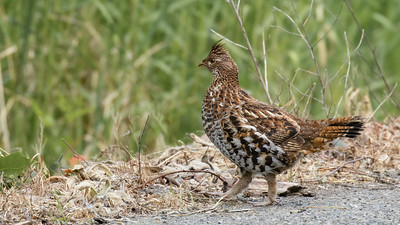
Habitat Selection and Home Range Size of Ruffed Grouse in Rhode Island
2005
Summary
Grouse are a species that require early successional forests. The populations of Grouse in New England have declined as the forests have matured. This study focuses on habitat selection and home range size of ruffed grouse in oak-hickory forests in Rhode Island.
Key Personnel & Institutions
People: Brian Tefft, Erik G. Endrulat , Scott R. McWilliams
Institutions: University of Rhode Island, Department of Natural Resources Science, Rhode Island Division of Fish & Wildlife, Rhode Island Natural History Survey
Location
Rhode Island
Resource Type
Article
Tags
habitat selection, home range, ruffed grouse
Topic Tags
conservation, drivers, wildlife and habitat, landscape pattern and connectivity
Purpose Tags
conservation
Citation
No citation available.
Source Link
Drivers and Causes of Zoonotic Diseases: An Overview
2021
Summary
No additional information available.
Key Personnel & Institutions
People: Mariana Napolitano Ferreira , Wendy Elliott , Rachel Goldon Kroner , Margaret F. Kinnaird , Paula R. Prist , Paula Valdujo , Mariana M. Vale
Institutions: World Wildlife Fund, Conservation International , Universidade de Sao Paulo, Instituto de Biociencias , Universidade Federal Do Rio de Janeiro
Location
Vermont, Massachusetts, Maine, New York, New Hampshire, Connecticut, Rhode Island, New England
Resource Type
Article
Tags
Topic Tags
management, drivers, wildlife and habitat, landscape pattern and connectivity
Purpose Tags
management, education
Citation
Ferreira, M.N., elliott, W., Kroner, R.G., kinnaird, M.F., Prist, P.R., Valdujo, P., Vale, M.M. "Drivers and Causes of Zoonotic Diseases: An Overview" Parks, Vol 21 (Special Issue, March 2021. Accessed from: https://www.researchgate.net/profile/Rachel-Golden-Kroner/publication/349990389_Drivers_and_causes_of_zoonotic_diseases_An_overview/links/607c5569907dcf667bab3d85/Drivers-and-causes-of-zoonotic-diseases-An-overview.pdf
Source Link
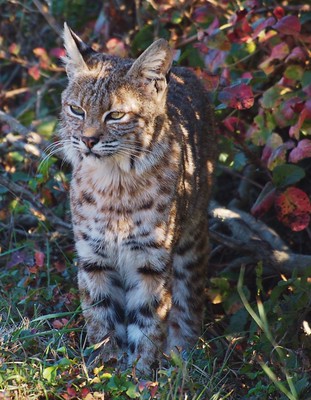
Population Genetics and Spatial Ecology of Bobcats (Lynx rufus) in a Landscape with a High Density of Humans in New England
2021
Summary
The objectives of this study were to better understand the spatial and population structure of Bobcats in Rhode Island. They specifically examined space use, resource selection, and population genetics.
Key Personnel & Institutions
Institutions: United States Department of Agriculture (USDA), Agricultural Research Service , University of Rhode Island, Department of Natural Resources Science, Rhode Island Department of Environmental Management, Rhode Island Division of Fish & Wildlife
Location
Rhode Island
Resource Type
Article
Tags
Topic Tags
conservation, management, drivers, wildlife and habitat, landscape pattern and connectivity
Purpose Tags
conservation, management
Citation
Mayer A. E., McGreevy J. Jr, Sullivan M. E., Brown C., Husband T. P., Gerber B. D., "Population Genetics and Spatial Ecology of Bobcats (Lynx rufus) in a Landscape with a High Density of Humans in New England", Northeastern Naturalist, 28(4):408-429 (2021), https://doi.org/10.1656/045.028.0401
Source Link

Transient persistence of bobcat (Lynx rufus) occurrence throughout a human-dominated landscape
2018 to 2020
Summary
The objectives of this study were to investigate the landscape occupancy dynamics of bobcats in a highly developed and densely populated region of the northeastern United States to evaluate the sensitivity of bobcat occurrence to natural and anthropogenic landscape features.
Key Personnel & Institutions
Institutions: University of Rhode Island, Department of Natural Resources Science, Rhode Island Department of Environmental Management, Rhode Island Division of Fish & Wildlife
Location
Rhode Island
Resource Type
Article
Tags
Topic Tags
conservation, management, wildlife and habitat, landscape pattern and connectivity
Purpose Tags
conservation, management
Citation
Mayer A. E., McGreevy T. J. Jr., Brown C., Ganoe L. S., Gerber B. D., "Transient persistence of bobcat (Lynx rufus) occurrence throughout a human-dominated landscape", Population Ecology, v. 64, iss 4, p. 323-335, 23 March 2022, https://doi.org/10.1002/1438-390X.12123
Source Link
1989 to 2003
Summary
This report is an overview of the results of a reintroduction of the American Marten in Vermont.
Key Personnel & Institutions
People: Richard DeGraaf , Clay Grove , Robert Brooks , Chris Bernier , Todd Fuller, Frank Thompson
Institutions: United States Department of Agriculture (USDA), Forest Service, Northern Research Station , United States Department of Agriculture (USDA), Forest Service, Green Mountain National Forest , Vermont Fish and Wildlife Department , University of Massachusetts, Department of Natural Resources Conservation
Location
Vermont
Resource Type
Article
Tags
american marten
Topic Tags
conservation, wildlife and habitat, landscape pattern and connectivity
Purpose Tags
conservation
Citation
"Moruzzi, T. L.; Royar, K. J.; Grove, C.; Brooks R. T.; Bernier, C.; Thompson, F. L. Jr.; DeGraaf, R. M.; Fuller, T. K. ""Assessing an American Marten, Martes americana, reintroduction in Vermont."" Canadian Field-Naturalist 117(2): 190-195. 2003, Accessed from https://www.canadianfieldnaturalist.ca/index.php/cfn/article/view/681/682"
Source Link
https://www.canadianfieldnaturalist.ca/index.php/cfn/article/view/681/682
Sustaining forests through social, environmental, and community psychology constructs
2014
Summary
How landowners steward their property has the potential to affect timber supply; wildlife habitat and biodiversity; forest carbon sequestration; and a variety of recreational opportunities. Two social science surveys were implemented to explore landowner decision making and behavioral intentions. Social, environmental, and community psychology constructs served as the underlying theoretical framework.
Key Personnel & Institutions
People: Michael Ryan Quartuch , John Daigle
Institutions: University of Maine
Location
Maine
Resource Type
Report
Tags
biodiversity, carbon
Topic Tags
conservation, methods, management, ecosystem services, wildlife and habitat, landscape pattern and connectivity
Purpose Tags
conservation, management
Citation
Quartuch, M.R. May 2014. "Sustaining Forests Through Social, Environmental, and Community Psychology constructs." Accessed from (https://search.proquest.com/openview/8a86042b46d52aca339aae9fb7ac2f56/1?pq-origsite=gscholar&cbl=18750&diss=y)
Source Link
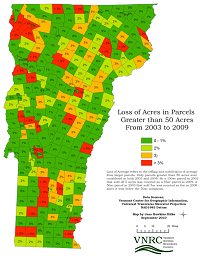
Informing land use planning and forestland conservation through subdivision and parcelization trend information
2003 to 2010
Summary
The authors analyzed subdivision trends in Vermont by using state Grand List data for 2003 and 2009 to establish a database of parcels of land in the state, compiled by class size. The analysis goals were to: (1) quantify the extent of subdivision and the degree to which subdivision is affecting the viability of undeveloped land for resource management; (2) quantify and understand the extent to which residential development is occurring on parcels that are larger than needed for a residence; and (3) investigate and document paaerns that may be relevant for policies and programs that support resource management and/or discourage fragmentation.
Key Personnel & Institutions
People: Deb Brighton
Institutions: Northeastern States Research Cooperative , Vermont Natural Resources Council
Location
Fletcher, Stowe, Elmore, Calais, Middlesex, Norwich, Bennington, Hinesburg
Resource Type
Report
Tags
resource management, fragmentation, forest stewardship, parcelization, policy, policy making, wildlife conservation
Topic Tags
management
Purpose Tags
conservation, management, policy
Citation
Brighton, D., Fidel, J., Shupe, B., Sinclair, S. and Austin, J. (2010). Informing land use planning and forestland conservation through subdivision and parcelization trend information. Vermont Natural Resources Council.
Source Link
https://drive.google.com/file/d/1rnkZm13s_NGiv46Xvcrpef-OEmIxYbq_/view
Vermont Town Parcelization Data 2003 to 2009
2003 to 2010
Summary
This datasets provides summary statistics on town parcelization statistics and trends for all towns in Vermont.
Key Personnel & Institutions
Institutions: Northeastern States Research Cooperative , Vermont Natural Resources Council
Location
Vermont
Resource Type
Dataset
Tags
resource management, fragmentation, forest planning, forest stewardship, parcelization, policy, wildlife conservation
Topic Tags
management, landscape pattern and connectivity
Purpose Tags
conservation, management, education, policy
Citation
Vermont Natural Resources Council. (2010). Informing Land Use Planning and Forestland Conservation Through Subdividision and Parcelization Trend Information Dataset. Available at http://www.vnrc.org/subdivisionreport/
Source Link
Securing permeable roadways for wide-ranging wildlife in the Black River Valley
2009 to 2012
Summary
The Black River Valley lies between the Tug Hill Plateau and the Adirondack Park -- the two largest core habitat blocks in the western part of the Northern Appalachian region -- and consists of 650,000 acres of forest. Mapping and modeling work by Two Countries, One Forest, The Nature Conservancy, and others identified the Black River Valley as a regionally important linkage.
Key Personnel & Institutions
People: Gustave Goodwin , Michelle Brown
Institutions: The Nature Conservancy , Staying Connected Initiative
Location
New York
Resource Type
Report
Tags
black river valley, core habitat, landscape connectivity
Topic Tags
conservation, landscape pattern and connectivity
Purpose Tags
conservation
Citation
Goodwin, G., Rinehart, K., Rafferty, A., Brown, M., Cheeseman, C. (2012). Securing permeable roadways for wide-rangingwildlife in the Black River Valley. The Nature Conservancy, Adirondack Chapter.
Source Link
NRCS Action Plan to Conserve: Identified Priority Fish and Wildlife Species and Habitat in Maine
2006
Summary
This action plan for Maine NRCS identifies conservation targets, major resource concerns for each conservation target, and discusses opportunities for NRCS programs to help alleviate or solve identified resource concerns.
Key Personnel & Institutions
Institutions: United States Department of Agriculture (USDA), Maine Natural Resources Conservation Service
Location
Maine
Resource Type
Report
Tags
resource
Topic Tags
conservation, methods, management, planning
Purpose Tags
conservation, management, policy
Citation
Natural Resources Conservation Service. June 2006. "NRCS Action Plan to Conserve: Identified Priority Fish and Wildlife Species and Habitat in Maine." Accessed From (https://www.nrcs.usda.gov/Internet/FSE_DOCUMENTS/nrcs141p2_001960.pdf)
Source Link
Hudson Valley Forest Patch Update and Assessment
2016 to 2020
Summary
The objective of this project was to delineate road-less forest patches throughout New York State, based on the latest version of the National Land Cover Dataset (2016), and then to assess the condition of those patches within the Hudson River Estuary Watershed.
Key Personnel & Institutions
Institutions: New York State Department of Environmental Conservation , New York Department of Environmental Conservation, New York Natural Heritage Program
Location
New York
Resource Type
Article
Tags
assessment
Topic Tags
conservation, ecosystem services, landscape pattern and connectivity
Purpose Tags
conservation
Citation
"Hudson Valley Forest Patch Update and Assessment" New York National Heritage Program, Division of Water, 31 December, 2020. Accessed from (https://www.nynhp.org/projects/hudson-valley-forest-patches/)
Source Link
https://www.nynhp.org/projects/hudson-valley-forest-patches/
Assessment and Mapping of Forest Parcel Sizes
2005
Summary
A method for analyzing and mapping forest parcel sizes in the Northeastern United States is presented. A decision tree model was created that predicts forest parcel size from spatially explicit predictor variables: population density, State, percentage forest land cover, and road density.
Key Personnel & Institutions
People: Brett Butler , Susan L. King
Institutions: United States Department of Agriculture (USDA), Forest Service, Northern Research Station
Location
Vermont, Massachusetts, Maine, New York, New Hampshire, Connecticut, Rhode Island, New England
Resource Type
Report
Tags
Topic Tags
landscape pattern and connectivity
Purpose Tags
Citation
Butler B. J., King S. L., "Assessment and Mapping of Forest Parcel Sizes", 2005, Accessed from: https://www.fs.usda.gov/research/treesearch/14259
Source Link
2013 to 2014
Summary
Forests have become increasingly fragmented throughout the US, with residential development serving as the primary driver of these changes. These altered landscapes have provided suitable conditions for a broad range of wildlife, including blacklegged ticks and their hosts. Lawns dominate residential landscapes, and thus their management has the potential to reduce the likelihood of contact with ticks in residential yards. This study tested the hypothesis that lawn mowing frequency influences tick occurrence in 16 suburban yards in Springfield, MA.
Key Personnel & Institutions
People: Susannah B. Lerman , Vincent D'Amico
Institutions: United States Department of Agriculture (USDA), Forest Service, Northern Research Station , University of Massachusetts, UMass
Location
Springfield, Massachusetts
Resource Type
Report
Tags
ticks
Topic Tags
methods, management, wildlife and habitat, landscape pattern and connectivity
Purpose Tags
management, education
Citation
No citation available.
Source Link
Forest Fragmentation
2007
Summary
What Is Forest Fragmentation,and Why Is It Important? Forest fragmentation refers to a loss of forest and the division of the remaining forest into smaller blocks. Fragmentation is of concern primarily because of its impact on the conservation of biological diversity. Forest fragmentation can affect the amount and quality of habitat for many wildlife species (Fahrig 2003, Roundtable on Sustainable Forests 2000). Fragmented forests may consist of patches of forest too small to maintain viable populations of certain species. Fragmentation is also an issue because the resulting smaller blocks of forest may not be viable units for forest management (Roundtable on Sustainable Forests 2000).
Key Personnel & Institutions
People: Kurt Riitters
Institutions: United States Department of Agriculture (USDA), Forest Service
Location
Vermont, Massachusetts, Maine, New York, New Hampshire, Connecticut, Rhode Island, New England
Resource Type
Report
Tags
Topic Tags
conservation, management, drivers, wildlife and habitat, landscape pattern and connectivity
Purpose Tags
conservation, management
Citation
Riitters K. H. "Forest Fragmentation", 2007 pp 9-15 In: Forest health monitoring: 2005 national technical report. General Technical Report SRS-104. Asheville, NC: U.S. Department of Agriculture, Forest Service, Southern Research Station.
Source Link
Habitat Loss
2000 to 2021
Summary
This article gives descriptions of different kinds of major habitat loss in the United States, their causes and how to combat those losses.
Key Personnel & Institutions
Institutions: National Wildlife Federation
Location
Vermont, Massachusetts, Maine, New York, New Hampshire, Connecticut, Rhode Island, New England
Resource Type
Article
Tags
Topic Tags
conservation, management, drivers
Purpose Tags
conservation, management, education
Citation
"Habitat Loss" National WIldlife Federation. Accessed from (https://www.nwf.org/Educational-Resources/Wildlife-Guide/Threats-to-Wildlife/Habitat-Loss)
Source Link
https://www.nwf.org/Educational-Resources/Wildlife-Guide/Threats-to-Wildlife/Habitat-Loss
Forest Fragmentation Due To Land Parcelization And Subdivision: A Remote Sensing And GIS Analysis
2004
Summary
The combination of high population density and forestland ownership puts the Connecticut's forest resource at risk and places a premium on understanding the relationship of development patterns, especially forest fragmentation and landscape parcelization, to the physical changes in the landscape. Forest extent and fragmentation will be mapped for a 40-year period. The relationship between land subdivision and forest fragmentation will be examined. Correlations of these trends will be made with observable trends in regulatory and policy decisions and characteristics of the landscape.
Key Personnel & Institutions
People: James Hurd , Daniel Civco, Brian M. Holdt
Institutions: University of Connecticut
Location
Connecticut
Resource Type
Report
Tags
trends
Topic Tags
conservation, landscape pattern and connectivity
Purpose Tags
conservation
Citation
Holdt, B. M.; Civco, D. L.; Hurd, J. D. "Forest Fragmentation Due To Land Parcelization And Subdivision: A Remote Sensing And GIS Analysis." May 2004, Accessed from http://clear.uconn.edu/\/publications/research/tech_papers/Holdt_et_al_ASPRS2004.pdf
Source Link
New England Clean Energy Connect and the Impacts of Forest Fragmentation
2019
Summary
The author writes about Maine Audubon's position on New England Clean Energy Connect (NECEC), a transmission line that would carve a 150 foot corridor through a 53 mile stretch of remote woods in Maine. Maine Audubon reviewed the environmental impacts study provided by Central Maine Power (CMP) and felt that habitat fragmentation was not adequately addressed to properly protect sensitive wildlife species. To read more articles related to this story, including impacts on the Wood Turtle, American Marten, and Ovenbird, please visit Maine Audubon North Woods blog at: https://www.maineaudubon.org/news/category/advocacy/north-woods/
Key Personnel & Institutions
People: Eliza Donoghue
Institutions: Maine Audubon Society
Location
Maine
Resource Type
Website
Tags
Topic Tags
conservation, ecosystem services, wildlife and habitat, landscape pattern and connectivity
Purpose Tags
conservation, education, policy
Citation
Donoghue, E. (2019, April 2). New England Clean Energy Connect and the Impacts of Forest Fragmentation. Retrieved from https://www.maineaudubon.org/news/new-england-clean-energy-connect-and-the-impacts-of-forest-fragmentation/
Source Link
https://www.maineaudubon.org/news/category/advocacy/north-woods/
Sustainable Ecological Systems: Implementing an Ecological Approach to Land Management
1993
Summary
This conference brought together scientists and managers from federal, state and local agencies, along with private-sector interests to examine key concepts involving sustainable ecological systems and ways in which to apply these concepts to ecosystem management. Session topics were: ecological consequenses of land and water use changes, biology of rare and declining species and habitats, conservation biology and restoration ecology, developing and applying ecological theory to management of ecological systems, sustainable ecosystems and forest health, and sustainable ecosystems to respond to human needs. A plenary session established the philosophical and historical contexts for ecosystem management.
Key Personnel & Institutions
Not available.Location
Vermont, Massachusetts, Maine, New York, New Hampshire, Connecticut, Rhode Island, New England
Resource Type
Book
Tags
Topic Tags
conservation, methods, management, landscape pattern and connectivity
Purpose Tags
conservation, management
Citation
Covington W. W., DeBano L. F., "Sustainable Ecological Systems: Implementing an Ecological Approach to Land Management", 12-15 July 1993, Accessed From: https://books.google.com/books?hl=en&lr=&id=RRqHo7br_L4C&oi=fnd&pg=PA85&dq=forest+fragmentation+new+york&ots=f31o8FtREe&sig=gzEKjbyoq-RiwBIJ16FUxXEnFGo#v=onepage&q=forest fragmentation new york&f=false
Source Link
Forest Management Framework for New York City
2018 to 2022
Summary
A joint project of the Natural Areas Conservancy and NYC Parks, the Forest Management Framework for New York City is a strategic and comprehensive plan to bolster and protect New York City's vital urban forests. It is the first citywide vision for this critical piece of infrastructure. The plan is intended to guide restoration, management, and community engagement for 7,300 acres of New York City's forested parkland. The 25- year plan includes the process, costs, steps, recommendations, best practices, and goals for forest management in NYC. It marks the culmination of six years of research, data collection, and analysis by NAC scientists.
Key Personnel & Institutions
Not available.Location
New York
Resource Type
Report
Tags
Topic Tags
conservation, methods, management
Purpose Tags
conservation, management
Citation
Pregitzer C. C., Helen M. F., Forgoine H. M., King K. L., Charlop-Powers S., Greenfield J., "Forest Management Framework for New York City", 2018, Natural Areas Conservancy, New York, NY. Accessed from: https://naturalareasnyc.org/content/forests/fmf-2019-update-singles.pdf
Source Link
https://naturalareasnyc.org/content/forests/fmf-2019-update-singles.pdf
Maintiaining The Integrity of Forests and Water Quality: Challenges and Opportunities
2003 to 2018
Summary
This article covers topics of forest fragmentation, parcelization, land use trends in forests, statewide reports and initiatives, strategies, issues related to industrial scale SAP extraction, federal and state laws related to water pollution from logging and regulation of water pollution from public and private roads and driveways.
Key Personnel & Institutions
People: Jamey Fidel
Institutions: Vermont Natural Resources Council
Location
Vermont
Resource Type
Article
Tags
water quality
Topic Tags
conservation, management, landscape pattern and connectivity
Purpose Tags
conservation, management, policy
Citation
Fidel, J. "Maintiaining The Integrity of Forests and Water Quality: Challenges and Opportunities" Vermont Natural Resources Council, July 30, 2020. Accessed from (https://www.friendsofthemadriver.org/uploads/1/0/5/0/105053173/7-30-20_fidel___groveman_webinar_for_r2r.pdf)
Source Link
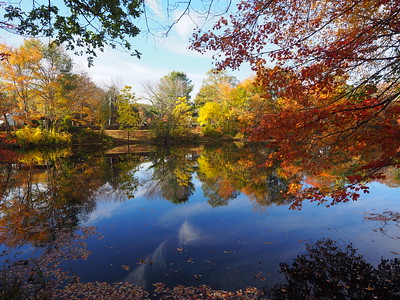
Development threatens R.I. woodlands
2018
Summary
Despite that image, the ability of woodlands to provide all those benefits is threatened by their continued loss and by fragmentation of the canopy. The rate at which the construction of roads, subdivisions and other human development continue to break up large, contiguous blocks of forest into an increasing number of smaller pieces is alarming. Fragmentation divides up the resource, and these islands of woodland provide limited benefits.
Key Personnel & Institutions
People: Christopher Riely
Institutions: Providence Journal
Location
No location information available
Resource Type
Article
Tags
Topic Tags
Purpose Tags
Citation
Riely C., "Development Threatens R.I. Woodlands", 3 March 2018, Accessed from: https://www.providencejournal.com/story/opinion/2018/03/03/my-turn-development-threatens-ri-woodlands/13764670007/
Source Link

A methodology for evaluation of the economic, forest fragmentation, and wildlife habitat effects of policies restricting size and adjacency of clearcut timber harvests
1996
Summary
This article outlines an integrative approach that could be used to evaluate the economic and ecological consequences of specific forest regulation policies.
Key Personnel & Institutions
People: Tara Michele Barrett
Institutions: University Of California, Berkeley
Location
Maine
Resource Type
Article
Tags
timber, harvest
Topic Tags
methods, management, planning, drivers
Purpose Tags
conservation, management, policy
Citation
Barrett, T.M., "A methodology for evaluation of the economic, forest fragmentation, and wildlife habitat effects of policies restricting size and adjacency of clearcut timber harvests" ProQuest, University of California, Berkeley. 1996, Accessed from (https://www.proquest.com/openview/33529460caf5cd25d9f92bb5485c056c/1?pq-origsite=gscholar&cbl=18750&diss=y)
Source Link
Rescaling the human footprint: a tool for conservation planning at an ecoregional scale
2002
Summary
The authors mapped the Human Footprint for the Northern Appalachian/Acadian ecoregion at a 90-m resolution using best available data on human settlement, access, land use change, and electrical power infrastructure.
Key Personnel & Institutions
People: Gillian Woolmer , Gillian Woolmer
Institutions: Wildlife Conservation Society of Canada
Location
No location information available
Resource Type
Map
Tags
fragmentation, connectivity, human impacts
Topic Tags
Purpose Tags
Citation
Woolmer, G., Trombulak, S.C., Ray, J.C., Doran, P.J., Anderson, M.G., Baldwin, R.F., Morgan, A. & Sanderson, E.W. (2008). Rescaling the human footprint: a tool for conservation planning at an ecoregional scale. Landscape and Urban Planning, 87(1), pp.42-53. //doi.org/10.1016/j.landurbplan.2008.04.005
Source Link
https://2c1forest.databasin.org/galleries/ff9e496d5eb14aadafa22064462c5e65#expand=56591
Piecing together the fragments: elucidating edge effects on forest carbon dynamics
2003 to 2018
Summary
This review paper explores differences in carbon dynamics observed across biomes through a trade?offs framework that considers edge microenvironmental changes and limiting factors to productivity. The review concludes that in the mesic northeastern US, large increases in carbon stocks and productivity are found near the temperate forest edge, with over 23% of the forest area within 30 m of an edge. Changes in the wind, fire, and moisture regimes near tropical forest edges result in decreases in carbon stocks and productivity.
Key Personnel & Institutions
People: Andrew Reinmann , Jonathan Thompson , Lucy Hutyra , Ian Smith , Julia Marrs
Institutions: Boston University , Harvard University
Location
New York, New England
Resource Type
Article
Tags
stand structure, biodiversity, microclimate, carbon sequestration, edge effects
Topic Tags
ecosystem services, landscape pattern and connectivity
Purpose Tags
education
Citation
Smith, I.A., Hutyra, L.R., Reinmann, A.B., Marrs, J.K. and Thompson, J.R. (2018). Piecing together the fragments: elucidating edge effects on forest carbon dynamics. Frontiers in Ecology and the Environment, 16(4), pp.213-221.
Source Link
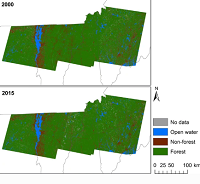
Simulating forest cover change in the northeastern U.S.: decreasing forest area and increasing fragmentation
1985 to 2019
Summary
The authors built a cellular automata model to simulate changes in forest cover of the Northern Forest (northeastern US) from 2015 to 2075, based on historical trends from 1985 to 2015. While there was an overall increase in forest cover between 2000 and 2015, there was a trend of decreasing forest area across the Northern Forest, which continued in the simulations. In both observed and simulated time periods, forest fragmentation increased, which posed a major threat to the Northern Forest.
Key Personnel & Institutions
People: Jennifer Pontius , David Gudex-Cross , Alison Adams , Gillian Galford
Institutions: University of Vermont
Location
New York
Resource Type
Article
Tags
northern forest, fragmentation
Topic Tags
conservation, management, landscape pattern and connectivity
Purpose Tags
conservation, management
Citation
No citation available.
Source Link
https://link.springer.com/article/10.1007/s10980-019-00896-7

Ecosystems and Sustainable Development VII
2009
Summary
ECOSUD is a challenge for the creation of a new science in line with Prigogine's statement that "at all levels we observe events associated with the emergence of novelties and narrative elements, which we may associate with the creative power of nature". This is not only a platform to present novel research related to ecological problems from all over the world; it also gives opportunities for new emergent ideas in science arising from the cross fertilization of different disciplines, including mathematical models and eco-informatics, evolutionary thermodynamics and biodiversity, structures in ecosystems modelling and landscapes to mention but a few.
Key Personnel & Institutions
Not available.Location
Vermont, Massachusetts, Maine, New York, New Hampshire, Connecticut, Rhode Island, New England
Resource Type
Book
Tags
Topic Tags
conservation, methods, management, ecosystem services, drivers
Purpose Tags
conservation, management, education
Citation
Brebbia C. A., Tiezzi E., "Ecosystems and Sustainable Development VII", 2009, Accessed from: https://books.google.com/books?hl=en&lr=&id=4nzNS-veZFMC&oi=fnd&pg=PA141&dq=forest+parcelization+rhode+island&ots=EkWCfY5XTr&sig=gCc8CPTAopF2vUAaYOwgValW82k#v=onepage&q&f=false
Source Link
BioMap2
2010
Summary
BioMap2 is designed to guide strategic biodiversity conservation in Massachusetts over the next decade by focusing land protection and stewardship on the areas that are most critical for ensuring the long-term persistence of rare and other native species and their habitats, exemplary natural communities, and a diversity of ecosystems.
Key Personnel & Institutions
People: Henry Woosley
Institutions: The Nature Conservancy , Massachusetts Division of Fisheries and Wildlife, The Natural Heritage and Endangered Species Program
Location
Massachusetts
Resource Type
Map
Tags
habitat, spatial analysis, ecoregion, landscape blocks, tool, web tool
Topic Tags
conservation, methods, planning, landscape pattern and connectivity
Purpose Tags
education
Citation
Massachusetts Department of Fish and Game. (2010). BioMap 2 - Natural Heritage [map]. Available at http://maps.massgis.state.ma.us/dfg/biomap2.htm
Source Link
Degradation of Visible Autumn Icons and Conservation Opportunities: Trends in Deciduous Forest Loss in the Contiguous US
1985 to 2021
Summary
This study used spatial overlay analyses to quantify recent (1984-2016) and predicted (2016-2050) forest disturbance in each U.S. ecoregion and the extent to which each ecoregion falls into protected areas.
Key Personnel & Institutions
People: Lindsay Dreiss, Jacob Malcom
Institutions: Center for Conservation Innovation, Defenders of Wildlife
Location
Vermont, Massachusetts, Maine, New York, New Hampshire, Connecticut, Rhode Island, New England
Resource Type
Report
Tags
diseases, global
Topic Tags
conservation, drivers, landscape pattern and connectivity
Purpose Tags
conservation
Citation
Dreiss, L., Malcom. J. "Degradation of Visible Autumn Icons and Conservation Opportunities: Trends in Deciduous Forest Loss in the Contiguous US" 29 March, 2021. https://doi.org/10.1101/2021.03.29.437570
Source Link
https://www.biorxiv.org/content/10.1101/2021.03.29.437570v1.abstract
Natural Resource Plan for Waitsfield, Vermont
2005
Summary
Overview of the Waitsfield, Vermont Town Plan (2005) provided by Vermont Natural Resources Council (VNRC). In the plan, VNRC identifies key wildlife habitat and corridors with the goal of producing updated wildlife habitat policies.
Key Personnel & Institutions
Institutions: Vermont Natural Resources Council
Location
Vermont
Resource Type
Website
Tags
conservation, forestland conservation, natural resource protection, tool
Topic Tags
conservation, methods, management, planning
Purpose Tags
policy
Citation
Vermont Natural Resources Council. (2005). Natural Resource Plan-Waitsfield. Available at http://vnrc.org/resources/community-planning-toolbox/case-studies/natural-resource-plan-waitsfield/
Source Link
https://vnrc.org/community-planning-toolbox/case-studies/natural-resource-plan-waitsfield/
Life on the Edge
2016
Summary
Despite being conducted in rural Petersham, Massachusetts, the inspiration for my summer research project comes from patterns observed in urban environments. We live in a growing world in which cities are expanding, both in terms of population and geography. As cities sprawl outwards, forested regions, such as New England, are converted into fragmented landscapes where the forest is interrupted by human land use. Replacing forests with something else can have significant impacts on the carbon cycle as forests play a key role in removing and storing atmospheric carbon. However, the data that I have collected this summer suggests that forests have the ability to mitigate some of the carbon storage loss associated with forest fragmentation.
Key Personnel & Institutions
People: Ian Smith
Institutions: Harvard University, Harvard Forest
Location
Massachusetts
Resource Type
Website
Tags
cities, edge effects, forest edge, human land use, urban forests
Topic Tags
drivers, landscape pattern and connectivity
Purpose Tags
conservation, education
Citation
Smith, I. (2016). Life on the Edge. Harvard Forest. Available at http://harvardforest.fas.harvard.edu/blog/ian-smith
Source Link
Julie Moore: Protecting Vermont's forests requires cutting some trees
2019
Summary
For Vermont to truly embody our identity as the Green Mountain State, people must think holistically, not just about protecting forests, but the entire supply chain that allows forestland owners to receive a reasonable rate of return. Working to preserve forest products enterprises that add value and generate revenue essential to stable land ownership is the best practice of today and the future. The next time you see a log truck on the road, think about where it came from, where it's going, and the benefits we all accrue as a result.
Key Personnel & Institutions
People: Julie Moore
Institutions: Vermont Agency of Natural Resources
Location
Vermont
Resource Type
Poster
Tags
Topic Tags
conservation, management, ecosystem services, landscape pattern and connectivity
Purpose Tags
conservation, management
Citation
Moore, J. "Julie Moore: Protecting Vermont's Forests Requires Cutting Some Trees." Bennington Banner, 25 September 2019, Accessed from https://www.benningtonbanner.com/stories/julie-moore-protecting-vermonts-forests-requires-cutting-some-trees,585730
Source Link
Trees for life: habitat fragmentation
Summary
This web article provides an easy-to-understand overview of the problems related to forest fragmentation, with particular focus on wildlife impacts.
Key Personnel & Institutions
People: Dan Puplett
Institutions: Trees for Life
Location
No location information available
Resource Type
Website
Tags
biodiversity, threats
Topic Tags
drivers, landscape pattern and connectivity
Purpose Tags
education
Citation
Puplett, D. (n.d.). Habitat fragmentation. Available at https://treesforlife.org.uk/forest/human-impacts/habitat-fragmentation/
Source Link
https://treesforlife.org.uk/forest/human-impacts/habitat-fragmentation/
The exceptional value of intact forest ecosystems
2018
Summary
In this paper, the authors argue that maintaining and, where possible, restoring the integrity of dwindling intact forests is an urgent priority for current global efforts to halt the ongoing biodiversity crisis, slow rapid climate change, and achieve sustainability goals. Furhter, they argue that retaining the integrity of intact forest ecosystems should be a central component of proactive global and national environmental strategies, alongside current efforts aimed at halting deforestation and promoting reforestation.
Key Personnel & Institutions
People: James Watson, Tom Evans, Oscar Venter
Institutions: ECHO Lake Aquarium , The University of Queensland, School of Earth and Environmental Sciences , Wildlife Conservation Society
Location
New York, New England
Resource Type
Article
Tags
biodiversity, climate change, acid deposition, sustainability
Topic Tags
ecosystem services
Purpose Tags
education
Citation
Watson, J.E., Evans, T., Venter, O., Williams, B., Tulloch, A., Stewart, C., Thompson, I., Ray, J.C., Murray, K., Salazar, A. and McAlpine, C. (2018). The exceptional value of intact forest ecosystems. Nature ecology & evolution, p.1.
Source Link
Implementing Act 171 Land Use Planning To Address Forest Fragmentation
2018 to 2017
Summary
No additional information available.
Key Personnel & Institutions
People: Jamey Fidel , Jens Hilke, Clare Rock
Institutions: Vermont Natural Resources Council , Vermont Fish and Wildlife Department
Location
Vermont
Resource Type
Website
Tags
fragmentation, planning
Topic Tags
management, planning, landscape pattern and connectivity
Purpose Tags
management, education
Citation
Hilke, J. Rock, C. & Fidel, J. (2017). Implementing Act 171 Land Use Planning To Address Forest Fragmentation. Available at https://www.youtube.com/watch?v=EusloD8LdAE
Source Link
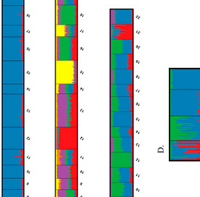
A Comparison of the Population Genetic Structure and Diversity between a Common (Chrysemys p. picta) and an Endangered (Clemmys guttata) Freshwater Turtle
2013 to 2019
Summary
The authors hypothesized that spotted turtles (Clemmys guttata) would have lower genetic diversity (higher rates of inbreeding) than eastern painted turtles (Chrysemys p. picta), as a result of historic habitat destruction and fragmentation. This hypothesis was based on the premise that spotted turtles would disproportionately experience the effects of habitat destruction and fragmentation since they are habitat specialists, while eastern spotted turtles are habitat generalists.
Key Personnel & Institutions
People: Scott Buchanan , Scott Buchanan, Scott Buchanan, Scott Buchanan, Jason Kolbe, Johanna Wegener, Jessica Atutubo, nancy Karraker
Institutions: University of Rhode Island, Rhode Island Division of Fish & Wildlife
Location
No location information available
Resource Type
Article
Tags
Topic Tags
Purpose Tags
Citation
No citation available.
Source Link
Vermont Conservation Design: Maintaining and Enhancing an Ecologically Functional Landscape
2018
Summary
No additional information available.
Key Personnel & Institutions
People: Eric Sorenson , Robert Zaino
Institutions: Vermont Agency of Natural Resources , Vermont Fish and Wildlife
Location
Vermont
Resource Type
Article
Tags
ecological design, landscape
Topic Tags
conservation, methods, management, ecosystem services, planning
Purpose Tags
conservation, management
Citation
Sorenson, E., Zaino, R. ""Vermont Conservation Design: Maintaining and Enhancing an Ecologically Functional Landscape"" Vermont Acengy of Natural Resources, Vermont Fish and WIldlife, February, 2018. Accessed from (https://vtfishandwildlife.com/sites/fishandwildlife/files/documents/Conserve/VT Conservation Landscape-level Design/Vermont-Conservation-Design-Summary-Report-February-2018.pdf)
Source Link
Threats to species of greatest conservation need and their habitats in New York State
2006
Summary
This report references data from the The Comprehensive Wildlife Conservation Strategy (CWCS) planning database toidentify the threats to species of greatest conservation need in New York State.
Key Personnel & Institutions
People: Lisa Holst
Institutions: United States Department of Agriculture (USDA), Forest Service, Northern Research Station , New York Department of Agriculture and Markets
Location
New York
Resource Type
Report
Tags
conservation, awareness, frequency tracking, habitat loss, habitat threats, impact scaling, threats
Topic Tags
conservation, drivers
Purpose Tags
management, education
Citation
Holst, L. K., Schiavone, M., & Tomajer, T. (2005). Threats to Species of Greatest Conservation Need and their Habitats in New York State. In Comprehensive Widllife Conservation Strategy for New York. New York State Department of Environmental Conservation. p. 57-69.
Source Link
Satellite-detected forest disturbance forecasts American marten population decline: The case for supportive space-based monitoring
1975 to 2019
Summary
The authors studied the accuracy of using habitat monitoring and species distribution models as a proxy for direct monitoring when resources inhibit direct, in-situ monitoring of a species.
Key Personnel & Institutions
People: Erin Simons-Legaard, John Clare, Shawn McKinney, John DePue, Cynthia Loftin, Cynthia Loftin
Institutions: University of Maine , Maine Department of Inland Fisheries & Wildlife , Maine Cooperative Fish and Wildlife Research Unit
Location
No location information available
Resource Type
Article
Tags
Topic Tags
Purpose Tags
Citation
No citation available.
Source Link
https://www.sciencedirect.com/science/article/pii/S0006320718301083#!
Implementing Act 171: Land Use Planning to Address Forest Fragmentation
2018
Summary
This recorded webinar outlines Vermont's Act 171 regulations for land use planning to address forest fragmentation.
Key Personnel & Institutions
People: Jamey Fidel , Clare Rock
Institutions: Vermont Fish & Wildlife Dept. , Vermont Center for Geographic Information , Vermont Natural Resources Council
Location
Vermont
Resource Type
Poster
Tags
land use, fragmentation, parcelization, planning
Topic Tags
ecosystem services, planning, landscape pattern and connectivity
Purpose Tags
management, education
Citation
Przyperhart, M., Rock, C. and Fidel, J. (2018). Implementing Act 171: Land Use Planning to Address Forest Fragmentation. Available at: https://www.youtube.com/watch?v=0dLaI9aBkGk
Source Link
Factors Influencing Occupancy Patterns of Eastern Newts across Vermont
2009
Summary
No additional information available.
Key Personnel & Institutions
People: Therese Donovan , Brian Mitchell , Robert Long , Brian Mitchell, Kurt A. Rinehart , Paul Marengelo
Institutions: United States Geological Survey (USGS) , University of Vermont, Rubenstein School of Environment and Natural Resources , Vermont Fish and Wildlife Department
Location
No location information available
Resource Type
Report
Tags
salamanders
Topic Tags
Purpose Tags
Citation
No citation available.
Source Link

Tracking parcelization and addressing forest fragmentation: tools and strategies for reversing negative trends in Vermont
2003 to 2015
Summary
This presentation by Jamey Fidel, General Counsel/Forest and Wildlife Program Director for Vermont Natural Resources Council at the FEMC 2015 Annual Conference, addresses parcelization and fragmentation in Vermont and provides steps on reducing the negative impacts from such events.
Key Personnel & Institutions
People: Jamey Fidel
Institutions: Vermont Natural Resources Council , Vermont Natural Resources Council, Forest and Wildlife Program
Location
Vermont
Resource Type
Poster
Tags
fragmentation, landuse planning, landscape connectivity, parcelization
Topic Tags
conservation, management, landscape pattern and connectivity
Purpose Tags
conservation, management
Citation
Fidel, J. (2015). Tracking parcelization and addressing forest fragmentation: tools and strategies for reversing negative trends in Vermont. Vermont Natural Resources Council. Available at https://www.uvm.edu/femc/attachments/project/999/annualMeeting/2015/presentations/Fidel_VMC_2015.pdf
Source Link
https://www.uvm.edu/femc/attachments/project/999/annualMeeting/2015/presentations/Fidel_VMC_2015.pdf
Keeping forests as forests: minimizing loss and fragmentation of forest land
2013
Summary
This report by VNRC identifies the importance of Vermont's forests to wildlife for the human community, including the benefits of preserving forests. The report also discusses the issues of forest loss and fragmentation, and identifies the drivers that lead to loss and fragmentation as being incremental development and the subdivision of forest management.
Key Personnel & Institutions
Institutions: Vermont Natural Resources Council
Location
Vermont
Resource Type
Report
Tags
forests, fragmentation, benefits, guidance, historical, landscape, preservation, prevention, reforestation
Topic Tags
management, ecosystem services
Purpose Tags
conservation
Citation
Vermont Natural Resources Council. (2013). Keeping Forests as Forests - Minimizing Loss and Fragmentation of Forest Land. VNRC, Montpelier, VT.
Source Link
Distribution and Causes of Global Forest Fragmentation
2003
Summary
Using 1-km advanced very high resolution radiometer (AVHRR) satellite-based land cover, this study presents a method to seperate forest fragmentation into natural and anthropogenic components, and report results for all inhabited continents summarized by World Wildlife Fund biomes.
Key Personnel & Institutions
People: Timothy Wade
Institutions: United States Environmental Protection Agency (EPA), National Exposure Research Laboratory
Location
Vermont, Massachusetts, Maine, New York, New Hampshire, Connecticut, Rhode Island, New England
Resource Type
Report
Tags
Topic Tags
conservation, drivers, landscape pattern and connectivity
Purpose Tags
conservation
Citation
Wade T. G., Riitters K. H., Wickham J. D., Jones K. B., "Distribution and Causes of Global Forest Fragmentation", 2003, Conservation Ecology 7(2): 7 (online) URL: http://www.consecol.org/vol7/iss2/art7
Source Link
https://www.jstor.org/stable/26271943#metadata_info_tab_contents
Forest fragmentation action plan
2014
Summary
The Forest Fragmentation Action Plan is a coordinated land use plan to reduce forest fragmentation at the local, regional, and state levels. This plan was developed by the Vermont Natural Resources Council with input from local planning and conservation commissions, selectboards, regional planning commissions, the VT Dept. of Forests, Parks and Recreation, the VT Fish and Wildlife Dept., the VT Dept. of Housing and Community Development, the VT Planners Association, and UVM Extension.
Key Personnel & Institutions
People: Emma Zavez
Institutions: Vermont Natural Resources Council
Location
Vermont
Resource Type
Report
Tags
resource management, fragmentation, habitat connectivity, forest planning, parcelization
Topic Tags
methods, management, ecosystem services, landscape pattern and connectivity
Purpose Tags
conservation, management
Citation
Zavez, E. and Fidel, J. (2014). Forest Fragmentation Action Plan. Vermont Natural Resources Council.
Source Link
http://vnrc.org/wp-content/uploads/2019/08/Final-Forest-Fragmentation-Action-Plan-1.pdf
The New York Forest Owner Association
1963
Summary
NYFOA is a not-from profit group of New York State landowners promoting stewardship of private forests. Stewardship puts into practice knowledge of forest ecosystems, silviculture, local economies, watersheds, wildlife, natural aesthetics and even law for the long term benefit of current and future generations. NYFOA, through its local chapters, provides this knowledge for landowners and the interested public.
Key Personnel & Institutions
People: Deborah Gill , Ronald Pedersen , John Druke , Jerry Michael , Joan Kappel , Jim Minor
Institutions: The New York Forest Owners Association
Location
New York
Resource Type
Website
Tags
Topic Tags
conservation, methods, management, ecosystem services, landscape pattern and connectivity
Purpose Tags
conservation, management, education
Citation
Pedersen, R.; Minor, J.; Druke, J.; Michael, J.; Gill, D.; Kappel, J. "The New York Forest Owner, A Publication of The New York Forest Owners Association." vol. 39, number 5, October 2001. Accessed from https://www.nyfoa.org/application/files/6414/8354/4270/2001_09.pdf
Source Link
Vermont has conserved one third of the land needed for an ecologically functional future
2020
Summary
For the first time in more than a century, Vermont and neighboring states are losing forestland to development at a rate of almost 1,500 acres per year. As forest fragmentation gains ground across the New England landscape, where private ownerships and small land parcels are the norm, conserving land for future generations of people, wildlife, and plants becomes more necessary but more difficult.
Key Personnel & Institutions
Institutions: University of Vermont
Location
Vermont
Resource Type
Poster
Tags
development
Topic Tags
conservation, ecosystem services, landscape pattern and connectivity
Purpose Tags
conservation, education
Citation
University of Vermont "Vermont Has Conserved One Third of the Land Needed for an Ecologically Functional Future." 1 April 2020, Accessed from https://phys.org/news/2020-04-vermont-ecologically-functional-future.html
Source Link
https://phys.org/news/2020-04-vermont-ecologically-functional-future.html
New Forestry in Eastern Spruce-Fir Forests: Principles and Applications to Maine
1992
Summary
This bulletin is a version of the original paper, of a compilation of papers presented at the technical session of the Forest Ecology Working Group at the National Convention of the Society of American Foresters. It was revised and expanded in response to comments from ten reviewers, including industrial foresters, wildlife biologists, and environmentalists from Maine, New Brunswick, and Ontario.
Key Personnel & Institutions
People: Robert Seymour , Malcolm Hunter
Institutions: University of Maine , University of Maine, School of Forest Resources , University of Maine, School of Forest Resources
Location
Maine
Resource Type
Article
Tags
spruce-fir
Topic Tags
conservation, management, ecosystem services, planning
Purpose Tags
conservation, management
Citation
Seymour, R. S., Hunter, M.L. JR, "New Forestry in Eastern Spruce-Fir Forests: Principles and Applications to Maine" Maine Agricultural Experiment Station, University of Maine. April 1992, Accessed from (https://www.researchgate.net/profile/Robert-Seymour/publication/259459089_New_Forestry_in_Eastern_Spruce-Fir_Forests_Principles_and_Applications_to_Maine/links/0046352bc4003ba335000000/New-Forestry-in-Eastern-Spruce-Fir-Forests-Principles-and-Applications-to-Maine.pdf)
Source Link
.jpg)
State and Private Forestry Fact Sheet: Rhode Island 2021
2020 to 2021
Summary
The State and Private Forestry programs promote the health, resilience, and productivity of trees and forests across all ownerships for the benefit of people and wildlife; establish and manage urban and community forests; empower private landowners with information and technical assistance to sustainably manage their forests; and protect critically important rural forests and watersheds.
Key Personnel & Institutions
Institutions: Rhode Island Department of Environmental Management, United States Department of Agriculture (USDA), Forest Service, Eastern Region State and Private Forestry
Location
Rhode Island
Resource Type
Report
Tags
private forests, state-owned forests
Topic Tags
conservation, management, ecosystem services, drivers, landscape pattern and connectivity
Purpose Tags
conservation, management
Citation
"State and Private Forestry Fact Sheet: Rhode Island 2021" Rhode Island Department of Environmental Management, US Forest Service Eastern Region, 12 September 2021. Accessed from (https://apps.fs.usda.gov/nicportal/temppdf/sfs/naweb/ri_std.pdf)
Source Link
https://apps.fs.usda.gov/nicportal/temppdf/sfs/naweb/ri_std.pdf
How Does Corinth Maintain its Rural Character and Natural Resources?
2018 to 2021
Summary
About 90% of Corinth's land area is composed of Primary Forest Blocks and Wildlife Corridors? Since 2018 the State of Vermont requires all municipalities to address the maintenance of these natural resources in their planning for future land use. This article explains the actions that are being taken by Cornith Vermont to adress these requirements.
Key Personnel & Institutions
Not available.Location
Corinth
Resource Type
Article
Tags
Topic Tags
conservation, methods, management, drivers
Purpose Tags
conservation, management, policy
Citation
"Corinth Forest Blocks", 2021, Accessed from: https://corinthvt.org/wp-content/uploads/2021/08/Corinth-Forest-Blocks.pdf
Source Link
https://corinthvt.org/wp-content/uploads/2021/08/Corinth-Forest-Blocks.pdf
Land Subdivision and Parcelization Trends in Vermont
2009
Summary
Using state Grand List data for 2003 and 2009 and wastewater permits and well completion reports, NSRC researchers established a database of all land parcels in Vermont and compiled number of parcels by size class for each year. Data from Property Transfer Returns and the Use Value Appraisal Program helped characterize ownership, use, and value trends. Researchers selected eight towns to further analyze subdivision trends and interviewed officials in other Northern Forest states to determine their ability to conduct similar subdivision and parcel size analysis.
Key Personnel & Institutions
People: Steven Sinclair , Jamey Fidel , Deb Brighton, Brian Shupe
Institutions: Vermont Natural Resources Council , Vermont Fish and Wildlife Department , Vermont Family Forests, Vermont Department of Forests, Parks and Recreation
Location
Vermont
Resource Type
Report
Tags
Topic Tags
conservation, landscape pattern and connectivity
Purpose Tags
conservation
Citation
Fidel, J.; Shupe, B.; Brighton, D.; Sinclair, S. "Land Subdivision and Parcelization Trends in Vermont." Northeastern States Research Cooperative, 2009, Accessed from https://nsrcforest.org/project/land-subdivision-and-parcelization-trends-vermont
Source Link
https://nsrcforest.org/project/land-subdivision-and-parcelization-trends-vermont
Creation of forest edges has a global impact on forest vertebrates
2017
Summary
The authors assembled a global dataset on species responses to fragmentation and developed a statistical approach for quantifying edge impacts in heterogeneous landscapes to quantify edge-determined changes in abundance of 1,673 vertebrate species. They show that the abundances of 85% of species are affected, either positively or negatively, by forest edges.
Key Personnel & Institutions
People: Marion Pfeifer
Institutions: Newcastle University , Imperial College London , Flowminder Foundation
Location
New York, New England
Resource Type
Article
Tags
biodiversity, vertebrates, edge effects
Topic Tags
wildlife and habitat
Purpose Tags
education
Citation
Pfeifer, M., Lefebvre, V., Peres, C.A., Banks-Leite, C., Wearn, O.R., Marsh, C.J., Butchart, S.H.M., Arroyo-Rodriguez, V., Barlow, J., Cerezo, A. and Cisneros, L. (2017). Creation of forest edges has a global impact on forest vertebrates. Nature, 551(7679), p.187.
Source Link
Effects of land use legacies and habitat fragmentation on salamander abundance
2013 to 2018
Summary
The authors examined how a history of agricultural land use and current forest fragmentation influence the abundance of red-backed salamanders (Plethodon cinereus). The results suggest that historical agriculture affected salamander abundance by altering forest vegetation at a local scale and forest cover at a landscape scale.
Key Personnel & Institutions
People: Bradley Cosentino, Kristen Brubaker
Institutions: Hobart and William Smith Colleges
Location
Hector
Resource Type
Article
Tags
agriculture, habitat, salamanders, fragmentation, landscape modification
Topic Tags
wildlife and habitat
Purpose Tags
education
Citation
Cosentino, B.J. and Brubaker, K.M. (2018). Effects of land use legacies and habitat fragmentation on salamander abundance. Landscape Ecology, 33(9), pp.1573-1584.
Source Link
Ineffectiveness of local zoning to reduce regional loss and fragmentation of wintering habitat for white-tailed deer
1975 to 2018
Summary
No additional information available.
Key Personnel & Institutions
People: Erin Simons-Legaard, Daniel Harrison, Kasey Legaard
Institutions: University of Maine
Location
Maine
Resource Type
Article
Tags
winter, landsat, habitat, white-tailed deer, forestland, forestry
Topic Tags
wildlife and habitat
Purpose Tags
education
Citation
Simons-Legaard, E.M., Harrison, D.J. and Legaard, K.R. (2018). Ineffectiveness of local zoning to reduce regional loss and fragmentation of wintering habitat for white-tailed deer. Forest Ecology and Management, 427, pp.78-85.
Source Link
https://www.sciencedirect.com/science/article/pii/S0378112718304274
N.H. Braces For More Ticks & More Tick-Borne Disease
2018
Summary
The Exchange looked into the rise in tick and mosquito-borne illness in New England, including what may be causing the increase in these pests and the diseases they carry, and what residents can do to protect themselves.
Key Personnel & Institutions
Institutions: New Hampshire Public Radio
Location
New Hampshire
Resource Type
Website
Tags
public health, ticks
Topic Tags
wildlife and habitat
Purpose Tags
education
Citation
The Exchange. (2018). N.H. Braces For More Ticks & More Tick-Borne Disease. NHPR. Available at http://www.nhpr.org/post/nh-braces-more-ticks-more-tick-borne-disease#stream/0
Source Link
http://www.nhpr.org/post/nh-braces-more-ticks-more-tick-borne-disease#stream/0
A global evaluation of forest interior area dynamics using tree cover data from 2000 to 2012
2015
Summary
The authors assessed global and regional changes in forest fragmentation in relation to the change of forest area from 2000 to 2012 using published global tree cover data.
Key Personnel & Institutions
People: James Wickham , Kurt Riitters , Jennifer Costanza
Institutions: United States Department of Agriculture (USDA), Forest Service, Southern Research Station , United States Environmental Protection Agency (EPA) , North Carolina Cooperative Fish and Wildlife Research Unit
Location
New York, New England
Resource Type
Article
Tags
monitoring, spatial analysis, assessment, forest fragmentation
Topic Tags
methods, landscape pattern and connectivity
Purpose Tags
education
Citation
Riitters, K., Wickham, J., Costanza, J. K., & Vogt, P. (2016). A global evaluation of forest interior area dynamics using tree cover data from 2000 to 2012. Landscape Ecology, 31(1), 137-148.
Source Link
Local abundance of Ixodes scapularis in forests: Effects of environmental moisture, vegetation characteristics, and host abundance
2010 to 2020
Summary
The authors studied environmental factors that promote Ixodes scapularis, or the black-legged tick, which carries Lyme disease. They also determined that studies should include both host counts and flag/drag counts of ticks to conduct a more complete study of black-legged tick populations.
Key Personnel & Institutions
People: Howard Ginsberg, Eric Rulison, Jasmine Miller, Genevieve Pang, Isis Arsnoe, Nicholas Ogden, Roger LeBrun, Jean Tsao, Graham J. Hickling
Institutions: Michigan State University , Patuxent Wildlife Research Center, Rhode Island Field Station, University of Rhode Island, University of Tennessee Institute of Agriculture, Public Health Agency of Canada
Location
No location information available
Resource Type
Article
Tags
Topic Tags
Purpose Tags
Citation
No citation available.
Source Link
https://www.sciencedirect.com/science/article/pii/S1877959X19301827
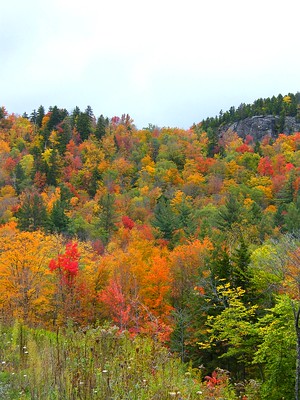
Vermont Forest Partnership: Recommendations to Vermont Climate Council
2021
Summary
Forests are a powerful tool to counter the impacts of climate change. Forests sequester and store carbon, buffer the impact of intense weather events by storing water and reducing the rate of flooding, provide durable wood products and are part of our energy portfolio, and host diverse habitat for wildlife and plant species that are under stress from climate related impacts. Maintaining a resilient and connected forest landscape must be a top priority for Vermont, and the Climate Council.
Key Personnel & Institutions
Institutions: The Nature Conservancy , Audubon Vermont , Vermont Land Trust , Vermont Natural Resources Council , The Trust For Public Land
Location
Vermont
Resource Type
Report
Tags
Topic Tags
conservation, methods, management, ecosystem services, drivers
Purpose Tags
conservation, management
Citation
"Vermont Forest Partnership: Reccomendations to Vermont Climate Council", 30 June 2021, Accessed from: Forests are a powerful tool to counter the impacts of climate change. Forests sequester and store carbon, buffer the impact of intense weather events by storing water and reducing the rate of flooding, provide durable wood products and are part of our energy portfolio, and host diverse habitat for wildlife and plant species that are under stress from climate related impacts. Maintaining a resilient and connected forest landscape must be a top priority for Vermont, and the Climate Council.
Source Link
USDA awards new partnership project in Rhode Island to help mitigate climate change and protect natural resources
Summary
The U.S. Department of Agriculture (USDA) has announced that it is investing $330 million nationwide in 85 locally driven, public-private partnerships to address climate change, improve the nation's water quality, combat drought, enhance soil health, support wildlife habitat and protect agricultural viability, including a project in Rhode Island. Projects are awarded through the Natural Resources Conservation Service (NRCS) Regional Conservation Partnership Program (RCPP).
Key Personnel & Institutions
Not available.Location
No location information available
Resource Type
Report
Tags
Topic Tags
Purpose Tags
Citation
Petit D., "USDA awards new partnership project in Rhode Island to help mitigate climate change and protect natural resources", 30 April 2021, Accessed from: https://www.nrcs.usda.gov/wps/portal/nrcs/detail/ri/newsroom/releases/?cid=NRCSEPRD1770845
Source Link
https://www.nrcs.usda.gov/wps/portal/nrcs/detail/ri/newsroom/releases/?cid=NRCSEPRD1770845
State and Private Forestry Fact Sheet: Rhode Island 2022
2022
Summary
The U.S. Forest Service and state forestry agencies collaborate with other partners on shared stewardship goals, which also support each State Forest Action Plan. The State and Private Forestry programs promote the health, resilience, and productivity of trees and forests across all ownerships for the benefit of people and wildlife; establish and manage urban and community forests; empower private landowners with information and technical assistance to sustainably manage their forests; and protect critically important rural forests and watersheds.
Key Personnel & Institutions
Institutions: United States Department of Agriculture (USDA), Forest Service
Location
Rhode Island
Resource Type
Report
Tags
Topic Tags
conservation, methods, management, ecosystem services, planning
Purpose Tags
conservation, management, policy
Citation
"State and Private Forestry Fact Sheet: Rhode Island 2022", 13 October 2022, Accessed from: https://apps.fs.usda.gov/nicportal/temppdf/sfs/naweb/ri_std.pdf
Source Link
https://apps.fs.usda.gov/nicportal/temppdf/sfs/naweb/ri_std.pdf
Ovenbird
2019 to 2018
Summary
This author describes ovenbird habitat, conservation, and identification, focusing on Connecticut.
Key Personnel & Institutions
People: Chris Wood
Institutions: Connecticut Audubon Society
Location
Connecticut
Resource Type
Website
Tags
Topic Tags
conservation, wildlife and habitat
Purpose Tags
education
Citation
Wood, C. (2019, June 28). Ovenbird. Retrieved from: https://www.ctaudubon.org/2019/06/ovenbird/#sthash.ZO3DoV7J.kmwhkKQx.dpbs
Source Link
https://www.ctaudubon.org/2019/06/ovenbird/#sthash.ZO3DoV7J.R0rdNnn0.dpbs
Where Have the Songbirds Gone?
2014
Summary
No additional information available.
Key Personnel & Institutions
Institutions: National Audubon Society , National Aeronautics and Space Administration (NASA), Develop
Location
New England
Resource Type
Poster
Tags
Topic Tags
conservation, wildlife and habitat
Purpose Tags
conservation, education
Citation
National Audubon Society, NASA Develop. 2014. "Where Have the Songbirds Gone?" Accessed From (https://www.nasa.gov/SpaceforUS/stories/nh.html)
Source Link
https://appliedsciences.nasa.gov/our-impact/story/where-have-songbirds-gone
Collaborative Research: Effects of Forest Fragmentation on Lepidopteran Herbivores of Contrasting Diet Breadth
2016
Summary
This project will test alternative hypotheses that have been proposed to explain declines in specialist herbivores from fragmented forests. This research is important in understanding how changes in land use or other disturbances that fragment habitats will affect biodiversity and the integrity of ecosystems. The project will focus on butterfly larvae of species with different diet requirements as model study organisms. Their dependence on particular plant species and their role as prey for birds will be studied in 40 forest sites in Connecticut where the basic ecological interactions are well known. In addition to analysis of response to past forest fragmentation, experiments protecting caterpillars from predation will help quantify the importance of food resources. The study will improve understanding of natural food webs subject to human impacts and can guide future forest management. This project will also provide research training for students in forest ecology that will strengthen the scientific workforce.
Key Personnel & Institutions
People: Michael S. Singer , Betsy Von Holle
Institutions: National Science Foundation, NSF
Location
Connecticut
Resource Type
Report
Tags
biodiversity, birds
Topic Tags
conservation, wildlife and habitat
Purpose Tags
conservation, education
Citation
Holle, B. V.; Singer, M. "Collaborative Research: Effects of forest fragmentation on Lepidopteran herbivores of contrasting diet breadth." 8 September 2016, Accessed from https://www.nsf.gov/awardsearch/showAward?AWD_ID=1556766&HistoricalAwards=false
Source Link
https://www.nsf.gov/awardsearch/showAward?AWD_ID=1556766&HistoricalAwards=false
Genetic Structure of Redback Salamander Plethodon cinereus Populations in Continuous and Fragmented Forests
1997
Summary
No additional information available.
Key Personnel & Institutions
People: James Gibbs
Institutions: Yale School of Forestry and Environmental Studies
Location
Connecticut
Resource Type
Report
Tags
salamanders
Topic Tags
conservation, wildlife and habitat
Purpose Tags
conservation
Citation
Gibbs, J. P. "Genetic Structure of Redback Salamander Plethodon Cinereus Populations in Continuous and Fragmented Forests
Source Link
https://www.sciencedirect.com/science/article/abs/pii/S0006320797001730
The Current Status and Conservation Needs of Maine Birds
2020
Summary
This chapter is a summary of forest changes and successful conservation efforts that ensure the diversity and abundance of native birds in Maine. Insight into the future of the species that remain at the greatest risk is given.
Key Personnel & Institutions
People: Barbara Vickery , Jeffrey V. Wells , Charles D. Duncan
Institutions: Princeton University Press
Location
Maine
Resource Type
Book
Tags
Topic Tags
conservation, wildlife and habitat
Purpose Tags
conservation
Citation
No citation available.
Source Link
https://www.degruyter.com/document/doi/10.1515/9780691211855-008/html
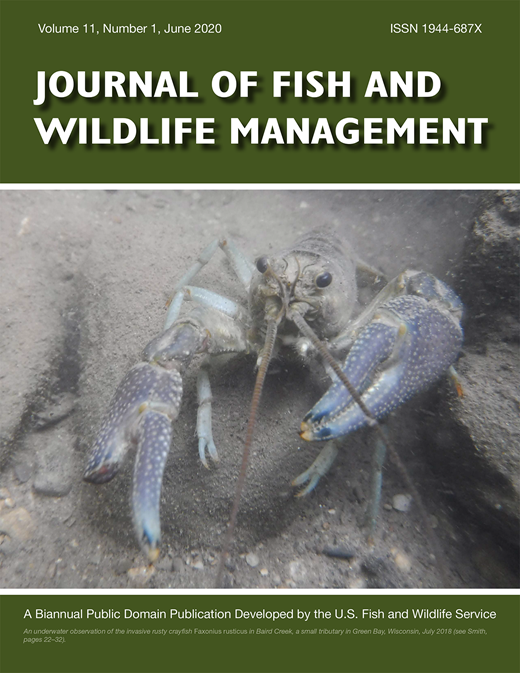
Spatial Use and Survival of Sympatric Populations of New England and Eastern Cottontails in Connecticut
2019
Summary
The objectives of this project were to quantify home range and core area sizes, annual survival rates, minimum population densities, and range overlap for sympatric populations of New England Cottontail and eastern cottontail at four sites in Connecticut.
Key Personnel & Institutions
People: Travis J. Goodie , Howard J. Kilpatrick
Institutions: Connecticut Department of Energy and Environmental Protection (DEEP) , University of Connecticut, Wildlife and Fisheries Conservation Center
Location
Connecticut
Resource Type
Report
Tags
survival, new england cottontail
Topic Tags
conservation, wildlife and habitat
Purpose Tags
conservation
Citation
No citation available.
Source Link

Consequences of Forest Fragmentation for the Dynamics of Bird Populations: Conceptual Issues and the Evidence
2008
Summary
This paper reviews the consequences of forest fragmentation for the dynamics of bird populations.
Key Personnel & Institutions
People: Jorund Rolstad
Institutions: Botanical Journal of the Linnean Society , Norwegian Forest Research Institute
Location
Vermont, Massachusetts, Maine, New York, New Hampshire, Connecticut, Rhode Island, New England
Resource Type
Article
Tags
birds
Topic Tags
conservation, wildlife and habitat
Purpose Tags
conservation
Citation
No citation available.
Source Link
https://academic.oup.com/biolinnean/article-abstract/42/1-2/149/2654446
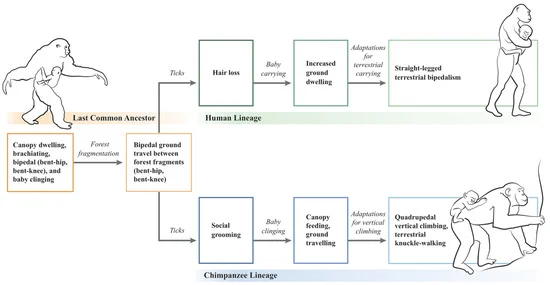
Ticks, Hair Loss, and Non-Clinging Babies: A Novel Tick-Based Hypothesis for the Evolutionary Divergence of Humans and Chimpanzees
2021
Summary
The aim of this review is to propose and evaluate a novel tick-based evolutionary hypothesis wherein forest fragmentation in hominin paleoenvironments created conditions that were favourable for tick proliferation, selecting for hair loss in hominins and grooming behaviour in chimpanzees as divergent anti-tick strategies. It is argued that these divergent anti-tick strategies resulted in different methods for carrying babies, driving the locomotor divergence of humans and chimpanzees.
Key Personnel & Institutions
Not available.Location
Vermont, Massachusetts, Maine, New York, New Hampshire, Connecticut, Rhode Island, New England
Resource Type
Article
Tags
Topic Tags
drivers, wildlife and habitat
Purpose Tags
education
Citation
Brown J.G., "Ticks, Hair Loss, and Non-Clinging Babies: A Novel Tick-Based Hypothesis for the Evolutionary Divergence of Humans and Chimpanzees." Life 2021, 11, 435. https://doi.org/10.3390/life11050435
Source Link
The Lower Connecticut River and Coastal Region Land Trust Exchange
2006
Summary
The Lower CT River and Coastal Region Land Trust Exchange (LTE) is an informal collaboration of 14 land trusts representing the 17 communities of its coordinating organization the Lower CT River Valley Council of Governments (LCRVCOG), formerly the CT River Estuary Regional Planning Agency and Mid State Regional Planning Agency, consecutive CT River centered regional planning organizations merged in large part to conserve and protect the unique character and environment of the communities of the lower CT River and Coastal Region. The creation of the LTE was an outcome of the National Fish and Wildlife Foundation, 2006 funded Lower CT River Ground-Truthing Project
Key Personnel & Institutions
Not available.Location
Connecticut
Resource Type
Article
Tags
Topic Tags
conservation, methods, management, ecosystem services, landscape pattern and connectivity
Purpose Tags
conservation, management
Citation
"The Lower Connecticut River and Coastal Region Land Trust Exchange", 2022, Accessed from: https://www.rivercog.org/wp-content/uploads/2022/05/LTEupdate042817.pdf
Source Link
https://www.rivercog.org/wp-content/uploads/2022/05/LTEupdate042817.pdf
Associations between breeding bird abundance and stand structure in the White Mountains, New Hampshire and Maine
1998
Summary
The authors compared the associations of forest cover-type, stand size-class, and stand structure to abundance of breeding bird species in managed forest in northern New England. Of the 31 bird species that met the criteria for analysis, a significant association was detected between bird abundance and structure data for 30 species, cover-type data for 19 species, and size-class data for 10 species.
Key Personnel & Institutions
People: Richard DeGraaf
Institutions: United States Department of Agriculture (USDA), Forest Service
Location
New Hampshire
Resource Type
Article
Tags
bird habitat, forest structure, forest birds, forest cover, timber size-class
Topic Tags
ecosystem services, wildlife and habitat
Purpose Tags
management
Citation
DeGraaf, R.M., Hestbeck, J.B. & Yamasaki, M. (1998). Associations between breeding bird abundance and stand structure in the White Mountains, New Hampshire and Maine, USA. Forest Ecology and Management, 103(2-3), pp.217-233.
Source Link
Effect of clearcut borders on distribution and abundance of forest birds in northern New Hampshire
1992 to 1993
Summary
The authors compared numbers of forest bird territories between forest edge and forest interior areas to determine whether clearcuts affect bird abundance in adjacent forest. While some birds were less abundant in edge areas, the distribution of these species did not differ from the distribution of randomly placed simulated territories.
Key Personnel & Institutions
People: David King , Richard DeGraaf , Curtice Griffin
Institutions: Wilson Ornithological Society
Location
New Hampshire
Resource Type
Article
Tags
clearcuts, bird abundance, forest edge, neotropical migrants
Topic Tags
ecosystem services, wildlife and habitat
Purpose Tags
conservation, education
Citation
King, D.I., Griffin, C.R. & DeGraaf, R.M. (1997). Effect of clearcut borders on distribution and abundance of forest birds in Northern New Hampshire. The Wilson Bulletin, pp.239-245.
Source Link
http://www.jstor.org/stable/pdf/4163807.pdf?refreqid=excelsior:a04ef66e23c177ec278c02debe6a86c0
Forest bird populations in Massachusetts: breeding habitat loss and other influences
2017
Summary
The objective of this research was to determine whether changes in populations of forest-interior bird species were related to changes in extent of interior forest along Breeding Bird Survey census routes in Massachusetts. The authors found that changes in some bird populations seem to reflect forest succession, while others were unexplained and may be due to changes on migratory routes or wintering grounds.
Key Personnel & Institutions
People: Timothy Gardner
Institutions: College of the Holy Cross, Biology Department
Location
Massachusetts
Resource Type
Article
Tags
populations, bird breeding surveys, forest birds, forest loss, forest succession, interior forest
Topic Tags
ecosystem services, wildlife and habitat
Purpose Tags
education
Citation
Gardner, T.J., Eagan, C.R., and Bertin, R.I. (2017). Forest bird populations in Massachusetts: breeding habitat loss and other influences. Northeastern Naturalist, 24(3), 267-288.
Source Link
https://search.proquest.com/docview/1946214509?pq-origsite=gscholar
The Nature Conservancy
Summary
This website provides information about the Nature Conservancy.
Key Personnel & Institutions
Institutions: The Nature Conservancy
Location
Vermont, Massachusetts, Maine, New York, New Hampshire
Resource Type
Website
Tags
diversity, forestland conservation, conserved land, natural resource protection
Topic Tags
conservation, planning, wildlife and habitat
Purpose Tags
conservation
Citation
The Nature Conservancy. (n.d.). Available at https://www.nature.org/en-us/
Source Link
Maine Audubon, foresters work to protect critical bird habitat
2018
Summary
A short article in the Forecaster describes how the populations of many forest birds in Maine have been steadily declining as threats to their existence continue to grow, including habitat fragmentation, encroaching development, air pollution and climate change.
Key Personnel & Institutions
People: Kate Irish Collins
Institutions: The Forecaster
Location
Maine
Resource Type
Website
Tags
birds, forestry
Topic Tags
ecosystem services, wildlife and habitat
Purpose Tags
education
Citation
Collins, K.I. (2018). Maine Audubon, foresters work to protect critical bird habitat. The Forecaster. Available at http://www.theforecaster.net/maine-audubon-foresters-work-to-protect-critical-bird-habitat/
Source Link
http://www.theforecaster.net/maine-audubon-foresters-work-to-protect-critical-bird-habitat/
Stream salamander persistence influenced by the interaction between exurban housing age and development
2014 to 2019
Summary
Urban stream syndrome describes the changes that occur to a stream ecosystem when development occurs. Since exurban development has increased, it is important to understand how these changes impact species such as salamanders. The authors wante to understand which stream features were most important to promote long-term persistence of salamanders in urban stream syndrome streams, using Eurycea bislineata (northern two-lined salamander) and Desmognathus fuscus (northern dusky salamander) as case studies.
Key Personnel & Institutions
People: D. Cristina Macklem , Ashley Helton, Morgan Tingley , Jenny Dickson, Tracy Rittenhouse
Institutions: University of Connecticut, Connecticut Department of Energy and Environmental Protection (DEEP)
Location
Connecticut
Resource Type
Article
Tags
Topic Tags
conservation, management, wildlife and habitat
Purpose Tags
conservation
Citation
No citation available.
Source Link
https://link.springer.com/article/10.1007/s11252-019-00883-5
Two salamander species respond differently to timber harvests in a managed New England forest
2017 to 2019
Summary
The authors researched the effects of forest management techniques on eastern red-backed salamanders (Plethodon cinereus) and eastern newts (Notophthalmus viridescens), examining communities in harvest zones that had regenerated for different periods of time.
Key Personnel & Institutions
People: Angus Mossman, Max Lambert, Mark Ashton, Jessica Wikle, Marlyse Duguid
Institutions: Yale University, University Of California, Berkeley
Location
Connecticut
Resource Type
Article
Tags
Topic Tags
conservation, management, wildlife and habitat
Purpose Tags
conservation, management
Citation
No citation available.
Source Link
https://peerj.com/articles/7604/?utm_source=TrendMD&utm_campaign=PeerJ_TrendMD_0&utm_medium=TrendMD

Gastrointestinal parasites of the New England cottontail rabbit (Sylvilagus transitionalis) and eastern cottontail rabbit (Sylvilagus floridanus) in the Hudson Valley, New York
2013 to 2019
Summary
The goal of this study was to investigate the decline of the New England cottontail rabbit and the explosion of the introduced eastern cottontail in the context of gastrointestinal parasites. The majority of rabbits surveyed were found to harbor at least one parasite species, regardless of rabbit species, but the eastern cottontail was found to have a significantly higher parasite species richness than the New England cottontail. The authors noted that future work will be completed to genetically confirm parasite identifications and resolve some remaining questions.
Key Personnel & Institutions
People: Christopher Whipps, Jonathan Cohen, Emily Gavard, Sadie Ryan
Institutions: The State University of New York (SUNY), College of Environmental Science and Forestry (ESF) , University of Florida
Location
New York
Resource Type
Article
Tags
Topic Tags
conservation, drivers, wildlife and habitat
Purpose Tags
conservation
Citation
No citation available.
Source Link
https://link.springer.com/article/10.1007/s00436-019-06351-5
MassGIS Data: Interior Forest
1999 to 2009
Summary
These datasets identify the extensively forested portions of Massachusetts where forest cover is relatively un-fragmented by human development.
Key Personnel & Institutions
Institutions: Massachusetts Department of Fish and Game
Location
Massachusetts
Resource Type
Map
Tags
interior forest
Topic Tags
management, planning, wildlife and habitat
Purpose Tags
management, education
Citation
Department of Fish and Game MassGIS (Bureau of Geographic Information). October 2018. "MassGIS Data: Interior Forests." Accessed from (https://docs.digital.mass.gov/dataset/massgis-data-interior-forest)
Source Link
https://www.mass.gov/info-details/massgis-data-interior-forest
Effects of landscape characteristics on amphibian distribution in a forest-dominated landscape
1998 to 1999
Summary
This study investigated the influence of landscape and wetland characteristics on pond-breeding amphibian assemblages in south-central New Hampshire, a relatively low populated and heavily forested region of the northeastern United States. This allowed for a better understanding of landscape influences in less disturbed areas, and to determine critical landscape disturbance thresholds, above which amphibians are negatively impacted.
Key Personnel & Institutions
People: Kimberly J. Babbitt , H. L. Herrmann , Matthew J. Baber , Russell J Congalton
Institutions: University of New Hampshire, Department of Natural Resources and the Environment
Location
New Hampshire
Resource Type
Article
Tags
amphibian
Topic Tags
conservation, methods, wildlife and habitat
Purpose Tags
conservation, education
Citation
Herrmann, H. L.; Babbitt, K. J.; Baber, M. J.; Congalton, R. G. "Effects of Landscape Characteristics on Amphibian Distribution in a Forest-Dominated Landscape." Biological Conservation, vol. 123, issue 2, May 2005, pp. 139-149. Accessed from https://doi.org/10.1016/j.biocon.2004.05.025
Source Link
https://www.sciencedirect.com/science/article/abs/pii/S000632070400432X
Predicting the stability of multitrophic communities in a variable world
2012 to 2020
Summary
This study examined community compositional changes over time in an array of six coastal salt ponds on the south shore of Rhode Island.
Key Personnel & Institutions
People: Mallarie E. Yeager , Tarik C. Gouhier , A. Randall Hughes
Institutions: Northeastern University, Northeastern University, Marine and Environmental Science, Marine Science Center
Location
Rhode Island
Resource Type
Report
Tags
communities, protection, stability
Topic Tags
conservation, drivers, wildlife and habitat
Purpose Tags
conservation
Citation
No citation available.
Source Link
https://esajournals.onlinelibrary.wiley.com/doi/full/10.1002/ecy.2992
Forest Fragmentation and Island Biogeography: A Summary and Bibliography
1992
Summary
This report consists of a summary of theory and findings that relate to forest fragmentation and the consequent creation of edge habitats, and a bibliography on these subjects.
Key Personnel & Institutions
People: Robert N. Rosenfield , Christopher M Morasky , John Bielefeldt , Walter L. Loope
Institutions: University of Wisconsin, Stout Menomonie, Department of Biology
Location
No location information available
Resource Type
Report
Tags
summary
Topic Tags
conservation, drivers, wildlife and habitat
Purpose Tags
conservation, education
Citation
Rosenfield, R. N., Morasky, C. M., Bielefeldt, J., Loope, W. L.. "Forest Fragmentation and Island Biogeography: A Summary and Bibliography" National Resources Publication Office, August 1992. Accessed from (https://books.google.com/books?hl=en&lr=&id=4vNPAAAAYAAJ&oi=fnd&pg=PP8&dq=forest+fragmentation+northeast+us&ots=SBhQ5NVZGX&sig=PNbs-WHSEUliT3-m42ZWR54V7LY#v=onepage&q=forest fragmentation northeast us&f=false)
Source Link
.jpg)
Management of North Central and Northeastern Forests for Nongame Birds
1979
Summary
This is a report of the proceedings of the third workshop on the management of forest and range habitats for nongame birds. It was hosted by the USDA forest service of the Eastern Region, the Northeastern area State and Private Forestry, the Northeastern Forest Experiment Station and the Northcentral Forest Experiment Station.
Key Personnel & Institutions
People: Richard DeGraaf , Keith E. Evans
Institutions: United States Department of Agriculture (USDA), Forest Service, North Central Forest Experiment Station
Location
Vermont, Massachusetts, Maine, New York, New Hampshire, Connecticut, Rhode Island, New England
Resource Type
Report
Tags
birds
Topic Tags
conservation, drivers, wildlife and habitat
Purpose Tags
conservation
Citation
DeGraaf, R. M., Evans, K. E.. "Management of North Central and Northeastern Forests for Nongame Birds" North Central Forest Experiment Station, 1979. Accessed from (https://books.google.com/books?hl=en&lr=&id=LHN7SmcBeDsC&oi=fnd&pg=PA198&dq=forest+fragmentation+northeast+us&ots=5TpbzYtVyf&sig=kaCHNShmVI0ZqPmIzwRVOmhWvvs#v=onepage&q&f=false)
Source Link
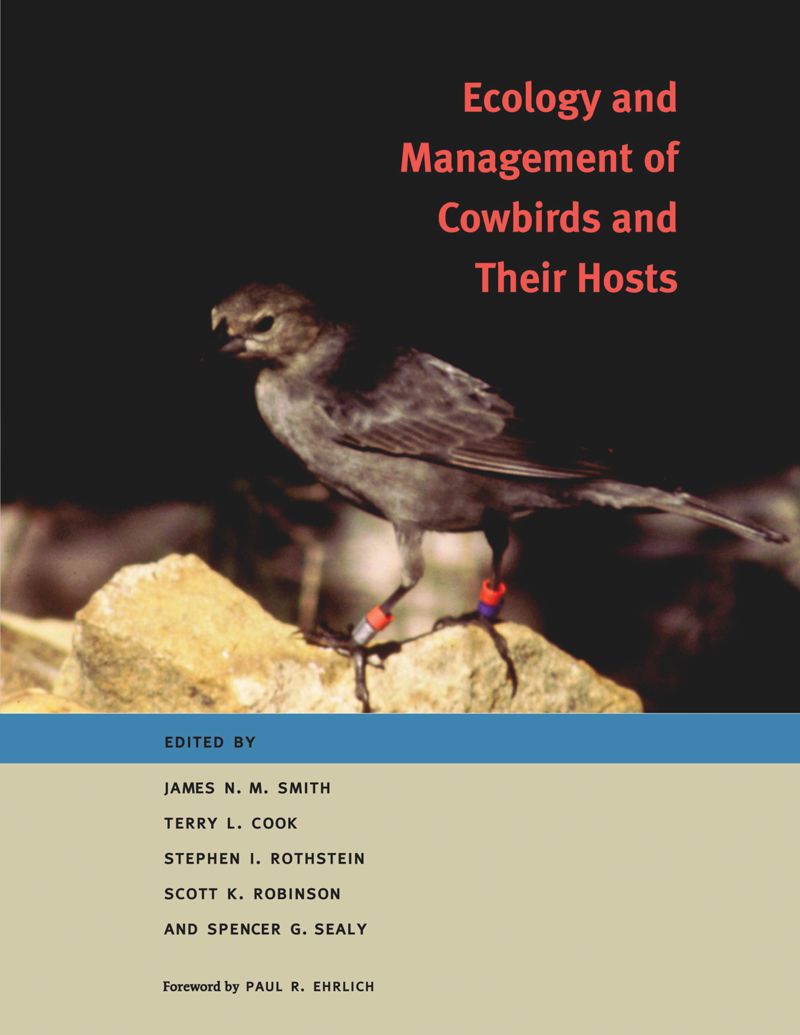
Ecology and Management of Cowbirds and Their Hosts
2000
Summary
This timely book collects forty essays by most of the principal authorities on the biology and management of cowbirds. The book's goals are to explore the biology of cowbirds, the threats they pose to host species and populations, and the management programs that are being undertaken to minimize these threats.
Key Personnel & Institutions
People: Scott K. Robinson
Location
Vermont, Massachusetts, Maine, New York, New Hampshire, Connecticut, Rhode Island, New England
Resource Type
Book
Tags
Topic Tags
conservation, drivers, wildlife and habitat
Purpose Tags
conservation
Citation
Smith J. N. M., Cook T. L., Rothstein S. I., Robinson S. K., Sealy S. G., "Ecology and Management of Cowbirds and Their Hosts: Studies in the Conservation of North American Passerine Birds", University of Texas Press, 2000, https://doi.org/10.7560/777385
Source Link
https://www.degruyter.com/document/doi/10.7560/777385/html#contents
2022
Summary
No additional information available.
Key Personnel & Institutions
Institutions: United States Department of Agriculture (USDA), Forest Service, Forest Health Protection , The University of Georgia, Warnell School of Forestry and Natural Resources
Location
Vermont, Massachusetts, Maine, New York, New Hampshire, Connecticut, Rhode Island, New England
Resource Type
Article
Tags
Topic Tags
conservation, drivers, wildlife and habitat
Purpose Tags
conservation
Citation
No citation available.
Source Link
https://academic.oup.com/jof/advance-article/doi/10.1093/jofore/fvac021/6648424
Modeling the Effects of Emerald Ash Borer on Forest Composition in the Midwest and Northeast United States
2012
Summary
While there are methods to mitigate, contain, control, or even eradicate some nonnative invasive insects, EAB continues to spread across North America. Considering strong evidence suggesting >99 percent probability of host tree mortality, the loss of the North American ash resource is possible. To examine anticipated effects of EAB on tree species composition, they modeled future spatial and temporal changes in forest composition over the next 50 years with and without ash mortality anticipated from EAB spread.
Key Personnel & Institutions
People: David Wear , W. Keith Moser
Institutions: United States Department of Agriculture (USDA), Forest Service, Northern Research Station
Location
Vermont, Massachusetts, Maine, New York, New Hampshire, Connecticut, Rhode Island, New England
Resource Type
Article
Tags
Topic Tags
conservation, drivers, wildlife and habitat
Purpose Tags
conservation
Citation
DeSantis R. D., Moser W. K., Huggett R. J. Jr., Li R., Wear D. N., Miles P. D., "Modeling the Effects of Emerald Ash Borer on Forest Composition in the Midwest and Northeast United States", September 2012, accessed from: https://shareok.org/bitstream/handle/11244/336492/DeSantis et al. 2013a.pdf?sequence=2
Source Link
The Forests of Rhode Island
1998 to 2002
Summary
This report summarizes a 1998 inventory of the forests resources of Rhode Island.
Key Personnel & Institutions
People: Tonya Lister , Andrew Lister , Brett Butler , Eric H. Wharton , Catherine Sparks , Paul Ricard , Marla Emery , Thomas A. Dupree , Paul Dolan , Charles J. Barnett
Institutions: United States Department of Agriculture (USDA), Forest Service, Northern Research Station
Location
Rhode Island
Resource Type
Report
Tags
Topic Tags
conservation, drivers, wildlife and habitat
Purpose Tags
conservation
Citation
No citation available.
Source Link
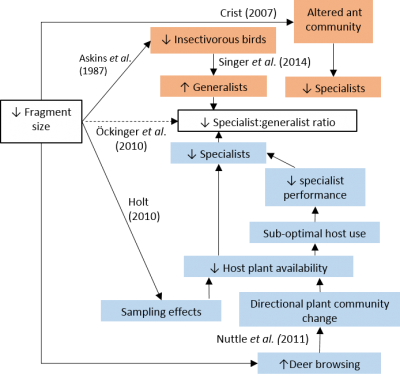
Forests Facing Environmental Change: Fragmented Ecological Networks
2022
Summary
The alteration of ecological networks by environmental change, including habitat fragmentation, is not well understood. This project will test alternative mechanistic pathways for loss of trophic specialization due to habitat fragmentation in a plant-herbivore-carnivore network. Elucidating these pathways will greatly improve predictive models of the impacts of fragmentation, which threatens habitat- and host-specialist species with local and global extinction.
Key Personnel & Institutions
People: Robert Bagchi , Dipanjana Dalui
Institutions: University of Connecticut, Department of Ecology and Evolutionary Biology
Location
Connecticut
Resource Type
Article
Tags
Topic Tags
conservation, drivers, wildlife and habitat
Purpose Tags
conservation
Citation
Bagchi R., Wasserman B., Dalui D., LaScaleia M., Lucky B. M. A., "Forests Facing Environmental Change: Fragmented Ecological Networks", 2022, Accessed from: https://bagchi.eeb.uconn.edu/fragmented-ecological-networks/
Source Link
https://bagchi.eeb.uconn.edu/fragmented-ecological-networks/#
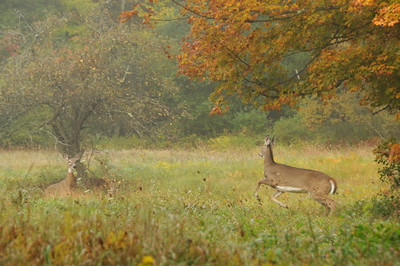
Deer and invasive plants in suburban forests: assessing variation in deer pressure and herbivory
2021
Summary
Deer browsing/grazing pressure varies among sites, potentially affecting herbivory on nonindigenous plants and their invasion success. We aimed to identify a useful deer pressure indicator for suburban forests and then use it to relate deer pressure to grazing on and abundance of two herbaceous invaders, Microstegum vimineum and Alliaria petiolata.
Key Personnel & Institutions
Not available.Location
Vermont, Massachusetts, Maine, New York, New Hampshire, Connecticut, Rhode Island, New England
Resource Type
Article
Tags
Topic Tags
conservation, drivers, wildlife and habitat
Purpose Tags
conservation
Citation
Morrison J. A., Fertitta M., Zymaris C., diBartolo A., Akparanta C., "Deer and invasive plants in suburban forests: assessing variation in deer pressure and herbivory", Ecoscience, 2022, v. 29, iss. 2, https://doi.org/10.1080/11956860.2021.1958535
Source Link
https://www.tandfonline.com/doi/abs/10.1080/11956860.2021.1958535
A resistant-kernel model of connectivity for amphibians that breed in vernal pools
1999 to 2007
Summary
The authors developed a model of connectivity among vernal pools for the four ambystomatid salamanders that occur in Massachusetts and applied it to the nearly 30,000 potential ephemeral wetlands across the state. They found that the most functionally connected pool complexes occurred in southeastern and northeastern Massachusetts, areas with rapidly increasing suburban development.
Key Personnel & Institutions
People: Bradley Compton
Institutions: UMass Amherst Department of Natural Resources Conservation
Location
Massachusetts
Resource Type
Article
Tags
communities, vernal pools, metapopulation, pond-breeding amphibian, resistant-kernel model, seasonal pond
Topic Tags
conservation, wildlife and habitat, landscape pattern and connectivity
Purpose Tags
conservation
Citation
Compton, B.W., McGarigal, K., Kushman, S.A., & Gamble, L.R. (2007). A Resistant-Kernel Model of Connectivity for Amphibians that Breed in Vernal Pools. Society for Conservation Biology. //doi.org/10.1111/j.1523-1739.2007.00674.x
Source Link
Use of FIA data and GIS to characterize the effects of fragmentation on the forests of New Hampshire
2009
Summary
The authors used a raster land-cover classification of New Hampshire to characterize the level of fragmentation and urbanization in the local neighborhood surrounding each forested Forest Inventory and Analysis (FIA) plot. Findings highlight the forest-type groups that are in the most fragmented and urbanized conditions, and make comparisons between fragmentation metrics and stand characteristics.
Key Personnel & Institutions
People: Randall Morin
Institutions: United States Department of Agriculture (USDA), Forest Service
Location
New Hampshire
Resource Type
Article
Tags
forest health, forest inventory, forest structure, forest composition, forest fragmentation, landcover, urbanization
Topic Tags
wildlife and habitat, landscape pattern and connectivity
Purpose Tags
conservation, management, education
Citation
Morin, R. S., Lister, A., & Doyle, J. (2009). Use of FIA Data and GIS to Characterize the Effects of Fragmentation on the Forests of New Hampshire. USDA Forest Service, Northern Research Station. Retrieved from https://www.nrs.fs.fed.us/pubs/jrnl/2009/nrs_2009_morin_001.pdf
Source Link
Assessing population trends of New Hampshire forest birds: local vs. regional patterns
1969 to 1986
Summary
The authors examined the changes in abundance between 1969 and 1986 of 19 forest dwelling, mostly migratory bird species breeding in New Hampshire at 2 different scales: one local (an intensively studied 10-ha plot in unfragmented forest) and the other regional (Breeding Bird Surveys statewide). Overall, they found that more species declined than increased both locally (8 vs. 1) and regionally (5 vs. 1).
Key Personnel & Institutions
People: Richard Holmes
Institutions: American Ornithological Society
Location
New Hampshire
Resource Type
Article
Tags
songbirds, bird breeding surveys, forest dwelling birds, forest succession, migratory birds, neotropical migrants
Topic Tags
ecosystem services, drivers, wildlife and habitat
Purpose Tags
conservation
Citation
Holmes, R.T. & Sherry, T. (1988). Assessing population trends of New Hampshire forest birds: local vs. regional patterns. American Ornithological Society, Vol. 105(4), pp. 756-768.
Source Link
http://www.jstor.org/stable/pdf/4087390.pdf?refreqid=excelsior%3A070f7a4bfcd4ef806667ab2eafd6353a
The development of forest islands in exurban central New York state
1986
Summary
The authors investigated the composition and characteristics of forestland in Onondaga County in central New York State. The results suggest that tree species composition was less diverse than in the residual islands which were never cleared for protracted agricultural use. Overall, available data suggest the prevalence of fairly homogeneous structural conditions across most forest stands.
Key Personnel & Institutions
People: R. Nyland
Institutions: United States Department of Agriculture (USDA), Forest Service , The State University of New York (SUNY), College of Environmental Science and Forestry
Location
Onondaga
Resource Type
Article
Tags
clearcuts, forest regeneration, agricultural development, forest islands
Topic Tags
drivers, wildlife and habitat, landscape pattern and connectivity
Purpose Tags
management
Citation
Nyland, R.D., Zipperer, W.C. & Hill, D.B. (1986). The development of forest islands in exurban central New York State. Landscape and Urban Planning, 13, pp.111-123.
Source Link
Effect of development on bird species composition of two urban forested wetlands in Staten Island, New York
1989 to 1990
Summary
To evaluate the influence of development on bird species composition, the authors conduced a 2-yr breeding bird census at two urban, forested wetlands in Staten Island, Richmond County, New York. The study indicated that forest islands in New York City can provide nesting habitat for area-sensitive bird species, but development that encroaches upon or degrades these habitats promotes the urbanization of the forest bird community.
Key Personnel & Institutions
People: Christina Dowd
Institutions: New York State Department of Environmental Conservation
Location
Richmond
Resource Type
Article
Tags
forest interior species, forest islands, neotropical migrants, urban birds, urban sprawl, urbanization
Topic Tags
drivers, wildlife and habitat, landscape pattern and connectivity
Purpose Tags
conservation, management
Citation
Dowd, C. (1992). Effect of Development on Bird Species Composition of Two Urban Forested Wetlands in Staten Island, New York. Journal of Field Ornithology, pp.455-461.
Source Link
http://www.jstor.org/stable/pdf/4513743.pdf?refreqid=excelsior%3A982027e9f2e487ffc7df4788440e8758
Ski trail effects on a beetle (Coleoptera: Carabidae, Elateridae) community in Vermont
2000
Summary
The authors studied beetle diversity and species composition using pitfall traps placed along three parallel transects that extended from the center of a downhill ski trail, 100 m into a large, unfragmented spruce-fir forest on Mount Mansfield State Park, VT. The results suggest that ski trails were strong barriers to dispersal for forest beetles, several of which were flightless or dimorphic and primarily short-winged.
Key Personnel & Institutions
People: Allan Strong
Institutions: University of Vermont
Location
Chittenden, Lamoille, Washington
Resource Type
Article
Tags
fragmentation, dispersal barriers, edge effects, montane forests, skiing
Topic Tags
conservation, wildlife and habitat, landscape pattern and connectivity
Purpose Tags
management, education
Citation
Strong, A.M., Dickert, C.A. and Bell, R.T. (2002). Ski trail effects on a beetle (Coleoptera: Carabidae, Elateridae) community in Vermont. Journal of Insect Conservation, 6(3), pp.149-159.
Source Link
https://link.springer.com/content/pdf/10.1023/A:1023223532149.pdf
Distribution of woodland amphibians along a forest fragmentation gradient
1992 to 1994
Summary
In this study, the author surveyed distributions of five species of woodland amphibians with differing life histories along a 10 km, spatially continuous gradient of forest fragmentation in southern Connecticut. Correlations between species' biological traits and their fragmentation tolerance imply that low density, population variability, and high mobility coupled with restricted habitat needs predispose woodland amphibians to local extinction caused by habitat fragmentation.
Key Personnel & Institutions
People: James Gibbs
Institutions: Yale University, School of Forestry and Environmental Studies
Location
Connecticut
Resource Type
Article
Tags
amphibians, salamanders, fragmentation, frogs, disturbance
Topic Tags
conservation, ecosystem services, wildlife and habitat
Purpose Tags
conservation, education
Citation
No citation available.
Source Link
Forest fragmentation and the decline of migratory birds
1992
Summary
The author examined data collected on birds and vegetation in the Connecticut College Arboretum in New London that initiated in 1953. Many changes in bird species abundance were evident, which were possibly realted to winter habitat destruction and the creation of habitat islands in the breeding sites through forest fragmentation.
Key Personnel & Institutions
People: Robert Askins
Institutions: Connecticut College
Location
Connecticut
Resource Type
Article
Tags
birds, habitat islands, migratory birds
Topic Tags
conservation, ecosystem services, wildlife and habitat
Purpose Tags
conservation, education
Citation
Askins, R. A. (1992). Forest fragmentation and the decline of migratory songbirds. Bird Observer, 20(1). Retrieved from https://digitalcommons.conncoll.edu/cgi/viewcontent.cgi?article=1017&context=biofacpub
Source Link
https://digitalcommons.conncoll.edu/cgi/viewcontent.cgi?article=1017&context=biofacpub
Community structure of snakes in a human-dominated landscape
1998
Summary
The authors studied occupancy, species richness, abundance, and size distributions of snakes on habitat patches that ranged from 0.2 to 120 ha within a landscape undergoing substantial land-use changes. They found that species richness was greatest on large patches, and snakes also tended to be more abundant on large patches.
Key Personnel & Institutions
People: Victoria Kjoss
Institutions: University of New Hampshire, Department of Natural Resources and the Environment
Location
Strafford
Resource Type
Article
Tags
species richness, occupancy, generalist, land use change, snakes
Topic Tags
ecosystem services, drivers, wildlife and habitat
Purpose Tags
education
Citation
Kjoss, V.A., & Litvaitis, J.A. (2001). Community structure of snakes in a human-dominated landscape. Biological Conservation, 98(3), 285-292.
Source Link
https://www.sciencedirect.com/science/article/pii/S0006320700001671
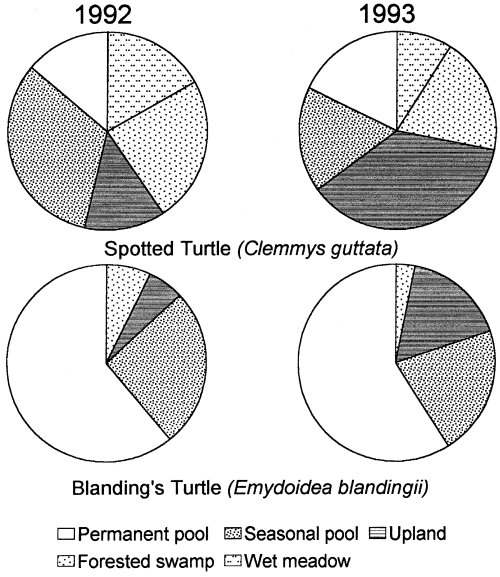
Landscape ecology approaches to wetland species conservation: a case study of two turtle species in southern Maine
1992 to 1993
Summary
The authors investigated the habitat use and movements of two turtle species to assess the importance of conserving multiple wetlands and the upland matrix in which they occur. They found that individuals of both species used multiple wetlands throughout the year, including permanent and seasonal pools, forested swamps, and wet meadows.
Key Personnel & Institutions
People: L. Joyal
Institutions: University of Maine, Orono, Department of Wildlife Ecology
Location
York
Resource Type
Article
Tags
blanding's turtles, mating, nesting, spotted turtles, turtles
Topic Tags
conservation, ecosystem services, wildlife and habitat
Purpose Tags
education
Citation
Joyal, L.A., McCollough, M., & Hunter, M.L. (2001). Landscape ecology approaches to wetland species conservation: a case study of two turtle species in southern Maine. Conservation biology, 15(6), 1755-1762.
Source Link
Forest fragmentation and avian nest predation in forested landscapes
1985
Summary
The authors placed artificial nests containing quail eggs in forests of different sizes and at various distances from the edge to test which of these factors was most important in describing predation. In doing so, they found that large areas and those bordered on at least one side by a large water body had lower predation rates.
Key Personnel & Institutions
People: Mark Small
Institutions: University of Maine, Orono, Department of Wildlife Ecology
Location
Lincoln, Sagadahoc
Resource Type
Article
Tags
artificial nests, forest fragmentation, nest predation, passerines
Topic Tags
conservation, ecosystem services, wildlife and habitat
Purpose Tags
conservation, education
Citation
Small, M.F. & Hunter, M.L. (1988). Forest fragmentation and avian nest predation in forested landscapes. Oecologia, 76(1), 62-64. https://doi.org/10.1007/BF00379601
Source Link
https://www.jstor.org/stable/4218636?seq=1#page_scan_tab_contents
Abundance, distribution, trends, and ownership patterns of early-successional forests in the northeastern United States
1948 to 1999
Summary
The author summarized results of the Forest Inventory and Analysis Program for 11 states in the Northeast to identify recent trends in the area of early-successional forests. The results suggest that the area of total forest land has remained relatively constant in the northeast; however, the area of early-successional forests has declined since the first forest surveys (ca. 1950).
Key Personnel & Institutions
People: R. Brooks
Institutions: United States Department of Agriculture (USDA), Forest Service , United States Department of Agriculture (USDA), Forest Service, Northeastern Research Station
Location
New York, New England
Resource Type
Article
Tags
fragmentation, fia, early successional forest, forest inventory and analysis, forest survey, ownership, parcelization
Topic Tags
management, ecosystem services, wildlife and habitat
Purpose Tags
education
Citation
Brooks, R.T. (2003). Abundance, distribution, trends, and ownership patterns of early-successional forests in the northeastern United States. Forest Ecology and Management, 185(1-2), 65-74.
Source Link
https://www.sciencedirect.com/science/article/pii/S0378112703002469
Socioeconomics drive woody invasive plant richness in New England, USA through forest fragmentation
2013
Summary
The authors tested whether woody invasive plant richness was higher in landscapes with many forest edges relative to other forest types, developing models that demonstrated that woody invasive plant richness was higher in landscapes with more edge forest relative to patch, perforated, and especially core forest types. Identifying these landscape patterns will aid ongoing efforts to use current distribution patterns to better predict where invasive species may occur in unsampled regions under current and future conditions.
Key Personnel & Institutions
People: Jenica Allen
Institutions: University of Connecticut, Department of Ecology and Evolutionary Biology, Duke University, Department of Statistical Science, University of Connecticut, Department of Natural Resources and the Environment
Location
New England
Resource Type
Article
Tags
land use, alien invasive species, exotic plants, ipane, landcover, social-ecological
Topic Tags
management, ecosystem services, wildlife and habitat
Purpose Tags
management, education
Citation
Allen, J. M., Leininger, T. J., Hurd, J. D., Civco, D. L., Gelfand, A. E., and Silander, J. A. (2013). Socioeconomics drive woody invasive plant richness in New England, USA through forest fragmentation. Landscape Ecology, 28(9), 1671-1686. https://doi.org/10.1007/s10980-013-9916-7
Source Link
Niche dimensions of New England cottontails in relation to habitat patch size
1990 to 1992
Summary
The authors examined physical condition, niche dimensions, and survival of New England cottontails (Sylvilagus transitionalis) that occupied 21 habitat patches of different sizes during winter. Skewed sex ratios and low survival rates among rabbits on small patches suggest that these habitats act as sinks to dispersing juveniles from large source patches, possibly making local populations of New England cottontails vulnerable to extinction if large patches of habitat are not maintained.
Key Personnel & Institutions
People: Michael Barbour
Institutions: University of New Hampshire, Department of Natural Resources and the Environment
Location
Strafford
Resource Type
Article
Tags
rabbits, fragmentation, new england cottontail, niche expansion, resource limitations
Topic Tags
conservation, ecosystem services, wildlife and habitat
Purpose Tags
conservation, management, education
Citation
Barbour, M. S., and Litvaitis, J. A. (1993). Niche dimensions of New England cottontails in relation to habitat patch size. Oecologia, 95(3), 321-327. https://doi.org/10.1007/BF00320983
Source Link
Two Countries One Forest
2009 to 2013
Summary
This website provides information about Two Countries, One Forest a major Canadian-U.S. collaborative of conservation organizations, researchers, foundations and conservation-minded individuals.
Key Personnel & Institutions
Institutions: Two Countries One Forest
Location
New York, New England
Resource Type
Website
Tags
conservation, conservation planning, conserved land, ecoregion
Topic Tags
conservation, wildlife and habitat, landscape pattern and connectivity
Purpose Tags
conservation, education
Citation
Two Countries, One Forest. (n.d.). Available at https://programs.wcs.org/2c1forest/
Source Link
How Forest Fragmentation Threatens Biodiversity
2015
Summary
This website discusses the consequences of forest fragmentation on the ecology of the National Parks.
Key Personnel & Institutions
Institutions: EcoWatch
Location
Vermont, Maine
Resource Type
Website
Tags
biodiversity, habitat threats, threats
Topic Tags
drivers, wildlife and habitat, landscape pattern and connectivity
Purpose Tags
education
Citation
EcoWatch. (2015). How Forest Fragmentation Threatens Biodiversity. Available at https://www.ecowatch.com/how-forest-fragmentation-threatens-biodiversity-1882034965.html
Source Link
https://www.ecowatch.com/how-forest-fragmentation-threatens-biodiversity-1882034965.html
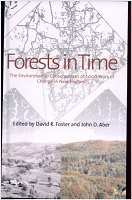
Forests in Time: The Environmental Consequences of 1,000 Years of Change in New England
2006
Summary
This book outlines the rise and fall of eastern hemlock, an iconic and important tree in the northeast. Drawing on a century of studies at Harvard University's Harvard Forest, the authors explore what hemlock's modern decline due to the invasive pest, hemlock woolly adelgid, can tell us about the challenges facing nature and society in an era of habitat changes and fragmentation, as well as global change.
Key Personnel & Institutions
People: David Foster , John Aber
Institutions: Harvard University, Harvard Forest
Location
New England
Resource Type
Book
Tags
global change, habitat fragmentation, land use change
Topic Tags
wildlife and habitat, landscape pattern and connectivity
Purpose Tags
education
Citation
Foster, D.R. and Aber, J.D. (Eds). (2006). Forests in time: the environmental consequences of 1,000 years of change in New England. New Haven, CT: Yale University Press.
Source Link
https://books.google.com/books/about/Forests_in_Time.html?id=GENV8N2qgiMC
Forest island dynamics in man-dominated landscapes
1981
Summary
This book analyzed the patterns found within forest island landscapes.
Key Personnel & Institutions
People: R. Burgess
Location
No location information available
Resource Type
Book
Tags
ecology, human impacts, landscape ecology, natural resources, threats
Topic Tags
drivers, wildlife and habitat, landscape pattern and connectivity
Purpose Tags
education
Citation
Burgess, R.L. and Sharpe, D.M. (Eds.). (1981). Forest island dynamics in man-dominated landscapes. New York: Springer-Verlag, 310 pp.
Source Link
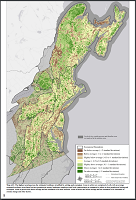
Terrestrial resilience tabloid maps
2011
Summary
Maps identifying areas of terrestrial resilience to climate change
Key Personnel & Institutions
Institutions: The Nature Conservancy
Location
New York, New England
Resource Type
Map
Tags
climate change, habitat, resilience
Topic Tags
conservation, wildlife and habitat, landscape pattern and connectivity
Purpose Tags
education
Citation
The Nature Conservancy. (2011). Map Set. Available online at http://216.92.98.160/assets/terrestrialresiliencetabloidmaps013012.pdf.
Source Link
http://216.92.98.160/assets/terrestrialresiliencetabloidmaps013012.pdf
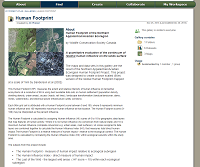
Human footprint of the northern Appalachian/Acadian ecoregion
2013
Summary
The maps and data sets in this gallery are the result of the Northern Appalachian/Acadian Ecoregion Human Footprint Project. This project was designed to create a down scaled (90m) version of the Global Human Footprint mapped at a scale of 1km by Sanderson et al (2002).
Key Personnel & Institutions
Institutions: Data Basin , Two Countries One Forest
Location
New York, New England
Resource Type
Map
Tags
human footprint, human influence index, northern appalachians
Topic Tags
conservation, wildlife and habitat, landscape pattern and connectivity
Purpose Tags
management
Citation
Two Countries One Forest. (2013). Human Footprint [map]. Retrieved from https://2c1forest.databasin.org/galleries/ff9e496d5eb14aadafa22064462c5e65
Source Link
https://2c1forest.databasin.org/galleries/ff9e496d5eb14aadafa22064462c5e65

Public hearing on CMP transmission corridor focuses on mitigating impacts
2019
Summary
This is an article and news clip from the public hearing in Bangor, Maine on the New England Clean Energy Connect (NECEC) Powerline.
Key Personnel & Institutions
People: Spencer Roberts
Institutions: WABI Channel 5
Location
Bangor, Maine
Resource Type
Poster
Tags
Topic Tags
conservation, wildlife and habitat, landscape pattern and connectivity
Purpose Tags
conservation
Citation
Public hearing on CMP transmission corridor focuses on mitigating impacts [Video File]. (2019, May 9). Retrieved from https://www.wabi.tv/content/news/Public-hearing-on-CMP-transmission-corridor-focuses-on-mitigating-impacts-509709651.html
Source Link
History matters: contemporary versus historic structure of bobcats in the New England region, USA
1952 to 2017
Summary
The authors of this study looked for genetic diversity and population structure differences between contemporary (2010-2017) and historic (1952-1964) bobcats. They found that there was a decline in both genetic diversity and differences in genetic population structures over time, suggesting that habitat fragmentation and range dynamics "may play a significant role in population structure."
Key Personnel & Institutions
People: John Litvaitis, Rory Carroll, Marian Litvaitis, Sarah Clements, Clark Stevens
Institutions: University of New Hampshire
Location
New England
Resource Type
Article
Tags
Topic Tags
conservation, wildlife and habitat, landscape pattern and connectivity
Purpose Tags
conservation
Citation
No citation available.
Source Link
https://www.uvm.edu/femc/fragnet/search/?search-query=&filterType=article
Effects of Suburbanizing Landscapes on Reproductive Effort of Vernal Pool-Breeding Amphibians
2014 to 2019
Summary
The authors study the impacts of suburbanization on amphibians that breed in vernal pools in Maine. They found that an increase of impervious surfaces within a kilometer of vernal pools has complex effects on breeding amphibians, with an overall negative effect on these species.
Key Personnel & Institutions
People: Malcolm Hunter, Carly Eakin, Aram Calhoun
Institutions: University of Maine
Location
Maine
Resource Type
Article
Tags
Topic Tags
conservation, wildlife and habitat, landscape pattern and connectivity
Purpose Tags
conservation
Citation
No citation available.
Source Link
http://www.herpconbio.org/Volume_14/Issue_2/Eakin_etal_2019.pdf
2012 to 2019
Summary
Some carnivoran species, such as coyote (Canis latrans), red fox (Vulpes vulpes), and gray fox (Urocyon cinereoargenteus), have semi-adapted to human development and can compete for resources in urban areas. The authors determined site characteristics, prey species, and distribution patterns of these three species in Pioneer Valley, MA.
Key Personnel & Institutions
People: Stephen DeStefaNo , Eric LeFlore, Todd Fuller, John Finn, John Organ
Institutions: United States Geological Survey (USGS) , University of Massachusetts Amherst
Location
Massachusetts
Resource Type
Article
Tags
Topic Tags
conservation, wildlife and habitat, landscape pattern and connectivity
Purpose Tags
conservation
Citation
No citation available.
Source Link
Landscape factors predict local extirpation in an imperilled minnow species, the bridle shiner (Notropis bifrenatus)
1960 to 2019
Summary
The brindle shiner (Notropis bifrenatus) was thought to be in strong decline and extripated from many areas in Connecticut. A recent study suggested that electrofishing is an inefficient method to sample for the brindle shiner, so the authors wanted to test this hypothesis and more accurately describe current brindle shiner populations and reasons for decline.
Key Personnel & Institutions
People: Kasey Pregler, Neal Hagstrom, Eric Schultz, Jason Vokoun
Institutions: University of Connecticut, Connecticut Department of Energy and Environmental Protection (DEEP)
Location
Connecticut
Resource Type
Article
Tags
Topic Tags
conservation, methods, management, wildlife and habitat
Purpose Tags
conservation
Citation
No citation available.
Source Link
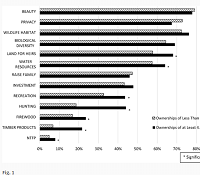
Small-Area Family Forest Ownerships in the USA
2011 to 2018
Summary
The authors researched small family forest owners (<4 ha) to see how they managed their forests in comparison to larger family forest owners, since small family forest owners are often excluded from research due to the small size of their forest holding yet they make up 60% of all family forest owners in the United States.
Key Personnel & Institutions
People: Brett Butler , Marla Markowski-Lindsay, Stephanie Snyder
Institutions: University of Massachusetts Amherst , United States Department of Agriculture (USDA), Forest Service, Northern Research Station
Location
No location information available
Resource Type
Article
Tags
Topic Tags
conservation, management, ecosystem services, wildlife and habitat
Purpose Tags
management
Citation
No citation available.
Source Link
Enhancement of Risk for Lyme Disease by Landscape Connectivity, New York, New York, USA
2017 to 2019
Summary
The authors researched Lyme disease in an urban setting, assessing park connectivity and landscape composition contributions to black-legged tick nymph densities and infection rate.
Key Personnel & Institutions
People: Meredith VanAcker, Eliza Little, Goudarz Molaei, Waheed Bajwa, Maria Diuk-Wasser
Institutions: Connecticut Agricultural Experiment Station , Columbia University , New York Department of Health and Mental Hygiene
Location
New York
Resource Type
Article
Tags
Topic Tags
management, wildlife and habitat, landscape pattern and connectivity
Purpose Tags
management
Citation
No citation available.
Source Link
Forest fragmentation and biodiversity: the case for intermediate-sized conservation areas
2009
Summary
A review of 58 papers on effects of forest fragmentation reveals that general conclusions from fragmentation research are biased due to a focus on birds, on size-effects rather than isolation, and on species presence rather than population sizes. Perhaps the most important finding is that current knowledge on fragmentation effects is based mainly on studies in small fragments (<10 ha).
Key Personnel & Institutions
Not available.Location
New England, New York
Resource Type
Article
Tags
analysis, assessment
Topic Tags
conservation, methods, planning, wildlife and habitat
Purpose Tags
conservation, education
Citation
Zuidema, P.A., Sayer, J.A., Dijkman, W. "Forest Fragmentation and Biodiversity: The Case for Intermediate-sized Conservation Areas." Cambridge Core, Cambridge University Press. vol. 23, issue 4, December 1996, pp. 290-297. Accessed from (https://www.cambridge.org/core/journals/environmental-conservation/article/forest-fragmentation-and-biodiversity-the-case-for-intermediatesized-conservation-areas/34D3DEA131ABA80454D095F505EBAFF7#fndtn-information)
Source Link
Forest fragmentation predicts local scale heterogeneity of Lyme disease risk
2005
Summary
This study tests weather landscape fragmentation plays a role in the Lyme disease risk based on the density of the host species.
Key Personnel & Institutions
People: John S. Brownstein , David K. Skelly , Theodore R. Holford , Durlan Fish
Institutions: Yale University, School of Forestry and Environmental Studies , Boston Children's Hospital , Yale School of Medicine, Department of Epidemiology and Public Health
Location
Connecticut
Resource Type
Article
Tags
lyme disease
Topic Tags
wildlife and habitat, landscape pattern and connectivity
Purpose Tags
education
Citation
No citation available.
Source Link
NECEC And Forest Fragmentation Part 2: The Ovenbird
2019
Summary
A focus on the species that need intact blocks of interior forests and will not be protected well enough by the New England Clean Energy Connect. This part focuses specifically on Ovenbirds.
Key Personnel & Institutions
People: Eliza Donoghue
Institutions: Maine Audubon Society
Location
New England
Resource Type
Poster
Tags
ovenbird
Topic Tags
conservation, ecosystem services, planning, wildlife and habitat
Purpose Tags
conservation, education, policy
Citation
Donoghue, E. 3 April 2019. "NECEC and Forest Fragmentation Part 2: The Ovenbird." Accessed from (https://www.maineaudubon.org/news/necec-and-forest-fragmentation-part-2-the-ovenbird/)
Source Link
https://www.maineaudubon.org/news/necec-and-forest-fragmentation-part-2-the-ovenbird/
NECEC And Forest Fragmentation Part 3: The American Marten
2019
Summary
A focus on the species that need intact blocks of interior forests and will not be protected well enough by the New England Clean Energy Connect. This part focuses specifically on the American Marten.
Key Personnel & Institutions
People: Eliza Donoghue
Institutions: Maine Audubon Society
Location
New England
Resource Type
Poster
Tags
american marten
Topic Tags
conservation, ecosystem services, planning, wildlife and habitat
Purpose Tags
conservation, education, policy
Citation
Donoghue, E. 3 April 2019. "NECEC and Forest Fragmentation Part 2: The Ovenbird." Accessed from (https://www.maineaudubon.org/news/necec-and-forest-fragmentation-part-2-the-ovenbird/)
Source Link
https://www.maineaudubon.org/news/necec-and-forest-fragmentation-part-3-the-american-marten/
Comparing the Climatic and Landscape Risk Factors for Lyme Disease Cases in the Upper Midwest and Northeast United States
2020
Summary
In this study, we explored and compared the climatic and landscape factors that shape the spatial patterns of human Lyme cases in these two regions, using the generalized linear mixed models.
Key Personnel & Institutions
People: Yuting Dong , Zheng Huang , Young Zhang , Yingying X.G. Wang , Yang La
Institutions: Nanjing Normal University, College of Life Sciences , Nanjing Forestry University, College of Biology and the Environment , University of Jyväskylä, Department of Biological and Environmental Science , Medical College, Tibet University
Location
New England
Resource Type
Article
Tags
lyme disease
Topic Tags
management, wildlife and habitat, landscape pattern and connectivity
Purpose Tags
management, education
Citation
Dong, Y.; Huang, Z.; Zhang, Y.; Wang, Y.X.; La, Y. Comparing the Climatic and Landscape Risk Factors for Lyme Disease Cases in the Upper Midwest and Northeast United States. Int. J. Environ. Res. Public Health 2020, 17, 1548.
Source Link
New Hampshire Everlasting: An Initiative to Conserve Our Quality-of-Life
2001
Summary
The Society for the Protection of New Hampshire Forests is a nonprofit membership organization founded in 1901 that has helped protect over one million acres in the state. The Society has on-going programs in land protection, environmental education, advocacy, research, and sustainable forest management. This Article explains the goals of the New Hampsire Everlasting program.
Key Personnel & Institutions
People: Sarah Thorne
Institutions: Society for the Protection of NH Forests
Location
New Hampshire
Resource Type
Article
Tags
Topic Tags
conservation, methods, management, planning, wildlife and habitat
Purpose Tags
conservation, management, education
Citation
Thorne, S. 22 September 2001. "New Hampshire Everlasting: An Initiatibe to Conserve Our Quality-of-Life." Accessed From (https://forestsociety.org/sites/default/files/nheverlasting.pdf)
Source Link
https://forestsociety.org/sites/default/files/nheverlasting.pdf
State of New Hampshire
2019
Summary
A resource overview and management direction for New Hampshire's proposed plans for Ashouelot River Conservation Focus Area, Blueberry Swamp Conservation Focus Area, Mascoma River Conservation Focus area, Pondicherry Conservation Focus Area, and Sprague Brook Conservation Focus area.
Key Personnel & Institutions
Institutions: State of New Hampshire
Location
New Hampshire
Resource Type
Report
Tags
Topic Tags
conservation, management, planning, wildlife and habitat
Purpose Tags
management, policy
Citation
State of New Hampshire. "Resources Overview and Management Direction for Conservation Focus Areas and Refuge Units" Accessed from https://www.fws.gov/uploadedFiles/Region_5/NWRS/North_Zone/Silvio_O_Conte_Complex/Silvio_O_Conte/01(f)w_Appendix_A_Conservation_Focus_Areas_New_Hampshire(435.pdf
Source Link
2017
Summary
This website summarizes that are facing Connecticut's forest, with a focus on birds, and highlights some of the current programs in place to combat these issues.
Key Personnel & Institutions
People: Sean Grace
Institutions: Connecticut Audubon Society
Location
Connecticut
Resource Type
Poster
Tags
Topic Tags
conservation, methods, planning, wildlife and habitat
Purpose Tags
conservation, management, education
Citation
No citation available.
Source Link
A Multi-Scale Perspective of the Effects of Forest Fragmentation on Birds in Eastern Forests
2002
Summary
This is a report of a model that considers forest fragmentation within a spatial hierarchy that includes regional or biogeographic effects, landscape-level fragmentation effects, and local habitat effects. This model is largely a hypothesis based on retroduction from existing studies; nevertheless, the belief is that it has important conservation and research implications.
Key Personnel & Institutions
People: Therese Donovan , Richard DeGraaf , Frank Thompson , John Faaborg , Scott K. Robinson
Institutions: The Cooper Ornithological Society
Location
New England, New York
Resource Type
Report
Tags
Topic Tags
conservation, methods, management, wildlife and habitat
Purpose Tags
conservation, education
Citation
Thompson, Frank R.; Donovan, Therese M.; DeGraff, Richard M.; Faaborg, John; Robinson, Scott K. 2002. "A Multi-Scale Perspective of the Effects of Forest Fragmentation on Birds in Eastern Forests." In: George, T. Luke; Dobkin, David S., eds. Effects of Habitat Fragmentation on Birds in Western Landscapes: Contrasts With Paradigms from the Eastern United States. Studies in Avian Biology. 25:8-19
Source Link
2010
Summary
No additional information available.
Key Personnel & Institutions
People: Ruth Yanai , Dylan Parry , Dustin M. Wood , Nicholas E. Pitel
Institutions: The State University of New York (SUNY), College of Environmental Science and Forestry
Location
Vermont, Massachusetts, New Hampshire, New York
Resource Type
Article
Tags
defoliation, forest tent caterpillar
Topic Tags
conservation, wildlife and habitat, landscape pattern and connectivity
Purpose Tags
conservation, management, education
Citation
Wood, D. M.; Parry, D.; Yanai, R. D.; Pitel, N. E. 2 August, 2010. "Forest Fragmentation and Duration of Forest Tent Caterpillar (Malacosoma disstria Hubner) Outbreaks in Northern Hardwood Forests." Forest Ecology and Management, vol. 260, Issue 7, 31 August 2010, pp. 1193-1197. ScienceDirect https://doi.org/10.1016/j.foreco.2010.07.011
Source Link
https://www.sciencedirect.com/science/article/pii/S0378112710003828
A Meta-Analysis of Forest Cover, Edge Effects, and Artificial Nest Predation Rates
1998
Summary
This study evaluates the relationships between the degree of forest cover in a landscape and 1) avian nest success rates and 2) the existence of elevated predation rates near habitat edges. Data is combined from 13 previous studies in 33 U.S. landscapes to explore patterns of nest predation and landscape composition.
Key Personnel & Institutions
People: Malcolm Hunter, Mitschka J. Hartley
Institutions: University of Maine
Location
Maine, New Hampshire
Resource Type
Report
Tags
predation
Topic Tags
conservation, wildlife and habitat, landscape pattern and connectivity
Purpose Tags
conservation, education
Citation
No citation available.
Source Link
Effects of timber size-class on predation of artificial nests in extensive forest
1988
Summary
Depredation on artificial ground and cup nests in even-aged seedling/sapling, pole, and mature stands of continuous northern harwood forest was studied in the White Mountain National Forest in New Hampshire, USA from May to June 1988. Track-board nests were used to identify predators of ground nests; plain ground nests and cup nests were used to investigate the effects of timber size-class on rates of predation.
Key Personnel & Institutions
People: Richard DeGraaf , Per Angelstam
Institutions: United States Department of Agriculture (USDA), Forest Service, Northeastern Research Station , University of Massachusetts Amherst , Grimsö Wildlife Research Station
Location
New Hampshire
Resource Type
Report
Tags
predation, white mountain national forest
Topic Tags
conservation, management, ecosystem services, wildlife and habitat
Purpose Tags
conservation, management
Citation
DeGraaf, R. M.; Angelstam, P. "Effects of Timber Size-Class on Predation of Artificial Nests in Extensive Forests." Forest Ecology and Management, vol. 61, issues 1-2, October 1993, pp. 127-136. Accessed from https://doi.org/10.1016/0378-1127(93)90194-R
Source Link
https://www.sciencedirect.com/science/article/abs/pii/037811279390194R
Nest predation rates in managed and reserved extensive northern hardwood forests
1991
Summary
Depredation rates on artificial ground and shrub nests in large blocks of managed and remote reserved northern hardwood forests were studied in the White Mountain National Forest (WMNF) (303 930 ha) in New Hampshire, USA, from June to August 1991. Both types of nests were monitored by trip cameras that recorded depredations as eggs were removed.
Key Personnel & Institutions
People: Richard DeGraaf
Institutions: United States Department of Agriculture (USDA), Forest Service, Northeastern Research Station , University of Massachusetts Amherst
Location
New Hampshire
Resource Type
Article
Tags
white mountain national forest
Topic Tags
conservation, management, ecosystem services, wildlife and habitat
Purpose Tags
conservation, management
Citation
DeGraaf, R. M. "Nest Predation Rates in Managed and Reserved Extensive Northern Hardwood Forests." Forest Ecology and Management, vol. 79, issue 3, December 1995, pp. 227-234. Accessed from https://doi.org/10.1016/0378-1127(95)03594-X
Source Link
https://www.sciencedirect.com/science/article/abs/pii/037811279503594X
Forest Fragmentation May Increase Lyme Disease Risk
2003
Summary
This article describes a few results of studies on forest fragmentation and how it relates to blacklegged tick populations in the north eastern United States.
Key Personnel & Institutions
People: Robin Meadows
Institutions: Society For Conservation Biology
Location
New York, New England
Resource Type
Poster
Tags
ticks
Topic Tags
wildlife and habitat, landscape pattern and connectivity
Purpose Tags
conservation, education
Citation
Society For Conservation Biology. "Forest Fragmentation May Increase Lyme Disease Risk." ScienceDaily. ScienceDaily, 30 January 2003.
Source Link
https://www.conservationmagazine.org/2008/07/forest-fragmentation-may-increase-lyme-disease-risk/
Habitat Fragmentation And Arthropod Community Change: Carrion Beetles, Phoretic Mites, And Flies
2001
Summary
No additional information available.
Key Personnel & Institutions
People: James Gibbs , Edward J. Stanton
Institutions: The State University of New York (SUNY)
Location
New York
Resource Type
Report
Tags
insects
Topic Tags
conservation, wildlife and habitat, landscape pattern and connectivity
Purpose Tags
conservation, education
Citation
Gibbs, J.P.; Stanton, E.J. (2001), "HABITAT FRAGMENTATION AND ARTHROPOD COMMUNITY CHANGE: CARRION BEETLES, PHORETIC MITES, AND FLIES." Ecological Applications, Accessed from https://esajournals.onlinelibrary.wiley.com/doi/abs/10.1890/1051-0761(2001)011[0079:HFAACC]2.0.CO;2
Source Link
https://esajournals.onlinelibrary.wiley.com/doi/abs/10.1890/1051-0761(2001)011[0079:HFAACC]2.0.CO;2
A Reevaluation of the Effects of Forest Fragmentation on Rates of Bird?Nest Predation
1995
Summary
This is a presentation of data indicating that the trends reported by quail-egg experiments do not constitute compelling evidence that forest fragmentation increases rates of predation on passerine nests.
Key Personnel & Institutions
People: David G. Haskell
Institutions: Cornell University
Location
New York, New England
Resource Type
Report
Tags
predation
Topic Tags
conservation, wildlife and habitat, landscape pattern and connectivity
Purpose Tags
conservation
Citation
Haskell, D.G. (1995), "A Reevaluation of the Effects of Forest Fragmentation on Rates of Bird?Nest Predation." Conservation Biology, vol 9, issue 5, pp. 1316-1318, Accessed from https://conbio.onlinelibrary.wiley.com/doi/abs/10.1046/j.1523-1739.1995.9051312.x-i1
Source Link
https://conbio.onlinelibrary.wiley.com/doi/abs/10.1046/j.1523-1739.1995.9051312.x-i1
Bottom-Up and Top-Down Effects of Forest Fragmentation Differ Between Dietary Generalist and Specialist Caterpillars
2017 to 2019
Summary
No additional information available.
Key Personnel & Institutions
People: Riley M. Anderson , Nicole M. Dallar , Nikki L. Pirtel , Christian J. Connors , James Mickley , Robert Bagchi , Michael S. Singer
Institutions: Wesleyan University, University of Connecticut, Department of Ecology and Evolutionary Biology
Location
Connecticut
Resource Type
Report
Tags
herbivory, parasites
Topic Tags
conservation, wildlife and habitat, landscape pattern and connectivity
Purpose Tags
conservation, education
Citation
No citation available.
Source Link
https://www.frontiersin.org/articles/10.3389/fevo.2019.00452/full

Forest Fragmentation and Parcelization
2020
Summary
A description of the information on Vermont's forest fragmentation and parcelization by the Mad River Valley Planning District.
Key Personnel & Institutions
People: Jamey Fidel
Institutions: Mad River Valley Planning District
Location
Vermont
Resource Type
Poster
Tags
Topic Tags
wildlife and habitat, landscape pattern and connectivity
Purpose Tags
education
Citation
"Forest Fragmentation and Parcelization" mad River Valley Planning District, Accessed from https://mrvpd.org/forest-fragmentation-and-parcelization/
Source Link
Habitat Loss and Fragmentation
2020
Summary
The Vermont Center for Ecostudies: Vermont Atlas of life website uses this article to talk about habitat loss and fragmentation and the impacts on bird populations.
Key Personnel & Institutions
Institutions: Vermont Center for Ecostudies, VCE
Location
Vermont
Resource Type
Poster
Tags
Topic Tags
conservation, wildlife and habitat, landscape pattern and connectivity
Purpose Tags
conservation, education
Citation
"Habitat Loss and Fragmentation" The Vermont Center for Ecostudies, 2020, Accessed from https://val.vtecostudies.org/projects/vermont-breeding-bird-atlas/habitat-loss-and-fragmentation/
Source Link
https://val.vtecostudies.org/projects/vermont-breeding-bird-atlas/habitat-loss-and-fragmentation/
2019 to 2020
Summary
No additional information available.
Key Personnel & Institutions
People: Allaire Diamond
Institutions: Vermont Land Trust
Location
Vermont
Resource Type
Poster
Tags
Topic Tags
conservation, wildlife and habitat, landscape pattern and connectivity
Purpose Tags
conservation, education
Citation
Diamond, A. "VLT Ecologist Reaches Students With Another Definition for 'Breakups'." Breaking Up Hurts - Why Forest Blocks Matter to Nature and People, Youth Environmental Summit, 1 November 2019, Accessed from https://www.vlt.org/forests-wildlife-nature/youth-environmental-summit-forest-blocks-breakups
Source Link
https://www.vlt.org/forests-wildlife-nature/youth-environmental-summit-forest-blocks-breakups
Results of the Vermont Forest Bird Monitoring Program, 1989-1996
1989 to 1996
Summary
This study conducted a statistical analysis of breeding census data from the first 8 years (1989-1996) of the Vermont Forest Bird Monitoring Program (FBMP). Data were collected at 17 study sites located in large tracts (=40.5 ha) of mature, forested habitats in Vermont.
Key Personnel & Institutions
People: Christopher Rimmer , Kent McFarland , Steven Faccio
Institutions: VINS (Vermont Institute of Natural Science)
Location
Vermont
Resource Type
Article
Tags
mature forests
Topic Tags
conservation, wildlife and habitat, landscape pattern and connectivity
Purpose Tags
conservation
Citation
No citation available.
Source Link
Area Sensitive Distributions Counteract Negative Effects Of Habitat Fagmentation On Breeding Birds
2001
Summary
This study used a modeling approach to determine the conditions under which fragmentation of breeding habitat can cause landscape?scale population declines in songbirds. The simulated species resided in a system of forest patches (a landscape) and could potentially disperse among patches between breeding seasons.
Key Personnel & Institutions
People: Therese Donovan , Roland L. Lamberson
Institutions: The State University of New York (SUNY), Humboldt State University
Location
New England, New York
Resource Type
Article
Tags
breeding
Topic Tags
conservation, wildlife and habitat, landscape pattern and connectivity
Purpose Tags
conservation
Citation
Donovan, T. M.; Lamberson, R. H. "Area-Sensitive Distributions Counteract Negative Effects of Habitat Fragmentation on Breeding Birds." Ecology Ecological Society of America, vol 82, issue 4, pp. 1170-1179, 1 April 2001, Accessed from https://doi.org/10.1890/0012-9658(2001)082[1170:ASDCNE]2.0.CO;2
Source Link
https://esajournals.onlinelibrary.wiley.com/doi/abs/10.1890/0012-9658(2001)082[1170:ASDCNE]2.0.CO;2
Landscape-Level Habitat Use by Brown-Headed Cowbirds in Vermont
1995
Summary
This report is on a study of the distribution of brown-headed cowbirds (Molothrus ater) in a forested landscape in central Vermont to better understand the effects of forest disturbance on the occurrence of this species in New England.
Key Personnel & Institutions
People: Dave Capen , Daniel R. Coker
Institutions: University of Vermont, Rubenstein School of Environment and Natural Resources
Location
Vermont
Resource Type
Article
Tags
Topic Tags
conservation, wildlife and habitat, landscape pattern and connectivity
Purpose Tags
conservation, education
Citation
No citation available.
Source Link
Active Humans, Inactive Carnivores, and Hiking Trails within a Suburban Preserve
2011 to 2012
Summary
The objectives of this study were to investigate the spatial and temporal activity patterns of mammalian carnivores in relation to distance from hiking trails. From 2011-2012, 236 camera stations were randomly deployed between trail and off-trail areas that covered an area of 4.8km2.
Key Personnel & Institutions
People: Melissa M. Grigione , Sonny Bandak , Ronald J. Sarno , Michaela C. Peterson , Daniel Farkas
Institutions: Hofstra University, Department of Biology , Pace University
Location
New York, New England
Resource Type
Report
Tags
mammals, carnivores
Topic Tags
conservation, wildlife and habitat, landscape pattern and connectivity
Purpose Tags
conservation
Citation
"Bandak, Sonny; Sarno, Ronald J.; Peterson, Michaela C.; Farkas, Daniel; and Grigione, Melissa M. (2020) ""Active Humans, Inactive Carnivores, and Hiking Trails within a Suburban Preserve,"" Suburban Sustainability: Vol. 6 : Iss. 1 , Article 1. https://www.doi.org/https://doi.org/10.5038/2164-0866.6.1.1032 Available at: https://scholarcommons.usf.edu/subsust/vol6/iss1/1"
Source Link
New Report Reveals 'Breaking Up' of Vermont Forest Parcels
2018
Summary
No additional information available.
Key Personnel & Institutions
Institutions: Vermont Business Magazine
Location
Vermont
Resource Type
Poster
Tags
Topic Tags
conservation, wildlife and habitat, landscape pattern and connectivity
Purpose Tags
conservation
Citation
Vermont Business Magazine "New Report Reveals 'Breaking Up' of Vermont Forest Parcels." 25 October 2018, Accessed from https://vermontbiz.com/news/2018/october/25/new-report-reveals-breaking-vermont-forest-parcels
Source Link
https://vermontbiz.com/news/2018/october/25/new-report-reveals-breaking-vermont-forest-parcels
2019
Summary
From warblers and thrushes to vireos and flycatchers, Vermont provides summer breeding habitat for some of the greatest diversity of neotropical migratory songbirds found anywhere in the lower 48 states. Many of these species are at risk due to loss of suitable habitat, forest fragmentation, introduced species, incompatible forest management, and climate change. Bird conservation in the 21st century requires a proactive, multi-disciplinary approach.
Key Personnel & Institutions
People: Steve Hagenbuch
Institutions: Audubon Vermont , American Forest Foundation
Location
Vermont
Resource Type
Poster
Tags
climate change, breeding birds, bird, breeding
Topic Tags
conservation, wildlife and habitat, landscape pattern and connectivity
Purpose Tags
conservation, education
Citation
Hagenbuch, S. "Webinar: Conserving Vermont's Forest Birds." Woods and Wildlife, 2019, Accessed from https://vimeo.com/332483829
Source Link
2017 The Status Of Vermont Forest Birds: A Quarter Century of Monitoring
1998 to 2017
Summary
No additional information available.
Key Personnel & Institutions
Institutions: Vermont Center for Ecostudies
Location
Vermont
Resource Type
Report
Tags
songbirds
Topic Tags
conservation, wildlife and habitat, landscape pattern and connectivity
Purpose Tags
conservation
Citation
Vermont Center for Ecostudies "2017 The Status Of Vermont Forest Birds: A Quarter Century of Monitoring." 2017, Accessed from https://vtecostudies.org/wp-content/uploads/2017/04/Status-of-VT-Forest-Birds.pdf
Source Link
https://vtecostudies.org/wp-content/uploads/2017/04/Status-of-VT-Forest-Birds.pdf
Assessment of the Impact of Forest Habitat Fragmentation Through Analysis of Genetic Variability of Wood Frogs in Continuous and Discontinuous Forested Swamp Areas in Connecticut
1995 to 1996
Summary
The purpose of this study is to assess the ecological and genetic consequences due to habitat fragmentation. To assess the impact that barriers such as roadways have on small bodied, forest-dwelling animals, this study will focus on the genetic variability in wood frogs, Rana sylvatica, in discontinuous and continuous forested swamp areas in Connecticut.
Key Personnel & Institutions
People: Karen H. Beard , Benjamin H. Packard
Institutions: Yale University
Location
Connecticut
Resource Type
Report
Tags
frogs, roadways
Topic Tags
conservation, wildlife and habitat, landscape pattern and connectivity
Purpose Tags
conservation, education
Citation
Beard, K. H.; Packard, B. H.; "Assessment of the Impact of Forest Habitat Fragmentation Through Analysis of Genetic Variability of Wood Frogs in Continuous and Discontinuous Forested Swamp Areas in Connecticut" 14 August 1996, Accessed from https://cfpub.epa.gov/ncer_abstracts/index.cfm/fuseaction/display.abstractDetail/abstract/2153
Source Link
https://cfpub.epa.gov/ncer_abstracts/index.cfm/fuseaction/display.abstractDetail/abstract/2153
Response of Bird Populations To Long-Term Changes In Local Vegetation and Regional Forest Cover
2015
Summary
This study analyzed data from a woodland site for a 59-year period to determine whether changes in bird populations are related to changes in the diversity and relative abundance of woody plant species even when vegetation structure, degree of forest fragmentation in the surrounding landscape, and regional changes in bird populations are taken into account. Principal component analyses generated vegetation factors encompassing variables such as total basal area, shrub density, basal area of common tree species, and measures of tree and shrub species diversity. It also calculated a forest edge/forest area index based on GIS analysis of the landscape within 2 km of the study site.
Key Personnel & Institutions
People: Robert Askins , Mary Buchanan , Chad C. Jones
Institutions: Connecticut College, University of Connecticut
Location
Connecticut
Resource Type
Article
Tags
plant species, birds, gis
Topic Tags
conservation, wildlife and habitat, landscape pattern and connectivity
Purpose Tags
conservation, education
Citation
No citation available.
Source Link
Relationship Between the Regional Abundance of Forest and the Composition of Forest Bird Communities
1987
Summary
This study surveyed bird populations in 46 forest tracts in Connecticut, USA, to determined how the distribution of birds is related to forest area, isolation from other forest, and vegetation structure.
Key Personnel & Institutions
People: Robert Askins , Margarett J. Philbrick
Institutions: Connecticut College
Location
Connecticut
Resource Type
Article
Tags
birds
Topic Tags
conservation, wildlife and habitat, landscape pattern and connectivity
Purpose Tags
conservation
Citation
Askins, R. A.; Philbrick, M. J.; Sugeno, D. S. "Relationship Between the Regional Abundance of Forest and the Composition of Forest Bird Communities" Biological Conservation, vol. 39, issue 2, 1987, pp. 129-152, 6 March 1986. Accessed from https://www.sciencedirect.com/science/article/abs/pii/0006320787900309
Source Link
https://www.sciencedirect.com/science/article/abs/pii/0006320787900309
Regional-Scale Assessment of Deer Impacts on Vegetation Within Western Connecticut, USA
2010
Summary
This study conducted a survey in western Connecticut, USA, woodlots to examine how spatial variation in deer densities influences variation in impacts on plant species abundance, identity and diversity, and tree regeneration. It also used a Geographic Information System to quantify trends between land?cover type and deer density.
Key Personnel & Institutions
Institutions: Yale University, School of Forestry and Environmental Studies
Location
Connecticut
Resource Type
Report
Tags
deer
Topic Tags
wildlife and habitat, landscape pattern and connectivity
Purpose Tags
education
Citation
Rutherford, A. C.; Schmitz, O. J. "Regional?Scale Assessment of Deer Impacts on Vegetation Within Western Connecticut, USA" The Journal of Wildlife Management, col 74, issue 6, August 2010, pp. 1257-1263. Accessed from https://wildlife.onlinelibrary.wiley.com/doi/abs/10.1111/j.1937-2817.2010.tb01246.x
Source Link
https://wildlife.onlinelibrary.wiley.com/doi/abs/10.1111/j.1937-2817.2010.tb01246.x
Nonnative Vegetation Dynamics in the Understory of a Fragmented Temperate Forest
2019
Summary
This study examined 11 years of compositional and structural change in a small (60 ha) forest preserve in Connecticut with abundant invasive plants, a diverse land use history, and varied edaphic characteristics. It quantified the extent to which vegetation composition changed at the species, life form, and community scales and then assessed the possible factors driving these changes.
Key Personnel & Institutions
People: David Foster , Edward Faison , Betsy Von Holle , Joshua M. Rapp , Sarah Moore
Institutions: Harvard University, Harvard Forest , Harvard University , Highstead
Location
Connecticut
Resource Type
Article
Tags
invasives
Topic Tags
conservation, methods, management, wildlife and habitat
Purpose Tags
conservation, management
Citation
No citation available.
Source Link
Emigration Behavior of Spotted Salamanders on Golf Courses in Southern Rhode Island
2006
Summary
Few studies have investigated the emigration behavior of adult ambystomatid salamanders in fragmented landscapes. This study assessed the emigration behavior of 30 Spotted Salamanders (Ambystoma maculatum) by implanting transmitters in 2003. Study sites, all in southern Rhode Island, included an active golf course, a golf course under construction, and a closed-canopy forest that served as a control site.
Key Personnel & Institutions
People: Katherine E. Montieth , Peter W. C. Paton
Institutions: University of Rhode Island, Department of Natural Resources Science
Location
Rhode Island
Resource Type
Report
Tags
salamanders
Topic Tags
conservation, wildlife and habitat, landscape pattern and connectivity
Purpose Tags
conservation
Citation
No citation available.
Source Link
2018
Summary
No additional information available.
Key Personnel & Institutions
People: Steve Ahlquist
Institutions: Uprise RI
Location
Rhode Island
Resource Type
Poster
Tags
Topic Tags
conservation, ecosystem services, planning, wildlife and habitat
Purpose Tags
conservation, education, policy
Citation
Ahlqyist, S. "If Invenergy Builds a Power Plant in Northwest Rhode Island, This is What We Lose" Uprise RI, 10 July 2018, Accessed from https://upriseri.com/2018-07-10-what-we-lose/
Source Link
Habitat Correlates of Reproductive Effort in Wood Frogs and Spotted Salamanders in an Urbanizing Watershed
2007
Summary
This study was interested in the effects of habitat characteristics on amphibian population size and used Wood Frog (Rana sylvatica) and Spotted Salamander (Ambystoma maculatum) egg mass counts as an index. Between 2001 and 2005, it monitored 65 seasonal ponds within forested landscapes in the Pawcatuck River watershed of Rhode Island.
Key Personnel & Institutions
People: Peter W. C. Paton , Dennis E. Skidds , Francis C. Golet , Jonathan C. Mitchell
Institutions: National Park Service, NPS, University of Rhode Island
Location
Rhode Island
Resource Type
Report
Tags
amphibians, salamanders
Topic Tags
conservation, wildlife and habitat, landscape pattern and connectivity
Purpose Tags
conservation
Citation
No citation available.
Source Link
Effects of Landscape Fragmentation and Climate on Lyme Disease Incidence in the Northeastern United States
2014
Summary
This study explores the influence of landscape (e.g., land use pattern and landscape fragmentation) and climatic factors (e.g., temperature and precipitation) at a regional scale on Lyme disease incidence. The study area includes thirteen states in the Northeastern United States.
Key Personnel & Institutions
People: Phoebe Minh Tran , Lance Waller
Institutions: Emory University
Location
New York, New England
Resource Type
Article
Tags
lyme disease
Topic Tags
management, wildlife and habitat, landscape pattern and connectivity
Purpose Tags
management
Citation
No citation available.
Source Link
Landscape and Habitat Predictors of Canada Warbler (Wilsonia Canadensis) and Northern Waterthrush (Seiurus noveboracensis) Occurrence in Rhode Island Swamps
1999
Summary
This thesis examined the relative influence of forest habitat characteristics and landscape context on the presence of Canada Warblers (Wilsonia canadensis) and Northern Waterthrushes (Seiurus noveboracensis) in 80 survey plots located in 44 Rhode Island forested swamps during 1997 and 1998. It used both univariate and forward stepwise logistic regression analysis to create models for predicting the probability of occurrence, or incidence, of each species.
Key Personnel & Institutions
People: Francis C. Golet , Nicholas A. Miller
Institutions: University of Rhode Island
Location
Rhode Island
Resource Type
Report
Tags
birds
Topic Tags
conservation, wildlife and habitat, landscape pattern and connectivity
Purpose Tags
conservation, education
Citation
No citation available.
Source Link
Emerging Dragonfly Diversity at Small Rhode Island (U.S.A.) Wetlands Along an Urbanization Gradient
2004 to 2010
Summary
Natural habitat use by dragonflies was assessed on an urban to rural land-use gradient at a set of 21 wetlands, during two emergence seasons (2004, 2005). The wetlands were characterized for urbanization level by using the first factor from a principal components analysis combining chloride concentration in the wetland and percent forest in the surrounding buffer zone. Measurements of species diversity and its components (species richness and evenness) were analyzed and compared along the urbanization gradient, as were distributions of individual species.
Key Personnel & Institutions
People: Howard Ginsberg, Maria Aliberti Lubertazzi
Institutions: University of Rhode Island
Location
Rhode Island
Resource Type
Article
Tags
urbanization
Topic Tags
conservation, wildlife and habitat, landscape pattern and connectivity
Purpose Tags
conservation
Citation
No citation available.
Source Link
Forest Disturbance Process: Fragmentation and Land Use Change
2013
Summary
NRS researchers are working to develop a better understanding of land use and land cover change and the effects of forest fragmentation and to develop knowledge and tools to help people make informed choices about how they use natural resources.
Key Personnel & Institutions
Institutions: United States Department of Agriculture (USDA), Forest Service, Northern Research Station
Location
New York, New England
Resource Type
Website
Tags
natural resources
Topic Tags
conservation, wildlife and habitat, landscape pattern and connectivity
Purpose Tags
conservation, education, policy
Citation
"Fragmentation and Land Use Change" Forest Disturbance Processes, April 11, 2013, Accessed from https://www.nrs.fs.fed.us/disturbance/land_use_fragmentation/
Source Link
https://www.nrs.fs.fed.us/disturbance/land_use_fragmentation/
Workshop Proceedings: Management of North Central and Northeastern Forests for Nongame Birds
1979
Summary
This is an overview of the third workshop of the National Nongame Bird Steering Committee. The purpose of this workshop is to share state of the art nongame bird research and management in various ecoregions of the United States.
Key Personnel & Institutions
People: Robert A. Hann
Institutions: United States Department of Agriculture (USDA), Forest Service, United States Department of Agriculture (USDA), Forest Service, North Central Forest Experiment Station
Location
New York, New England
Resource Type
Report
Tags
birds
Topic Tags
conservation, management, planning, wildlife and habitat
Purpose Tags
conservation, management, education
Citation
Hann, R. A. "Workshop Proceedings: Management of North Central and Northeastern Forests for Nongame Birds" 1992, Accessed from https://books.google.com/books?hl=en&lr=&id=3vcTAAAAYAAJ&oi=fnd&pg=PA198&dq=forest+fragmentation+northeast+us&ots=ZQbkzT-qqF&sig=4Kf_Jg5yuZqvaCeuKKNYphk9rSk#v=onepage&q&f=false
Source Link
Defining Forest Fragmentation by Corridor Width: The Influence of Narrow Forest-Dividing Corridors on Forest-Nesting Birds in Southern New Jersey
1994
Summary
This study examined three types of ubiquitous, narrow, forest-dividing corridors for effects that influence the relative abundance and community composition of forest-nesting birds.
Key Personnel & Institutions
People: Adam C. Rich , David S. Dobkin , Lawrence J. Niles
Institutions: Society For Conservation Biology , High Desert Ecological Research Institute
Location
No location information available
Resource Type
Article
Tags
birds, corridor, nesting
Topic Tags
conservation, wildlife and habitat, landscape pattern and connectivity
Purpose Tags
conservation
Citation
Rich, A.C., Dobkin, D.S. and Niles, L.J. (1994), "Defining Forest Fragmentation by Corridor Width: The Influence of Narrow Forest-Dividing Corridors on Forest-Nesting Birds in Southern New Jersey". Conservation Biology, 8: 1109-1121. https://doi.org/10.1046/j.1523-1739.1994.08041109.x
Source Link
https://conbio.onlinelibrary.wiley.com/doi/abs/10.1046/j.1523-1739.1994.08041109.x
Forest Canopy Closure and Juvenile Emigration by Pool-Breeding Amphibians in Maine
1999
Summary
This study examined whether selection occurs for closed-canopy forest conditions during emigration by using pitfall traps and drift fences to sample naturally occurring populations of wood frogs and spotted salamanders along recently created forest clearcut edges in central Maine.
Key Personnel & Institutions
People: Malcolm Hunter, Phillip DeMaynadier
Institutions: University of Maine, Orono, Department of Wildlife Ecology
Location
Maine
Resource Type
Article
Tags
amphibians, vernal pools, canopy
Topic Tags
conservation, wildlife and habitat, landscape pattern and connectivity
Purpose Tags
conservation
Citation
No citation available.
Source Link
Effects of Silvicultural Edges on the Distribution and Abundance of Amphibians in Maine
2008
Summary
To better understand the importance of edge effects on amphibians in a forested landscape, this study sampled the distribution of populations along drift fences placed perpendicular to silvicultural edges of varying contrast in central Maine.
Key Personnel & Institutions
People: Malcolm Hunter, Phillip DeMaynadier
Institutions: University of Maine, Orono, Department of Wildlife Ecology, Society For Conservation Biology
Location
Maine
Resource Type
Article
Tags
silviculture, abundance, amphibian, distribution, edge
Topic Tags
conservation, wildlife and habitat, landscape pattern and connectivity
Purpose Tags
conservation
Citation
Demaynadier, P.G., Hunter, M.L. (1998), "Effects of Silvicultural Edges on the Distribution and Abundance of Amphibians in Maine". Conservation Biology, 12: 340-352. https://doi.org/10.1111/j.1523-1739.1998.96412.x
Source Link
https://conbio.onlinelibrary.wiley.com/doi/abs/10.1111/j.1523-1739.1998.96412.x
Active Forest Management Reduces Blacklegged Tick and Tick-Borne Pathogen Exposure Risk
2018 to 2019
Summary
This was a two year study that tested the hypothesis that recent timber harvesting impacts blacklegged tick density and infection prevalence in managed nonindustrual forests
Key Personnel & Institutions
People: Jessica Leahy, Christine E. Conte , Allison M. Gardner
Institutions: University of Maine, School of Forest Resources , University of Maine, School of Forest Resources , University of Maine, School of Biology and Ecology
Location
Hancock, Maine
Resource Type
Article
Tags
ticks, pathogens
Topic Tags
management, wildlife and habitat, landscape pattern and connectivity
Purpose Tags
management
Citation
No citation available.
Source Link
https://link.springer.com/article/10.1007/s10393-021-01531-1
Fine-Scale Habitat Use and Movement of Wood Turtles (Gluptemys Insculpta) in the Northwoods of Maine and Vermont
2020
Summary
The movement and fine-scale habitat selection of two wood turtle populations was analyzed to inform management strategies that help sustain these wood turtle populations. This research also provides baseline data for populations located in relatively unfragmented habitat.
Key Personnel & Institutions
People: Sierra R. Marchacos
Institutions: Unity College , Plymouth State University
Location
Vermont, Maine
Resource Type
Report
Tags
turtles
Topic Tags
conservation, wildlife and habitat, landscape pattern and connectivity
Purpose Tags
conservation
Citation
Marchacos, S. R., "Fine-Scale Habitat Use and Movement of Wood Turtles (Gluptemys Insculpta) in the Northwoods of Maine and Vermont". Unity College, Plymouth State University, December 2020. Accessed from (https://www.proquest.com/openview/514cc50012e0378b3c03ed0f6ae96018/1?pq-origsite=gscholar&cbl=44156)
Source Link
https://www.proquest.com/openview/514cc50012e0378b3c03ed0f6ae96018/1?pq-origsite=gscholar&cbl=44156
A Closer Look at Forests on the Edge: Future Development on Private Forests in Three States
2008
Summary
This book examines the factors behind projected patterns of residential development and conversion of private forest land by 2030 in northwestern Washington, southern Maine and northwestern Georgia.
Key Personnel & Institutions
People: Eric M. White
Institutions: United States Department of Agriculture (USDA), Forest Service, Pacific Northwest Research Station
Location
Maine
Resource Type
Book
Tags
private forests
Topic Tags
conservation, ecosystem services, wildlife and habitat
Purpose Tags
conservation
Citation
White, E.M. "A Closer Look at Forests on the Edge: Future Development on Private Forests in Three States" USDA Forest Service, Pacific Northwest Research Station. May 2008. Accessed from (https://books.google.com/books?hl=en&lr=&id=_BTJPvR8n8AC&oi=fnd&pg=PP9&dq=forest+parcelization+maine&ots=4sJ4SGlKtt&sig=kbE86lB5vMSbpIgr4XxquJYTgbs#v=onepage&q&f=false)
Source Link
2019
Summary
This is a report on the forests of New York and their importance in the habitat of birds and conservation for those bird populations.
Key Personnel & Institutions
People: Suzanne Treyger
Institutions: Audubon New York
Location
New York
Resource Type
Report
Tags
birds
Topic Tags
conservation, management, ecosystem services, wildlife and habitat
Purpose Tags
conservation, management
Citation
No citation available.
Source Link
https://ny.audubon.org/sites/default/files/free_guide_forest_management_new_york_birds.pdf
2015
Summary
No additional information available.
Key Personnel & Institutions
Institutions: Linking Lands Alliance
Location
Vermont
Resource Type
Article
Tags
threats
Topic Tags
conservation, methods, management, planning, wildlife and habitat
Purpose Tags
conservation, management, education
Citation
No citation available.
Source Link
Monitoring Forest Bird Populations in Vermont: Results of the Vermont Forest Bird Monitoring Program, 1989-1996
1989 to 1996
Summary
Using data from the first eight years of the Vermont Forest Bird Monitoring Program, a statistical analysis of birds censused during breeding season was conducted at 17 study sites located in mature, forested habitats in Vermont.
Key Personnel & Institutions
People: Christopher Rimmer , Kent McFarland , Steven Faccio
Institutions: VINS (Vermont Institute of Natural Science)
Location
Vermont
Resource Type
Report
Tags
birds
Topic Tags
conservation, wildlife and habitat, landscape pattern and connectivity
Purpose Tags
conservation
Citation
Faccio, S. D., Rimmer, C. C., McFarland, K. P. "Monitoring Forest Bird Populations in Vermont: Results of the Vermont Forest Bird Monitoring Program, 1989-1996" Vermont Institute of Natural Science, November 1997. Accessed from (https://www.uvm.edu/femc/attachments/project/999/reports/BirdPopulations.pdf)
Source Link
https://www.uvm.edu/femc/attachments/project/999/reports/BirdPopulations.pdf
2020
Summary
No additional information available.
Key Personnel & Institutions
People: Jesse Leavenworth
Institutions: Hartford Courant
Location
Connecticut
Resource Type
Article
Tags
weather, insects, forest cover
Topic Tags
conservation, ecosystem services, drivers, wildlife and habitat
Purpose Tags
conservation
Citation
No citation available.
Source Link
Forest Bird Habitat Assessment
2016 to 2017
Summary
Information in this report is presented from the landscape level to the property level. This assessment was conducted in order to determine what birds are currently utilizing the habitats on the property, describe and assess current forest bird habitat conditions on the property and make recommendations for protecting and improving habitat for a suite of priority forest birds.
Key Personnel & Institutions
Institutions: Connecticut Agricultural Experiment Station , Ferrucci & Walicki, LLC , Audubon Connecticut
Location
Connecticut
Resource Type
Report
Tags
birds
Topic Tags
conservation, management, ecosystem services, wildlife and habitat
Purpose Tags
conservation, management, education
Citation
"Forest Bird Habitat Assessment" Audubon Connecticut, 28 February, 2017. Accessed from (https://www.cantonlandtrust.org/static/docs/sww-audubon-2017.pdf)
Source Link
https://www.cantonlandtrust.org/static/docs/sww-audubon-2017.pdf
Natural Resources Inventory
2018
Summary
No additional information available.
Key Personnel & Institutions
Institutions: North Smithfield Land Trust
Location
Rhode Island
Resource Type
Article
Tags
inventory, natural resources
Topic Tags
conservation, management, ecosystem services, wildlife and habitat
Purpose Tags
conservation, management
Citation
"Natural Resources Inventory" North Smithfield Land Trust, 12 December, 2018. Accessed from (https://www.nsmithfieldri.org/sites/g/files/vyhlif3596/f/uploads/natural_resources_12-12-18.pdf)
Source Link
https://www.nsmithfieldri.org/sites/g/files/vyhlif3596/f/uploads/natural_resources_12-12-18.pdf

Predictors of Species Sensitivity to Fragmentation
2001
Summary
This study reviewed empirical data and hypotheses derived from demographic, optimal foraging, life-history, community, and biogeographic theory for predicting the sensitivity of species to habitat fragmentation.
Key Personnel & Institutions
People: Klaus Henle , Kendi F. Davies , Michael Kleyer , Chris Margules , Josef Settele
Institutions: University of California Berkeley, Department of Environmental Science, Policy, and Management , Floreat - CSIRO , CSIRO Land and Water Flagship , Carl von Ossietzky University Oldenburg , Helmholtz Centre for Environmental Research
Location
Vermont, Massachusetts, Maine, New York, New Hampshire, Connecticut, Rhode Island, New England
Resource Type
Report
Tags
Topic Tags
conservation, wildlife and habitat, landscape pattern and connectivity
Purpose Tags
conservation
Citation
No citation available.
Source Link
https://link.springer.com/article/10.1023/B:BIOC.0000004319.91643.9e#citeas

Extinction, Causes of
2013
Summary
This chapter of the Encyclopedia of Biodiversity (Second Edition) focuses on the threats effecting biodiversity as the human population grows.
Key Personnel & Institutions
People: Richard Primack , Rachel A. Morrison
Institutions: Boston University , National Institute of Oceanography , Scripps Institute of Oceanography
Location
Vermont, Massachusetts, Maine, New York, New Hampshire, Connecticut, Rhode Island, New England
Resource Type
Article
Tags
extinction
Topic Tags
conservation, ecosystem services, drivers, wildlife and habitat
Purpose Tags
conservation
Citation
Primack, R.B., Morrison, R.A. "Extinction, Cause of". Encyclopedia of Biodiversity ed.2, pp 401-412, 2013. https://doi.org/10.1016/B978-0-12-384719-5.00050-2
Source Link
https://www.sciencedirect.com/science/article/pii/B9780123847195000502
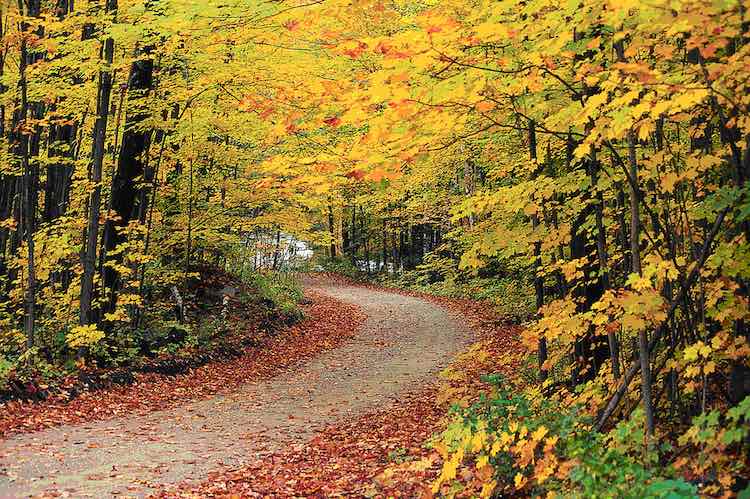
2014
Summary
This article outlines the impacts of humans on the environment from a prehistoric time all the way up to and beyond the human population boom with a focus on climate change and invasive species.
Key Personnel & Institutions
People: Scott A. Elias
Institutions: University of London
Location
Vermont, Massachusetts, Maine, New York, New Hampshire, Connecticut, Rhode Island, New England
Resource Type
Article
Tags
human impacts
Topic Tags
conservation, ecosystem services, drivers, wildlife and habitat
Purpose Tags
conservation
Citation
No citation available.
Source Link
https://www.sciencedirect.com/science/article/pii/B9780124095489091442
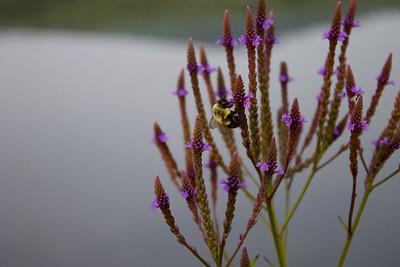
Bees, Specialists and Global Change in Forests of the Northeastern United States
2020
Summary
This dissertation focuses on two types of specialization found in wild bees. The first of these is foraging-bout specialization, whereby an individual bee will visit a single plant species during a foraging bout. The second focus is on forest specialist bee species, which depend exclusively on forest habitat for their survival. Evidence from non-bee taxa suggests that, in general, forest specialists are particularly vulnerable to decline, given widespread deforestation.
Key Personnel & Institutions
People: Colleen Smith
Institutions: Rutgers University
Location
Vermont, Massachusetts, Maine, New York, New Hampshire, Connecticut, Rhode Island, New England
Resource Type
Report
Tags
Topic Tags
conservation, ecosystem services, drivers, wildlife and habitat
Purpose Tags
conservation
Citation
No citation available.
Source Link
Forest Fragmentation and Lyme Disease in the Northeastern US
2014
Summary
Fragmentation has had important consequences for the animal host communities that support tick populations and transmission of the Lyme disease spirochete in the region, including evidence that fragmented forests support fewer vertebrate species, higher abundance of reservoir hosts for the bacteria and larger populations of ticks.
Key Personnel & Institutions
People: Andrew MacDonald
Location
Vermont, Massachusetts, Maine, New York, New Hampshire, Connecticut, Rhode Island, New England
Resource Type
Article
Tags
lyme disease
Topic Tags
drivers, wildlife and habitat, landscape pattern and connectivity
Purpose Tags
education
Citation
Macdonald, A. J.. "Forest Fragmentation and Lyme Disease in the Northeastern US" 2014. Accessed from (https://andrewjmacdonald.weebly.com/forest-fragmentation-and-lyme-disease-transmission-in-the-us-northeast.html)
Source Link
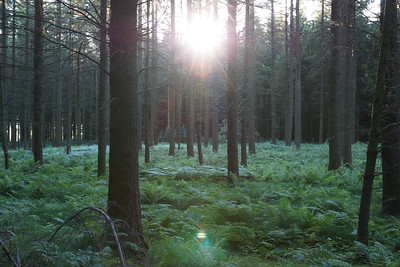
Effects of Terrestrial Transport Corridors and Associated Landscape Context on Invasion by Forest Plants
2020
Summary
No additional information available.
Key Personnel & Institutions
People: Kurt Ritters , Samuel F. Ward , Benjamin S. Taylor , Kelly-Ann Dixon Hamil , Songlin Fei
Institutions: United States Department of Agriculture (USDA), Forest Service, Southern Research Station , Purdue University, Purdue University, Department of Forestry and Natural Resources , University of the West Indies, Mona Campus, Department of Economics
Location
Vermont, Massachusetts, Maine, New York, New Hampshire, Connecticut, Rhode Island, New England
Resource Type
Article
Tags
plants, corridors, terrestrial habitat
Topic Tags
conservation, wildlife and habitat, landscape pattern and connectivity
Purpose Tags
conservation
Citation
No citation available.
Source Link
https://link.springer.com/article/10.1007/s10530-020-02308-3
Deer Wintering Areas and Forest Fragmentation
2013
Summary
This map contrasts deer wintering sites with areas of human-induced forest fragmentation and conserved lands in Maine. Fragmentation is represented as the percentage of remaining forest cover.
Key Personnel & Institutions
Institutions: Colby College
Location
Maine
Resource Type
Map
Tags
Topic Tags
conservation, wildlife and habitat, landscape pattern and connectivity
Purpose Tags
conservation
Citation
Abel V., "Deer Wintering Areas and Forest Fragmentation," Atlas of Maine: Vol. 2013: No. 1, Article 15. Available at: https://digitalcommons.colby.edu/atlas_docs/vol2013/iss1/15
Source Link
https://digitalcommons.colby.edu/atlas_docs/vol2013/iss1/15/
Forest Health Monitoring: 2005 National Technical Report
2005 to 2007
Summary
This annual technical report is a product of the Forest Health Monitoring (FHM) program. The report provides information about a variety of issues relating to forest health at the national scale. Previous FHM national reports have had a dual focus of presenting analyses of the latest available data and showcasing innovative techniques for analyzing forest health data.
Key Personnel & Institutions
People: Mark Ambrose
Institutions: United States Department of Agriculture (USDA), Forest Service, Southern Research Station
Location
Vermont, Massachusetts, Maine, New York, New Hampshire, Connecticut, Rhode Island, New England
Resource Type
Report
Tags
Topic Tags
conservation, wildlife and habitat, landscape pattern and connectivity
Purpose Tags
conservation
Citation
Ambrose M. J., "Introduction to 2005 National Technical Report", 2007, https://www.srs.fs.usda.gov/pubs/55878
Source Link
Forest Ecology Research at Schoodic Institute
2022
Summary
No additional information available.
Key Personnel & Institutions
Not available.Location
Maine
Resource Type
Article
Tags
Topic Tags
conservation, wildlife and habitat, landscape pattern and connectivity
Purpose Tags
conservation
Citation
"Forest Ecology Research at Schoodic Institute", Schoodic Institute, Acadia National Park, 2022, Accessed from: https://schoodicinstitute.org/science/forest-ecology-research/
Source Link
https://schoodicinstitute.org/science/forest-ecology-research/

Confounding factors in the detection of species responses to habitat fragmentation
2005
Summary
This is a review of the extensive literature on species responses to habitat fragmentation, and detail the numerous ways in which confounding factors have either masked the detection, or prevented the manifestation, of predicted fragmentation effects.
Key Personnel & Institutions
People: Raphael Didham
Institutions: University of Canterbury
Location
Vermont, Massachusetts, Maine, New York, New Hampshire, Connecticut, Rhode Island, New England
Resource Type
Article
Tags
Topic Tags
conservation, wildlife and habitat, landscape pattern and connectivity
Purpose Tags
conservation
Citation
Ewers R. M., Didham R. K., "Confounding factors in the detection of species responses to habitat fragmentation" University of Canterbury, 2005, Accessed from: https://repository.si.edu/bitstream/handle/10088/4079/Ewers_and_Didham_2006.pdf?sequ
Source Link
https://repository.si.edu/bitstream/handle/10088/4079/Ewers_and_Didham_2006.pdf?sequ
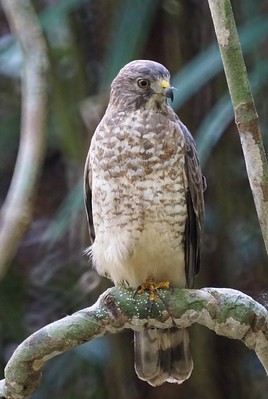
Range contractions of the Broad-winged Hawk in the Northeast United States
2021
Summary
The Broad-winged Hawk (BWHA, Buteo platypterus) is a small, secretive hawk with distinguishing broad black tail bands that breeds in northeastern North America. The hawk nests in deciduous or mixed forest, often near water, and close to clearings or forest edges. Land conversion and fragmentation alters the landscape and reduces the area of contiguous forest used by BWHA. This study seeks to determine the landscape characteristics influencing the apparent breeding range declines of the BWHA at the landscape scale.
Key Personnel & Institutions
Not available.Location
Vermont, Massachusetts, Maine, New York, New Hampshire, Connecticut, Rhode Island, New England
Resource Type
Article
Tags
Topic Tags
conservation, wildlife and habitat, landscape pattern and connectivity
Purpose Tags
conservation
Citation
Pruitt R., Goodrich L., Shumar M. B., Wilson A. M., "Range contractions of the Broad-winged Hawk in the Northeast United States", 8 October 2021, https://doi.org/10.1101/2021.10.06.463411
Source Link
https://www.biorxiv.org/content/10.1101/2021.10.06.463411v1.abstract
New Hampshire's Coastal Watershed Conservation Plan
2021
Summary
New Hampshire's Coastal Watershed Conservation Plan identifies key conservation priorities across the lands in New Hampshire, Maine, and Massachusetts that drain to the Atlantic Ocean via the Piscataqua River and through the Hampton-Seabrook Estuary.
Key Personnel & Institutions
People: Peter Steckler
Institutions: The Nature Conservancy, New Hampshire Chapter
Location
New Hampshire
Resource Type
Report
Tags
Topic Tags
conservation, management, ecosystem services, wildlife and habitat
Purpose Tags
conservation, management
Citation
Steckler P., Ormiston A., "New Hampshire's Coastal Watershed Conservation Plan", 30 June 2021, accessed from: http://www.greatbaypartnership.org/wp-content/uploads/NH-Coastal-Watershed-Conservation-Plan-20210630.pdf
Source Link
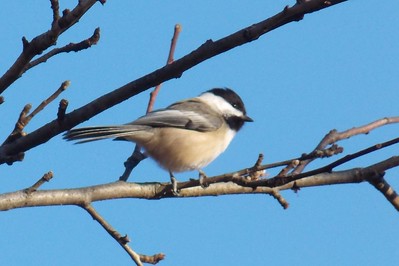
Application of Remote Sensing in Gathering Avian Data in the Wild in Order to Delineate Conservation Strategies
2022
Summary
Information on climate tendencies is essential for the powerful assurance of risked avian species. At present events, fake turbulences impacts influence the conditions. Perpetual undertakings of bounty appearances are impacting the scatterings of various sorts of birds similar to other faunal species. The time has come to get notice of such effects and find judicious ways to actually look at them. To characterize insurance procedures, it is uncommonly pressing to have every one of the information about the avian assortment present close by. For certain species, especially those living in distant locales, we by and by miss the mark on this information. Regardless, time and money-related resources for taking apart normal environmental elements use are limited.
Key Personnel & Institutions
Not available.Location
Vermont, Massachusetts, Maine, New York, New Hampshire, Connecticut, Rhode Island, New England
Resource Type
Article
Tags
Topic Tags
conservation, ecosystem services, drivers, wildlife and habitat
Purpose Tags
conservation
Citation
Dubey S., Pant H., Malviya S. J., Kushwaha P., "Application of Remote Sensing in Gathering Avian Data in the Wild in Order to Delineate Conservation Strategies", Geospatial Technology and its Applications in Resource Management, Chapter 22, pp. 245-262, Accessed from: https://www.researchgate.net/profile/Hemlata-Pant-3/publication/363262975_Application_of_Remote_Sensing_in_Gathering_Avian_Data_in_the_Wild_in_Order_to_Delineate_Conservation_Strategies/links/63144d4c5eed5e4bd145885e/Application-of-Remote-Sensing-in-Gathering-Avian-Data-in-the-Wild-in-Order-to-Delineate-Conservation-Strategies.pdf
Source Link
Forest Fragmentation and Nest Predation: Are Experiments with Japanese Quail Eggs Misleading?
1995
Summary
The evidence that fragmentation of forests in eastern North America increases rates of nest predation based on the results of experiments in which artificial nests baited with Japanese Quail eggs are used to compare rates of predation in fragments of different sizes. The lack of parental and nestling activity and the potentially unnatural positioning and appearance of artificial nests complicates the interpretation of artificial nest experiments. This paper discusses wheather quail-egg experiments are an appropriate tool for investigating among fragment differences in the rate of predation on Neotropical migrant bird nests.
Key Personnel & Institutions
People: David G. Haskell
Location
Vermont, Massachusetts, Maine, New York, New Hampshire, Connecticut, Rhode Island, New England
Resource Type
Article
Tags
Topic Tags
conservation, methods, drivers, wildlife and habitat
Purpose Tags
conservation
Citation
Haskell D. G., "Forest Fragmentation and Nest Predation: Are Experiments with Japanese Quail Eggs Misleading?", The Auk, July 1995, v. 112, no. 3, pp. 767-770, https://www.jstor.org/stable/4088694
Source Link
The Relevance of Forest Fragmentation on the Incidence of Human Babesiosis: Investigating the Landscape Epidemiology of an Emerging Tick-Borne Disease
2013
Summary
Babesiosis is an emerging arthropod-borne infection that has been increasing in incidence for the last decade in the northeastern United States. Babesiosis may share features of its landscape epidemiology with other arthropod-borne infections transmitted by the same tick vectors in similar geographic spaces. This study examined 11 years of surveillance data in New York State to measure the relationship between forest fragmentation and the incidence of human babesiosis.
Key Personnel & Institutions
People: Michael Walsh
Location
New York
Resource Type
Article
Tags
Topic Tags
drivers, wildlife and habitat, landscape pattern and connectivity
Purpose Tags
education
Citation
Walsh M. G., "The Relevance of Forest Fragmentation on the Incidence of Human Babesiosis: Investigating the Landscape Epidemiology of an Emerging Tick-Borne Disease", 27 March 2013, v. 13, no. 4, https://doi.org/10.1089/vbz.2012.1198
Source Link
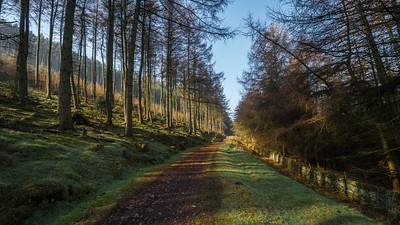
Forest fragmentation and ecosystem function
2014
Summary
Urbanization and the spread of agriculture have resulted in high levels of forest loss and fragmentation in many regions of the world. The impact of this anthropogenic fragmentation on ecological functioning has been poorly studied. This chapter assesses the responses of selected plant- and animal-mediated processes to forest fragmentation.
Key Personnel & Institutions
Not available.Location
Vermont, Massachusetts, Maine, New York, New Hampshire, Connecticut, Rhode Island, New England
Resource Type
Article
Tags
Topic Tags
conservation, wildlife and habitat, landscape pattern and connectivity
Purpose Tags
conservation
Citation
Peh K. S. H., YangChen L., Luke S. H., Foster W. A., Turner E. C., "Forest Fragmentation and Ecosystem Services", 1 January 2014, https://doi.org/10.1079/9781780642031.009
Source Link
https://cabidigitallibrary.org/doi/abs/10.1079/9781780642031.0096

New York Conservation Summary
2022
Summary
While the name New York is often equated with the concrete jungle of New York City, looking beyond the Big Apple reveals a remarkable diversity of natural communities and habitats throughout the state. The interplay of climate and geologic forces over millions of years has crafted the landscape into a complex array of bedrock, surficial geology, soils, landforms, and topography. These varied physical settings and their associated ecological processes support the wonderful richness of plants and animals that live in New York (State!) today.
Key Personnel & Institutions
Not available.Location
New York
Resource Type
Article
Tags
Topic Tags
conservation, methods, management, drivers, wildlife and habitat
Purpose Tags
conservation, management
Citation
"New York Conservation Summary", 2022, Accessed from: http://www.landscope.org/new-york/overview/
Source Link
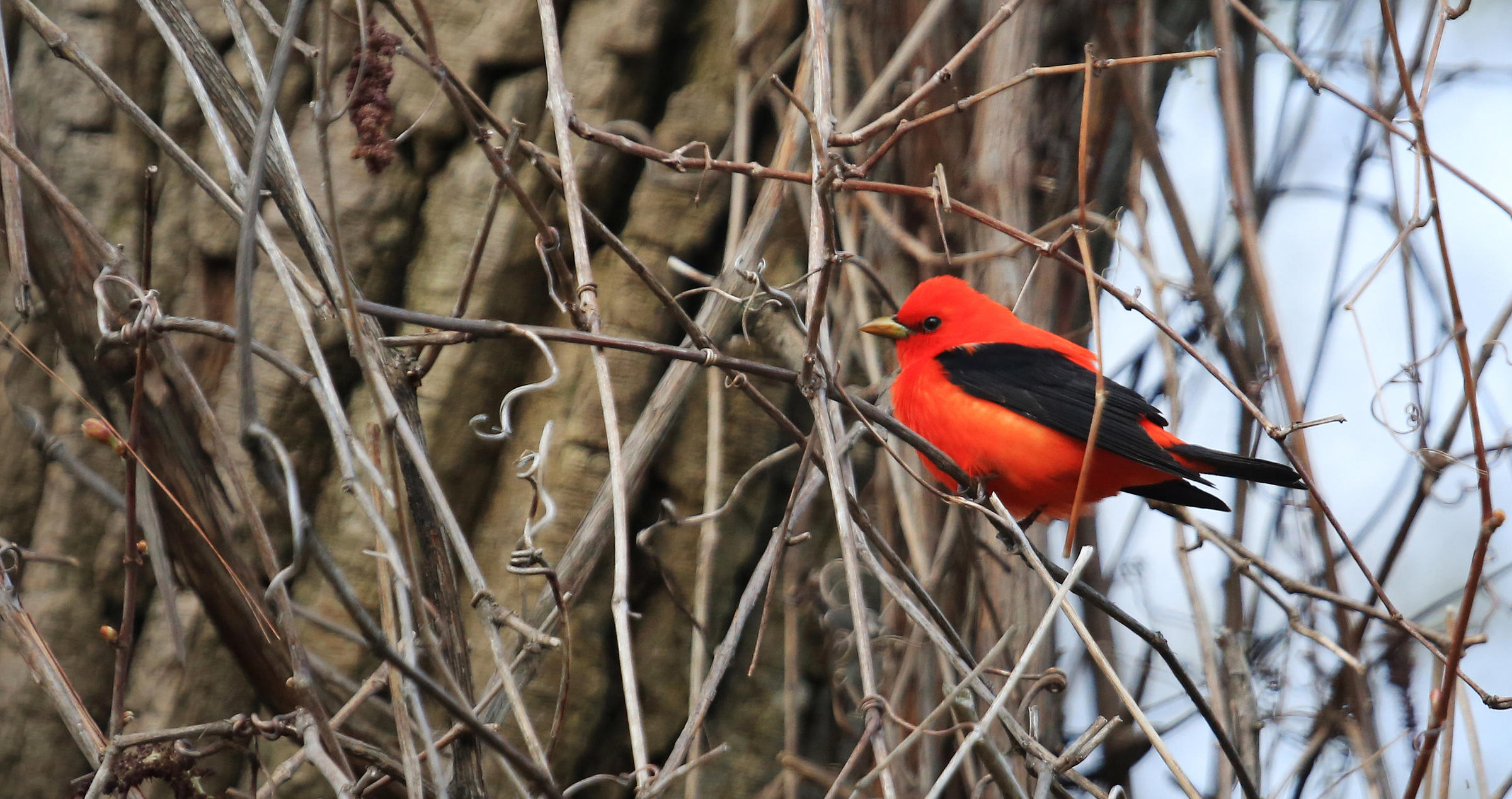
Audubon Vermont, Why Healthy Forests?, Keeping Common Birds Common
Summary
The Atlantic Northern Forest of Vermont, New Hampshire, Maine and New York is home to the greatest diversity of breeding bird species in the continental United States. But the populations of many of these seemingly-common species are declining at alarming rates.
Key Personnel & Institutions
Institutions: Audubon Vermont
Location
Vermont
Resource Type
Article
Tags
Topic Tags
conservation, methods, drivers, wildlife and habitat
Purpose Tags
conservation
Citation
"Why Healthy Forests?", 2022, Audubon Vermont, Accessed from: https://vt.audubon.org/conservation/why-healthy-forests
Source Link
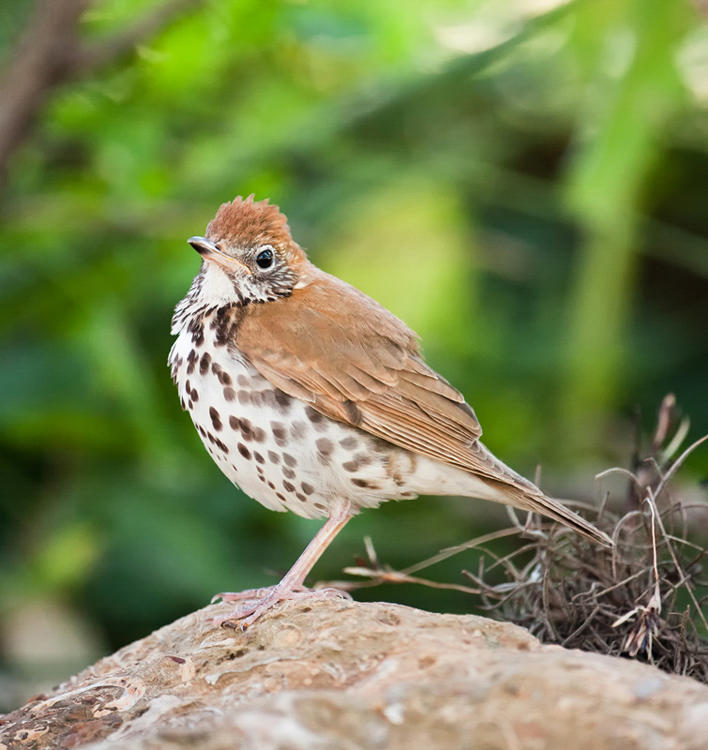
Foresters for the Birds
2008 to 2022
Summary
Foresters for the Birds is an innovative project that works to keep forests as forests and common birds common by helping landowners integrate the practices of timber and songbird habitat management. The project was established through a partnership between Audubon Vermont and the Vermont Department of Forests, Parks, and Recreation in 2008. It has grown to become a network of foresters, biologists, and forest landowners across Vermont and the Atlantic Flyway who are working together to make a positive difference for forests, birds, and land stewardship in the region.
Key Personnel & Institutions
Institutions: Audubon Vermont
Location
Vermont
Resource Type
Article
Tags
Topic Tags
conservation, methods, management, wildlife and habitat
Purpose Tags
conservation, management
Citation
"Foresters for the Birds", 2022, Audubon Vermont, Accessed from: https://vt.audubon.org/conservation/foresters-birds
Source Link
A Geographic Information System Approach to Map Tick Exposure Risk at a Scale for Public Health Intervention
2021
Summary
This study presents a geographic information system (GIS) method for mapping predicted tick exposure risk at a 200 m by 200 m resolution, appropriate for public health intervention. They followed the approach used to map tick habitat suitability over large areas. They used drag-cloth sampling to measure the density of nymphal blacklegged ticks (Ixodes scapularis, Say (Acari: Ixodidae)) at 24 sites in Addison and Rutland Counties, VT, United States.
Key Personnel & Institutions
People: David Allen
Institutions: Middlebury College, Biology Department , University of New Hampshire, Department of Natural Resources and the Environment
Location
Rutland, Addison
Resource Type
Article
Tags
Topic Tags
drivers, wildlife and habitat, landscape pattern and connectivity
Purpose Tags
education
Citation
No citation available.
Source Link
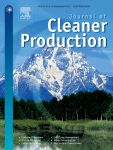
Mitigating vector-borne pathogen spread risks through promoting Gmelina arborea-based afforestation and agroforestry on private farms
2021
Summary
In this paper, the role of afforestation and agroforestry in mitigating risk of bat-borne disease transmission to humans is explored using an epidemiological-agroforestry model of land use decision on private farms.
Key Personnel & Institutions
Not available.Location
Vermont, Massachusetts, Maine, New York, New Hampshire, Connecticut, Rhode Island, New England
Resource Type
Article
Tags
Topic Tags
conservation, ecosystem services, drivers, wildlife and habitat
Purpose Tags
conservation
Citation
Ranjan R., "Mitigating vector-borne pathogen spread risks through promoting Gmelina arborea-based afforestation and agroforestry on private farms", Journal of Cleaner Production, v. 315, 15 September 2021, https://doi.org/10.1016/j.jclepro.2021.128215
Source Link
Forest Birds of Connecticut and Rhode Island
1985 to 2017
Summary
This volume extends upon the earlier works of Rhode Island and Connecticut breeding bird atlases by mapping the population density of forest birds inhabiting Connecticut and Rhode Island.
Key Personnel & Institutions
Not available.Location
Connecticut, Rhode Island
Resource Type
Book
Tags
Topic Tags
conservation, ecosystem services, drivers, wildlife and habitat
Purpose Tags
conservation
Citation
Craig R., "Forest Birds of Connecticut and Rhode Island", Bird Conservation Research, Inc., 2017, Accessed from: https://d1wqtxts1xzle7.cloudfront.net/67189700/Forest_Birds_of_CT_RI_2-with-cover-page-v2.pdf?Expires=1666020802&Signature=ZFB~SKGya-s5srW5E~XUgqZRVBd4JiqAcMloIJsWzEFPHBOB-9ZMZuMeCLR45B2qOlHVXpxDbSvX2pVuJ67zRXI6yfa-cs9-c6IXaKxGR-Sn5y1a5inURk~~Pdsut-cgTQKB0dMbMdljKo7WaQ3bAeIJXLL6b1kuyLN56Tm3dW9qRTECjyw-poatrMB6stQOB0K4lSd0W-RBB1Hp~W2Ti1~TJa7VxPC8EN0cls~X3MtnDjvJ0P6y0tnjBZgx4u4U7DZNzSqk1XFx8OozEColLVux1n2Emu1cMTwrfA6ld37PDwzLJkl8hB7X8mo~dkmptBkplmxSigPUxOL9hJdQug__&Key-Pair-Id=APKAJLOHF5GGSLRBV4ZA
Source Link
https://www.academia.edu/35777828/Forest_Birds_of_Connecticut_and_Rhode_Island

Relationship Between Habitat and Landscape Features and the Avian Community of Red Maple Swamps in Southern Rhode Island
2001
Summary
No additional information available.
Key Personnel & Institutions
People: Francis C. Golet
Institutions: US Army Corp of Engineers , University of Rhode Island, Department of Natural Resources Science
Location
Rhode Island
Resource Type
Article
Tags
Topic Tags
conservation, ecosystem services, drivers, wildlife and habitat
Purpose Tags
conservation
Citation
Golet F. C., Wang Y., Merrow J. S., DeRagon W. R., "Relationship Between Habitat and Landscape Features and the Avian Community of Red Maple Swamps in Southern Rhode Island", The Wilson Bulletin, 113(2), 217-227, 1 June 2001, https://doi.org/10.1676/0043-5643(2001)113[0217:RBHALF]2.0.CO;2
Source Link
Multi-scale analysis of habitat fragmentation on small-mammal abundance and tick-borne pathogen infection prevalence in Essex County, MA
2022
Summary
Habitat fragmentation and heterogeneity transform otherwise contiguous tracks of forest into smaller patches in the northeastern U.S. and likely impact abundances, movement patterns, and disease transmission pathways for small-mammal communities at multiple scales. We sought to determine the structure of a small-mammal community in terms of mammal abundance and infection prevalence of Borrelia burgdorferi sensu stricto (s.s.), Anaplasma phagocytophilum, and Babesia microti within a fragmented landscape in Essex County, Massachusetts, USA.
Key Personnel & Institutions
Not available.Location
Essex
Resource Type
Article
Tags
Topic Tags
conservation, ecosystem services, wildlife and habitat
Purpose Tags
conservation
Citation
Mason S. D., Sherratt S. C., Kruguer S. M., Muthersbaugh M., Harris J. P., Gatlin W. C., Topp J. D., Keller G. S., "Multi-scale analysis of habitat fragmentation on small-mammal abundance and tick-borne pathogen infection prevalence in Essex County, MA", 13 June 2022, https://doi.org/10.1371/journal.pone.0269768
Source Link
https://journals.plos.org/plosone/article?id=10.1371/journal.pone.0269768
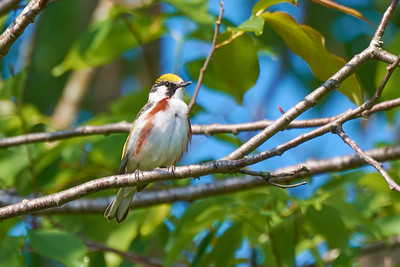
Assessing the effects of Close-to-Nature Forestry on forest birds in the eastern United States: A case study and way forward
2022
Summary
This study sought to 1) assess the effects of forest structural characteristics on avian species richness in a CTNF-managed forest in the eastern USA; 2) compare the results to county-level eBird data to identify the challenges of assessing the impacts of forestry practices on birds at landscape scales; 3) highlight the ambiguities in current forest management guidelines for improving avian habitats in the USA and 4) suggest long-term direction for evaluating the impacts of alternative forest management practices on birds.
Key Personnel & Institutions
Not available.Location
Vermont, Massachusetts, Maine, New York, New Hampshire, Connecticut, Rhode Island, New England
Resource Type
Article
Tags
Topic Tags
conservation, management, planning, drivers, wildlife and habitat
Purpose Tags
conservation, management
Citation
Gresh J. M., Courter J. R., "Assessing the effects of Close-to-Nature Forestry on forest birds in the eastern United States: A case study and way forward", 27 August 2022, https://doi.org/10.1177/1758155922112171
Source Link
https://journals.sagepub.com/doi/abs/10.1177/17581559221121712
Cohabitating with New England Cottontails: Habitat restoration for at-risk New England cottontail also benefits shrubland birds
2022
Summary
Ongoing habitat restoration efforts will help the survival of the New England cottontail, and new research by the New Hampshire Agricultural Experiment Station (NHAES) researchers published in Ecosphere finds that these efforts will have far-reaching benefits to shrubland-obligate birds with which the cottontail shares its habitat.
Key Personnel & Institutions
Not available.Location
Vermont, Massachusetts, Maine, New York, New Hampshire, Connecticut, Rhode Island, New England
Resource Type
Article
Tags
Topic Tags
conservation, methods, management, wildlife and habitat
Purpose Tags
conservation, management
Citation
Gosling N., Hatch A., "Cohabitating with New England Cottontails: Habitat restoration for at-risk New England cottontail also benefits shrubland birds", UNH Today, 9 August 2022, Accessed from: https://scholars.unh.edu/cgi/viewcontent.cgi?article=6690&context=unh_today
Source Link
https://scholars.unh.edu/cgi/viewcontent.cgi?article=6690&context=unh_today
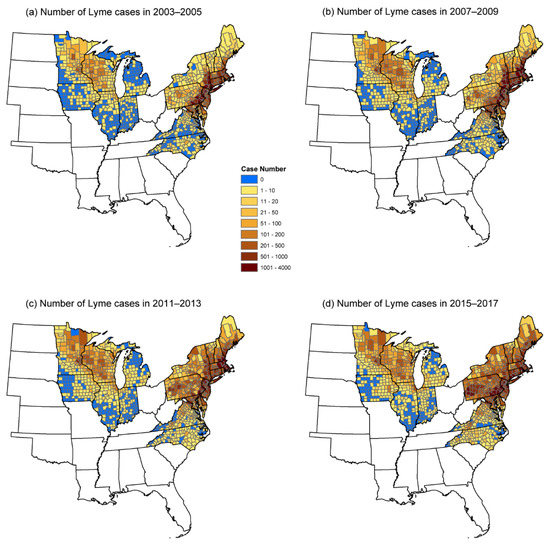
Effect of Land-Use Change on the Changes in Human Lyme Risk in the United States
2022
Summary
No additional information available.
Key Personnel & Institutions
People: Yuting Dong , Zheng Huang , Yingying X.G. Wang
Institutions: Nanjing Normal University, College of Life Sciences , University of Jyväskylä, Department of Biological and Environmental Science
Location
Vermont, Massachusetts, Maine, New York, New Hampshire, Connecticut, Rhode Island, New England
Resource Type
Article
Tags
Topic Tags
wildlife and habitat, landscape pattern and connectivity
Purpose Tags
Citation
Ma Y., He G., Yang R., Wang Y. X. G., Huang Z. Y. X., Dong Y., "Effect of Land-Use Change on the Changes in Human Lyme Risk in the United States", Sustainability, 2022, v. 14, iss 10, https://doi.org/10.3390/su14105802
Source Link
Relationships among North American songbird trends, habitat fragmentation, and landscape occupancy
1970 to 1980
Summary
The authors used Breeding Bird Survey data and associated landscape metrics to test the hypothesis that range-wide population change in species for which habitat fragmentation negatively affects reproductive success should depend on the proportion of the population that actually occupies fragmented landscapes. The results indicated a significant, negative relationship between the proportion of the breeding population occupying fragmented landscapes and the population trend from 1970 to 1980.
Key Personnel & Institutions
People: Therese Donovan
Institutions: United States Department of Agriculture (USDA), Forest Service , The State University of New York (SUNY), College of Environmental Science and Forestry (ESF)
Location
Vermont, Massachusetts, Maine, New York, New Hampshire
Resource Type
Article
Tags
fragmentation, songbirds, bird survey, landscape occupancy
Topic Tags
ecosystem services, wildlife and habitat, landscape pattern and connectivity
Purpose Tags
education
Citation
Donovan, T.M. & Flather, C.H. (2002) Relationships Amoung North American Songbird Trends, Habitat Fragmentation, and Landscape Occupancy. Ecolocial Applications. 12(2): 346-374
Source Link
Reversing the fragmentation perspective: effects of clearcut size on bird species richness in Maine
1989 to 1990
Summary
The authors examined the effects of clearcut size on bird species richness in a forest-dominated landscape in eastern Maine. They found that species richness increased with clearcut size but the number of species present per plot did not differ significantly over the size range of cuts.
Key Personnel & Institutions
People: Tamia Rudnicky
Institutions: University of Maine
Location
Baring Plt, Hancock, Washington
Resource Type
Article
Tags
clearcuts, bird species richness, edge effects, forest fragmentation, landscape ecology, patch size
Topic Tags
ecosystem services, wildlife and habitat, landscape pattern and connectivity
Purpose Tags
management, education
Citation
Rudnicky, T.C. & Hunter, M.L., (1993). Reversing the fragmentation perspective: effects of clearcut size on bird species richness in Maine. Ecological Applications, 3(2), pp.357-366.
Source Link
http://www.jstor.org/stable/pdf/1941838.pdf?refreqid=excelsior:66a4deafcb1c6633bf0c10cda580a9c4
Analysis of potential habitat fragmentation impacts to songbirds and bats associated with the Baron Winds Project, New York
2017
Summary
This memo was prepared to assess the potential for habitat fragmentation impacts to breeding birds and bats from construction of the proposed Baron Winds Project.
Key Personnel & Institutions
People: Sarah Gravel
Institutions: Stantec Consulting Services, LLC, EverPower Wind Holdings Inc.
Location
Steuben
Resource Type
Report
Tags
fragmentation, songbirds, bats, certificate application, consulting, permit, wind turbines
Topic Tags
ecosystem services, drivers, wildlife and habitat, landscape pattern and connectivity
Purpose Tags
management, education
Citation
Gravel, S.B. and DiBello, F. (2017). Analysis of Potential Habitat Fragmentation Impacts to Songbirds and Bats Associated with the Baron Winds Project, New York [memo]. Stantec Consulting Services Inc.
Source Link
Resilient sites for terrestrial conservation in the Northeast and Mid-Atlantic regions
2011 to 2012
Summary
The central idea of this project was that by mapping key geophysical settings and evaluating them for landscape characteristics that buffer against climate effects, the most resilient places in the landscape can be identified.
Key Personnel & Institutions
People: Mark Anderson, Arlene Olivero Sheldon, Melissa Clark
Institutions: The Nature Conservancy
Location
New York, New England
Resource Type
Report
Tags
climate change, conservation, diversity, habitat, natural communities, ecoregion, permeable landscape, resilience
Topic Tags
methods, management, wildlife and habitat, landscape pattern and connectivity
Purpose Tags
education
Citation
Anderson, M.G., Clark, M. and Olivero Sheldon, A. (2012). Resilient Sites for Terrestrial Conservation in the Northeast and Mid-Atlantic Region. The Nature Conservancy, Eastern Conservation Science. 168 pp.
Source Link
Vermont Department of Forest, Parks and Recreation
Summary
This is the website to the Department of Forest, Parks and Recreation in Vermont.
Key Personnel & Institutions
Institutions: Vermont Agency of Natural Resources, Vermont Department of Forests, Parks and Recreation
Location
Vermont
Resource Type
Website
Tags
conservation, diversity, forestland conservation, natural resource management, natural resources, research
Topic Tags
conservation, management, planning, wildlife and habitat, landscape pattern and connectivity
Purpose Tags
management
Citation
Agency of Natural Resources. (n.d.). Department of Forest, Parks and Recreation. Available at http://fpr.vermont.gov/
Source Link
What is forest fragmentation and why is it improtant?
1997
Summary
This website descibes forest fragmentation and its impacts on woodland birds.
Key Personnel & Institutions
Institutions: United States Department of Agriculture (USDA), Forest Service , Cornell Lab of Ornithology, Cornell Laboratory of Ornithology, Birds in Forested Landscapes
Location
No location information available
Resource Type
Website
Tags
habitat, birds, education, forest fragmentation, woodlands
Topic Tags
conservation, drivers, wildlife and habitat, landscape pattern and connectivity
Purpose Tags
education
Citation
Cornell Lab of Ornithology (n.d.). What is forest fragmentation and why is it important? Birds In Forested Landscapes. Available at http://static.birds.cornell.edu/bfl/gen_instructions/fragmentation.html
Source Link
http://static.birds.cornell.edu/bfl/gen_instructions/fragmentation.html
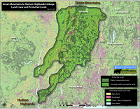
Green Mountains to Hudson Highlands linkage land cover and protected lands
2017
Summary
This map depicts the land cover and protected lands in the Green Mountain to Hudson Highlands Linkage
Key Personnel & Institutions
Institutions: Staying Connected Initiative
Location
Vermont, Massachusetts, New York, Connecticut
Resource Type
Map
Tags
habitat, connectivity, conserved land, landcover, protected areas
Topic Tags
conservation, methods, wildlife and habitat, landscape pattern and connectivity
Purpose Tags
education
Citation
Staying Connected Initiative. (2017). Green Mountains to Hudson Highlands Linkage Land Cover and Protected Lands [map]. Retrieved from http://stayingconnectedinitiative.org/assets/GreensHudsonHighlands.jpg
Source Link
http://stayingconnectedinitiative.org/assets/GreensHudsonHighlands.jpg
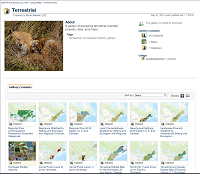
North Atlantic landscape conservation cooperative data basin
2013 to 2014
Summary
Northeast Conservation planning atlas gallery of terrestial related projects, data, and maps.
Key Personnel & Institutions
Institutions: Northeast Conservation Planning Atlas
Location
New York, New England
Resource Type
Map
Tags
community patterns, conservation, conservation planning, terrestrial habitat
Topic Tags
conservation, planning, wildlife and habitat, landscape pattern and connectivity
Purpose Tags
management, education
Citation
Northeast Conservation Planning Atlas. (2014). Terrestrial [map]. Retrieved from https://nalcc.databasin.org/galleries/012067d1312f463b9c0a7aa1d594b887
Source Link
https://nalcc.databasin.org/galleries/012067d1312f463b9c0a7aa1d594b887
The shape of density dependence in fragmented landscapes explains an inverse buffer effect in a migratory songbird
1992 to 2017
Summary
The author found that landscape-scale density in wood thrush was lower and population declines steeper in higher quality, less fragmented landscapes (an inverse buffer effect) than in poor quality landscapes. These patterns suggest that wood thrush was not limited by availability of breeding habitat but that declines were primarily driven by non-breeding season events.
Key Personnel & Institutions
People: Caz Taylor
Institutions: Tulane University, Department of Ecology and Evolutionary Biology
Location
New York, New England
Resource Type
Article
Tags
fragmentation, habitat connectivity, breeding
Topic Tags
ecosystem services, wildlife and habitat, landscape pattern and connectivity
Purpose Tags
education
Citation
Taylor, C.M. (2017). The shape of density dependence in fragmented landscapes explains an inverse buffer effect in a migratory songbird. Scientific reports, 7(1), p.14522.
Source Link
Effect of Forest Fragmentation on Lyme Disease Risk
2000 to 2003
Summary
The authors examined how forest destruction and fragmentation could increase a region's susceptibility to Lyme disease through a decrease in mammalian diversity and an increase in white-footed mouse populations, which carry the Lyme bacterium.
Key Personnel & Institutions
People: Brian F. Allan , Felicia Keesing, Richard Ostfeld
Institutions: Cary Institute of Ecosystem Studies , University of Illinois, Bard College
Location
Dutchess, New York
Resource Type
Article
Tags
Topic Tags
ecosystem services, drivers, wildlife and habitat, landscape pattern and connectivity
Purpose Tags
conservation, management
Citation
No citation available.
Source Link
Hierarchical population structure of a rare lagomorph indicates recent fragmentation has disrupted metapopulation function
2013 to 2019
Summary
The authors researched how habitat fragmentation has affected genetic diversity of the New England cottontail.
Key Personnel & Institutions
People: Adrienne Kovach, Amanda Cheeseman, Christopher Whipps, Jonathan Cohen, Sadie Ryan
Institutions: The State University of New York (SUNY), College of Environmental Science and Forestry (ESF) , University of New Hampshire , University of Florida
Location
New York
Resource Type
Article
Tags
Topic Tags
conservation, management, wildlife and habitat, landscape pattern and connectivity
Purpose Tags
conservation
Citation
No citation available.
Source Link
https://link.springer.com/article/10.1007/s10592-019-01206-z
Determinants of home-range size of imperiled New England cottontails (Sylvilagus transitionalis) and introduced eastern cottontails (Sylvilagus floridanus)
2013 to 2019
Summary
The authors of this study built models to determine the impact of habitat fragmentation and invasive species intrusion on the New England cottontail. Patch size and stem density of bushes both seem to be important for the survival of New England cottontails, as small patches (< 7 ha) without enough cover can act as population sinks.
Key Personnel & Institutions
People: Amanda Cheeseman, Christopher Whipps, Jonathan Cohen, Sadie Ryan
Institutions: The State University of New York (SUNY), College of Environmental Science and Forestry (ESF) , University of Florida
Location
Dutchess, Putnam, New York
Resource Type
Article
Tags
Topic Tags
conservation, management, wildlife and habitat, landscape pattern and connectivity
Purpose Tags
conservation, management
Citation
No citation available.
Source Link
https://www.nrcresearchpress.com/doi/full/10.1139/cjz-2018-0277#.XhzFoMhKiUl
Vermont S165 An act relating to forest fragmentation and Act 250
2019 to 2020
Summary
This is an introduced bill to protect forest resources by amending the permit criteria of Act 250, the Vermont land use law. This bill specifically addresses forest fragmentation, the protection of natural communities, and protection for threatened and endangered species, citing the need to reduce development in natural areas in a way that will further fragment the forest or will negatively impact sensitive species and to mitigate damages to natural communities that cannot be avoided.
Key Personnel & Institutions
People: Virginia Lyons , Christopher Bray, Alison Clarkson, Anthony Pollina, Becca Balint, Brian Campion, Dick McCormack, Ruth Hardy
Location
Vermont
Resource Type
Policy
Tags
Topic Tags
conservation, management, wildlife and habitat, landscape pattern and connectivity
Purpose Tags
policy
Citation
Vermont S165: An act relating to forest fragmentation and Act 250, VT Legislation Number 339629 v.2. (2019)
Source Link
High burdens of Ixodes scapularis larval ticks on white-tailed deer may limit Lyme disease risk in a low biodiversity setting
2014 to 2019
Summary
The authors used back-esitmates to research the potential of white-tailed deer as a dilution host.
Key Personnel & Institutions
People: Ching-I Huang, Samantha Kay, Stephen Davis, Danielle Tufts, Kimberley Gaffett, Maria Diuk-Wasser, Brian Tefft
Institutions: Columbia University , Royal Melbourne Institute of Technology, The Nature Conservancy on Block Island, Rhode Island Department of Environmental Management
Location
Rhode Island
Resource Type
Article
Tags
Topic Tags
management, drivers, wildlife and habitat, landscape pattern and connectivity
Purpose Tags
management
Citation
No citation available.
Source Link
https://www.sciencedirect.com/science/article/pii/S1877959X18302991
Tracking the endangered Northern Black Racer, Coluber constrictor constrictor, in Maine to determine areas of conservation importance
2018 to 2019
Summary
The author participated in research on a subspecies of the Black Racer (Coluber constrictor), the Northern Black Racer (C. constrictor constrictor), which is endangered due to its restricted range in Maine. The study sought to fill knowledge gaps on specific habitat preferences of Northern Black Racers in Maine to promote more effective conservation efforts.
Key Personnel & Institutions
People: Josiah Johnson
Institutions: Colby College
Location
Maine
Resource Type
Article
Tags
Topic Tags
conservation, management, wildlife and habitat, landscape pattern and connectivity
Purpose Tags
conservation, management
Citation
Johnson, J. (2019). Tracking the endangered Northern Black Racer, Coluber constrictor constrictor, in Maine to determine areas of conservation importance.
Source Link
https://digitalcommons.colby.edu/cgi/viewcontent.cgi?article=1982&context=honorstheses
Direct and Indirect Effects of Anthropogenic Land Use on Bobcats (Lynx rufus) in New England
2019
Summary
This document is a dissertation on the decline and resurgence of the bobcat in New England, related to anthropogenic land use. The author explores historic and modern genetics, diet, and stress of New England bobcat populations, and then connects these to historic and modern land uses.
Key Personnel & Institutions
People: Rory Carroll
Institutions: University of New Hampshire
Location
New England
Resource Type
Article
Tags
Topic Tags
conservation, drivers, wildlife and habitat, landscape pattern and connectivity
Purpose Tags
conservation
Citation
No citation available.
Source Link
https://scholars.unh.edu/cgi/viewcontent.cgi?article=3438&context=dissertation
Implementation of an occupancy-based monitoring protocol for a widespread and cryptic species, the New England cottontail (Sylvilagus transitionalis)
2015 to 2019
Summary
The goal of this study was to recommend an effective, long-term monitoring strategy for the New England cottontail that would be adaptable to other species. Based on their findings, the suthors give monitoring recommendations and conservation implications.
Key Personnel & Institutions
People: Colin Shea, Mitchell Eaton, Darryl MacKenzie
Institutions: North Carolina State University
Location
Massachusetts, Maine, New Hampshire, Connecticut, Rhode Island, New York
Resource Type
Article
Tags
Topic Tags
conservation, methods, management, wildlife and habitat, landscape pattern and connectivity
Purpose Tags
conservation, management, policy
Citation
No citation available.
Source Link
Impacts of Habitat Loss and Fragmentation on Terrestrial Biodiversity
2018
Summary
An argument for future research on taxonomic groups and global threats such as climate change in order to effectively improve species conservation efforts.
Key Personnel & Institutions
People: Jordan E. Rogan , Thomas E. Lacher
Institutions: Texas A&M University
Location
New England
Resource Type
Article
Tags
biodiversity, fragmentation
Topic Tags
conservation, management, planning, wildlife and habitat, landscape pattern and connectivity
Purpose Tags
conservation, management, education
Citation
Rogan, J.E.; Lacher Jr, T.E. "Impact of Habitat Loss and Fragmentation on Terrestrial Biodiversity." Reference Module in Earth Systems and Environmental Sciences, 2018. Accessed From (https://www.sciencedirect.com/science/article/pii/B9780124095489109133)
Source Link
https://www.sciencedirect.com/science/article/pii/B9780124095489109133
Yards increase forest connectivity in urban landscapes
2019
Summary
No additional information available.
Key Personnel & Institutions
People: Alessandro Ossola , Dexter Locke , Brenda Lin , Emily Minor
Institutions: United States Department of Agriculture (USDA), Forest Service, Northern Research Station , University of Illinois, Macquarie University, Department of Biological Sciences, Centre for Smart Green Cities , CSIRO Land and Water Flagship
Location
Boston
Resource Type
Report
Tags
canopy
Topic Tags
ecosystem services, planning, wildlife and habitat, landscape pattern and connectivity
Purpose Tags
management, education
Citation
No citation available.
Source Link
https://link.springer.com/article/10.1007/s10980-019-00923-7
Family Forest Research Center
2016 to 2020
Summary
This is a research center that studies the behaviors and attitudes of the people who own forests. They investigate the social, political and economic dimensions of family forest ownership in the hope of improving forest conservation.
Key Personnel & Institutions
People: Paul Catanzaro , Brett Butler , Emily Huff , David Kittredge , Marla Markowski-Lindsay, Stephanie Snyder, Jesse Caputo , Kristen Floress , Amanda Robillard , Emma Sass
Institutions: Family Forest Research Center , United States Department of Agriculture (USDA), Forest Service
Location
Massachusetts
Resource Type
Website
Tags
family forest, forest economy
Topic Tags
conservation, methods, management, planning, drivers, wildlife and habitat
Purpose Tags
conservation, management, education
Citation
"Family Forest Research Center." 2016. USDA Forest Service, University of Massachusetts Amherst, Michigan State University. Accessed From (http://www.familyforestresearchcenter.org/)
Source Link
The Conservation Fund: Reed Forest
2020
Summary
The Conservation Fund aims to permanently protect more than 36,000 acres of working forests in the eastern United states, including the Reed Forest in Maine.
Key Personnel & Institutions
People: Brian Dangler , Evan Smith
Institutions: The Conservation Fund , Forest Society of Maine
Location
Maine
Resource Type
Poster
Tags
working forests
Topic Tags
conservation, management, ecosystem services, planning, wildlife and habitat
Purpose Tags
conservation, management, policy
Citation
Dangler, B.; Smith, E. 2020. "Reed Forest, The Conservation Fund, Working Forest Fund." Accessed From (https://www.conservationfund.org/projects/reed-forest)
Source Link
Suburban Sprawl, Culture, Theory and Politics
2003
Summary
A comprehensive, multi-disciplinary analysis of suburban sprawl development and smart growth alternatives within the contexts of culture, ecology, and politics. It offers a mix of theoretical inquiry, historical analysis, policy critique, and case studies, written by academics and practitioners from around the world. In addition, each chapter is coupled with featured interviews with leading activists and policymakers working on sprawl issues.
Key Personnel & Institutions
People: Matthew Lindstrom , Hugh Bartling
Institutions: University of Florida
Location
New York, New England
Resource Type
Book
Tags
Topic Tags
conservation, ecosystem services, wildlife and habitat, landscape pattern and connectivity
Purpose Tags
conservation, management, education, policy
Citation
Lindstrom, M. J.; Bartling, H. 2003. "Suburban Sprawl: Culture Theory and Politics." Accessed from (https://books.google.com/books?id=RQN0OXl02qMC&lpg=PA16&dq=forest fragmentation new hampshire&pg=PP1#v=snippet&q=rhode island&f=false)
Source Link
Nest predator distribution among clearcut forest, forest edge and forest interior in an extensively forested landscape
1998
Summary
The distribution of avian and mammalian nest predator species in clearcut forest, forest edge and forest interior habitats was assessed on four study plots in 1992 and 1993 using line transect counts.
Key Personnel & Institutions
People: David King , Richard DeGraaf , Curtice Griffin
Institutions: University of Massachusetts Amherst , United States Department of Agriculture (USDA), Forest Service, Northern Research Station
Location
Massachusetts
Resource Type
Article
Tags
predation, mammals, forest edge, clearcut
Topic Tags
conservation, management, wildlife and habitat, landscape pattern and connectivity
Purpose Tags
conservation, management
Citation
King, I. D.; Griffin, C. R.; DeGraff, R. M. "Nest Predator Distribution Among Clearcut Forest, Forest Edge and Forest Interior in an Extensively Forested Landscape." Forest Ecology and Management, vol. 104, issues 1-3, 12 May 1998, Pages 151-156. ScienceDirect https://www.sciencedirect.com/science/article/abs/pii/S0378112797002533
Source Link
https://www.sciencedirect.com/science/article/abs/pii/S0378112797002533
Hot Spots of Perforated Forest in the Eastern United States
2005
Summary
This article identifies geographic concentrations (hot spots) of forest located near holes in otherwise intact forest canopies (perforated forest) in the eastern United States, and describes the proximate causes in terms of the nonforest land-cover types contained in those hot spots.
Key Personnel & Institutions
People: Kurt Riitters , John Coulston
Institutions: United States Department of Agriculture (USDA), Forest Service, Southern Research Station , North Carolina State University, Department of Forestry and Environmental Resources
Location
New England
Resource Type
Article
Tags
Topic Tags
conservation, ecosystem services, wildlife and habitat, landscape pattern and connectivity
Purpose Tags
conservation, education
Citation
No citation available.
Source Link
Thirty-Year Bird Population Trends in an Unfragmented Temperate Deciduous Forest: Importance of Habitat Change
1969 to 1998
Summary
Findings from this study demonstrate that major changes in bird abundances occur over time even in undisturbed and relatively mature forests, and illustrate the need for considering habitat requirements of individual species and how habitat suitability changes over time when trying to assess the causes of their long-term population trends. The results also imply that any conclusions about the effects of other factors affecting forest bird abundances, such as increased nest predation or brood parasitism associated with habitat fragmentation, must also account for successional changes that may be affecting habitat suitability.
Key Personnel & Institutions
People: Richard Holmes , Thomas W. Sherry
Institutions: Dartmouth College , Tulane University, Department of Ecology and Evolutionary Biology
Location
New Hampshire
Resource Type
Article
Tags
predation, succession, white mountain national forest
Topic Tags
conservation, management, wildlife and habitat, landscape pattern and connectivity
Purpose Tags
conservation, education
Citation
No citation available.
Source Link
Monitoring a New England Cottontail Reintroduction with Noninvasive Genetic Sampling
2013 to 2018
Summary
No additional information available.
Key Personnel & Institutions
People: Melissa L. Bauer , Brett Ferry , Heidi Holman
Institutions: University of New Hampshire, Department of Natural Resources and the Environment, New Hampshire Fish and Game Department
Location
New Hampshire
Resource Type
Article
Tags
new england cottontail
Topic Tags
conservation, methods, management, wildlife and habitat, landscape pattern and connectivity
Purpose Tags
conservation, management
Citation
Bauer, M. L.; Ferry, B.; Holman, H.; Kovach, A. I. "Monitoring a New England Cottontail Reintroduction with Noninvasive Genetic Sampling." Wildlife Society Bulletin, 20 February 2020. Accessed from https://doi.org/10.1002/wsb.1069
Source Link
https://wildlife.onlinelibrary.wiley.com/doi/abs/10.1002/wsb.1069
Effects of land use on wild bee functional diversity
2019
Summary
The focus of this thesis is to uncover how differences in land use, from grazing to successional states in forests, influence a number of aspects wild bee diversity and community structure. Relative abundance and species richness have been used as standard methods for measuring the health of wild bee communities yet neither abundance nor richness are able to quantify how landscape change affects the traits found in members of the population. Phylogenetic methods are a novel tool that can measure community structure by examining how traits influence population structure.
Key Personnel & Institutions
People: Katherine A. Odanaka
Institutions: University of New Hampshire
Location
Strafford, New Hampshire
Resource Type
Report
Tags
Topic Tags
ecosystem services, wildlife and habitat, landscape pattern and connectivity
Purpose Tags
conservation
Citation
Odanaka, K. A. "Effects of Land Use on Wild Bee Functional Diversity." University of New Hampshire Scholars' Repository, Spring 2019. Accessed from https://pdfs.semanticscholar.org/1fa5/32100d68f1f3130c386b7c7d68e4472cc3ed.pdf
Source Link
https://pdfs.semanticscholar.org/1fa5/32100d68f1f3130c386b7c7d68e4472cc3ed.pdf
Are pre-Columbian conditions relevant baselines for managed forests in the northeastern United States?
2003
Summary
Populations of a number of taxa associated with shrublands, early-successional forests, and other disturbance-generated habitats (collectively referred to as thickets) are declining in the northeastern United States. Increasing ownership parcelization, a relatively young forest, and landscape fragmentation substantially reduce the practicality and suitability of small-scale disturbances for generating thicket habitats. Addressing the needs of thicket-dependent species in the northeastern United States will require creativity, a willingness to explore a variety of solutions, and public support.
Key Personnel & Institutions
People: John Litvaitis
Institutions: University of New Hampshire, Department of Natural Resources and the Environment
Location
New England
Resource Type
Article
Tags
disturbance
Topic Tags
conservation, methods, management, wildlife and habitat, landscape pattern and connectivity
Purpose Tags
conservation, management
Citation
Litvaitis, J. A. "Are pre-Columbian Conditions Relevant Paselines For Managed Forests In The Northeastern United States?" Forest Ecology and Management, vol. 185, issue 1-2, 3 November 2003, pp. 113-126. Accessed from https://www.sciencedirect.com/science/article/abs/pii/S0378112703002500
Source Link
https://www.sciencedirect.com/science/article/abs/pii/S0378112703002500
Extinction filters mediate the global effects of habitat fragmentation on animals
2019
Summary
No additional information available.
Key Personnel & Institutions
People: Marion Pfeifer , Cristina Banks-Leite, Victor Arroyo-Rodriguez, Danilo Bandini Ribeiro , Jos Barlow , Felix Eigenbrod , Deborah Faria
Institutions: Oregon State University , Newcastle University , Imperial College London , Universidad Nacional Autónoma de México (UNAM) , Universidade Federal de Mato Grosso do Sul , Lancaster University , Universidade Federal de Lavras , University of Southampton , Universidade Estadual de Santa Cruz
Location
New York, New England
Resource Type
Report
Tags
evolution, global analysis
Topic Tags
conservation, management, wildlife and habitat, landscape pattern and connectivity
Purpose Tags
conservation, management, education
Citation
"Betts, M. G.; Wolf, C.; Pfeifer, M.; Banks-Leite, C.; Arroyo-Rodriguez, V.; Ribeiro, D. B.; Barlow, J.; Eigenbrod, F.; Faria, D.; et. al. ""Extinction Filters Mediate the Global Effects of Habitat Fragmentation on Animals." Science, vol 366, issue 6470, pp. 1236-1239, DOI: https://doi.org/10.1126/science.aax9387"
Source Link
Forest fragmentation
2019
Summary
This article talks about the negative effects of forest fragmentation specifically in Vermont.
Key Personnel & Institutions
People: Ethan Tapper
Institutions: Vermont Department of Forests, Parks and Recreation
Location
Vermont
Resource Type
Poster
Tags
Topic Tags
conservation, management, wildlife and habitat, landscape pattern and connectivity
Purpose Tags
conservation, management, education
Citation
Tapper, E. "Forest Fragmentation." The Charlotte News, 13 June 2019. Accessed from https://www.charlottenewsvt.org/2019/06/13/forest-fragmentation/
Source Link
https://www.charlottenewsvt.org/2019/06/13/forest-fragmentation/
1996 to 2002
Summary
No additional information available.
Key Personnel & Institutions
People: Paul Kerlinger
Institutions: Curry & Kerlinger, L.L.C.
Location
Vermont, Searsburg
Resource Type
Report
Tags
Topic Tags
conservation, methods, wildlife and habitat, landscape pattern and connectivity
Purpose Tags
conservation, education, policy
Citation
No citation available.
Source Link
Hudson Valley Forest Patch Update and Assessment
2019
Summary
Many changes have occurred in these forests since 2010 and updating this information is the first goal of this project. The second goal of this project is to estimate the condition of each forest patch based on a suite of metrics.
Key Personnel & Institutions
People: Timothy G. Howard , Amy K. Conley , Emily Cheadle
Institutions: The New York Heritage Program
Location
New York
Resource Type
Report
Tags
Topic Tags
conservation, methods, wildlife and habitat, landscape pattern and connectivity
Purpose Tags
conservation
Citation
Conley, A. K.; Cheadle, E.; Howard, T. G. "Hudson Valley Forest Patch Update and Assessment." December 2019, Accessed from https://www.nynhp.org/sites/default/files/Forest_Patch_Assessment_NYNHP_2019_20200228.pdf
Source Link
https://www.nynhp.org/projects/hudson-valley-forest-patches/
Connecticut's Forest Health
2020
Summary
CT DEEP monitors and assesses the factors that influence the health of Connecticut's state forests. They work in cooperation with state, federal, and municipal agencies to detect, manage, and treat all factors that negatively impact the state forests.
Key Personnel & Institutions
Institutions: Connecticut Department of Energy and Environmental Protection (DEEP)
Location
Connecticut
Resource Type
Poster
Tags
Topic Tags
conservation, management, wildlife and habitat, landscape pattern and connectivity
Purpose Tags
conservation, management, education
Citation
"Connecticut's Forest Health." Connecticut's Official State Website, February 2020, Accessed from https://portal.ct.gov/DEEP/Forestry/Forest-Protection/Forest-Health
Source Link
https://portal.ct.gov/DEEP/Forestry/Forest-Protection/Forest-Health
Habitat, Food Habits, And Productivity Of Northern Goshawks Nesting In Connecticut
1997 to 1999
Summary
The objectives of this study were to measure habitat and landscape features, describe food habits, and document productivity of goshawks. Despite its occurrence, surprisingly little is known about the ecology and distributional status of this species within the state. The goshawk was considered a rare species in New England for most of the last century.The increased breeding population of the goshawk in the past 30 yr may be due to extensive reforestation, the growth of existing forest providing mature forest that they seem to prefer for nesting.
Key Personnel & Institutions
People: Trevor E. Becker , Dwight G. Smith
Institutions: The Cooper Ornithological Society
Location
Connecticut
Resource Type
Article
Tags
Topic Tags
conservation, methods, management, wildlife and habitat, landscape pattern and connectivity
Purpose Tags
conservation, management
Citation
Becker, T. E.; Smith, D. G.; Bosakowski, T. "Habitat, Food Habits, And Productivity Of Northern Goshawks Nesting In Connecticut" Studies in Avian Biology No. 31:119-125, 1999, Accessed from https://sora.unm.edu/sites/default/files/SAB_031_2006 P119-125_Habitat, Food Habits, and Productivity of Northern Goshawks Nesting in Connecticut_Trevor E. Becker, Dwight G. Smith, Thomas Bosakowski.pdf
Source Link
2016
Summary
No additional information available.
Key Personnel & Institutions
Institutions: Conservation Law Foundation
Location
Rhode Island
Resource Type
Poster
Tags
Topic Tags
conservation, planning, wildlife and habitat, landscape pattern and connectivity
Purpose Tags
conservation, education, policy
Citation
No citation available.
Source Link
https://www.clf.org/blog/invenergy-protecting-wildlife-corridors/
Plant Invasions In Rhode Island Riparian Zones
2005
Summary
The purpose of this study was to assess the relationship of land use with the occurrence of invasive plant species in vegetated riparian zones and their corresponding usage by different species of birds.
Key Personnel & Institutions
People: Suzanne M. Lussier , Sara N. Dasilva
Institutions: Rhode Island Natural History Survey
Location
Rhode Island
Resource Type
Report
Tags
riparian, birds, invasive plants
Topic Tags
conservation, methods, wildlife and habitat, landscape pattern and connectivity
Purpose Tags
conservation
Citation
Lussier, S. M.; Dasilva, S. N. "Plant Invasions in Rhode Island Riparian Zones" Rhode Island Naturalist, vol. 12, num 2, November 2005, Accessed from https://rinhs.org/wp-content/uploads/2014/02/ri_naturalist_fall_2005.pdf
Source Link
https://cfpub.epa.gov/si/si_public_record_Report.cfm?Lab=NHEERL&dirEntryId=139003
Rhode Island Forest Resources Assessment and Strategies "A Path to Tomorrow's Forests"
2010
Summary
The Rhode Island Forest Resources Assessment and Strategies was updated from these two documents, the Rhode Island Forest Resources Management Plan and Rhode Island Urban and Community Forest Plan, with input from the Forest Resources Assessment and Strategies Committee, (RI Stewardship Committee members and other invited environmental partners) to incorporate other statewide planning documents.
Key Personnel & Institutions
Institutions: Rhode Island Department of Environmental Management, United States Department of Agriculture (USDA), Forest Service
Location
Rhode Island
Resource Type
Report
Tags
Topic Tags
conservation, methods, management, wildlife and habitat, landscape pattern and connectivity
Purpose Tags
conservation, management, policy
Citation
DEM, Division of Forest Environment "Rhode Island Forest Resources Assessment and Strategies" June 2010, Accessed from http://www.dem.ri.gov/programs/bnatres/forest/pdf/assestra.pdf
Source Link
http://www.dem.ri.gov/programs/bnatres/forest/pdf/assestra.pdf
Effects of Forest Fragmentation on Breeding Tanagers: A Continental Perspective
1995 to 2001
Summary
No additional information available.
Key Personnel & Institutions
People: Kenneth V. Rosenberg , James D. Lowe , Andre A. Dhondt
Institutions: Cornell Lab of Ornithology
Location
New York, New England
Resource Type
Article
Tags
Topic Tags
conservation, management, wildlife and habitat, landscape pattern and connectivity
Purpose Tags
conservation, education
Citation
Rosenberg, K. V.; Lowe, J. D.; Dhondt, A. A. "Effects of Forest Fragmentation on Breeding Tanagers: A Continental Perspective
Source Link
https://conbio.onlinelibrary.wiley.com/doi/abs/10.1046/j.1523-1739.1999.98020.x
Habitat Preferences of New England Cottontail and Eastern Cottontail in Relation to Proximity to Wetlands and Developed Areas
2015
Summary
The University of Rhode Island recently completed an analysis of overstory canopy cover in 336 cottontail locations that found that NEC occupied sites with higher overstory tree canopy than EC. The current study used the same 336 cottontail locations to assess NEC and EC habitat preferences in relation to wetlands, open areas, and developed areas. Contrary to expectations, NEC did not appear to avoid wetlands. There were also no indications that NEC preferred or avoided sites near agriculture, pasture, grassland or developed areas, however, EC were more likely to occupy these sites. Based on these findings, suggestions are offered for finetuning the RI GIS model to identify sites for creation of habitat for NEC.
Key Personnel & Institutions
People: Bill Buffum
Institutions: University of Rhode Island, Department of Natural Resources Science
Location
Rhode Island
Resource Type
Article
Tags
new england cottontail
Topic Tags
conservation, management, wildlife and habitat, landscape pattern and connectivity
Purpose Tags
conservation, management, education
Citation
Buffum, B. "Habitat Preferences of New England Cottontail and Eastern Cottontail in Relation to Proximity to Wetlands and Developed Areas" August 2015, Accessed from https://web.uri.edu/forestry/files/2012/11/Buffum-2015-Habitat-preferences-of-NEC-and-EC-proximity-to-wetland-and-developed-areas.pdf
Source Link
Follow the Forest
2020
Summary
No additional information available.
Key Personnel & Institutions
Institutions: Housatonic Valley Association , Follow the Forest
Location
New York, New England
Resource Type
Website
Tags
Topic Tags
conservation, management, planning, wildlife and habitat, landscape pattern and connectivity
Purpose Tags
conservation, management, education, policy
Citation
"Follow the Forest" Housatonic Valley Association, 2020, Accessed from https://www.arcgis.com/apps/Cascade/index.html?appid=578d52a766774787b7144b1cfea3f393
Source Link
https://www.arcgis.com/apps/Cascade/index.html?appid=578d52a766774787b7144b1cfea3f393
Forest Fragmentation and Housing Development
1982 to 2012
Summary
This web page is an overview of data and statistics on forest fragmentation both due to natural causes and human development.
Key Personnel & Institutions
People: Curtis H. Flather , Milagros Alvarez , Mark Nelson , Michael Knowles
Institutions: United States Department of Agriculture (USDA), Forest Service, U.S. Endowment of Forestry and Communities
Location
No location information available
Resource Type
Website
Tags
forests, development
Topic Tags
conservation, planning, drivers, wildlife and habitat, landscape pattern and connectivity
Purpose Tags
conservation, education
Citation
Alvarez M., Nelson, M., Flather, C., Knowles, M., 2018 "Forest Fragmentation and Housing Development" U.S. Forest Service, U.S. Endowment for Forestry and Communities. Accessed from https://www.arcgis.com/apps/Cascade/index.html?appid=ed360934f2654044adefaf3ef08eeb54
Source Link
https://www.arcgis.com/apps/Cascade/index.html?appid=ed360934f2654044adefaf3ef08eeb54
Global patterns and predictors of bird species responses to forest fragmentation: Implications for ecosystem function and conservation
2013
Summary
This study uses linear mixed models to explore patterns of occurrence and ecological function of 2844 bird species at 293 localities spanning five continents.
Key Personnel & Institutions
People: Tom P. Bregman , Cagan H. Sekercioglu , Joseph A. Tobias
Institutions: University of Oxford, Edward Grey Institute, Department of Zoology , University of Utah, Department of Biology
Location
No location information available
Resource Type
Report
Tags
birds, fragmentation, bird, global
Topic Tags
conservation, ecosystem services, wildlife and habitat, landscape pattern and connectivity
Purpose Tags
conservation
Citation
Bregman, T.P., Sekercioglu, C.H., Tobias, J.A., "Global patterns and predictors of bird species responses to forest fragmentation: Implications for ecosystem function and conservation" Biological Conservation, Colume 169, January 2014, pp. 372-383, 2013. Accessed from (https://www.sciencedirect.com/science/article/pii/S0006320713004035#!)
Source Link
https://www.sciencedirect.com/science/article/pii/S0006320713004035#!
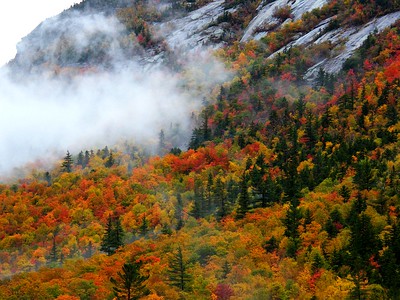
Background: Protecting Contiguous Habitat
1987 to 2005
Summary
This case study focuses on the concerns of protecting contiguous forest habitat in Dummerston, Vermont.
Key Personnel & Institutions
Institutions: New Hampshire Project Learning Tree
Location
Vermont, Dummerston, New Hampshire, New England
Resource Type
Article
Tags
Topic Tags
conservation, methods, management, wildlife and habitat, landscape pattern and connectivity
Purpose Tags
conservation, management
Citation
"Background: Protecting Contiguous Habitat" New Hampshire Project Learning Tree. Accessed from (https://www.plt.org/stuff/contentmgr/files/1/f1e63ab150f34a365494a91fc32545ad/files/background.pdf)
Source Link
https://www.plt.org/stuff/contentmgr/files/1/f1e63ab150f34a365494a91fc32545ad/files/background.pdf
Multiscale landscape genetics of American marten at their southern range periphery
2020
Summary
American marten (Martes americana) are a conservation priority in many forested regions of North America. Populations are fragmented at the southern edge of their distribution due to suboptimal habitat conditions. Facilitating gene flow may improve population resilience through genetic and demographic rescue. They used a multiscale approach to estimate the relationship between genetic connectivity and landscape characteristics among individuals at three scales in the northeastern United States: regional, subregional, and local.
Key Personnel & Institutions
People: William Kilpatrick , James Murdoch , Cody Aylward
Institutions: University of Vermont, Rubenstein School of Environment and Natural Resources , University of Vermont, Department of Biology
Location
Vermont, Maine, New York, New Hampshire
Resource Type
Article
Tags
american marten
Topic Tags
conservation, drivers, wildlife and habitat, landscape pattern and connectivity
Purpose Tags
conservation
Citation
No citation available.
Source Link
Impact of Land Use Changes and Habitat Fragmentation on the Eco-epidemiology of Tick-Borne Diseases
2020
Summary
This forum paper focuses on how land use changes have shaped the eco-epidemiology of Ixodes scapularis-borne pathogens, in particular the Lyme disease spirochete Borrelia burgdorferi sensu stricto in the eastern United States. It uses this as a model system, addressing other tick-borne disease systems as needed to illustrate patterns or processes.
Key Personnel & Institutions
People: Meredith VanAcker, Maria Diuk-Wasser, Maria P Fernandez
Institutions: Columbia University , Columbia University, Department of Ecology, Evolution and Environmental Biology
Location
Vermont, Massachusetts, Maine, New York, New Hampshire, Connecticut, Rhode Island, New England
Resource Type
Article
Tags
impacts, landscape epidemiology, ticks
Topic Tags
management, drivers, wildlife and habitat, landscape pattern and connectivity
Purpose Tags
management
Citation
No citation available.
Source Link
https://academic.oup.com/jme/article/58/4/1546/5936773?login=true

Forests and Insects
1997
Summary
The book covers such topics as colonization of trees by insects, population dynamics of forest insects, insect natural enemies, the effects of climate change and pollution on forest pests, spatial variation in the abundance of insects,the mineralization of carbon by termites, the impact of herbivorous insects, and the conservation of forest insect diversity, including the effects of forest fragmentation and deforestation.
Key Personnel & Institutions
People: Allan D. Watt , Nigel R. Stork , Mark D. Hunter
Institutions: University of Georgia , James Cook University, Cooperative Research Centre for Tropical Rainforest Ecology and Management , Edinburgh Research Station, Institute of Terrestrial Ecology
Location
Massachusetts, Maine, New York, New Hampshire, Connecticut
Resource Type
Book
Tags
insects
Topic Tags
conservation, drivers, wildlife and habitat, landscape pattern and connectivity
Purpose Tags
conservation
Citation
Watt, A. D., Stork, N. E., Hunter, M. D. "Forests and Insects" Royal Entomological Society, Chapman and Hall, issue 18, 1997. Accessed from (https://books.google.com/books?hl=en&lr=&id=wTNnPaLszyQC&oi=fnd&pg=PA303&dq=forest+fragmentation+new+york&ots=Awpuxu4D0l&sig=s77ja_eQ3dAVmQVyzAVb1jjSDc8#v=onepage&q&f=false)
Source Link
2010
Summary
No additional information available.
Key Personnel & Institutions
People: Helene Hochholzer
Institutions: Connecticut Department of Energy and Environmental Protection (DEEP)
Location
Connecticut
Resource Type
Report
Tags
assessment, strategic plan
Topic Tags
methods, management, ecosystem services, planning, wildlife and habitat
Purpose Tags
conservation, management
Citation
No citation available.
Source Link
https://portal.ct.gov/-/media/DEEP/forestry/assessment_and_strategy/AssessmentStrategypdf.pdf
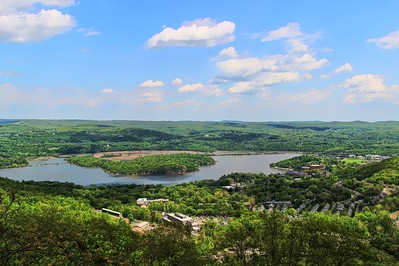
Conservation of Biological Diversity
2016
Summary
Across the Northern United States, growing human populations will place increased service demands on forests for the foreseeable future. The type, magnitude, and stability of future services from northern forests will depend in part on the level of biological diversity in those forests.
Key Personnel & Institutions
People: Rachel Riemann , Mark Nelson , W. Keith Moser , James D. Garner , Barry T (Ty) Wilson , Brent Dickenson , Brian G. Tavernia
Institutions: United States Department of Agriculture (USDA), Forest Service, Northern Research Station
Location
Vermont, Massachusetts, Maine, New York, New Hampshire, Connecticut, Rhode Island, New England
Resource Type
Article
Tags
Topic Tags
conservation, methods, management, ecosystem services, wildlife and habitat
Purpose Tags
conservation, management
Citation
Tavernia, B.G., Nelson, M.D., Riemann, R., dickenson, B., Moser, W.K., Wilson, B.T. (Ty), Garner, J.D. "Conservation of Biological Diversity". In: Shifley, Stephen R.; Moser, W. Keith, eds. Future forests of the northern United States. Gen. Tech. Rep. NRS-151. Newtown Square, PA: U.S. Department of Agriculture, Forest Service, Northern Research Station: 43-76. Chapter 3, 2016. Accessed from (https://www.fs.usda.gov/treesearch/pubs/50452)
Source Link
2021
Summary
No additional information available.
Key Personnel & Institutions
People: Grace Kelly
Institutions: Eco RI News
Location
Rhode Island
Resource Type
Article
Tags
protection, canopy
Topic Tags
conservation, ecosystem services, wildlife and habitat, landscape pattern and connectivity
Purpose Tags
conservation, management, education
Citation
No citation available.
Source Link
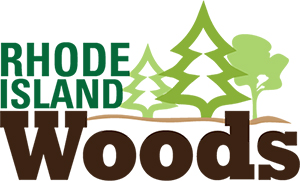
Current Status and Threats
2021
Summary
No additional information available.
Key Personnel & Institutions
Institutions: University of Rhode Island
Location
Rhode Island
Resource Type
Article
Tags
threats
Topic Tags
management, planning, drivers, wildlife and habitat, landscape pattern and connectivity
Purpose Tags
conservation, management
Citation
"Current Status and Threats" Rhode Island Woods, 2021. Accessed from (https://rhodeislandwoods.uri.edu/ri-woods/current-status-and-threats/)
Source Link
https://rhodeislandwoods.uri.edu/ri-woods/current-status-and-threats/
State of Nature: A Call for Conservation Action
2018
Summary
The Nature Conservancy undertook a three-year study to objectively gauge the condition and status of the natural world across 13 northeast and mid-Atlantic states.
Key Personnel & Institutions
Institutions: The Nature Conservancy
Location
Vermont, Massachusetts, Maine, New York, New Hampshire, Connecticut, Rhode Island, New England
Resource Type
Article
Tags
Topic Tags
conservation, drivers, wildlife and habitat, landscape pattern and connectivity
Purpose Tags
conservation
Citation
"State of Nature: A Call for Conservation Action" The Nature Conservancy, 2018. Accessed from (https://www.conservationgateway.org/ConservationByGeography/NorthAmerica/UnitedStates/edc/reportsdata/stateofnature/Pages/default.aspx)
Source Link
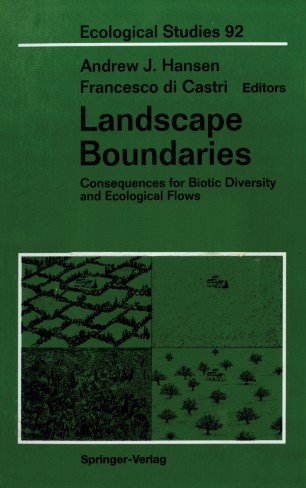
Landscape Boundaries: Consiquences for Biotic Diversity and Ecological Flows
Summary
This book is concerned with the fundamental pieces that compose a landscape, how they are bounded, how landscape boundaries influence interaction among patches. The purpose of these questions is to attempt to understand the workings of landscapes.
Key Personnel & Institutions
People: Francesco di Castri , Andrew J. Hansen
Institutions: Oregon State University , United Nations Educational, Scientific and Cultural Organization (UNESCO)
Location
Vermont, Massachusetts, Maine, New York, New Hampshire, Connecticut, Rhode Island, New England
Resource Type
Book
Tags
boundaries, diversity, biotic diversity
Topic Tags
conservation, ecosystem services, wildlife and habitat, landscape pattern and connectivity
Purpose Tags
conservation
Citation
Hansen, A.J., Di Castri, F. "Landscape Boundaries" Springer, New York, NY, 1992, https://doi.org/10.1007/978-1-4612-2804-2
Source Link
https://link.springer.com/book/10.1007/978-1-4612-2804-2#about
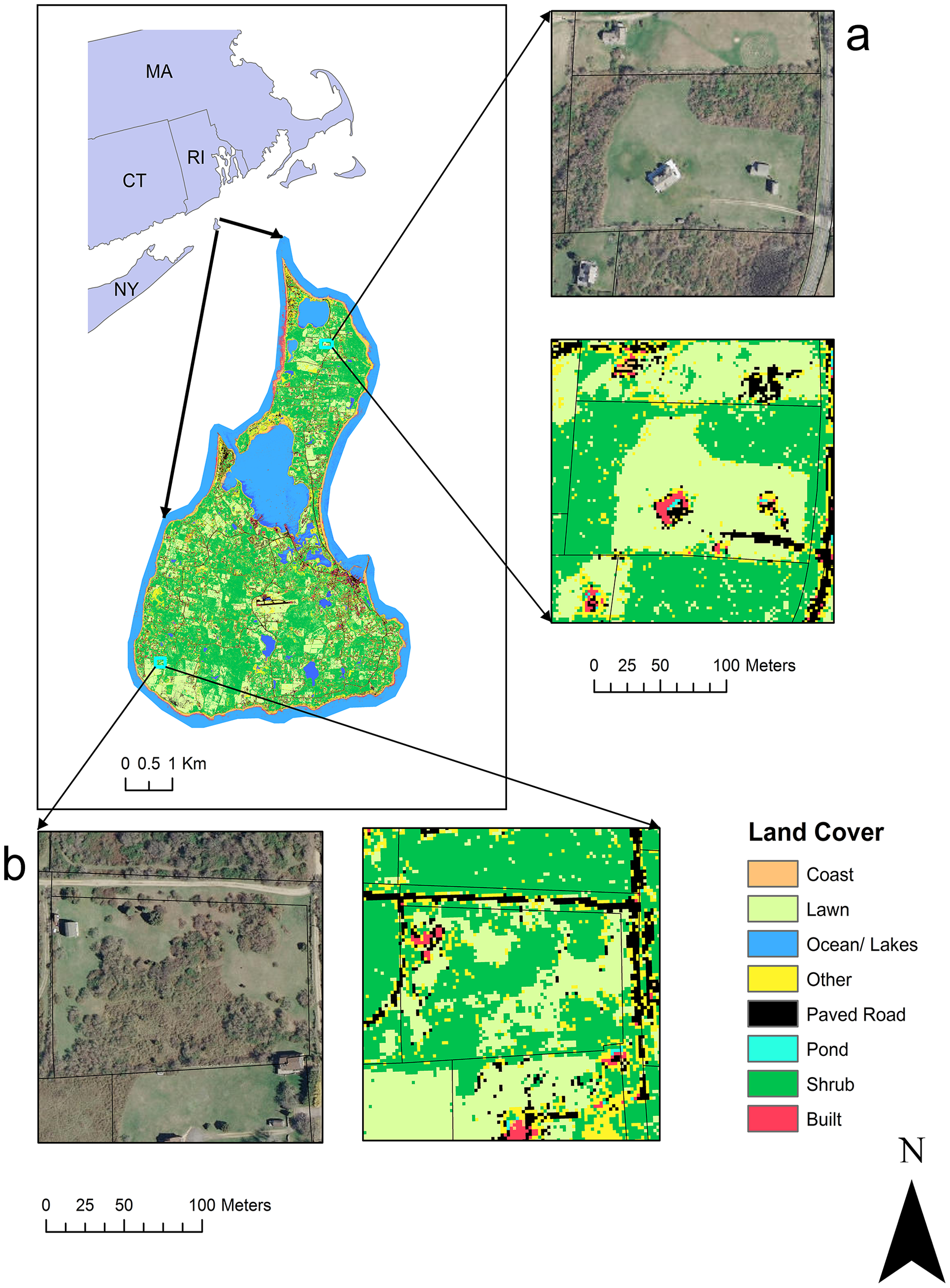
Integrated Assessment of Behavioral and Environmental Risk Factors for Lyme Disease Infection on Block Island, Rhode Island
2014
Summary
This study simultaneously assessed the influence of peridomestic tick exposure risk and human behavior risk factors for Lyme disease infection on Block Island, Rhode Island.
Key Personnel & Institutions
People: Maria Diuk-Wasser, Casey Finch , Mohammed Salim Al-Damluji , Linda Niccolai , Tanner Steeves , Corrine Folsom O'Keefe , Peter J. Krause
Institutions: Yale School of Medicine, Department of Epidemiology and Public Health
Location
Rhode Island
Resource Type
Article
Tags
lyme disease, risk assesment, ticks
Topic Tags
management, drivers, wildlife and habitat, landscape pattern and connectivity
Purpose Tags
management
Citation
No citation available.
Source Link
https://journals.plos.org/plosone/article?id=10.1371/journal.pone.0084758

Correlations and Variance Among Species Traits Explain Contrasting Impacts of Fragmentation and Habitat Loss on Functional Diversity
2020
Summary
The objectives of this study are to develop testable predictions about how landscape fragmentation, relative to the effects of habitat loss, impacts functional diversity and its relationship with species richness.
Key Personnel & Institutions
People: Andres Felipe Suarez-Castro , Margaret M. Mayfield , Matthew G. E. Mitchell , Lorenzo Cattarino , Martine Maron , Jonathan R. Rhodes
Institutions: The University of Queensland, School of Earth and Environmental Sciences , Imperial College London , The University of Queensland , The University of Queensland, Centre of Biodiversity and Conservation Science , The University of Queensland, School of Biological Sciences , Imperial College London, Department of Infectious Disease Epidemiology, MRC Centre for Outbreak Analysis and Modelling
Location
Vermont, Massachusetts, Maine, New York, New Hampshire, Connecticut, Rhode Island, New England
Resource Type
Article
Tags
diversity, impacts, global
Topic Tags
conservation, management, wildlife and habitat, landscape pattern and connectivity
Purpose Tags
conservation, management
Citation
No citation available.
Source Link
https://link.springer.com/article/10.1007/s10980-020-01098-2
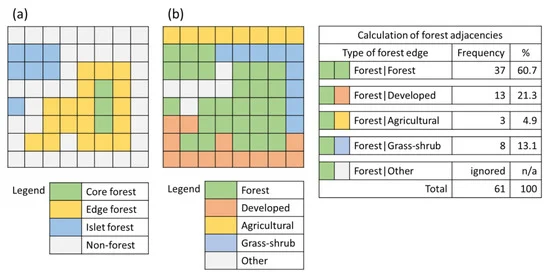
A Subcontinental Analysis of Forest Fragmentation Effects on Insect and Disease Invasion
2018
Summary
Using national survey data on forest pest richness and fragmentation data across United States forest ecosystems, this study examines how forest fragmentation and edge types (neighboring land cover) may affect pest richness at the county level.
Key Personnel & Institutions
People: Kevin Potter, Kurt Ritters , Qinfeng Guo
Institutions: United States Department of Agriculture (USDA), Forest Service, Southern Research Station , North Carolina State University, Department of Forestry and Environmental Resources
Location
Vermont, Massachusetts, Maine, New York, New Hampshire, Connecticut, Rhode Island, New England
Resource Type
Report
Tags
diseases, invasive insects
Topic Tags
conservation, drivers, wildlife and habitat, landscape pattern and connectivity
Purpose Tags
conservation
Citation
No citation available.
Source Link
The Ecological Consequences of Habitat Fragmentation
Summary
This research article analyzes habitat fragmentation, one subset of global land use change, and its ecological consiquences.
Key Personnel & Institutions
People: Raphael Didham
Institutions: University of Western Australia, School of Biological Sciences , Floreat - CSIRO , University of Canterbury
Location
Vermont, Massachusetts, Maine, New York, New Hampshire, Connecticut, Rhode Island, New England
Resource Type
Article
Tags
Topic Tags
conservation, drivers, wildlife and habitat, landscape pattern and connectivity
Purpose Tags
conservation, education
Citation
Didham R. K., "The Ecological Consequences of Habitat Fragmentation", Encyclopedia of Life Sciences A21904, 3 May 2010, Accessed from: https://publications.csiro.au/rpr/download?pid=csiro:EP101968&dsid=DS1
Source Link
https://publications.csiro.au/rpr/download?pid=csiro:EP101968&dsid=DS1
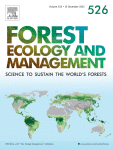
Are pre-Columbian conditions relevant baselines for managed forests in the northeastern United States?
2003
Summary
Populations of a number of taxa associated with shrublands, early-successional forests, and other disturbance-generated habitats (collectively referred to as thickets) are declining in the northeastern United States. To assure that species dependent on thicket habitats persist, intervention is warranted. However, conservationists concerned with the status of thicket-dependent species are confronted with two important questions. How much habitat is needed? And how should these habitats be distributed?
Key Personnel & Institutions
People: John Litvaitis
Institutions: University of New Hampshire, Department of Natural Resources and the Environment
Location
Vermont, Massachusetts, Maine, New York, New Hampshire, Connecticut, Rhode Island, New England
Resource Type
Article
Tags
Topic Tags
conservation, methods, management, wildlife and habitat, landscape pattern and connectivity
Purpose Tags
conservation, management, policy
Citation
Litvaitis J. A., "Are pre-Columbian conditions relevant baselines for managed forests in the northeastern United States?" Forest Ecology and Management, 3 november 2003, v. 185, iss. 1-2, pp 113-126
Source Link
https://www.sciencedirect.com/science/article/abs/pii/S0378112703002500
Cumulative Effects of Habitat Change: American Marten Habitat Selection and 30 Years of Forest Harvesting in Maine
1989 to 2019
Summary
This study evaluated the effects of forest composition and patch configuration on patterns of patch-scale habitat selection displayed by American marten (Martes americana) to identify marten responses to the cumulative and multidimensional effects of forest harvesting across a 30-year period (1989-2019).
Key Personnel & Institutions
Institutions: University of Maine
Location
Maine
Resource Type
Report
Tags
Topic Tags
ecosystem services, drivers, wildlife and habitat, landscape pattern and connectivity
Purpose Tags
conservation
Citation
Woollard T., "Cumulative Effects of Habitat Change: American Marten Habitat Selection and 30 Years of Forest Harvesting in Maine" University of Maine, 2021, Accessed from: https://digitalcommons.library.umaine.edu/etd/3541/
Source Link
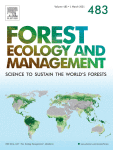
Forest management legacies affect demographics and population dynamics of spruce grouse in northern Maine
2012 to 2018
Summary
Here they studied survival and reproduction of spruce grouse from 2012 through 2018 in north-central Maine, USA, within a landscape managed extensively for commercial forest products.
Key Personnel & Institutions
People: Steve Dunham , Daniel Harrison
Institutions: University of Maine
Location
Maine
Resource Type
Report
Tags
Topic Tags
conservation, management, drivers, wildlife and habitat, landscape pattern and connectivity
Purpose Tags
conservation, management
Citation
Blomberg E. J., Tebbenkamp J., Dunham S., Harrison D., "Forest management legacies affect demographics and population dynamics of spruce grouse in northern Maine", Forest Ecology Management, v. 483, 1 March 2021, 118898, https://doi.org/10.1016/j.foreco.2020.118898
Source Link
https://www.sciencedirect.com/science/article/abs/pii/S0378112720316674
Effects of Forest Patch Size and Shape on Breeding Bird Species Richness
2022
Summary
This study assesses the effect of forest fragmentation on breeding bird communities in Burlington, Vermont, USA.
Key Personnel & Institutions
Institutions: University of Vermont
Location
Burlington
Resource Type
Article
Tags
Topic Tags
conservation, drivers, wildlife and habitat, landscape pattern and connectivity
Purpose Tags
conservation
Citation
Spindel J. M., "Effects of Forest Patch Size and Shape on Breeding Bird Species Richness", University of Vermont, 2022, Accessed from: https://scholarworks.uvm.edu/hcoltheses/502/
Source Link
Assessing the Migration System of New Hampshire and Vermont's Connecticut River Valley: Impacts on Ecology and Social Systems from Human Migration and Public Desire
2021
Summary
This report, the second in a three part series, identifies the impacts of migration patterns within the towns on the Connecticut River in New Hampshire and Vermont. Terrestrial impacts from development and urbanization include fragmentation and sprawl, increased impervious surface, runoff, and flooding, loss of biodiversity and forests, disruption of nutrient cycles and weakened climate resiliency. Watershed impacts include a disrupted hydrological cycle, loss of biodiversity and aquatic habitat, degraded water quality, loss of recreational opportunity, and water scarcity
Key Personnel & Institutions
Not available.Location
Vermont, New Hampshire
Resource Type
Article
Tags
Topic Tags
conservation, drivers, wildlife and habitat, landscape pattern and connectivity
Purpose Tags
conservation
Citation
Sylvia M., Corvus J., "Assessing the Migration System of New Hampshire and Vermont's Connecticut River Valley: Impacts on Ecology and Social Systems from Human Migration and Public Desire", 30 April, 2021, Accessed from: https://www.communityresilience-center.org/wp-content/uploads/2021/09/CRV_Migration-Impacts.pdf
Source Link
https://www.communityresilience-center.org/wp-content/uploads/2021/09/CRV_Migration-Impacts.pdf
Assessing the Migration System of New Hampshire and Vermont's Connecticut River Valley: Migration Trends, Evidence, and Indicators
2021
Summary
With a focus on implementing the responses necessary to safeguard a resilient social, environmental, and economic system, this report examines the newest analysis of migration trends and population projections influencing the migration system of New Hampshire and Vermont's Connecticut River towns.
Key Personnel & Institutions
Not available.Location
Vermont, New Hampshire
Resource Type
Report
Tags
Topic Tags
conservation, drivers, wildlife and habitat, landscape pattern and connectivity
Purpose Tags
conservation
Citation
Sylvia M., Corvus J., "Assessing the Migration System of New Hampshire and Vermont's Connecticut River Valley: Migration Trends, Evidence, and Indicators", 30 April, 2021, Accessed from: https://www.communityresilience-center.org/wp-content/uploads/2021/09/CRV_Migration-Impacts.pdf
Source Link
https://communityresilience-center.org/wp-content/uploads/2021/09/CRV_Migration_Trends.pdf
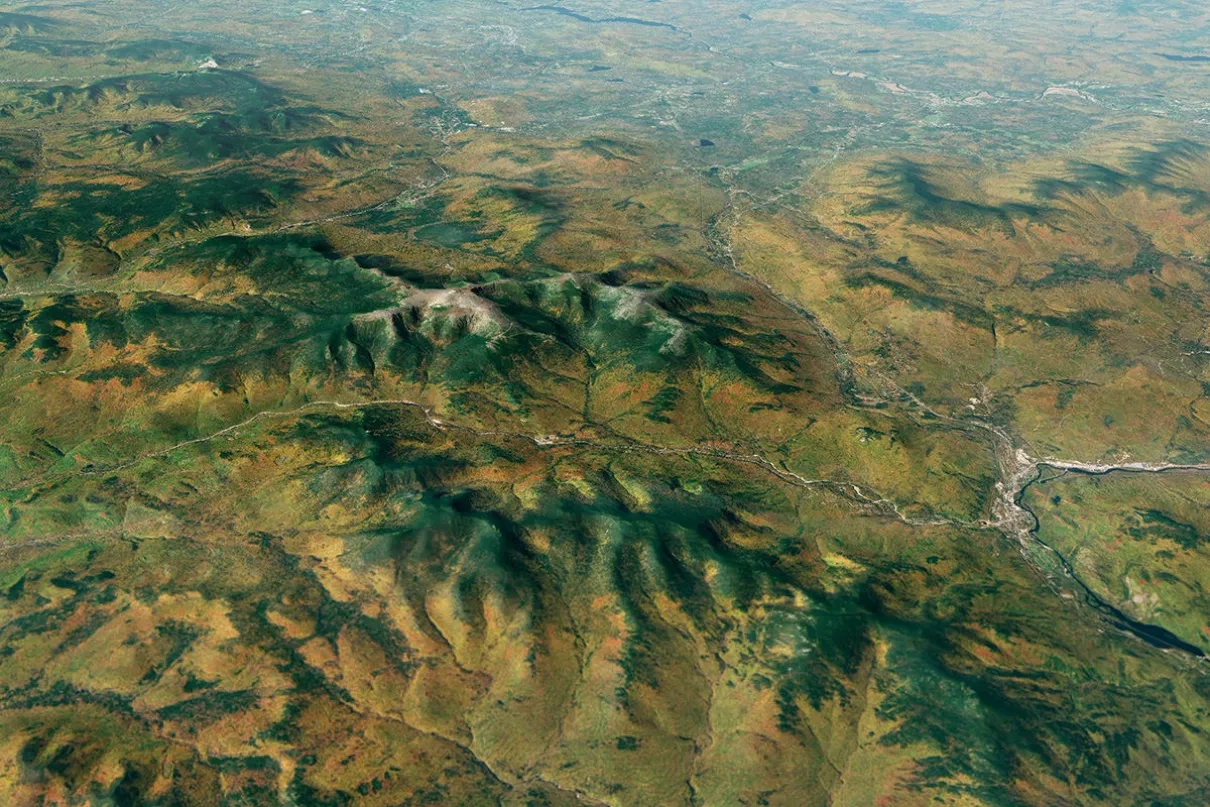
Where Have the Songbirds Gone
2022
Summary
Quieter forests are cause for concern as conservationists see decreasing populations and diversity of songbirds in New England, many of which call New Hampshire home. NASA satellite data helped map the changing forest landscape, better equipping land managers to react to the effects of forest fragmentation and changing songbird populations.
Key Personnel & Institutions
Institutions: National Aeronautics and Space Administration (NASA)
Location
Vermont, New Hampshire
Resource Type
Article
Tags
Topic Tags
conservation, drivers, wildlife and habitat, landscape pattern and connectivity
Purpose Tags
conservation
Citation
"Where Have the Songbirds Gone", NASA, 2022, Accessed from: https://www.nasa.gov/SpaceforUS/?story=4036
Source Link
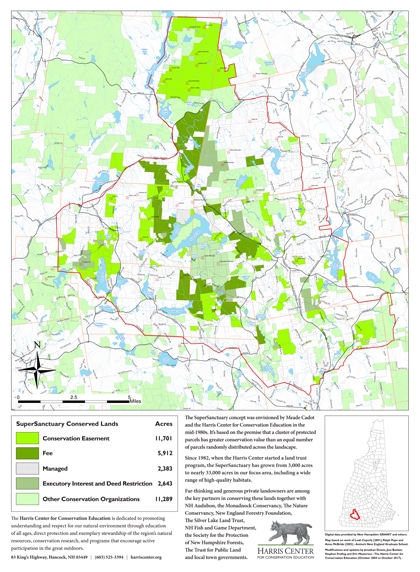
Harris Center for Conservation Education: History of the Supersanctuary
2022
Summary
Harris Center decided to expand on its environmental education work by becoming a land trust. The goal was to demonstrate how people could work together to protect land from development, with a focus on connectivity.
Key Personnel & Institutions
Institutions: Harris Center for Conservation Education
Location
Hancock
Resource Type
Article
Tags
Topic Tags
conservation, management, wildlife and habitat, landscape pattern and connectivity
Purpose Tags
conservation, management, education
Citation
"Harris Center for Conservation Education: History of the Supersanctuary", 2022, accessed from: https://harriscenter.org/land-conservation/the-supersanctuary/history-of-the-supersanctuary
Source Link
https://harriscenter.org/land-conservation/the-supersanctuary/history-of-the-supersanctuary
Tompkins County Habitat Connectivity Strategy
2018
Summary
Tompkins County has developed this Habitat Connectivity Strategy to help combat habitat fragmentation, preserve habitat diversity, and promote ecosystem resilience. The framework provided here identifies (1) specific habitat corridors for native flora and fauna to have the ability to freely move in response to climate change; (2) key undeveloped areas that should be protected from fragmentation to retain habitat; and (3) broad strategies and policies that can be implemented to improve habitat connectivity.
Key Personnel & Institutions
Not available.Location
Tompkins
Resource Type
Article
Tags
Topic Tags
conservation, methods, management, wildlife and habitat, landscape pattern and connectivity
Purpose Tags
conservation, management
Citation
"Tompkins County Habitat Connectivity Strategy", May 2018, Accessed from: https://tompkinscountyny.gov/files2/planning/Natural_Agriculture/FINAL TC Connectivity Strategy.pdf
Source Link
https://tompkinscountyny.gov/files2/planning/Natural_Agriculture/FINAL TC Connectivity Strategy.pdf
The Territorial Responses of Six Songbirds to Ski Trails at Smugglers Notch Resort and Stowe Mountain Resort, Vermont
2002
Summary
This study tested the territorial responses of six songbird species to cospecific playbacks of simulated intruders across ski trails of various widths. They conducted research on the ski trails of Smuggler's Notch Resort and Stowe Mountain Resort.
Key Personnel & Institutions
People: Amanda Holmgren
Institutions: University of Vermont
Location
Vermont
Resource Type
Article
Tags
Topic Tags
conservation, management, drivers, wildlife and habitat, landscape pattern and connectivity
Purpose Tags
conservation, management
Citation
Holmgren A., "The Territorial Responses of Six Songbirds to Ski Trails at Smugglers Notch Resort and Stowe Mountain Resort, Vermont", December 2002, University of Vermont, Accessed from: https://www.uvm.edu/femc/attachments/project/999/reports/139_Holmgren_thesis_skitrailcrossing.pdf
Source Link
https://www.uvm.edu/femc/attachments/project/999/reports/139_Holmgren_thesis_skitrailcrossing.pdf

2021
Summary
No additional information available.
Key Personnel & Institutions
Not available.Location
Vermont, Massachusetts, Maine, New York, New Hampshire, Connecticut, Rhode Island, New England
Resource Type
Article
Tags
Topic Tags
conservation, drivers, wildlife and habitat, landscape pattern and connectivity
Purpose Tags
conservation
Citation
No citation available.
Source Link
Managing Forests for Trees and Birds in Connecticut
2020
Summary
This manual presents basic principles to evaluate forests with bird habitat in mind and ways to use silviculture to manage for bird habitat. Here, silviculture is considered as a way to produce birds as well as timber.
Key Personnel & Institutions
Institutions: Audubon Connecticut
Location
Connecticut
Resource Type
Book
Tags
Topic Tags
conservation, methods, management, ecosystem services, wildlife and habitat
Purpose Tags
conservation, management, education
Citation
"Managing Forests for Trees and Birds in Connecticut", Audubon Connecticut, 2020, Accessed from: https://ct.audubon.org/sites/default/files/guide_to_managing_forests_for_trees_birds_in_ct.pdf
Source Link
https://ct.audubon.org/sites/default/files/guide_to_managing_forests_for_trees_birds_in_ct.pdf
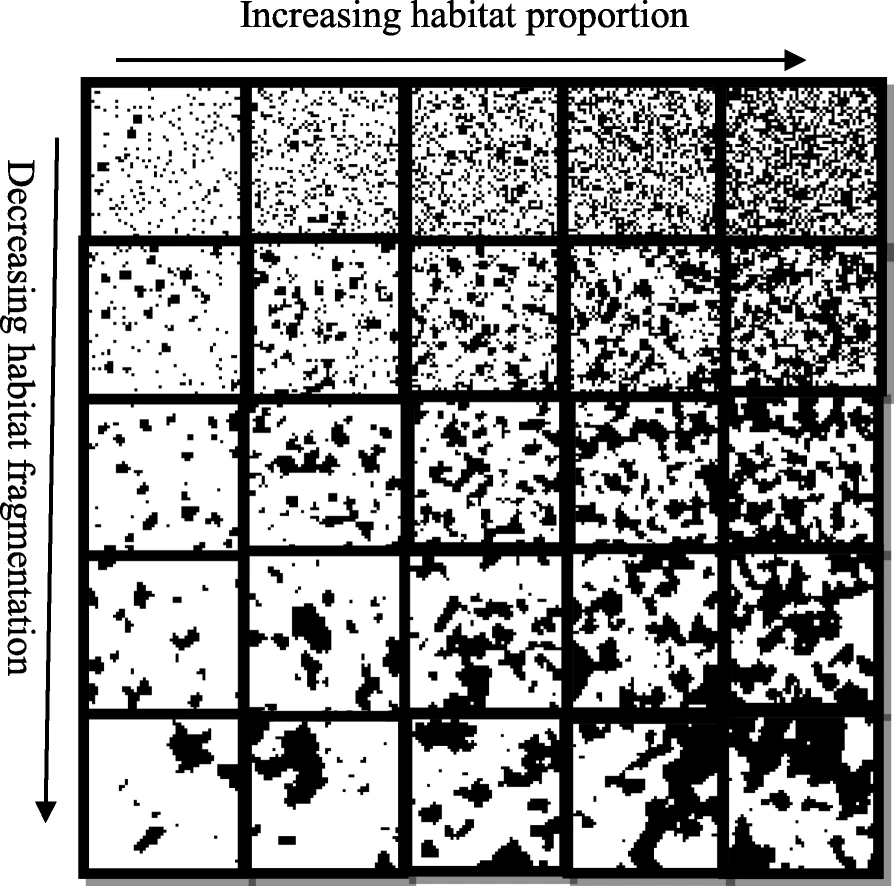
Using the Lonsdorf model for estimating habitat loss and fragmentation effects on pollination service
2021
Summary
This study aimed to examine the effects of habitat loss and fragmentation on pollination separately. For this purpose, first, they generated different simulated agricultural landscapes, including two habitats of forest and agriculture. Then, according to the Lonsdorf model, they estimated the potential of the simulated landscapes in providing pollination in different scenarios. Finally, using statistical models, they estimated the effects of habitat loss and fragmentation on pollination at the landscape and farm levels.
Key Personnel & Institutions
Not available.Location
Vermont, Massachusetts, Maine, New York, New Hampshire, Connecticut, Rhode Island, New England
Resource Type
Article
Tags
Topic Tags
conservation, methods, drivers, wildlife and habitat, landscape pattern and connectivity
Purpose Tags
conservation
Citation
Rahimi E., Barghjelveh S., Dong P., "Using the Lonsdorf model for estimating habitat loss and fragmentation effects on pollination service", Ecological Processes 10, no. 22, 2021, https://doi.org/10.1186/s13717-021-00291-8
Source Link
https://link.springer.com/article/10.1186/s13717-021-00291-8
The effects of forest fragmentation on genetic variation in Acer saccharum Marsh. (sugar maple) populations
1993
Summary
To investigate the effects of forest fragmentation on genetic variation in Acer saccharum Marsh. (Aceraceae) populations, aflozyme variation in eight populations in fragmented forest patches was compared to variation in eight population samples from extensive continuous forest.
Key Personnel & Institutions
Not available.Location
Vermont, Massachusetts, Maine, New York, New Hampshire, Connecticut, Rhode Island, New England
Resource Type
Report
Tags
Topic Tags
conservation, management, drivers, wildlife and habitat, landscape pattern and connectivity
Purpose Tags
conservation, management
Citation
Young A. G., Merriam H. G., Warwick S. I., "The effects of forest fragmentation on genetic variation in Acer saccharum Marsh. (sugar maple) populations", Heredity, 1993, v. 71, pp. 277-289
Source Link
Abundance and productivity of forest songbirds in a managed, unfragmented landscape in Vermont
1993 to 1999
Summary
The authors studied a breeding songbird community in a landscape characterized by scattered openings in a forest matrix in Vermont from 1993 to 1994. At the scale of this study, a minimal amount of canopy removal in the extensively forested landscape did not affect abundance and overall productivity of songbirds inhabiting the remaining forest, but canopy removal had begun to suppress productivity of some forest interior species
Key Personnel & Institutions
People: Ernest Buford
Institutions: University of Vermont
Location
Middlebury, Rochester, Green Mountain Range
Resource Type
Article
Tags
productivity, fragmentation, songbirds
Topic Tags
conservation, management, ecosystem services, wildlife and habitat, landscape pattern and connectivity
Purpose Tags
conservation, management, education
Citation
Buford, E.W. & Capen, D.E. (1999). Abundance and productivity of forest songbirds in a managed, unfragmented landscape in Vermont. The Journal of wildlife management, pp.180-188.
Source Link
http://www.jstor.org/stable/pdf/3802499.pdf?refreqid=excelsior:a7e65640fb80d7ccb25f86928c2127c6
A systematic review of forest bird occurrence in North American forest fragments and the built environment
2015 to 2019
Summary
The study examined the effects of forest fragmentation on different bird species in the United States. The results indicate that it is important to preserve small forest fragments when developing land, because these are utilized by migratory and certail resident bird species.
Key Personnel & Institutions
People: Mark Hostetler , Jan-Michael Archer, Glenn Acomb, Robert Blair
Institutions: University of Florida, University of Minnesota
Location
No location information available
Resource Type
Article
Tags
Topic Tags
conservation, management, ecosystem services, planning, wildlife and habitat, landscape pattern and connectivity
Purpose Tags
conservation, management
Citation
No citation available.
Source Link
https://www.sciencedirect.com/science/article/pii/S0169204619300404
Forest and Habitat Fragmentation Impacts: NECEC Power Line Segment 1
1942 to 2019
Summary
The author illustrates the impact that fragmentation caused by the NECEC Powerline Corridor would have on the Northern Maine Forests, specifically the headwaters of the Upper Moose River between the Quebec border and Corburn Mountain.
Key Personnel & Institutions
People: Roger Merchant
Institutions: University of Maine
Location
Maine
Resource Type
Report
Tags
Topic Tags
conservation, management, ecosystem services, wildlife and habitat, landscape pattern and connectivity
Purpose Tags
conservation
Citation
Merchant, Roger. (2019). 3 RM MAY 17, 2019 Forest Fragmentation NECEC. 10.13140/RG.2.2.30265.21601.
Source Link
https://www.researchgate.net/publication/333432728_3_RM_MAY_17_2019_Forest_Fragmentation_NECEC
Northern Forest Futures Project
2020
Summary
No additional information available.
Key Personnel & Institutions
Institutions: United States Department of Agriculture (USDA), Forest Service
Location
New England
Resource Type
Website
Tags
trends
Topic Tags
conservation, methods, management, planning, wildlife and habitat, landscape pattern and connectivity
Purpose Tags
conservation, management, education
Citation
USDA Forest Service. 2020." Northern Forest Futures Project." Accessed from (https://www.nrs.fs.fed.us/futures/)
Source Link
Open Corridors in a Heavily Forested Landscape: Impact on Shrubland and Forest-Interior Birds
1994
Summary
In eastern North America, remnant patches of forest surrounded by open habitat constitute unfavorable habitat for many species of migratory forest birds because of high rates of nest predation and cowbird parasitism. This article discusses the negative effects of corridors that divide forest patches and the best practices to positively impact the forests and bird habitats.
Key Personnel & Institutions
People: Robert Askins
Institutions: Connecticut College
Location
New England
Resource Type
Article
Tags
predation
Topic Tags
conservation, methods, management, planning, wildlife and habitat, landscape pattern and connectivity
Purpose Tags
conservation, management, education, policy
Citation
No citation available.
Source Link
New Hampshire Forest Resources Plan
1994 to 1996
Summary
No additional information available.
Key Personnel & Institutions
People: John E. Sargent
Institutions: New Hampshire Division of Forests and Lands
Location
New Hampshire
Resource Type
Report
Tags
Topic Tags
conservation, methods, management, ecosystem services, planning, wildlife and habitat, landscape pattern and connectivity
Purpose Tags
conservation, management
Citation
Forest Resources Plan Steering Committee. "New Hampshire Forest Resources Plan." April 1996. Accessed from https://www.nh.gov/nhdfl/documents/nhfrp01.pdf
Source Link
Forests of New Hampshire, 2016
2011 to 2016
Summary
This publication provides an overview of forest resources in New Hampshire based on inventories conducted by the U.S. Forest Service, Forest Inventory and Analysis (FIA) program of the Northern Research Station.
Key Personnel & Institutions
People: Randall Morin
Institutions: United States Department of Agriculture (USDA), Forest Service, Northern Research Station
Location
New Hampshire
Resource Type
Report
Tags
inventory
Topic Tags
conservation, methods, management, ecosystem services, planning, wildlife and habitat, landscape pattern and connectivity
Purpose Tags
conservation, management
Citation
Morin, Randall S.; Lombard, Kyle. 2017. "Forests of New Hampshire, 2016." Resource Update FS-124. Newtown Square, PA: U.S. Department of Agriculture, Forest Service, Northern Research Station. 4 p. https://doi.org/10.2737/FS-RU-124
Source Link
2006
Summary
No additional information available.
Key Personnel & Institutions
People: Dan Sundquist , Mark Zanket , Pete Ingraham , Jenn Alford , Jill Robinson , Theresa Walker , Cliff Sinnott , Cynthia Copeland
Institutions: The Nature Conservancy , Society for the Protection of NH Forests, Rockingham Planning Commission, Strafford Regional Planning Commission
Location
New Hampshire
Resource Type
Report
Tags
watersheds
Topic Tags
conservation, management, ecosystem services, wildlife and habitat, landscape pattern and connectivity
Purpose Tags
conservation, management, education
Citation
No citation available.
Source Link
https://www.epa.gov/sites/production/files/2015-09/documents/piscataqua_land_conservation_plan.pdf
Working Forest Fund
2020
Summary
This is a page on the Conservation Fund website explaining the impacts of the Working Forest Fund and the problems that they are trying to combat.
Key Personnel & Institutions
People: Brian Dangler , Ann Simonelli , Eric Kostegan
Institutions: The Conservation Fund , Working Forest Fund
Location
New England
Resource Type
Poster
Tags
working forests
Topic Tags
conservation, management, ecosystem services, wildlife and habitat, landscape pattern and connectivity
Purpose Tags
conservation, management, education
Citation
Dangler, B.; Kostegan, E.; Simonelli, A. "Working Forest Fund." The Conservation Fund, 2020. Accessed from https://www.workingforestfund.org/#contact
Source Link
1997 to 2007
Summary
No additional information available.
Key Personnel & Institutions
Institutions: NYC Department of Environmental Protection , United States Department of Agriculture (USDA), Forest Service, Watershed Agricultural Council
Location
New York
Resource Type
Poster
Tags
watershed
Topic Tags
conservation, methods, management, ecosystem services, wildlife and habitat, landscape pattern and connectivity
Purpose Tags
conservation, management, education
Citation
Watershed Agricultural Council, Forestry Program, 10 Year Anniversary (1997-2007), New York, Accessed from https://www.nycwatershed.org/wp-content/uploads/2015/10/FP-10yr-Anniversary.pdf
Source Link
https://www.nycwatershed.org/wp-content/uploads/2015/10/FP-10yr-Anniversary.pdf
Forests Adrift: Currents Shaping the Future of Northeastern Trees
2020
Summary
This book is the result of over fourty years spent studying forests, and an even longer fascination of trees by Charles D. Canham. Canham is most interested in the Great Mountain Forest in Norfolk, Connecticut, the forests of southern New England and the Adirondacks in New York.
Key Personnel & Institutions
People: Charles D. Canham
Institutions: Yale University
Location
Vermont, Norfolk, New York, Connecticut, New England
Resource Type
Book
Tags
adirondacks
Topic Tags
conservation, management, ecosystem services, wildlife and habitat, landscape pattern and connectivity
Purpose Tags
conservation, management, education
Citation
Canham, C. D. "Forests Adrift - Currents Shaping the Future of Northeastern Trees." Yale University Press, 2020, Accessed from https://books.google.com/books?hl=en&lr=&id=LgLMDwAAQBAJ&oi=fnd&pg=PP1&dq=forest+parcelization+new+york&ots=0_njlE1Ou7&sig=OkedXkJvtXNRh6B5H8XWKSg6yrE#v=onepage&q&f=false
Source Link
Forest Fragmentation - New Forest Fragmentation Town Plan Requirement
2019
Summary
This website page is a part of the Two Rivers-Ottauquechee Regional Commission. It explains the plan for implementing Act 171 which will address forest fragmentation.
Key Personnel & Institutions
People: Jamey Fidel , Jens Hilke, Clare Rock
Institutions: Vermont Agency of Natural Resources , Two Rivers-Ottauquechee Regional Commission
Location
Vermont
Resource Type
Poster
Tags
Topic Tags
conservation, methods, management, ecosystem services, wildlife and habitat, landscape pattern and connectivity
Purpose Tags
conservation, management, education, policy
Citation
Hilke, J.; Rock, C.; Fidel, J. "Forest Fragmentation - New Forest Fragmentation Town Plan Requirement." Accessed from https://www.trorc.org/forestry/forest-fragmentation/
Source Link
Vermont Parcelization Website: Reports
2007 to 2020
Summary
Reports relating to parcelization and forest fragmentation can be located from this website. In particular, Vermont Natural Resources Council has published three reports analyzing parcelization trend information. The Phase III Report analyzes data on this website.
Key Personnel & Institutions
People: Jamey Fidel
Institutions: Vermont Natural Resources Council
Location
Vermont
Resource Type
Website
Tags
Topic Tags
conservation, management, ecosystem services, wildlife and habitat, landscape pattern and connectivity
Purpose Tags
conservation, management, education
Citation
"Reports: Vermont Parcelization Website" Vermont Natural Resources Council, Accessed from https://vtforesttrends.vnrc.org/reports
Source Link
New report on Vermont forests addresses fragmentation
2015
Summary
No additional information available.
Key Personnel & Institutions
Institutions: Vermont Business Magazine
Location
No location information available
Resource Type
Poster
Tags
Topic Tags
conservation, methods, management, ecosystem services, wildlife and habitat, landscape pattern and connectivity
Purpose Tags
conservation, education, policy
Citation
"New Report on Vermont Forests Adresses Fragmentation" Vermon Business Magazine, 16 April 2015, Accessed from https://vermontbiz.com/news/april/new-report-vermont-forests-addresses-fragmentation
Source Link
https://vermontbiz.com/news/april/new-report-vermont-forests-addresses-fragmentation
Resources for Kids, Adults & Landowners
2020
Summary
No additional information available.
Key Personnel & Institutions
Institutions: Linking Lands Alliance
Location
Vermont
Resource Type
Poster
Tags
Topic Tags
conservation, management, ecosystem services, wildlife and habitat, landscape pattern and connectivity
Purpose Tags
conservation, education
Citation
Linking Lands Alliance "Resources for Kids, Adults & Landowners." Accessed from https://www.linkinglandsalliance.org/llaeducationalmaterial
Source Link
Proceedings of the fifth Annual Forest Inventory and Analysis Symposium: Assessment and Mapping of Forest Parcel Sizes
2013 to 2003
Summary
This is a report on the Fifth Annual Forest Inventory and Analysis Symposium. The documents contributed to this report include forest inventory in the areas of policy, assessments, statistics, remote sensing, information science, and forest health for the Forest Inventory and Analysis program of the USDA Forest Service.
Key Personnel & Institutions
People: William McWilliams , Ron McRoberts , Gregory A. Reams , Paul C. Van Deursen
Institutions: Forest Inventory and Analysis, FIA, United States Department of Agriculture (USDA), Forest Service, National Council for Air and Stream Improvement
Location
New York, New England
Resource Type
Report
Tags
Topic Tags
conservation, methods, management, ecosystem services, wildlife and habitat, landscape pattern and connectivity
Purpose Tags
conservation, management, education, policy
Citation
McRoberts, R. E.; Reams, G. A.; Van Deursen, P. C.; McWilliams, W. H. "Proceedings of the fifth Annual Forest Inventory and Analysis Symposium: Assessment and Mapping of Forest Parcel Sizes" 2005, Accessed from https://books.google.com/books?hl=en&lr=&id=0j1p6PqTK84C&oi=fnd&pg=PA27&dq=forest+parcelization+northeast+us&ots=IbA9IX6DTp&sig=M4N8HPnIkkWg4lCA2J3VSvU9zbg#v=onepage&q&f=false
Source Link
Comparing Forest Fragmentation in Eastern U.S. Forests Using Patch-Mosaic and Gradient Surface Models
Summary
This report introduces an approach for extracting landscape pattern information from gradient surfaces using a thresholding approach to discretize gradient surfaces into multiple discrete maps according to forest cover density. These maps can then be analyzed using conventional landscape metric tools.
Key Personnel & Institutions
People: Amy E. Frazier , Peter Kendron
Institutions: Oklohoma State University, Department of Geography
Location
New York, New England
Resource Type
Article
Tags
Topic Tags
conservation, methods, management, ecosystem services, wildlife and habitat, landscape pattern and connectivity
Purpose Tags
conservation, education
Citation
Frazier, A. E.; Kendron, P. "Comparing Forest Fragmentation in Eastern U.S. Forests Using Patch-Mosaic and Gradient Surface Models" vol. 41, September 2017, pp. 108-115, Accessed from https://www.sciencedirect.com/science/article/abs/pii/S1574954117301437
Source Link
https://www.sciencedirect.com/science/article/abs/pii/S1574954117301437
2020
Summary
This article highlights the challenges and threats such as forest fragmentation, over-harvesting, development pressures, climate change, invasive pests, pathogens and plants, and a rapidly aging cohort of small woodland owners.
Key Personnel & Institutions
Institutions: Maine Tree Foundation
Location
Maine
Resource Type
Article
Tags
forests, threats
Topic Tags
management, ecosystem services, drivers, wildlife and habitat, landscape pattern and connectivity
Purpose Tags
conservation, management
Citation
No citation available.
Source Link
https://mainetree.org/2020/04/threats-challenges-facing-maines-forests-html/
Easements and Conservation Policy in the North Maine Woods
2001
Summary
This article address conservation concerns and asks if development, recreation, biodiversity protection, and forest fragmentation are being addressed. It also asks if costs and benefits associated with the various conservation of the state are being weighed.
Key Personnel & Institutions
People: David J. Lewis
Institutions: University of Maine , University of Maine, Margaret Chase Smith Policy Center
Location
Maine
Resource Type
Article
Tags
conservation easements
Topic Tags
conservation, methods, management, ecosystem services, wildlife and habitat, landscape pattern and connectivity
Purpose Tags
conservation, management, policy
Citation
Lewis, D. J. "Easements and Conservation Policy in the North Maine Woods." Maine Policy Review 10.1 (2001) : 24 -36, https://digitalcommons.library.umaine.edu/mpr/vol10/iss1/5.
Source Link
The Pollination Services of Forests: A Review of Forest and Landscape Interventions to Enhance Their Cross-Sectoral Benefits
2020
Summary
This working paper, which is aimed at forest practitioners, landscape planners and land-use decision-makers, reviews published literature on the impacts of forest and landscape management practices on pollinators. It also addresses the implications of climate change, collates 36 case studies, and makes recommendation on measures for maintaining pollinator diversity and abundance in forests and landscapes.
Key Personnel & Institutions
People: Chris J. Kettle , Smitha Krishnan , Gabriela Wiederkehr Guerra , Damien Bertrand , Sheila Wertz-Kanounnikoff
Institutions: ETH Zurich and Vrije Universiteit Brussel , Biodiversity International , Food and Agriculture Organization of the United Nations
Location
Vermont, Massachusetts, New York, New Hampshire, New England
Resource Type
Book
Tags
Topic Tags
conservation, methods, management, drivers, wildlife and habitat, landscape pattern and connectivity
Purpose Tags
conservation, management, education
Citation
Krishnan, S., Guerra, G. W., Bertrand, D., Wertz-Kanounnikoff, S., Kettle, C. "The Pollination Services of Forests: A Review of Forest and Landscape Interventions to Enhance Their Cross-Sectoral Benefits" Food and Agriculture Organization of the United Nations, 2020. Accessed from (https://books.google.com/books?hl=en&lr=&id=JhvtDwAAQBAJ&oi=fnd&pg=PA81&dq=forest+fragmentation+new+hampshire&ots=D-JDi3YKLF&sig=AszPARpfR7BiisW5YABYqjmNFA0#v=onepage&q&f=false)
Source Link
Wild bee distribution near forested landscapes is dependent on successional state
2020
Summary
This study examined how land use type and distance from the forest edge affect the abundance and richness of the wild bee community across four forest successional states. Bees were collected in sites representing four stages of forest succession and analyzed using generalized linear mixed models with negative binomial distributions.
Key Personnel & Institutions
People: Katherine A. Odanaka , Sandra M. Rehan
Institutions: University of New Hampshire, Department of Biological Sciences
Location
Strafford, New Hampshire
Resource Type
Article
Tags
Topic Tags
conservation, ecosystem services, drivers, wildlife and habitat, landscape pattern and connectivity
Purpose Tags
conservation, education
Citation
Odanaka, K.A., Rehan, S.M. "Wild bee distribution near forested landscapes is dependent on successional state". For. Ecosyst. 7, 26 (2020). https://doi.org/10.1186/s40663-020-00241-4
Source Link
https://forestecosyst.springeropen.com/articles/10.1186/s40663-020-00241-4
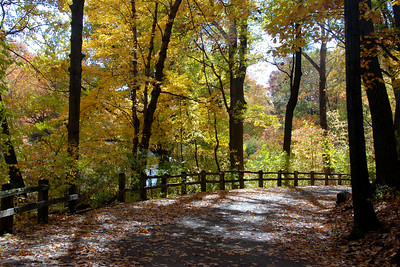
2020
Summary
No additional information available.
Key Personnel & Institutions
People: Gregory McGee, Nathan G. Kiel , Geoffrey R. Griffiths
Institutions: The State University of New York (SUNY), College of Environmental Science and Forestry (ESF) , University of Wisconsin, Madison, Department of Integrative Biology
Location
New York
Resource Type
Article
Tags
herbs, agricultural development
Topic Tags
conservation, methods, planning, drivers, wildlife and habitat, landscape pattern and connectivity
Purpose Tags
conservation
Citation
No citation available.
Source Link
Environmental Quality in Connecticut Throughout the Year 2018
Summary
No additional information available.
Key Personnel & Institutions
Institutions: Connecticut State Council on Environmental Quality
Location
Connecticut
Resource Type
Website
Tags
environment
Topic Tags
conservation, ecosystem services, drivers, wildlife and habitat, landscape pattern and connectivity
Purpose Tags
conservation, education
Citation
"Environmental Quality in Connecticut Throughout the Year 2018" Connecticut State Council on Environmental Quality, 2018. Accessed from (https://portal.ct.gov/CEQ/AR-18-Gold/2018-CEQ-Annual-Report-eBook/Land-Preserved_Land)
Source Link
https://portal.ct.gov/CEQ/AR-18-Gold/2018-CEQ-Annual-Report-eBook/Introduction
2020
Summary
The Connecticut Department of Energy and Environmental Protection (DEEP) and its many partners and constituents are striving to keep forests as forests. A statewide goal of no net forest loss will focus on keeping forests present, connected, healthy, and productive for the people and ecosystems of Connecticut.
Key Personnel & Institutions
People: Dan Peracchio
Institutions: Connecticut Department of Energy and Environmental Protection (DEEP)
Location
Connecticut
Resource Type
Report
Tags
Topic Tags
methods, management, ecosystem services, planning, wildlife and habitat, landscape pattern and connectivity
Purpose Tags
conservation, management
Citation
No citation available.
Source Link
https://portal.ct.gov/-/media/DEEP/forestry/2020_Draft_FAP.pdf
Forest-associated bee species persist amid forest loss and regrowth in eastern North America
2021
Summary
This study examined the effects of forest loss and regrowth on bee pollinators in eastern North America using three datasets totaling 36,605 individual specimens.
Key Personnel & Institutions
People: Colleen Smith
Institutions: Rutgers University, University of Ottawa
Location
Vermont, Massachusetts, Maine, New York, New Hampshire, Connecticut, Rhode Island, New England
Resource Type
Article
Tags
Topic Tags
conservation, ecosystem services, drivers, wildlife and habitat, landscape pattern and connectivity
Purpose Tags
conservation
Citation
Smith C., Harrison T., Gardner J., Winfree R., "Forest-associated bee species persist amid forest loss and regrowth in eastern North America", August 2021, v. 260, 109202. https://doi.org/10.1016/j.biocon.2021.109202
Source Link
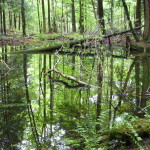
Unfragmented Forest and Natural Habitat
2016
Summary
The goad of the Upper Valley Land Trust is to support the working forest economy and connect the places plants and animals need to adapt and thrive.
Key Personnel & Institutions
Not available.Location
New Hampshire
Resource Type
Website
Tags
Topic Tags
conservation, ecosystem services, drivers, wildlife and habitat, landscape pattern and connectivity
Purpose Tags
conservation, management
Citation
"Unfragmented Forest and Natural Habitat" Upper Valley Land Trust, 2016, Accessed from: https://uvlt.org/our-strategic-goals/unfragmented-forest-natural-habitat/
Source Link
https://uvlt.org/our-strategic-goals/unfragmented-forest-natural-habitat/
Town of Newbury, New Hampshire Townwide Conservation Plan
2008
Summary
In 2001, the Newbury Conservation Commission prepared an "index" or inventory of natural resources for the town as mandated by RSA 36-A:2. As permitted by that statute and as recommended in the Newbury Natural Resources Inventory (NRI), the Commission undertook a two-year project to update the NRI and create a townwide conservation plan.
Key Personnel & Institutions
Not available.Location
Newbury
Resource Type
Report
Tags
Topic Tags
conservation, methods, management, ecosystem services, planning, wildlife and habitat, landscape pattern and connectivity
Purpose Tags
conservation, management
Citation
Poole E. A., M.Sc., "Town of Newbury, New Hampshire Townwide Conservation Plan", Newbury Conservation Commission, March 2008, Accessed from: https://www.newburynh.org/sites/g/files/vyhlif4761/f/uploads/12-appendix_b-_2007_conservation_plan_4-1-08.pdf
Source Link
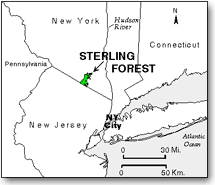
Sterling Forest: An Ecological Analysis
1995 to 1998
Summary
The interior forest habitat of the New York-New Jersy Highlands is being increasingly recoginzed as having significant biodiversity value. Satellite remote sensing and geographic information systems (GIS) were used at the Grant F. Walton Center for Remote Sensing and Spatial Analysis (CRSSA), Rutgers University, to undertake an inventory of forest habitat and an assessment of forest fragmentation in the New York-New Jersey Highlands region. The NY-NJ Highlands has a forest cover of 62-65%, but due to fragmentation only 20% of the total forest area is considered prime forest habitat.
Key Personnel & Institutions
Not available.Location
New York
Resource Type
Article
Tags
Topic Tags
conservation, methods, management, drivers, wildlife and habitat, landscape pattern and connectivity
Purpose Tags
conservation, management
Citation
"Sterling Forest: An Ecological Analysis", 1998, Accessed from: https://crssa.rutgers.edu/projects/sterling/
Source Link
Filter by
Keywords
Begin typing a tag below. Click or tap a match to add it to your list of filters. You may enter more than one tag term.
Resource Topics
Resource Purpose
Document Type
Location
Begin typing a state, county, town, or area below. Click or tap a match to add it to your list of filters. You may enter more than one location term.
